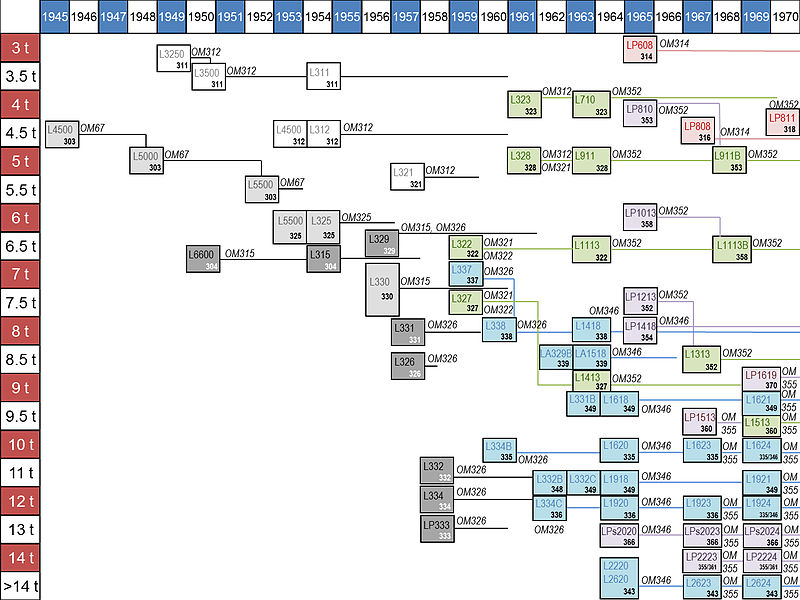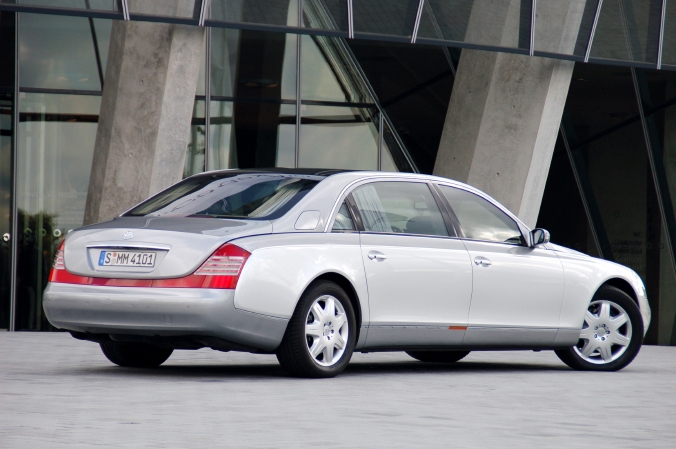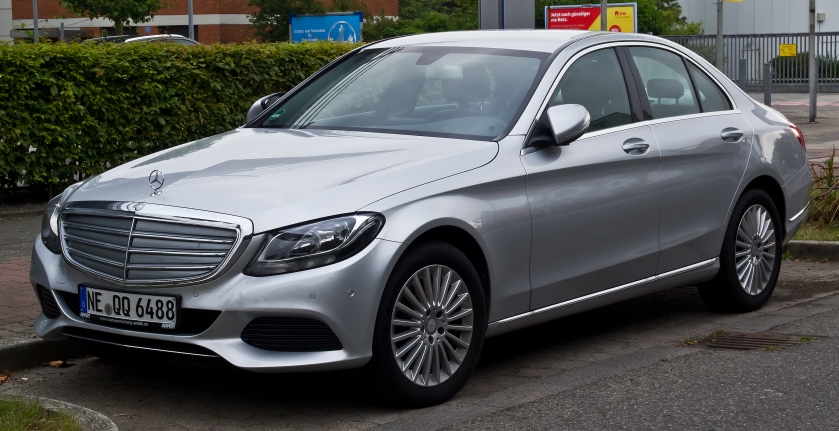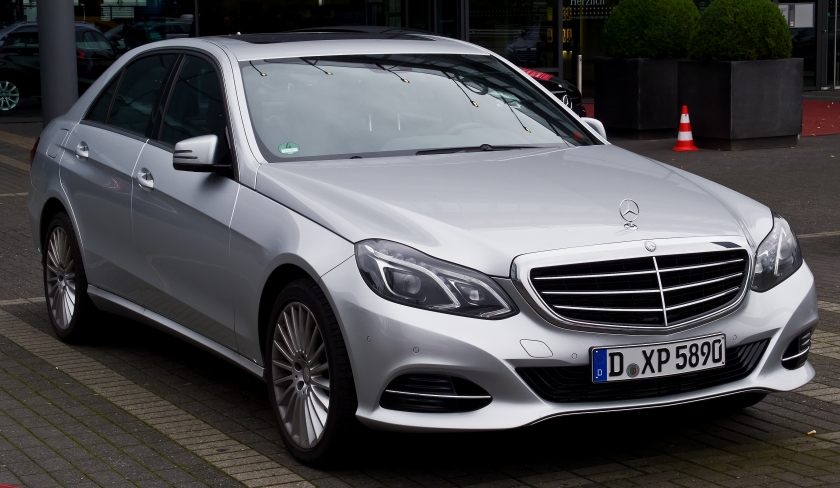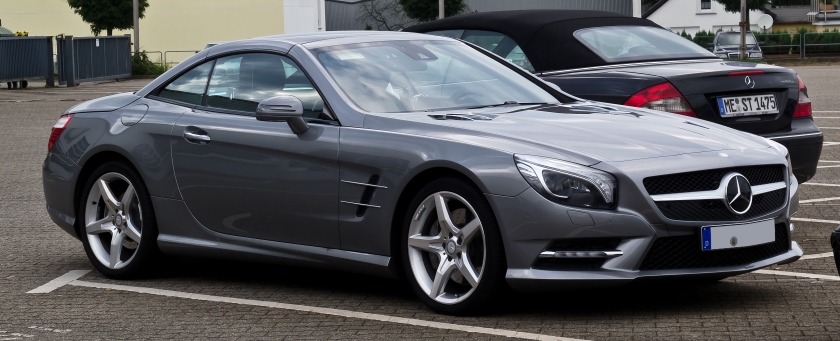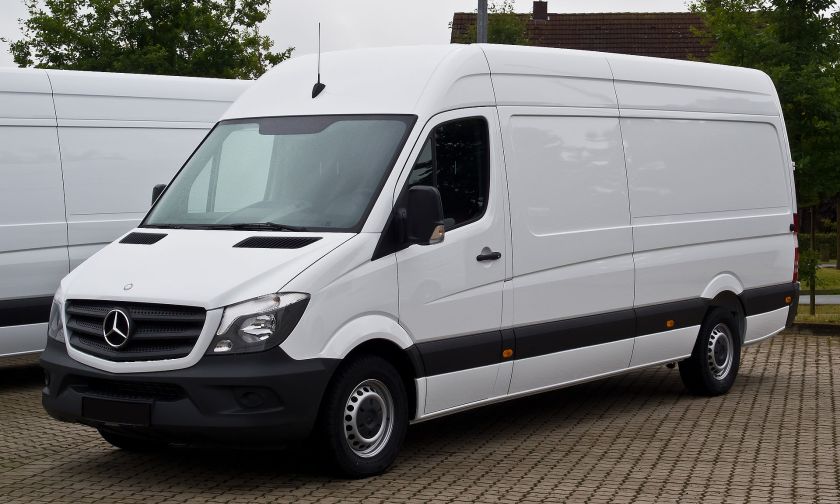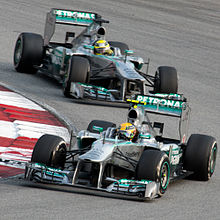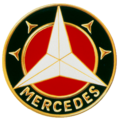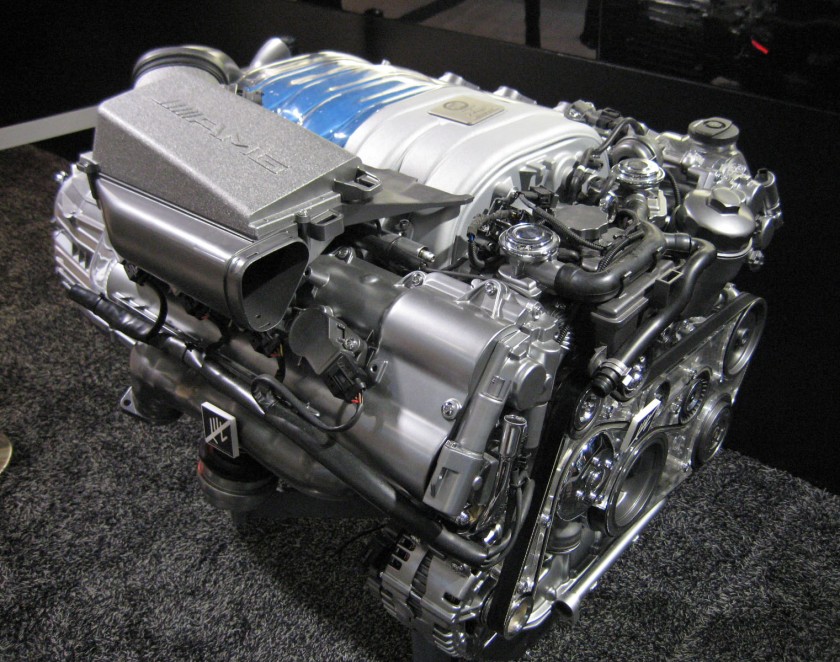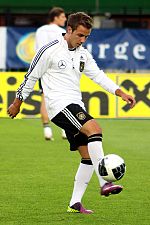Mercedes Benz 1926 – present, Stuttgart Germany, Benz & Cie. (1883-1926)
Daimler-Motoren-Gesellschaft(1890-1926) und DAIMLER AG
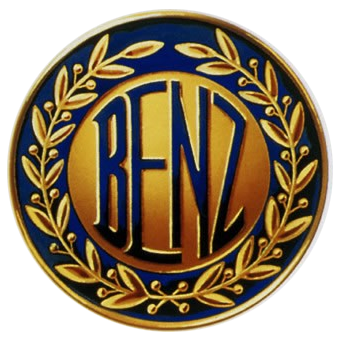
Automobiles, Trucks, Buses, Internal combustion engines, Luxury vehicles
 |
|
| Division | |
| Industry | Automotive industry |
| Predecessor | Benz & Cie. (1883-1926) Daimler-Motoren-Gesellschaft(1890-1926) |
| Founded | 1926 |
| Founder | Karl Benz and Gottlieb Daimler |
| Headquarters | Stuttgart, Germany |
|
Number of locations
|
Jakarta Medan Kuala Lumpur Singapore Bandar Seri Begawan Shanghai Hong Kong Macau Taipei |
|
Area served
|
Worldwide |
|
Key people
|
Dieter Zetsche, Chairman |
| Products | Automobiles Trucks Buses Internal combustion engines Luxury vehicles |
| Services | Financial services automobile repair |
| Owner | Daimler AG |
| Divisions | Mercedes-AMG Mercedes-MaybachMercedes-brabus |
| Slogan | The Best or Nothing |
| Website | www.mercedes-benz.com/en/ |
Mercedes-Benz (German pronunciation:[mɛɐ̯ˈtseːdəs ˈbɛnts]) is a German automobile manufacturer, a multinational division of the German manufacturer Daimler AG.
Daimler AG
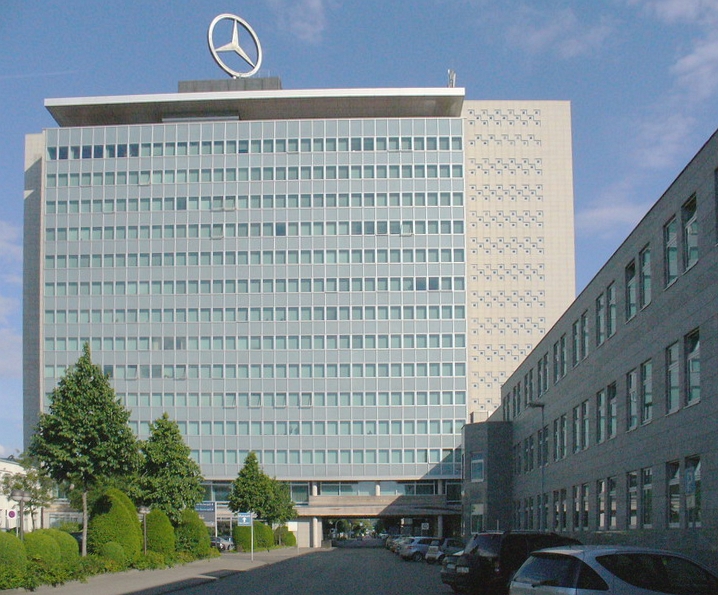
Daimler AG Headquarters
|
|
| Aktiengesellschaft | |
| Traded as | FWB: DAI |
| Industry | Automotive |
| Predecessor | Daimler-Benz (1926-1998) DaimlerChrysler (1998-2007) |
| Founded | 1998 (as DaimlerChrysler) |
| Headquarters | Stuttgart, Germany |
|
Area served
|
Worldwide |
|
Key people
|
Dieter Zetsche(CEO and Chairman of the Board of Directors) Manfred Bischoff (Chairman of the supervisory board) |
| Products | Automobiles, commercial vehicles |
| Revenue | €129.872 billion (2014) |
| Total equity | €44.584 billion (2014) |
| Owner | Institutional shareholders(74.8%) Private shareholders (15.3%) Kuwait Investment Authority(6.8%) Renault–Nissan Alliance(3.1%) |
|
Number of employees
|
279,972 (2014) |
| Divisions | Mercedes-Benz Smart |
| Subsidiaries | |
| Website | www.daimler.com |
![]() Daimler AG (help·info) (German pronunciation:[ˈdaɪmlɐ aːˈɡeː]) is a German multinational automotive corporation. Daimler AG is headquartered in Stuttgart, Baden-Württemberg, Germany. As of 2014, Daimler owns or has shares in a number of car, bus, truck and motorcycle brands including Mercedes-Benz, Mercedes-AMG, Smart Automobile, Freightliner, Western Star, Thomas Built Buses, Setra, BharatBenz, Mitsubishi Fuso, MV Agusta as well as shares in Denza, KAMAZ, Beijing Automotive Group, and Renault-Nissan Alliance. The Maybach brand was closed at the end of 2012, but was revived in November 2014 as “Mercedes-Maybach”, an ultra luxury edition of the Mercedes-Benz S-Class. In 2014 Daimler sold 2.5 million vehicles. By unit sales, Daimler is the thirteenth-largest car manufacturer and second-largest truck manufacturer in the world. In addition to automobiles, Daimler manufactures buses and provides financial services through its Daimler Financial Services arm. The company is a component of the Euro Stoxx 50stock market index.
Daimler AG (help·info) (German pronunciation:[ˈdaɪmlɐ aːˈɡeː]) is a German multinational automotive corporation. Daimler AG is headquartered in Stuttgart, Baden-Württemberg, Germany. As of 2014, Daimler owns or has shares in a number of car, bus, truck and motorcycle brands including Mercedes-Benz, Mercedes-AMG, Smart Automobile, Freightliner, Western Star, Thomas Built Buses, Setra, BharatBenz, Mitsubishi Fuso, MV Agusta as well as shares in Denza, KAMAZ, Beijing Automotive Group, and Renault-Nissan Alliance. The Maybach brand was closed at the end of 2012, but was revived in November 2014 as “Mercedes-Maybach”, an ultra luxury edition of the Mercedes-Benz S-Class. In 2014 Daimler sold 2.5 million vehicles. By unit sales, Daimler is the thirteenth-largest car manufacturer and second-largest truck manufacturer in the world. In addition to automobiles, Daimler manufactures buses and provides financial services through its Daimler Financial Services arm. The company is a component of the Euro Stoxx 50stock market index.
History
Daimler AG is a German manufacturer of automobiles, motor vehicles, and engines, which dates back more than a century.
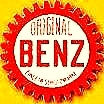
An Agreement of Mutual Interest was signed on 1 May 1924 between Benz & Cie (founded 1883 by Karl Benz) and Daimler Motoren Gesellschaft (founded 1890 by Gottlieb Daimler and Wilhelm Maybach).
Both companies continued to manufacture their separate automobile and internal combustion engine brands until, on 28 June 1926, when Benz & Cie. and Daimler Motoren Gesellschaft AG formally merged—becoming Daimler-BenzAG—and agreed that, thereafter, all of the factories would use the brand name of Mercedes-Benz on their automobiles.
In 1998, Daimler-Benz and Chrysler Corporation announced the world’s largest cross-border deal ever, valued at US$38billion, and the resulting change in company name to “DaimlerChrysler AG”.
In 2007, when the Chrysler group was sold off to Cerberus Capital Management (see below), the name of the parent company was changed to simply “Daimler AG”.
In November 2014, Daimler announced it would acquire 25 percent of Italian motorcycle producer MV Agusta for an undisclosed fee.
Timeline of Daimler AG
Benz & Company, 1883–1926
Daimler Motoren Gesellschaft AG, 1890–1926
Daimler-Benz AG, 1926–1998
DaimlerChrysler AG, 1998–2007
Daimler AG, 2007–present
Merger with Chrysler
In a so-called “Merger of Equals,” or “Marriage made in Heaven”, according to its then CEO and architect Jürgen E. Schrempp, Daimler-Benz AG and United States-based automobile manufacturer Chrysler Corporation, the smallest of the three American automakers, merged in 1998 in an exchange of shares as Daimler-Benz AG bought 92% of Chrysler, and 8% of Chrysler remained independent and formed DaimlerChrysler AG. The terms of the merger allowed Daimler-Benz‘s non-automotive businesses such as Daimler-Benz InterServices AG, “debis AG” for short, (created in 1989 to handle data processing, financial and insurance services, and real estate management for the Daimler group) to continue to pursue their respective strategies of expansion. debis AG reported revenues of $8.6 bn (DM 15.5 bn) in 1997.
The merger was contentious with investors launching lawsuits over whether the transaction was the ‘merger of equals’ that senior management claimed or actually amounted to a Daimler-Benz takeover of Chrysler. A class action investor lawsuit was settled in August 2003 for US$300 million while a suit by billionaire investor activist Kirk Kerkorian was dismissed on 7 April 2005. The transaction claimed the job of its architect, Chairman Jürgen E. Schrempp, who resigned at the end of 2005 in response to the fall of the company’s share price following the transaction. The merger was also the subject of a book Taken for a Ride: How Daimler-Benz Drove Off With Chrysler, (2000) by Bill Vlasic and Bradley A. Stertz.
Another issue of contention is whether the merger delivered promised synergies and successfully integrated the two businesses. Martin H. Wiggers‘ concept of a platform strategy like the VW Group, was implemented only for a few models, so the synergy effects in development and production were too low. As late as 2002, DaimlerChrysler appeared to run two independent product lines. Later that year, the company launched products that appeared to integrate elements from both sides of the company, including the
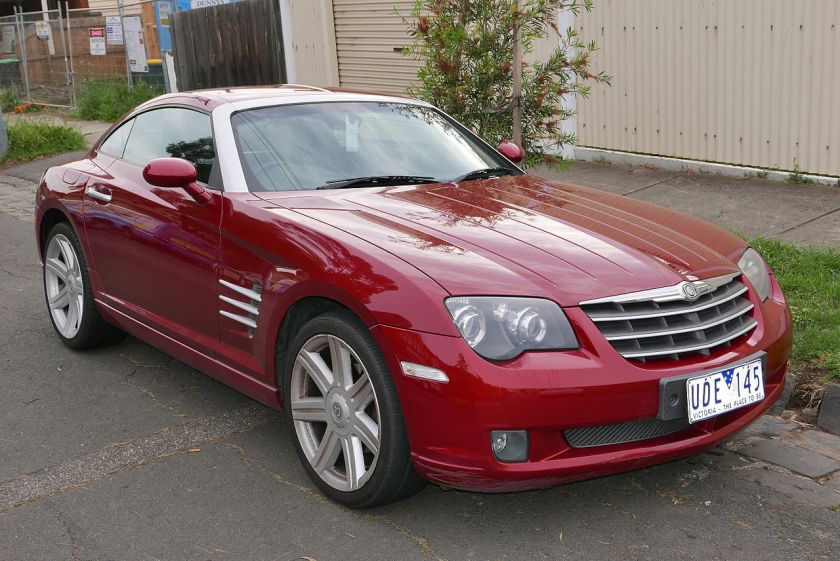 2006 Chrysler Crossfire (ZH MY05) coupe.jpg
2006 Chrysler Crossfire (ZH MY05) coupe.jpg
Chrysler Crossfire, which was based on the Mercedes SLK platform and utilized Mercedes’s 3.2L V6, and the Dodge Sprinter/Freightliner Sprinter, a re-badged Mercedes-Benz Sprinter van.
Sale of Chrysler
Daimler agreed to sell the Chrysler unit to Cerberus Capital Management in May 2007 for US$6 billion. Through most of its history, Chrysler has been the smallest of the “Big 3” U.S. automakers, but in January 2007, DaimlerChrysler, excluding its luxury Mercedes and Maybach lines, also outsold traditionally second place Ford, though behind General Motors and Toyota.
Chrysler reported losses of US$1.5 billion in 2006. It then announced plans to lay off 13,000 employees in mid-February 2007, close a major assembly plant and reduce production at other plants in order to restore profitability by 2008.
DaimlerChrysler had reportedly approached other carmakers and investment groups to sell Chrysler in early 2007. General Motors was reported to be a suitor, but on 3 August 2007, DaimlerChrysler completed the sale of Chrysler Group to Cerberus Capital Management. The original agreement stated that Cerberus would take an 80.1 percent stake in the new company, Chrysler Holding LLC. DaimlerChrysler changed its name to Daimler AG and retained the remaining 19.9% stake in the separated Chrysler.
The terms saw Daimler pay Cerberus US$650 million to take Chrysler and associated liabilities off its hands. Of the US$7.4 billion purchase price, Cerberus Capital Management will invest US$5 billion in Chrysler Holdings and US$1.05 billion in Chrysler’s financial unit. The de-merged Daimler AG received US$1.35 billion directly from Cerberus but directly invested US$2 billion in Chrysler itself.
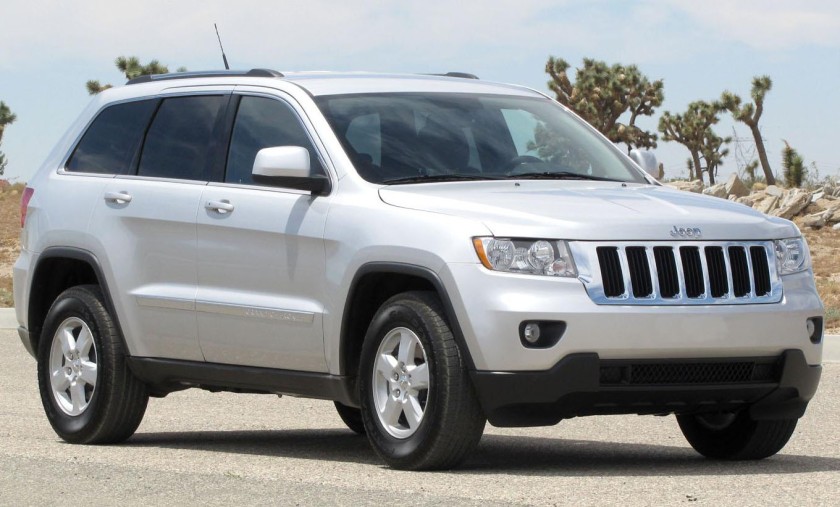 2011 Jeep Grand Cherokee Laredo NHTSA 2
2011 Jeep Grand Cherokee Laredo NHTSA 2
Since Chrysler’s 2009 bankruptcy filing in the United States, Chrysler has been controlled by Italian automaker Fiat and plans to integrate Chrysler’s products into the Fiat portfolio, such as Lancia and Chrysler’s namesake brand, and Fiat’s namesake brand with Dodge. Despite the fact it had been nearly seven years after the Daimler/Chrysler split, the fourth-generation Jeep Grand Cherokee shares a platform with the Mercedes-Benz M-Class. This also includes the Chrysler LX platform vehicles which initially used Mercedes-Benz components since its 2005 introduction.
Automated cars
On 3 August 2015, Nokia announced that it had reached a deal to sell its Here digital maps division to a consortium of three German automakers—BMW, Daimler AG, and Volkswagen Group, for €2.8 billion. This was seen as an indication that the automakers were interested in automated cars.
Corporate affairs
Management
Dieter Zetsche has been the Chairman of Daimler and Head of Mercedes-Benz Cars since 1 January 2006 as well as member of the Board of Management since 1998. He was former President and CEO of the Chrysler, LLC (previously owned by Daimler AG), he may be best known in the United States as “Dr. Z” from a Chrysler advertising campaign called “Ask Dr. Z”.
Current (2015) members of the Board of Management of Daimler AG are:
- Dr. Dieter Zetsche: Chairman of the Board as well as Head of Mercedes-Benz Cars.
- Dr. Wolfgang Bernhard: Head of Daimler Trucks.
- Renata Jungo Brüngger: Integrity and Legal Affairs.
- Ola Källenius: Head of Mercedes-Benz Cars Marketing and Sales.
- Wilfried Porth: Head of Human Resources and Labor Relations.
- Hubertus Troska: Greater China.
- Bodo Uebber: Head of Finance and Controlling as well as Financial Services.
- Dr. Thomas Weber: Head of Group Research and Mercedes-Benz Cars Development.
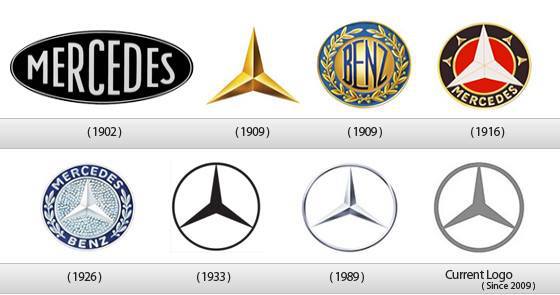
The Board of Management total members of seven, after the unexpected resignation on 28 January 2014 of Andreas Renschler, former head of Manufacturing and Procurement Mercedes-Benz Cars & Mercedes-Benz Vans, has been brought back to eight after the nomination on 1 January 2015 of Swedish-born Ola Källenius to the Board of Management as Head of Mercedes-Benz Cars Marketing and Sales.
As of May 2015, the twenty members of Daimler AG’s Supervisory Board are: Manfred Bischoff (Chairman), Michael Brecht (Deputy Chairman), Paul Achleitner, Sari Baldauf, Michael Bettag, Bernd Bohr, Clemens Börsig, Jürgen Hambrecht, Petraea Heynike, Andrea Jung, Joe Kaeser, Ergun Lümali, Sabine Maaßen, Wolfgang Nieke, Bernd Pischetsrieder, Valter Sanches, Jörg Spies, Elke Tönjes-Werner, Frank Weber, Roman Zitzelsberger.
by Ownership
- Institutional investors: 73.7%
- Private investors: 16.4
- Kuwait Investment Authority (Kuwait): 6.8%
- Renault (France): 1.54%
- Nissan (Japan): 1.54%
by Regio 29.7% Europe (excluding Germany), 32.1% German, 25.5% United States, 6.8% Kuwait, 5.4% Asia, 0.5% Others.
As of March 2010, Daimler owned a 22.5% share of EADS, of which the public sector held 40%.
In April 2013, Daimler sold its shares in EADS, and the same year, EADS restructured itself into a new aerospace company named Airbus, into which Daimler AG has no shareholding.
On the side of the public sector, the KfW banking group holds 13%, HGV Hamburger Gesellschaft fur Vermogens- und Beteiligungsverwaltung (State of Hamburg) holds 10%, Hannoversche Beteiligungsgesellschaft (State of Lower Saxony) holds 5%,Bayerische Landesbodenkreditanstalt, Anstalt der Bayerischen Landesbank holds 3.5%, LfA Forderbank Bayern holds 1.5%, Landesbank Baden-Württemberg and Landeskreditbank Baden-Württemberg – Forderbank (L-Bank) each holds 2.5%, and Bremer Investitions-Gesellschaft (State of Bremen) holds 2%.
Leadership
Daimler-Benz AG (1926–1998)
- Wilhelm Kissel (1926–1942)
- Wilhelm Haspel (1942–1952)
- Heinrich C. Wagner (1952)
- Fritz Koenecke (1952–1960)
- Walter Hitzinger (1961–1966)
- Joachim Zahn (1966–1979)
- Gerhard Prinz (1980–1983)
- Werner Breitschwerdt (1983–1987)
- Edzard Reuter (1987–1995)
- Jürgen E. Schrempp (1995–1998)
DaimlerChrysler AG (1998–2007)
- Jürgen E. Schrempp (1998–2006)
- Robert James Eaton (co-CEO, 1998–2000)
- Dieter Zetsche (2006–2007)
Daimler AG (2007–present)
- Dieter Zetsche (2007–present)
- Annette Winkler (2010–present) CEO, Smart Automobile
North Charleston Expansion
On 5 March 2015, Daimler AG announced a 1,200 jobs package to the North Charleston region for its van plant. This will allow the company to start manufacturing Mercedes-Benz Sprinter vans from scratch in a North Charleston plant to meet demand in North America. Currently, these vans are set up in Germany, then shipped to the United States partially disassembled for reassembly. This is all to avoid import tariffs, a practice that started in 2010. A Daimler official said that the Sprinter’s popularity in North America is making that process less efficient. The North Charleston plant had been employing only 100 workers. The Sprinter is available on the U.S. market as a panel van, crew bus and chassis in several variants with three lengths and roof heights, six-cylinder diesel or gasoline engines. The Sprinter has been assembled and sold in the United States since 2001.
Brands
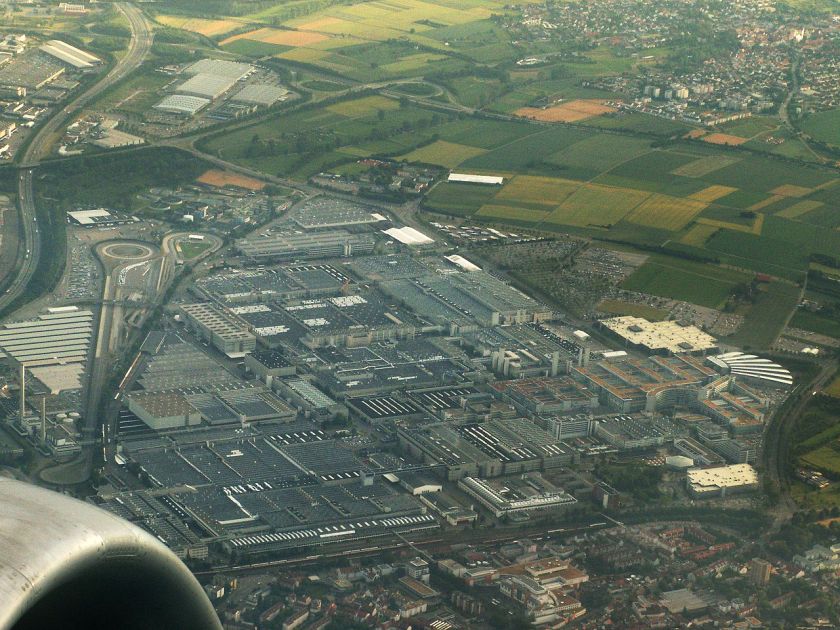 The largest Daimler plant (producing Mercedes-Benz cars) in Sindelfingen, Germany.
The largest Daimler plant (producing Mercedes-Benz cars) in Sindelfingen, Germany.
Daimler sells automobiles under the following brands worldwide:
- Mercedes-Benz Cars
- Maybach – production ended in 2012
- Mercedes-Benz
- Mercedes-AMG
- Smart
-
Smart (automobile)
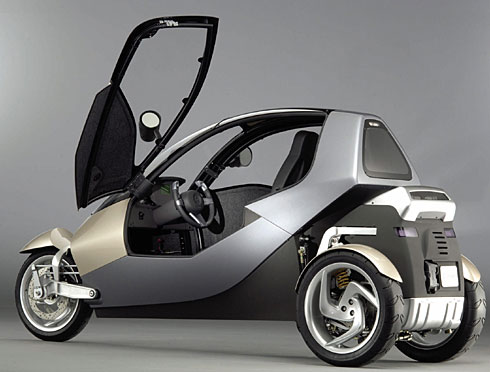 small cars Clever Car
small cars Clever CarSmart  open your mind.
open your mind.Division Industry Automotive Founded 1994 Headquarters Böblingen, Germany Key peopleAnnette Winkler CEO, 2010–present Products Microcars Owner Daimler AG Website www.smart.com 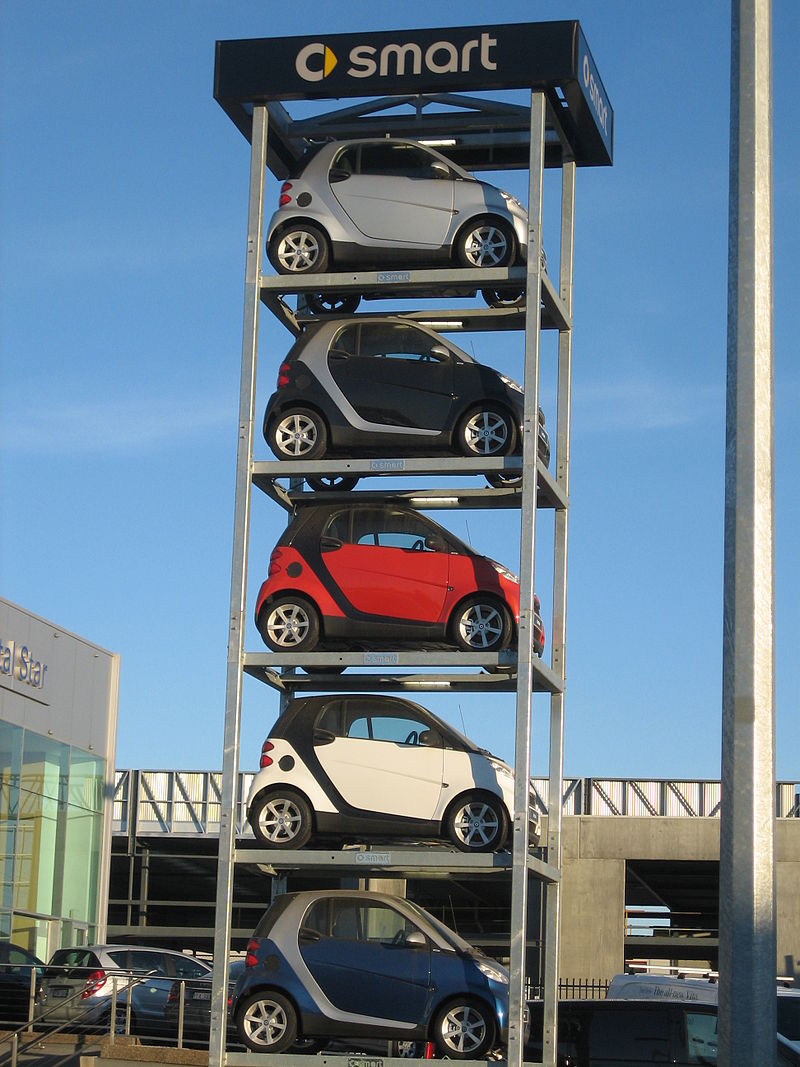 A Stack of Smart vehicles in Canberra
A Stack of Smart vehicles in Canberra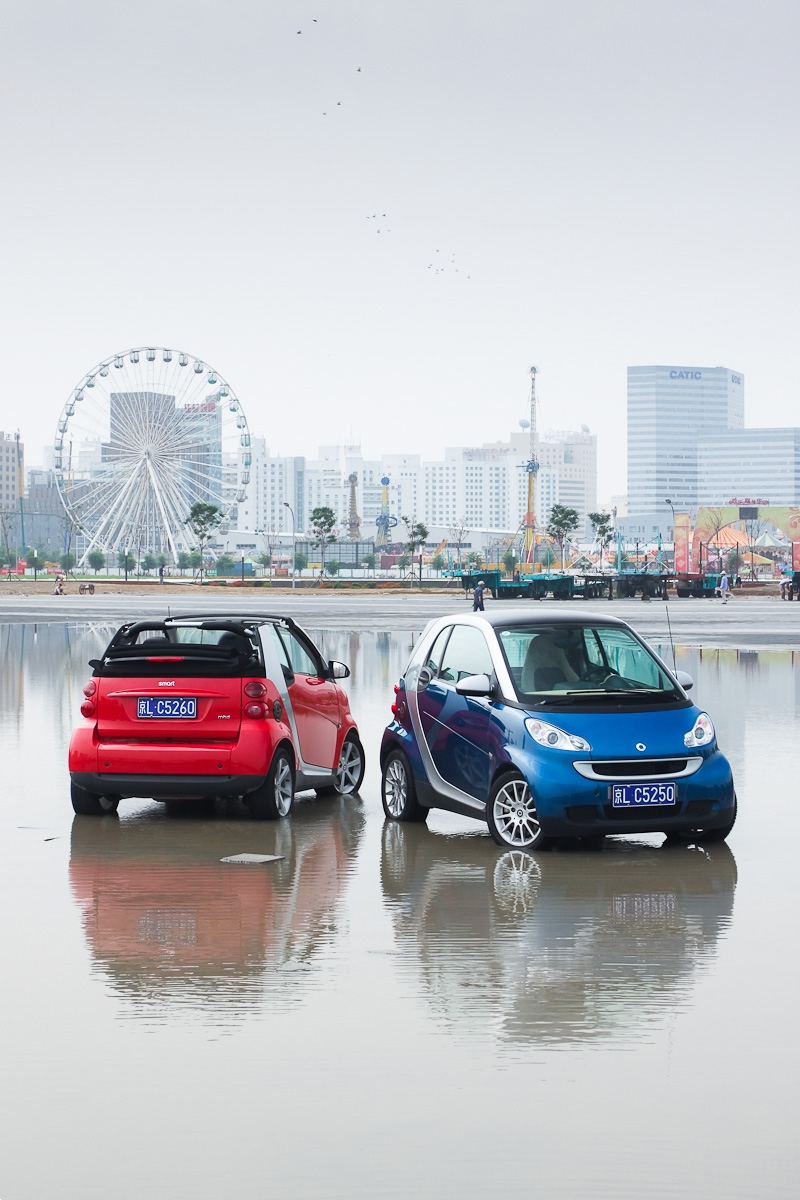 A Smart Fortwo mhd cabrio (left) and a Smart Fortwo mhd coupe (right)
A Smart Fortwo mhd cabrio (left) and a Smart Fortwo mhd coupe (right)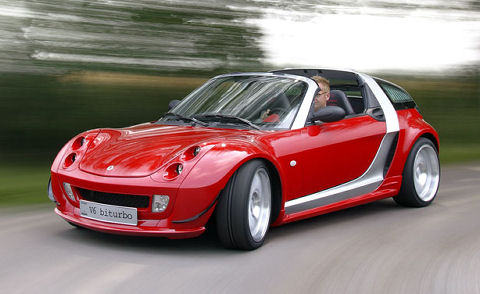 2003 Smart V6 Biturbo
2003 Smart V6 BiturboSmart Automobile is a division of Daimler AG that manufactures and markets the Smart Fortwo and Smart Forfour. The official trademarked name is stylized as “smart“, with all lowercase letters. Headquartered in Böblingen, Germany, Smart has marketed a range of microcar and subcompact vehicles, with its primary assembly plants located in Hambach, France and Novo Mesto, Slovenia. Annette Winkler has served as Smart’s CEO since 2010.
Marketed in 46 countries—in Asia, North and South America, Africa, Australia and Europe—production of the Fortwo had surpassed 1.7 million units by early 2015.

The design concept for the company’s automobiles began at Mercedes in the early 1970s and in the late 1980s, associated with Swatch. After a brief period of backing by Volkswagen, the first model was launched by Daimler-Benz in October 1998. Several variants on the original design have been introduced, with the original two-seater called the Fortwo, now in its third generation and available as an electric version.
The brand name Smart derives from its early cooperative studies with Swatch and Mercedes: Swatch Mercedes ART. In its corporate branding, the company uses a lowercase logotype (i.e., smart) and a logo incorporating the letter “c” for “compact” and an arrow for “forward thinking”.
Origins
In late 1982, SMH (makers of the Swatch brand of watches) CEO Nicolas Hayek began developing an idea for a new car using the same type of manufacturing strategies and personalization features used to popularize Swatch watches. He believed that the automotive industry had ignored a sector of potential customers who wanted a small and stylish city car. This idea soon became known as the “Swatchmobile”. Hayek’s private company Hayek Engineering AG began designing the new car for SMH, with seating for two and a hybrid drivetrain.
While design of the car was proceeding, Hayek feared existing manufacturers would feel threatened by the Swatchmobile. Thus, rather than directly competing, he preferred to cooperate with another company in the automotive industry. This would also relieve SMH of the cost burden in setting up a distribution network. Hayek approached several automotive manufacturers and on July 3, 1991, he reached an agreement with Volkswagen to share development of the new project.
By 1993, Ferdinand Piëch had become CEO of Volkswagen and he immediately sought to terminate the project with SMH. Volkswagen had already been working on their own “three-litre car”: a car which would consume three litres of fuel per 100 km of driving (the eventual Volkswagen Lupo 3L). Volkswagen’s own concept was believed to be a better business proposition, featuring four seats and more cargo room.
Hayek had suspected that Piëch would seek to end the agreement with SMH upon his ascendancy to the CEO position; therefore, he discreetly began approaching other car companies with the Swatchmobile project. Rebuffed by BMW, Fiat, General Motors and Renault, he finally reached an informal agreement with Daimler-Benz AG, maker of Mercedes-Benz cars.
A deal was announced on March 4, 1994, at a press conference at Mercedes-Benz headquarters in Stuttgart that the companies would join forces in founding Micro Compact Car AG (MCC). 49% of the initial capital of 50 million Swiss francs were provided by SMH and the remaining 51% by Daimler-Benz. The company consisted of two subsidiaries: MCC GmbH based in Renningen (a suburb of Stuttgart) which would design the car, and the then-unnamed manufacturing plant. SMH Auto SA, owned by Hayek, would design a hybrid electric drive system for the car, while Hayek Engineering would audit the design and manufacturing.
The press conference also featured the debut of two concept cars: the eco-sprinter and eco-speedster, styled by Mercedes-Benz’s design studio in California. The cars were similar to the eventual Smart City-Coupé. No mention was made of the fact that SMH had no input in the design of these concepts, and they were badged as Mercedes-Benzes.
By the end of April 1994, MCC had set up a head office in Biel, Switzerland.
Company history
Three co-directors were immediately named to head the new company: designer and engineer Johann Tomforde and financial administrator Christoph Baubin from Daimler-Benz, and marketing manager Hans Jürg Schär, who spearheaded the original Swatch marketing campaigns in the mid-1980s. Tomforde had been working on the Mercedes City Car (coincidentally abbreviated MCC) project at Daimler-Benz since 1990, which produced theeco-sprinter and eco-speedster concepts as well as the Vision-A concept, which eventually became the Mercedes-Benz A-Class.
One of the first controversies at MCC was the name of the car itself. Nicolas Hayek insisted it retain Swatch in some way: “Swatchmobile”, or “Swatch Car”. Daimler-Benz refused, and pushed for a neutral name. The final selection was Smart, an acronym that had been previously used internally by MCC for Swatch Mercedes Art.
By May 1994, the co-directors had identified 74 potential sites for the assembly plant. The final site was announced on December 20, 1994: Hambach, France. The purpose-built factory quickly gained the nickname “Smartville“.
In 1995, Tomforde devised a modular system of assembly for the car, insisting suppliers design and assemble, and even install their own modules onto the final car, at the new plant using their own employees thus reducing the cost overhead for the parent companies and divesting MCC of the financial and legal liabilities for those parts. It also provided a fiscal framework whereby MCC could share the development costs with the suppliers, rather than having to fund the entire project themselves. MCC secured contracts with suppliers to design and supply almost all parts of the car: seats by Faurecia, interiors by VDO, chassis and door modules by Magna, door panels by Dynamit Nobel, and suspension by Krupp.
Despite offloading a substantial amount of the development on the suppliers MCC required more capital. Recapitalization by Daimler-Benz increased their share of ownership in the company to 81% by 1996, leaving SMH with only the remaining 19%.
The assembly plant opened on October 27, 1997, with a ceremonial ribbon-cutting by then-French President Jacques Chirac and German Chancellor Helmut Kohl. Introduction of the new Smart city-Coupé was planned for March, 1998, however dynamic instability of the prototypes prompted Daimler-Benz to announce postponing the launch until October, 1998. Johann Tomforde was replaced as chief engineer by Gerhard Fritz. Fritz lowered the centre of gravity, widened the track, stiffened the suspension, changed the steering, and added ballast weight to the front of the car in order to increase its stability in emergency avoidance manoeuvres (notably the Swedish “moose test“).
The car launched successfully in nine European countries in October 1998, but the final design did not fulfill Hayek’s expectations. Hayek pushed for a hybrid drivetrain but the final product used a relatively conventional gasoline engine. Shortly afterward Daimler-Benz bought out SMH’s remaining stake in the company. MCC was now a wholly owned subsidiary of Daimler-Benz (which soon merged with Chrysler Corporation to become DaimlerChrysler). The office in Biel was shut down and operations were consolidated at the MCC GmbH design centre in Germany. On January 1, 1999, MCC GmbH changed its name to MCC Smart GmbH, and by 2000, it dropped the last vestiges of the association with SMH, becoming Smart GmbH.
The model line was subsequently expanded to include the Roadster a rear-engine, rear-drive and four-door, four-seat supermini aptly named Forfour (the original City-Coupé was renamed Fortwo to fit the new naming scheme).
The expansion did not increase profits at the company; Smart GmbH lost nearly 4 billion euros from 2003 to 2006. Plans were enacted to increase the company’s profitability and integrate its operations with Daimler (at the time DaimlerChrysler).
In 2005, Daimler decided against purchasing a 50% share in the Dutch NedCar plant used to manufacture the ForFour, ending its production. A planned SUV called Formore was terminated as the assembly plant in Brazil was being fitted with machines, and production of the Roadster was discontinued. In 2006, after dwindling sales and heavy financial losses, Smart GmbH was liquidated and its operations were absorbed by DaimlerChrysler directly.
Smart now operates under the Mercedes-Benz Cars division of Daimler AG, offering solely the Fortwo Coupe and Cabrio models.
Models
Apart from the original Smart Fortwo, a sporty Smart Roadster, a limited production of 2000 erstwhile concept Smart Crossblade and a supermini Smart Forfour were also offered. These have now been discontinued. There were also plans to introduce the French made cross-over based on the body of the ForFour and the AWD hardware of the Mercedes C-class with the name of Formore but industrialization of this was cancelled at the 11th hour (even as tooling was being installed in the assembly plant) due to unfavourable exchange rate swings and spending cutbacks driven by losses elsewhere within Smart.
Production models
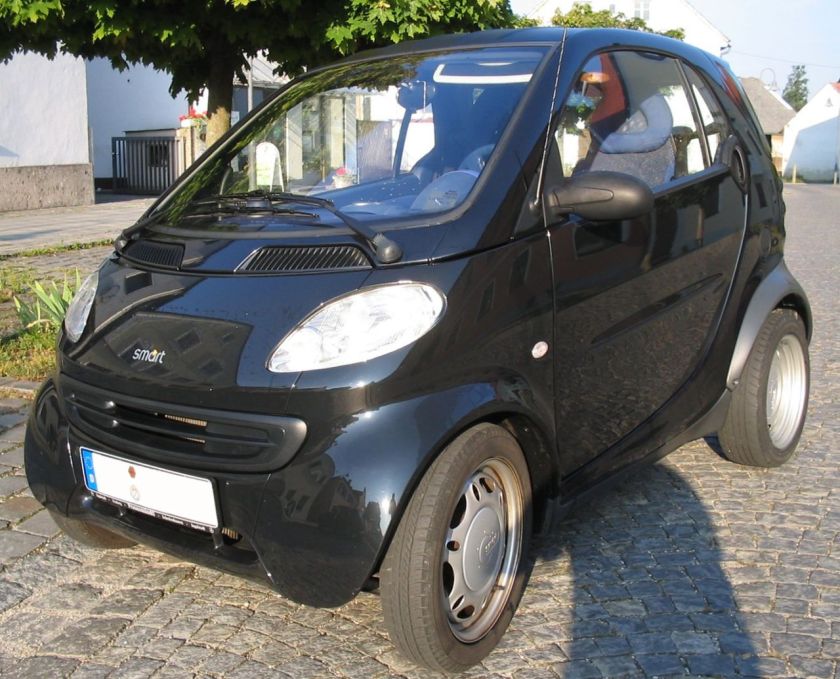 1998–2000 Smart City-Coupé & City-Cabrio* (*from 2000)
1998–2000 Smart City-Coupé & City-Cabrio* (*from 2000)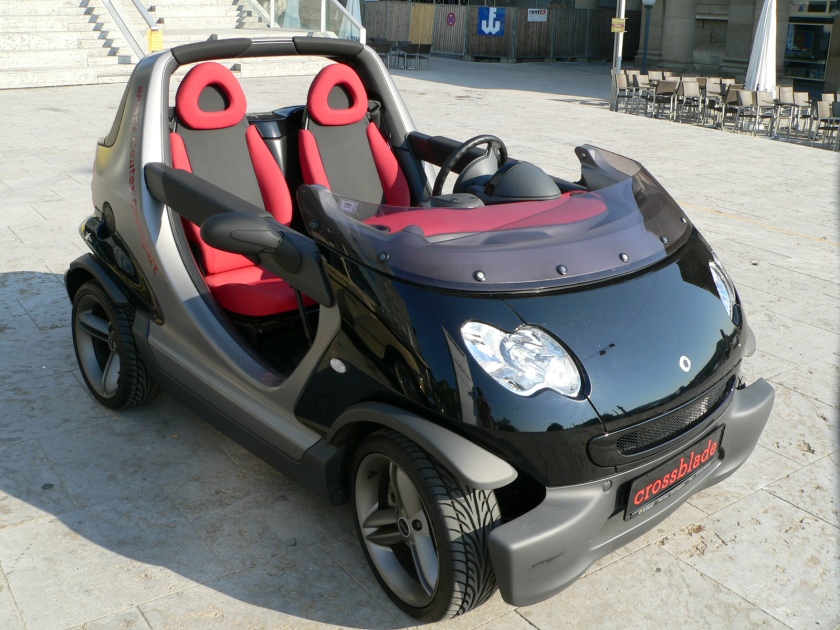 2002 Smart Crossblade
2002 Smart Crossblade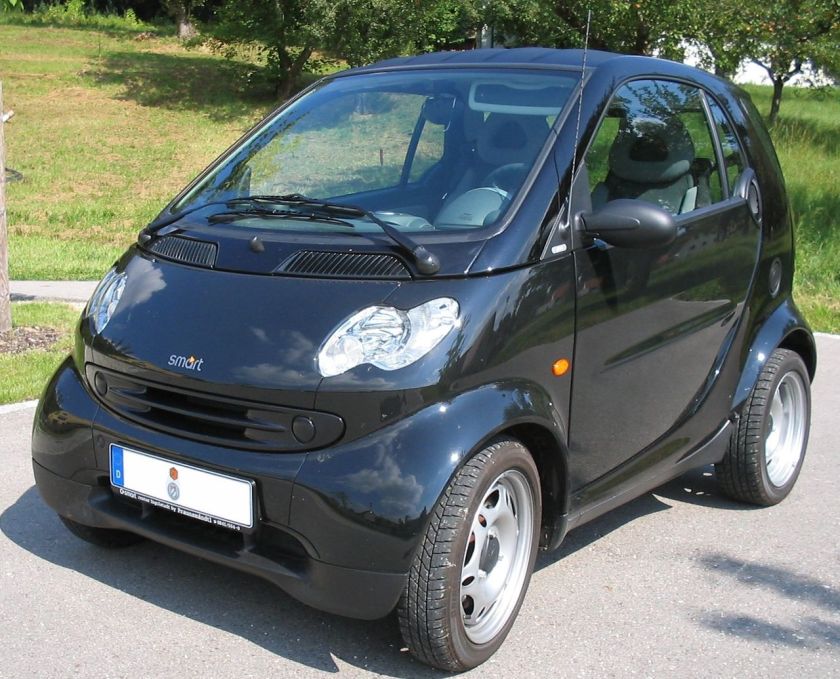 2001-2007 Smart City-C0upé & City Cabrio ( renamed Fortwo in 2004)
2001-2007 Smart City-C0upé & City Cabrio ( renamed Fortwo in 2004)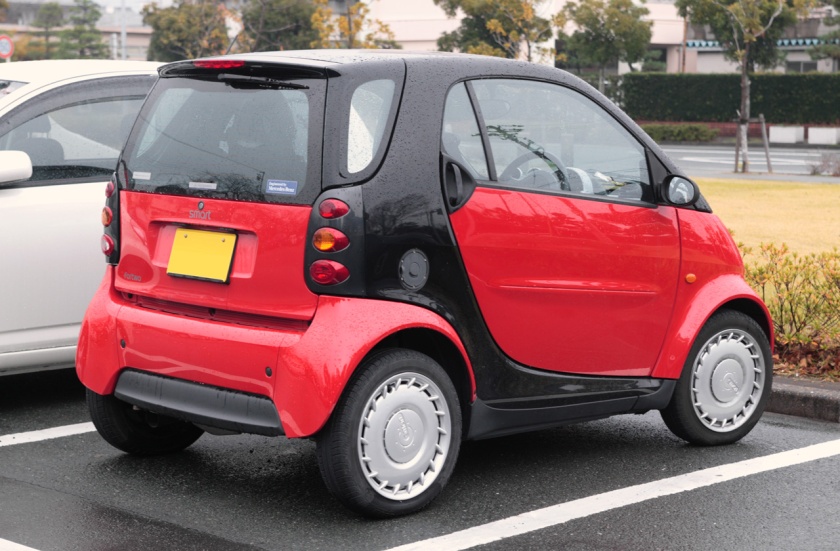 2001-2004 Smart K (Japan only)
2001-2004 Smart K (Japan only)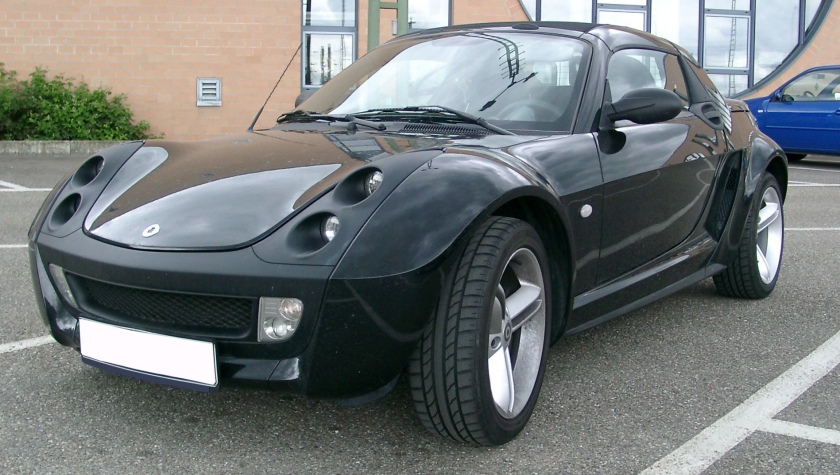 2003-2005 Smart Roadster
2003-2005 Smart Roadster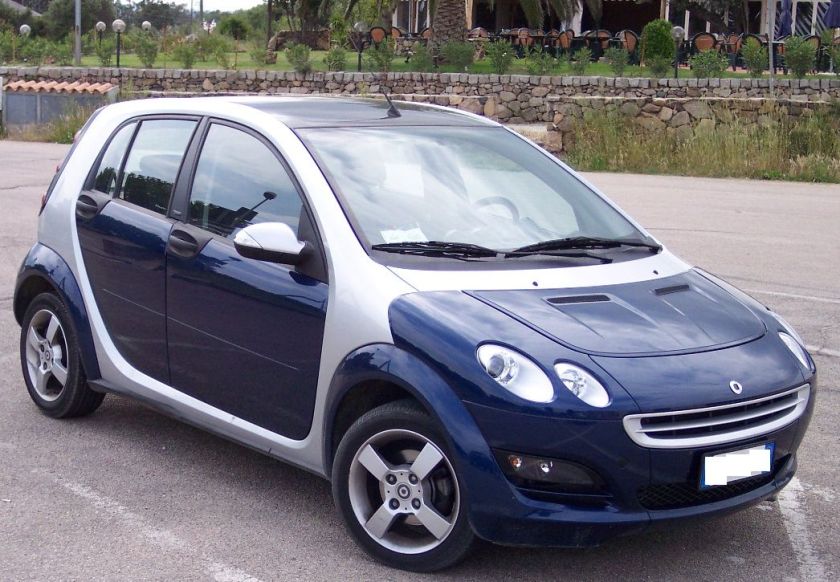 2004-2006 +2014-present Smart Forfour
2004-2006 +2014-present Smart Forfour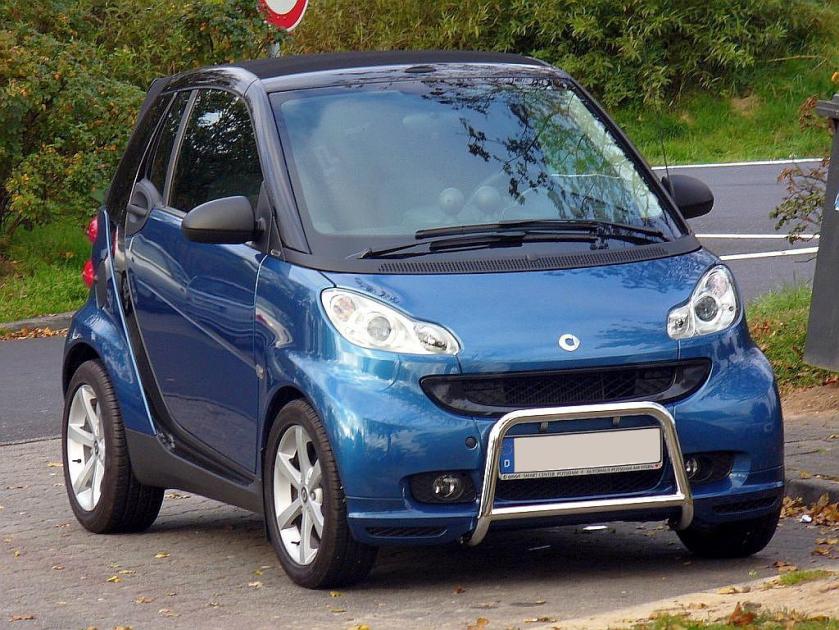 2007-present Smart Fortwo
2007-present Smart Fortwo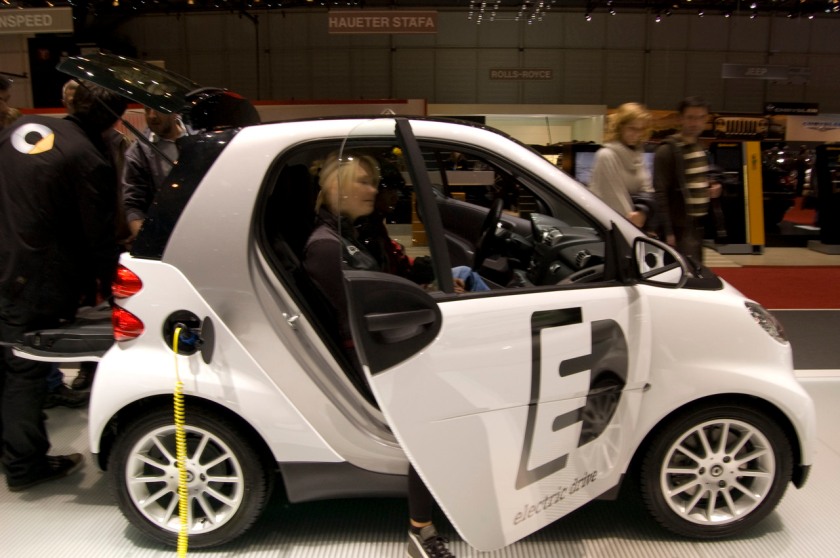 2008–present (in limited trials) Smart Fortwo ED (formerly known as EV)
2008–present (in limited trials) Smart Fortwo ED (formerly known as EV)Tridion 4 (2001)Concept and unproduced models
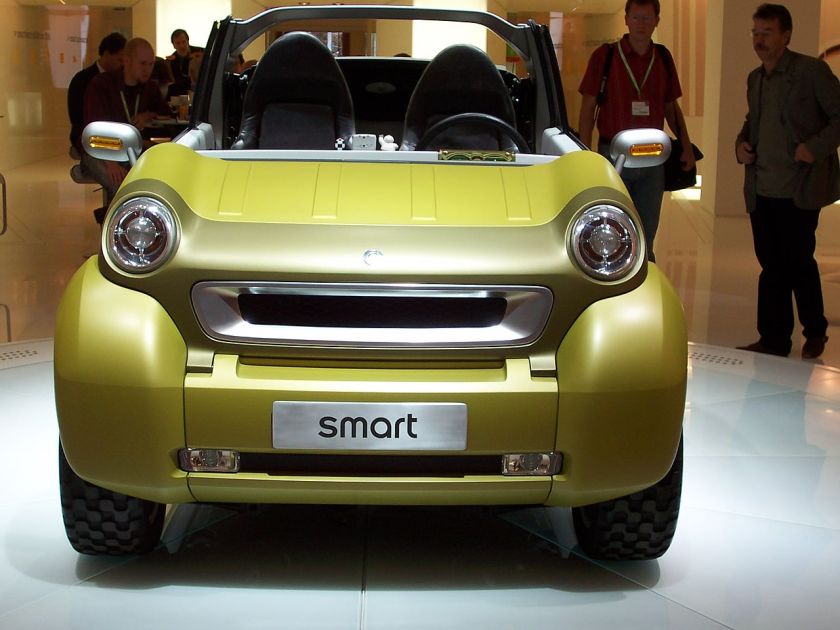
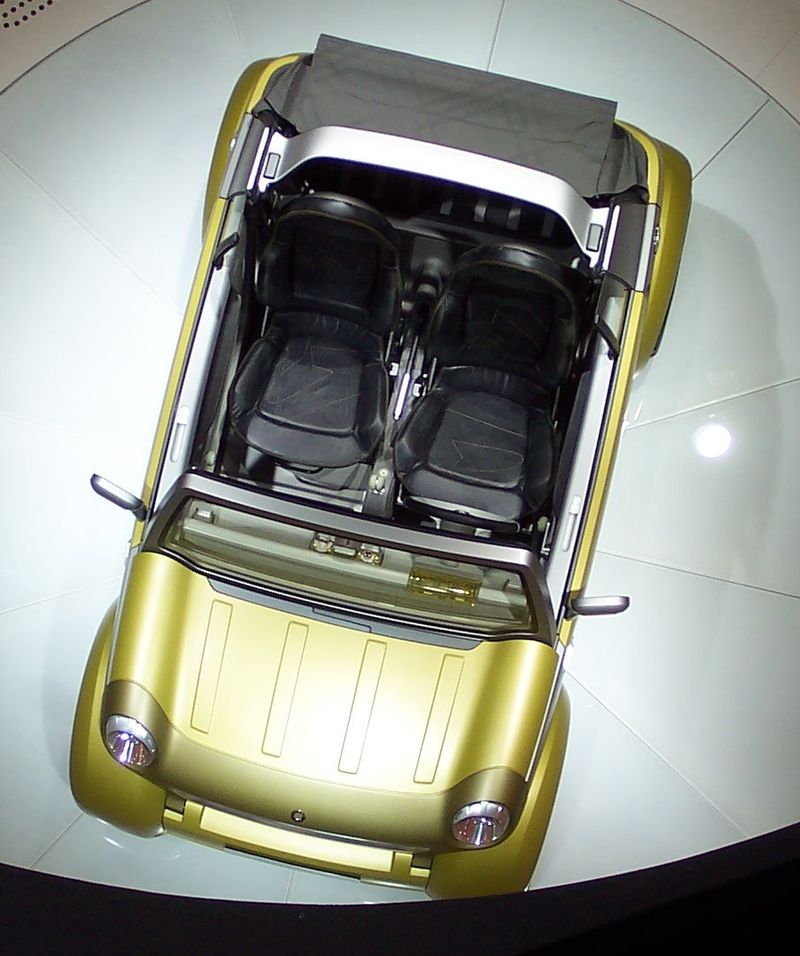
2005 smart crosstown-hybrid
Electric versions
Smart Electric Vehicle
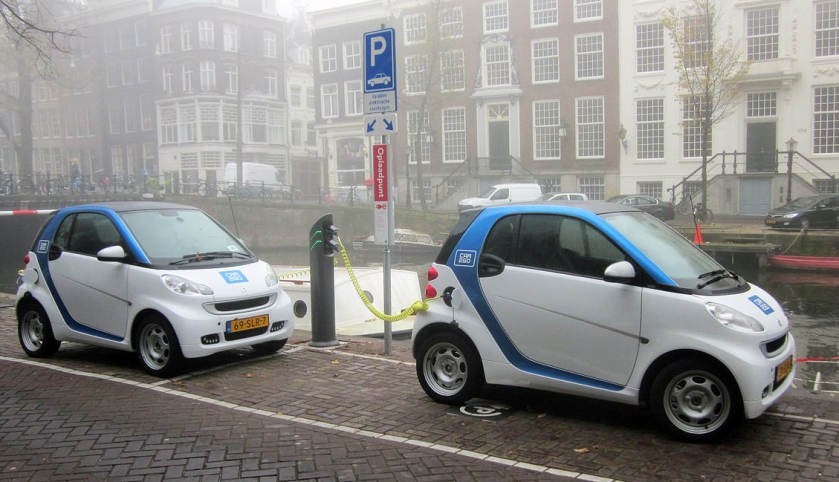 Two Smart Electric Vehicle cars deployed in the Car2Go carsharing program charging at the Herengracht in AmsterdamMain article: Smart electric drive
Two Smart Electric Vehicle cars deployed in the Car2Go carsharing program charging at the Herengracht in AmsterdamMain article: Smart electric driveAn all-electric version of the Fortwo, the Smart Fortwo Electric Vehicle (previously known as Smart ED), began development in 2006. Field testing began in London with 100 units in 2007, and the second generation, with a total of 2,000 units produced, was introduced in 2009 and available in 18 markets around the world for leasing or through the Car2Go carsharing service in San Diego and Amsterdam. Production of the second-generation Smart Fortwo electric drive began in November 2009, in Hambach, France. The Smart EDs have a lithium-ion battery provided by Tesla Motors with capacity of 14 kilowatt-hours (50 MJ). The range of a fully charged battery is up to 135 kilometres (84 miles) under the New European Driving Cycle (NEDC). The U.S. Environmental Protection Agency‘s official all-electric range is 63 miles (101 km) and rated the Smart ED with a combined fuel economy of 87 miles per gallon gasoline equivalent (mpg-e) (2.7 L gasoline equivalent/100 km; 104 mpg-imp gasoline equivalent).
The third-generation Smart electric drive is scheduled to be launched in the U.S. and Europe by the second quarter of 2013 and Daimler AG plans to mass-produce the electric car with availability in 30 markets worldwide. The third-generation Smart electric drive was unveiled at the September 2011 Frankfurt Motor Show. Key differences with the second-generation model include a more powerful electric motor, which improves acceleration and top speed, a new lithium-ion battery pack that will allow to increase the range to 140 kilometres (87 mi), and an option for quick-charge will be available.
Electric vehicle conversions
Main article: Electric vehicle conversionSmart electric drive is a Smart Fortwo electric conversion. It has a 40 km range with AGM batteries (100 km with Li-ion batteries)
Marketing
Asia
Japan
First generation Smart models equipped with engine sizes smaller than 660 cubic centimetres (40 cu in) fit into the Kei car category of cars in Japan, and are eligible for a range of lower taxes. Recent models with a larger engine do not meet the Kei qualifications. Because of high taxation on older cars in Japan, many older used Smart cars are exported to other countries with right-hand drive, like Great Britain and South Africa. An official version of the Smart Fortwo called the ‘Smart K’ has been released to fit the Kei car category. English musician Steve Appleton is featured in a Smart TV commercial, running in Japan during 2010.
China
Smart was shown in April 2008, at the Beijing Auto Show. Smart Fortwo started the pre-sales in October 2008 and the Smart vending machine road show in 12 cities from October 2008 to February 2009.
Hong Kong
Smart is available in Hong Kong with authorized dealer, Zung Fu Motors.
Indonesia
Since 29 November 2010, the Smart fortwo has been available in Indonesia with PT. Mercedes-Benz Indonesia (MBI) as the authorized dealer. MBI originally offered three models: Pure Coupe, Passion Coupe, and Passion Cabriolet, for sale in Jakarta and Bali. Indonesia is also the first country in Southeast Asia to have the Smart Electric Drive, which has been lent to the Government of DKI Jakarta for a one-year period and can be extended for further indefinite period by a signed agreement between PT. Mercedes-Benz Indonesia, PT. Siemens Indonesia, and the Government of DKI Jakarta. The Smart ED will then serve as a pilot project to prove the effectivity of zero-emission car usage that can utilize alternative sources of energy.
North America
Canada
The Smart Fortwo was introduced in Canada in late 2004 and was sold through Mercedes-Benz dealers. Demand was initially heavy with up to 6-month waiting lists in major urban areas in the spring of 2005. The vehicle was especially popular for commuters, small car enthusiasts, people needing light delivery and service vehicles. Demand relaxed slightly in the second year on the market. Sales rebounded with the second generation. Canadian Smart cdis cannot be registered in some states in the US.
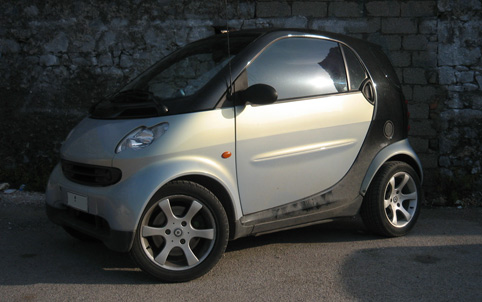 The Smart Fortwo USA
The Smart Fortwo USA10,239 Smart Fortwo cdis had been sold in Canada by the first month of 2008. Just before the Type 450 ended production (after which the production had equaled 770,256 cars) Mercedes-Benz Canada built up stock of cdis to tide dealers over until the successor model 451 arrived at the end of 2007.
The Canadian version of the Type 450 Smart Fortwo cdi sold to 915 customers over three months in 2004, 4,080 were sold in 2005, and 3,023 in 2006. Virtually all the deliveries in 2004 and many of the deliveries in 2005 were to long-time Smart fans who had been waiting for their car for years, which largely accounts for the higher numbers. Through 2007, sales totaled about 2,200 units, with the last few cars being sold in the first month of 2008, when the new Type 451 was already on sale. The Smart’s strongest sales performance ever in Canada was in April 2007, when more than 500 units were sold. Sales are strongest (per capita) in Western Canada, with Vancouver Island and Vancouver being especially hot markets.
The 2008-2011 (North America) Smart Fortwo Type 451 was totally redesigned, with a 70 HP naturally aspirated Mitsubishi-sourced gasoline engine of 999 cc for North America, up from the 799 cc cdi diesel, with the attendant loss of fuel economy. Smart decided not to import the cdi version of the 451, now with 55 DIN HP, although this decision has led to criticism that the new Smart does not get the fuel economy that many would expect from such a small car. The 799 cc, far more fuel efficient diesel is sold in Europe and some other markets.
The BRABUS Tailor-Made program is not well advertised in Canada, but at least 16 Tailor-Made cars have been produced to Canadian specification. These vehicles are sent to the BRABUS factory in Bottrop, Germany, where the standard ex-works cars are stripped to the shell and repainted/retrimmed to suit individual customers’ tastes. The first four are the BRABUS Canada 1; three in bright red (including the tridion, two cabriolets and one coupé) and one in all white (a cabriolet). Aside from the special paint, all had every BRABUS part fitted to the body and interior, and the seats, door panels and dashboards were trimmed in black Nappa leather and Alcantara. Three of these cars are in British Columbia and #1-of-1, the Concept vehicle used at Canadian International Auto Shows (a red cabrio with silver alloys), is now in London, Ontario. The next BRABUS Tailor-Made Canadian car was a one-off all orange 451 made for a customer in Vancouver. The other ten were all ordered by Mercedes-Benz Canada as the special “edit10n” of the Canadian BRABUS 451 (with only 70 HP), painted in metallic dark grey with an orange Nappe leather interior. There is also at least one BoConcept 451 built to Canadian standards.
In 2009, the Government of Canada acquired the European Smart mhd (micro hybrid drive) through partnership with Mercedes-Benz Canada. The project was administered by the ecoTECHNOLOGY for Vehicles(eTV) program within Transport Canada. Goals were to identify the benefits of the start-stop system equipped on the vehicle and how to accelerate the penetration of this technology throughout Canada. See Smart mhd Test Results Report.
United States
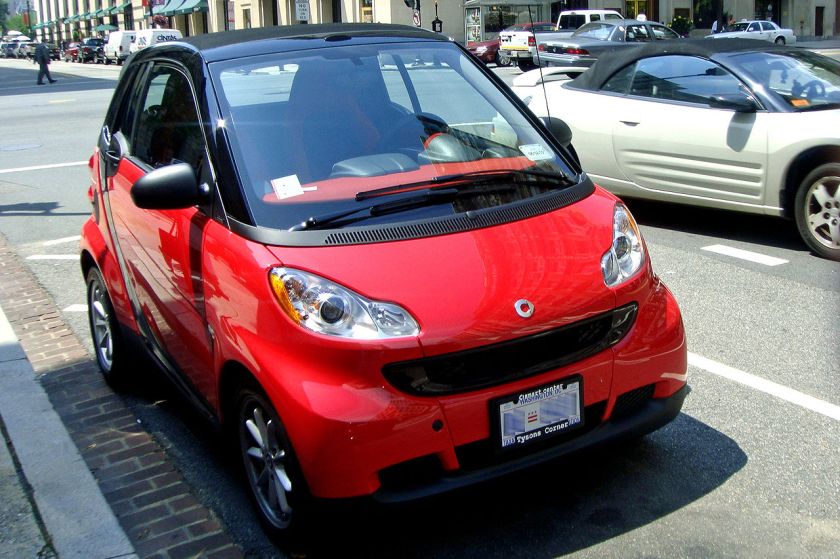 Smart Fortwo (2nd generation)parked in downtown Washington, D.C.
Smart Fortwo (2nd generation)parked in downtown Washington, D.C.Before 2008, Smart cars were only available in the United States as “grey market” imports, such as ZAP. U.S. federal regulations allow certain grey market importing in large quantities provided the vehicles are modified and tested to conform to U.S. safety and emissions regulations. Smarts imported into the United States by “The Defiance Company LLC”, modified by G&K Automotive Conversion in Santa Ana, California, and distributed and sold by independent dealerships which were not affiliated with Mercedes. U.S. regulations did not permit the purchase and import of used Smart CDi vehicles from Canada, as the diesel powered Canadian Smarts did not meet American emissions regulations.
In June 2006, DaimlerChrysler confirmed that Smart would be officially launched in the United States in the first quarter of 2008. The cars were offered through a dealership holding company Penske Automotive Group, which created a new U.S. dealership network for the brand under the name Smart USA. Initially, an updated gasoline powered Fortwo was offered, starting around US$12,000. The new model made its debut at European auto shows in November 2006.
Hybrid Technologies plans to sell an electric version of the Smart Fortwo model in the U.S. starting at US$35,000. It is being called a hybrid car even though the vehicle is all-electric. The electric Smart will have a range of 120 to 150 miles (190–240 km), a top speed of 80 mph (130 km/h), and charge in 5 to 6 hours using a standard 120 V AC outlet. An electric model is currently undergoing testing in the UK and will only be offered to commercial clients as a trial for the time being. The electric model is scheduled for a U.S. release for the 2012 model year with some test market cars surfacing in 4th quarter 2010.
A Forbes article has been critical of the stated reasons that Daimler-Chrysler gave for introducing the car in the United States. The Smart fortwo may have claimed to be the most fuel-efficient fully gasoline-engined car for sale in the US, but it actually lags behind the 4-door Mitsubishi Mirage and 2-door Scion iQ (combined 40 mpg and 37 mpg, respectively). According to the EPA, the Smart’s fuel efficiency is lower than the fuel efficiency of some hybrids, including the Ford Fusion, the Toyota Prius, the Honda Civic Hybrid, and the 2-seat Honda Insight, which achieve 41/36, 51/48, 40/43, and 40/43 respectively while the Smart achieves 33 city and 41 highway. The Smart Fortwo is the most efficient car at its pricepoint, since it costs about half as much as a hybrid in the US.
The Fortwo has received much attention in the U.S. In its April 2008 issue, Men’s Vogue raised the question, “in a nation where your supersized car is your castle, is the Smart too mini for a man?”.
To obtain a Smart Fortwo originally required obtaining a “reservation” costing $99 through a dealer or over the internet. The waiting time in January 2009 was approximately 12 months; by July 2009, there was no wait to obtain a vehicle and dealers had them in stock for immediate delivery.
On January 25, 2010, Smart USA began its first lease program in the US market for Smart fortwo models. The program was scheduled to last through February 28, 2010, but has been extended indefinitely despite lack of leasing sales.
Penske Automotive Group announced plans February 14, 2011, to relinquish distribution of the Smart Fortwo under Smart USA, to Mercedes-Benz USA. In 2011, Smart USA offered four versions of their Fortwo model. These models include the following: cabriolet, the high-cost convertible version; passion, the mid-cost moonroof version; pure, the low-cost basic version; and electric drive, the electric version.
On July 1, 2011, Mercedes-Benz USA took over the distribution, sales and marketing of the Smart brand from Penske Automotive Group. Smart is owned and produced by Mercedes’ parent, Daimler AG.
As of 2015 all models are petrol or electric.
Mexico
The Smart Fortwo was introduced in 2003, and were sold in department stores Sanborns and Liverpool. Later Mercedes-Benz dealers started to offer the car. Currently Smart cars are still offered in the country, with only the Fortwo model available.Smart offers the hardtop and convertible models of the Fortwo coupé in Mexico.
Smart Fortwo has fierce competition with the Hyundai Atos, Pontiac Matiz, and Chevrolet Chevy, which are compacts with low gas consumption at less than half the cost of a Smart but with more space for passengers.
South America
Argentina
In Argentina, the Fortwo has been for sale since 2010 and models (Fortwo Cabrio and Fortwo Coupé) can be bought in dealerships located in the Puerto Madero neighborhood of Buenos Aires.
Brazil
In Brazil, the Fortwo has been for sale since 2009 and models (fortwo cabrio turbo, fortwo coupé turbo and fortwo coupé MHD) can be bought in some Smart and/or Mercedes-Benz dealerships in São Paulo, Rio de Janeiro, Belo Horizonte and Porto Alegre cities. The electric, brabus and forfour versions are not available for the Brazilian market.
Oceania
Australia
Since 2003, Smart models have been for sale in Australia. All models that have been produced have been sold in Australia. The Smart Fortwo is currently sold through Mercedes-Benz Dealerships. Mercedes-Benz dealerships around Australia as of 2003 were only offering the Fortwo in the “Pulse” mid-range trim, thus the “Passion”, “Brabus Xclusive” and other trims are not available as yet, until further notice or changes.
In March 2015 it was announced that the Smart brand would be withdrawn from Australia due to poor sales.
Europe
United Kingdom
Launched in the United Kingdom in 2000, the current range features the Smart Fortwo convertible, and Smart Fortwo Coupé. Smart is available in the UK through Mercedes Benz retailers.
The UK is host to a number of annual events, both official and unofficial, including the Smart Festival, held annually at Mercedes-Benz World in Weybridge, near historic Brooklands – the world’s first purpose-built motor racing circuit.
Russia
The Smart brand debuted in the Russian market in 2012 with the Fortwo model only.
Safety
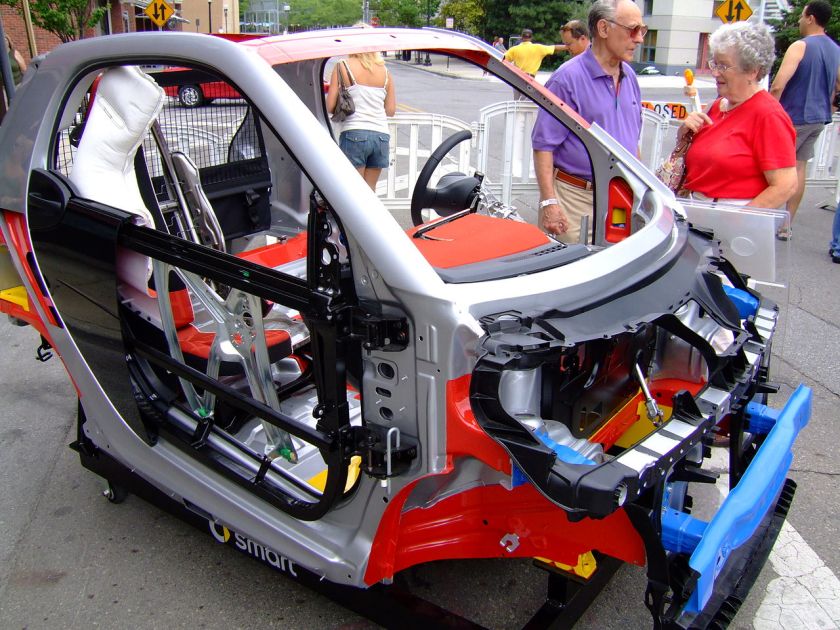 Cutaway showing structure of the Smart Fortwo
Cutaway showing structure of the Smart FortwoThe Smart Fortwo uses a very small front crumple zone. The second generation Smart Fortwo has been awarded 4 out of 5 stars in the Euro NCAP Adult Occupant Protection and 2 out of 4 stars in the Pedestrian protection test, but was not tested for Child Occupant Protection as it has no rear seats. The original Smart was awarded 3 out of 5 stars for Adult Occupant Protection. In American tests using a five star rating, Smart cars received a four star safety rating for the driver from a front impact, and a five star safety rating for the driver for a side impact. It also received “Good” ratings for front and side crash protection in Insurance Institute for Highway Safety (IIHS) tests. However, in an April 2009 40 mph frontal offset crash test between a Fortwo and a Mercedes C-Class, “the Smart went air-borne and turned around 450 degrees” causing “extensive intrusion into the space around the dummy from head to feet”. The IIHS rated the Smart Fortwo “Poor,” noting that “Multiple injuries, including to the head, would be likely for a real-world driver of a Smart in a similar collision.”
The main structure of the car is a stiff structure, marketed as the Tridion Safety Cell, designed to activate the crumple zones of a colliding vehicle. This design creates a safety cell around the passengers, according to the manufacturer.
Modification
Smart models have been modified by Brabus of Germany, resulting in Brabus production models, including Smart BRABUS electric drive.
Other companies modify the Smart Fortwo to use motorcycle engines, such as the Suzuki Hayabusa 1340 cc inline four-cylinder. These cars are known as Smartuki. The most powerful models can accelerate from 0 to 60 mph (0 to 100 km/h) in less than 3.5 seconds. The original car was fitted with a mildly tuned engine and ran 0-60 mph in 4.5 seconds, 1/4 mile standing start in 12.4 seconds and a top speed of 132 mph (212 km/h). It is possible to push the GSXR engine further; nitrous oxide will add another 50 bhp (37 kW; 51 PS) – 80 bhp (60 kW; 81 PS) and there is a turbocharged option.
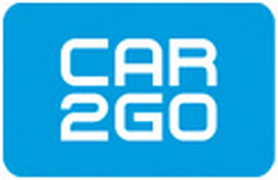
Crosstown Hybrid (2005)
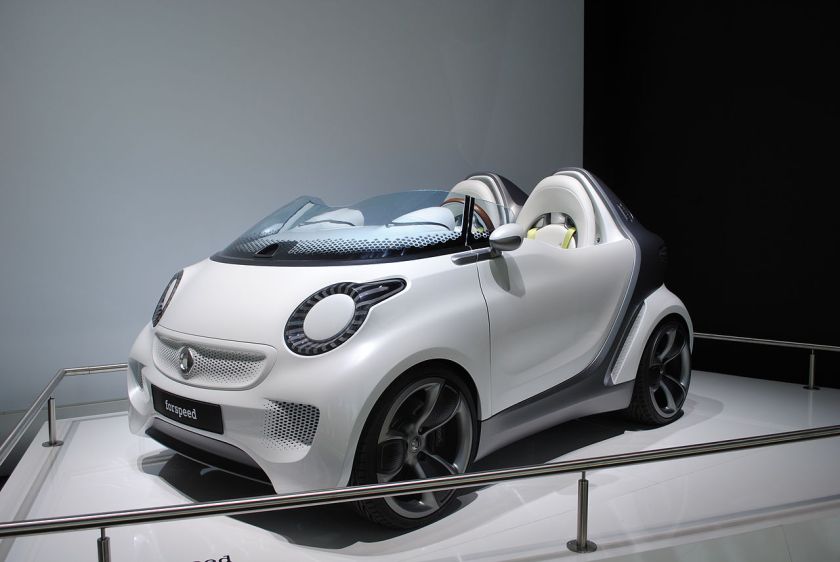 2011 Smart forspeed concept Forspeed (2011)
2011 Smart forspeed concept Forspeed (2011)
- Daimler Trucks
- Commercial vehicles
-

- Freightliner
- Mercedes-Benz (truck group)

- Mitsubishi Fuso
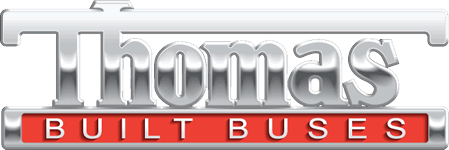
- Thomas Built Buses
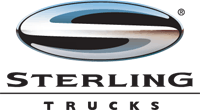
- Sterling Trucks – operations wound down in 2010, but will continue to support authorized dealers and vehicle owners
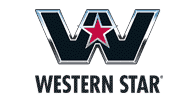
- Western Star
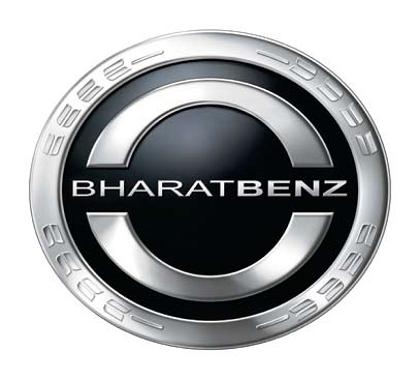
- BharatBenz
- Components

- Daimler Buses
- Mercedes-Benz buses
- Orion Bus Industries – operations winded down in 2012, and closed in 2013
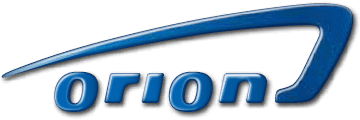
- Setra

- Mercedes-Benz Vans
- Mercedes-Benz (vans group)
- Daimler Financial Services

- Mercedes-Benz Bank

- Mercedes-Benz Financial
- Daimler Truck Financial
- Mercedes-Benz Bank
- Others
- Mercedes AMG High Performance Powertrains (Builds engines for Formula 1 Racing)

The brand is known for luxury automobiles, buses, coaches, and trucks. The headquarters of Mercedes-Benz is in Stuttgart, Baden-Württemberg, Germany.
The name first appeared in 1926 under Daimler-Benz, but traces its origins to Daimler-Motoren-Gesellschaft‘s 1901 Mercedes and to Karl Benz‘s 1886 Benz Patent-Motorwagen, which is widely regarded as the first gasoline powered automobile. Mercedes-Benz’s slogan is “The Best or Nothing”. Mercedes-Benz is one of the most recognized automotive brands worldwide.
History
Mercedes-Benz traces its origins to Karl Benz‘s creation of the first petrol-powered car, the Benz Patent Motorwagen, financed by Bertha Benz and patented in January 1886, and Gottlieb Daimler and engineer Wilhelm Maybach‘s conversion of a stagecoach by the addition of a petrol engine later that year. The Mercedes automobile was first marketed in 1901 by Daimler-Motoren-Gesellschaft. The first Mercedes-Benz brand name vehicles were produced in 1926, following the merger of Karl Benz’s and Gottlieb Daimler’s companies into the Daimler-Benz company. Throughout the 1930s, Mercedes-Benz produced the 770 model, a car that was popular during Germany’s Nazi period.Adolf Hitler was known to have driven these cars during his time in power, with bulletproof windshields. Most of the surviving models have been sold at auctions to private buyers. One of them is currently on display at the War Museum in Ottawa, Ontario. The pontiff’s Popemobile has often been sourced from Mercedes-Benz. Mercedes-Benz has introduced many technological and safety innovations that later became common in other vehicles.Mercedes-Benz is one of the best-known and established automotive brands in the world, and is also one of the world’s oldest automotive brand still in existence today in 2015, having produced the first petrol-powered car.
For information relating to the famous three-pointed star, see under the title Daimler-Motoren-Gesellschaft including the merger into Daimler-Benz.
Subsidiaries and alliances
As part of the Daimler AG company, the Mercedes-Benz Cars division includes Mercedes-Benz and Smart car production.
Mercedes-AMG
Mercedes-AMG became a majority owned division of Mercedes-Benz in 1999. The company was integrated into DaimlerChrysler in 1999, and became Mercedes-Benz AMG beginning on 1 January 1999.
McLaren Group
Motorsport
Mercedes-AMG was the official engine supplier for the second oldest and most successful F1 team by Grand Prix wins, McLaren Racing from 1995-2014. In 2013 it was announced that after the last year with Mercedes contract with McLaren, Mercedes would be dropped and be replaced by Honda, with whom McLaren had world championship wins in the past together.
Mercedes have since gone on to buy their own Formula 1 team, buying the former Honda Racing F1 team, Brawn GP, and turning it into Mercedes F1 in 2010. Despite a slow start, in 2012 the team began to show progress and rise to the front of the Grid with their first win coming from driver Nico Rosberg at the 2012 Chinese Grand Prix, before showing further progress again in 2013, when the team signed Lewis Hamilton from McLaren to replace the retiring Michael Schumacher. Hamilton’s first win for the team came at the 2013 Hungarian Grand Prix.
In 2014 the team won the Formula One World Constructors Title, with Driver Lewis Hamilton going on to win the Drivers Title. In 2015 the team won their second successive World Constructors Title and drivers title with Lewis Hamilton once
Road car manufacturing
From 2003 to 2009, Mercedes were in a joint venture with McLaren Group to manufacture the Mercedes-Benz SLR McLaren. At this time, Mercedes owned 40% of McLaren Group. Due to Mercedes purchasing Brawn GP, a F1 team, Mercedes decided to sell their shares back to Ron Dennis, as McLaren would be their rival in the F1 championship.
Maybach
Daimler’s ultra-luxury brand Maybach was under Mercedes-Benz cars division until 2013, when the production stopped due to poor sales volumes. It now exists under the Mercedes-Maybach name, with the models being ultra-luxury versions of Mercedes cars, such as the 2016 Mercedes-Maybach S600.
Production
Factories
Beside its native Germany, Mercedes-Benz vehicles are also manufactured or assembled in:
| Sovereign state | Continent | Note |
|---|---|---|
| Algeria | Africa | Manufactures Busses and Trucks in cooperation with SNVI (Actros , Zetros, Unimog, and G-Class, Sprinter). |
| Argentina | South America | Manufactures buses, trucks and the Sprinter van. This is the first Mercedes-Benz factory outside of Germany. Built in 1951. |
| Austria | Europe | G-Class |
| Bosnia and Herzegovina | Europe | |
| Brazil | South America | Manufactures trucks and buses. Established in 1956. The A-Class (W168) was produced from 1999 to 2005 and the C-Class was produced until 2010 as well. |
| Canada | North America | |
| Colombia | South America | Assembly of buses, Established in Soacha 2012 and Funza 2015 |
| China | Asia | |
| Egypt | Africa | Via Egyptian German Automotive Company E-Class, C-Class and GLK |
| Finland | Europe | New A-series (W176) is manufactured in Uusikaupunki since late 2013, being the first M-B passenger car ever built in that country |
| Hungary | Europe | |
| Jordan | Asia | Buses company factory, Elba House, Amman. |
| India | Asia | Bangalore (R&D). Pune (Passenger cars).Chennai (Daimler India Commercial Vehicles Pvt. Ltd.) – Trucks & Engine Manufacturing unit. |
| Indonesia | Asia /Australia | |
| Iran | Asia | Not since 2010 |
| Malaysia | Asia | Assembly of C, E and S class vehicles by DRB-HICOM. |
| Mexico | North America | Mercedes-Benz Mexico fully manufactures some Mercedes and Daimler vehicles completely from locally built parts (C-Class, E-Class, M-Class, International trucks, Axor, Atego, and Mercedes Buses), manufactures other models in complete knock down kits (CL-Class, CLK-Class, SL-Class, SLK-Class) and manufactures a select number of models in semi knockdown kits which use both imported components and locally sourced Mexican components (S-Class, CLS-Class, R-Class, GL-Class, Sprinter). |
| Nigeria | Africa | Assembly of buses, trucks, utility motors and the Sprinter van |
| Philippines | Asia | |
| Russia | Eurasia | Joint venture Mercedes-Benz Car Trucks Vostok in Naberezhnye Chelny (jointly Kamaz). Available in trucks Actros, Axor, multi-purpose auto four wheel drive medium trucks Unimog. Mercedes-Benz Sprinter Classic is also produced in Russia. |
| Serbia | Europe | FAP produces Mercedes-Benz trucks under license. |
| Spain | Europe | Factory at Vitoria-Gasteiz Mercedes-Benz Vito, Viano and V-Class have been built there. |
| South Africa | Africa | |
| South Korea | Asia | Mercedes-Benz Musso and MB100 models manufactured by SsangYong Motor Company. |
| Thailand | Asia | Assembly of C, E and S class vehicles by the Thonburi Group |
| Turkey | Eurasia | Mercedes-Benz Türk A.Ş. |
| United Kingdom | Europe | The SLR sports car was built at the McLaren Technology Centre in Woking. Brackley, Northamptonshire, is home to the Mercedes Grand Prix factory, and Brixworth, Northamptonshire is the location of Mercedes-Benz HighPerformanceEngines |
| United States | North America | The Mercedes-Benz GLE-Class Sport Utility and the full-sized GL-Class Luxury Sport Utility Vehicle are all built at the Mercedes-Benz U.S. International production facility near Tuscaloosa, Alabama. Trucks (6,000 per year in the early eighties) were once assembled in Hampton, VA. |
| Vietnam | Asia | Assembly of E-Class, C-Class, S-Class, GLK-Class and Sprinter. Established in 1995. |
Quality rankings
Since its inception, Mercedes-Benz had maintained a reputation for its quality and durability. Objective measures looking at passenger vehicles, such as J. D. Power surveys, demonstrated a downturn in reputation in these criteria in the late 1990s and early 2000s. By mid-2005, Mercedes temporarily returned to the industry average for initial quality, a measure of problems after the first 90 days of ownership, according to J. D. Power. In J. D. Power’s Initial Quality Study for the first quarter of 2007, Mercedes showed dramatic improvement by climbing from 25th to 5th place and earning several awards for its models. For 2008, Mercedes-Benz’s initial quality rating improved by yet another mark, to fourth place. On top of this accolade, it also received the Platinum Plant Quality Award for its Mercedes’ Sindelfingen, Germany assembly plant. J. D. Power’s 2011 US Initial Quality and Vehicle Dependability Studies both ranked Mercedes-Benz vehicles above average in build quality and reliability. In the 2011 UK J. D. Power Survey, Mercedes cars were rated above average. A 2014 iSeeCars.com study for Reuters found Mercedes to have the lowest vehicle recall rate.
Models
List of Mercedes-Benz vehicles
The following is a List of Mercedes-Benz vehicles indexed by year of introduction.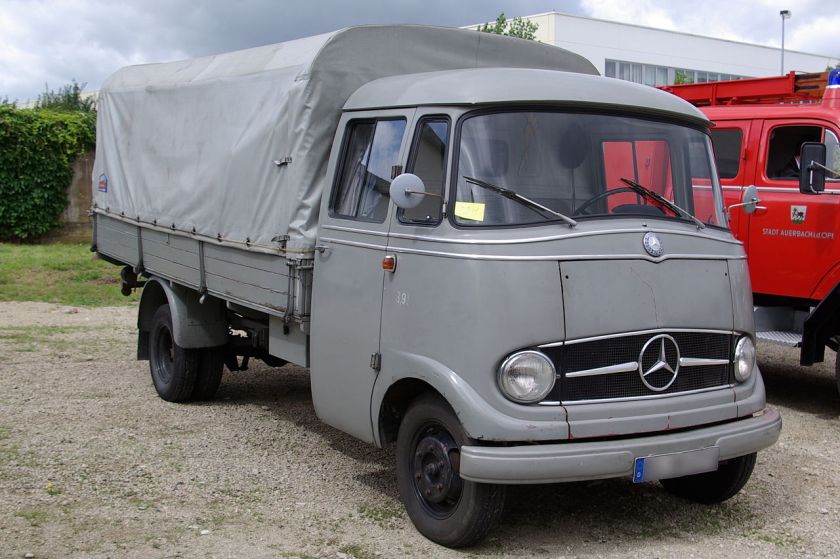 Mercedes Benz L 319 (produced 1955-1967)
Mercedes Benz L 319 (produced 1955-1967)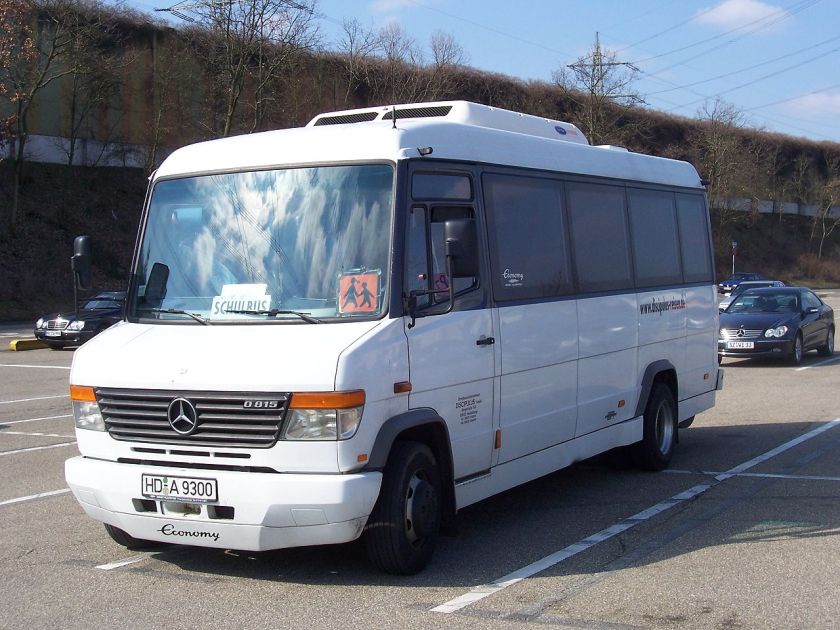 Mercedes Benz Auwärter 815D Vario minibus
Mercedes Benz Auwärter 815D Vario minibus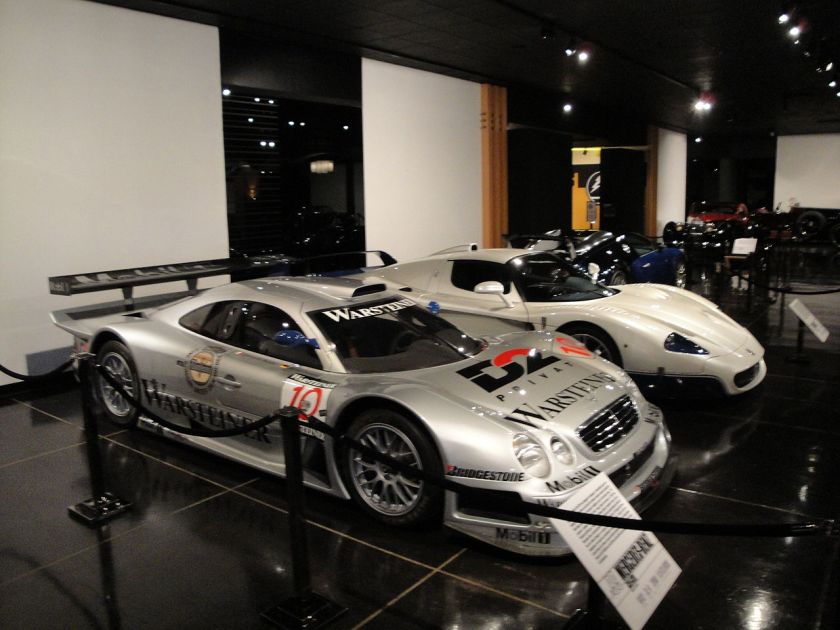 1999 Mercedes Benz CLK-GTR race car (foreground)
1999 Mercedes Benz CLK-GTR race car (foreground)
In 1926 Daimler Motoren Gesellschaft and Benz & Cie. merged forming Daimler-Benz and selling the Mercedes-Benz line of vehicles. Mercedes was a brand of DMG started in 1901. It has produced vehicles into the 21st century
Daimler and Benz vehicles
Before 1926, Mercedes-Benz was two separate companies that were competitors. One originated from Karl Benz, who invented the car, and Maybach and Daimler, who started Daimler which produced the Mercedes brand. Somehow the companies survived two world wars and various economic depressions to become one of the major suppliers of automobiles and trucks in the 21st century in Germany and in many parts of the World. The company has also supplied engines to many different products
Maybach left the company in 1907 to start his own company which was eventually bought by Mercedes-Benz in 1960.
Benz
Benz & Company Rheinische Gasmotoren-Fabrik (aka Benz & Cie), founded 1883
Benz Patent-Motorwagen 1886-1893 (~25 produced)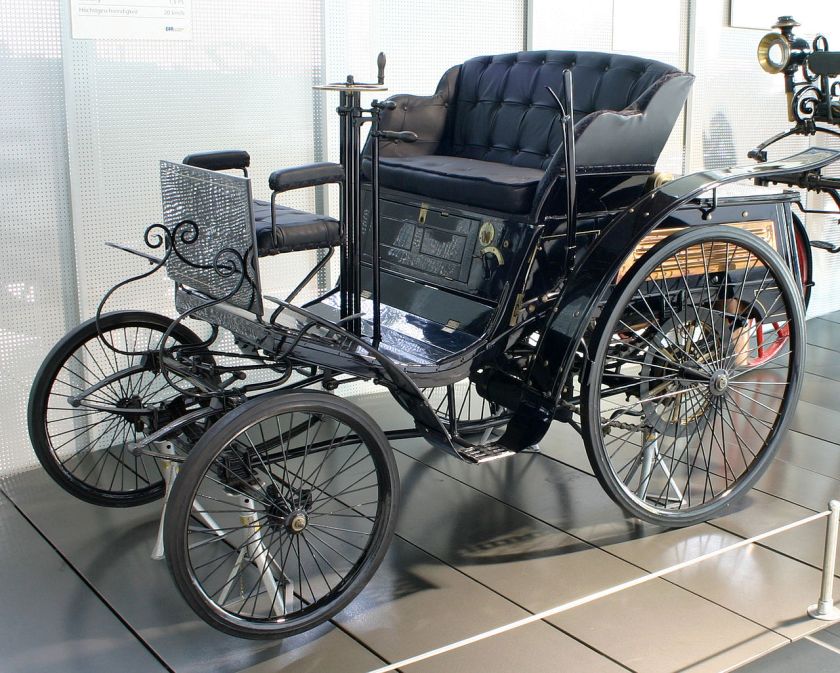 Benz Velo 1894
Benz Velo 1894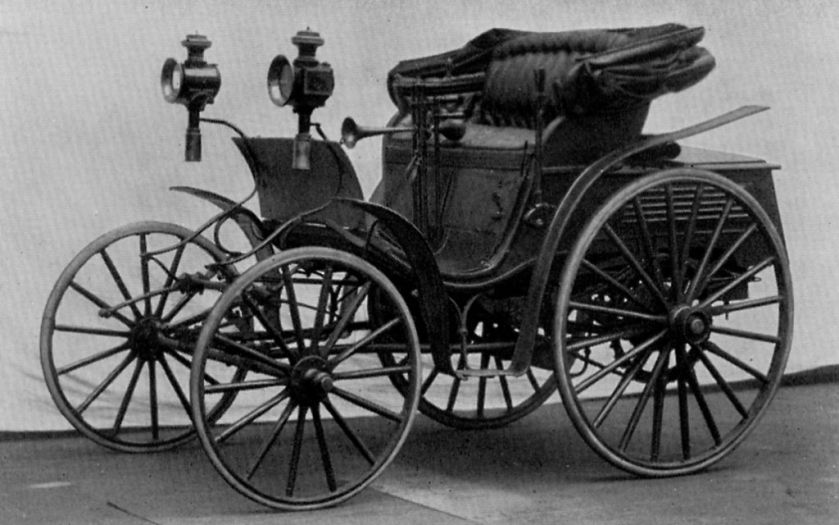 Benz Viktoria 1894-1900 By 1895 1,132 vehicles produced
Benz Viktoria 1894-1900 By 1895 1,132 vehicles produced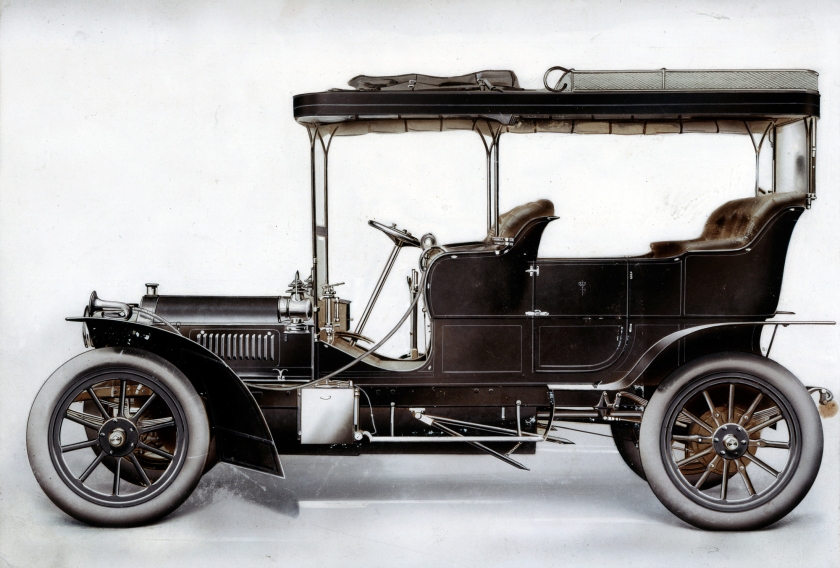 1902 benz parsifal 12 14 hp big
1902 benz parsifal 12 14 hp big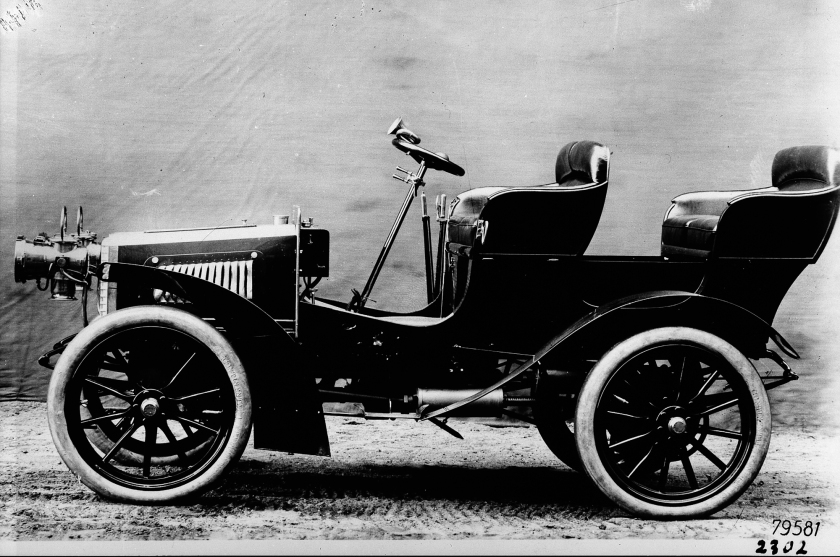 1902 Benz Parsifal 22 hp
1902 Benz Parsifal 22 hp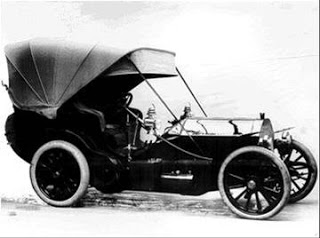 1902-1903 – Benz Parsifal
1902-1903 – Benz Parsifal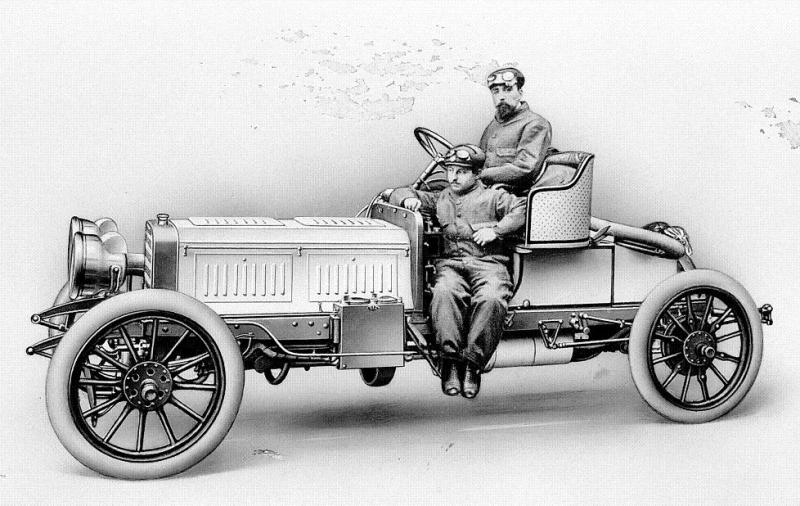 1903 Benz Parsifal 60 horsepower racing car
1903 Benz Parsifal 60 horsepower racing car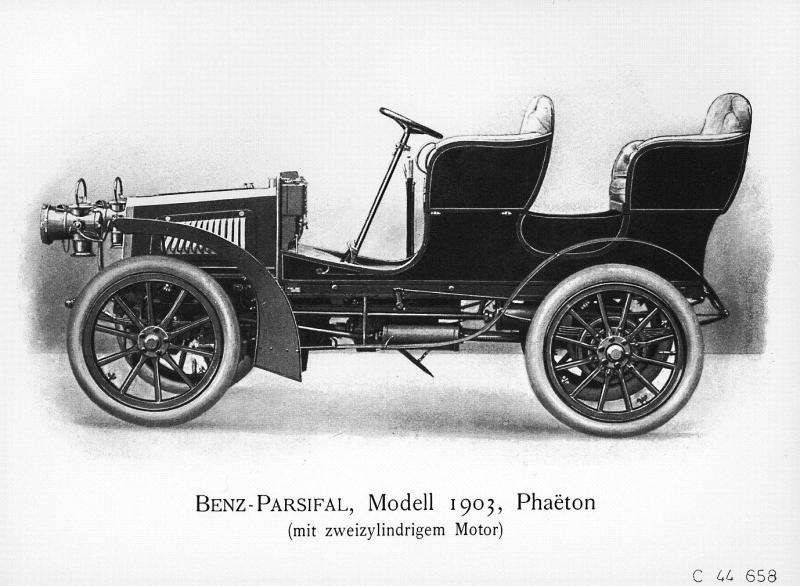 1903 Benz Parsifal Phaeton Benz Parsifil 1902-1908
1903 Benz Parsifal Phaeton Benz Parsifil 1902-1908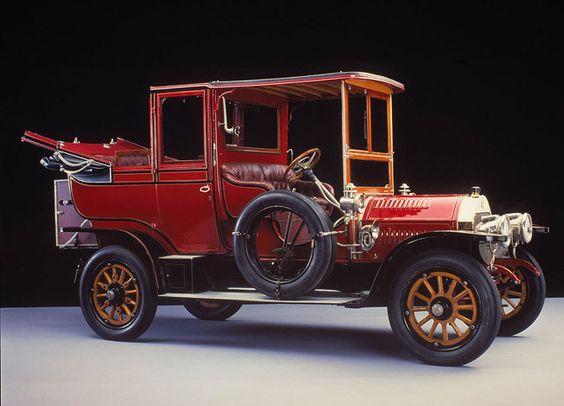
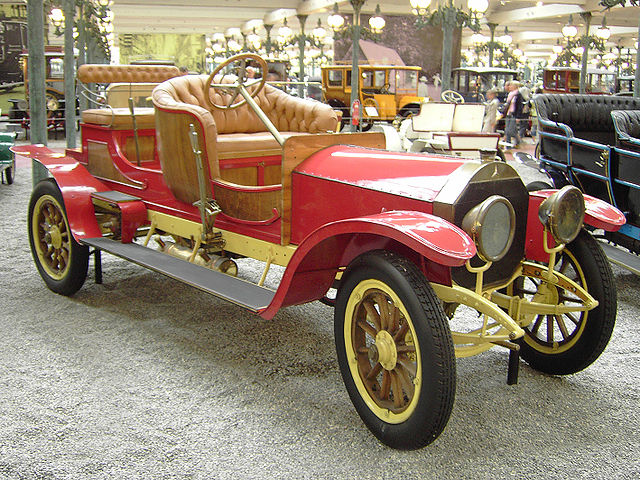
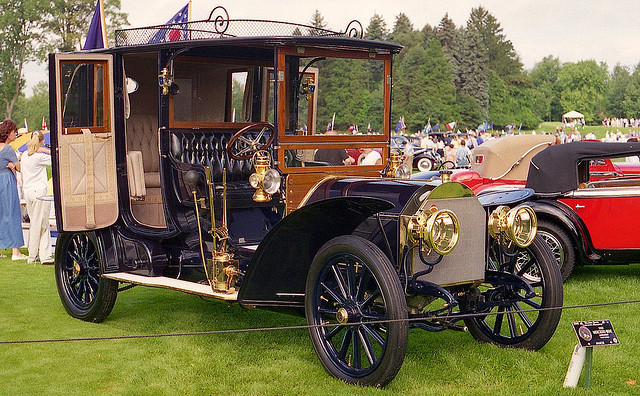 1907 24/40 hp Benz landaulet
1907 24/40 hp Benz landaulet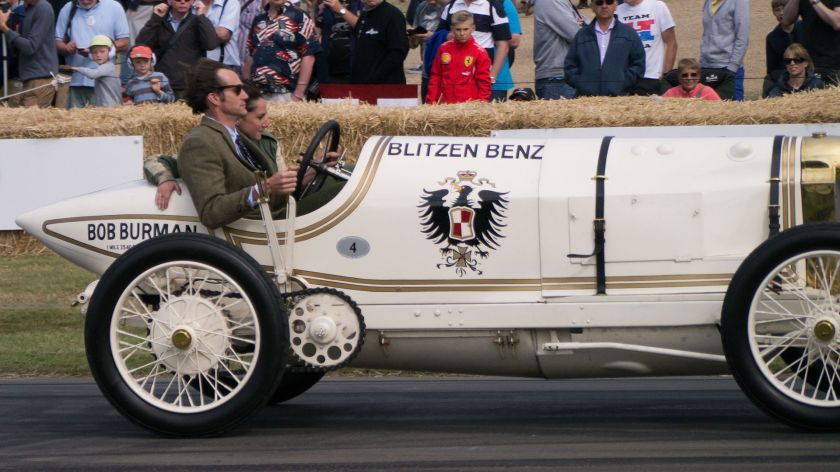
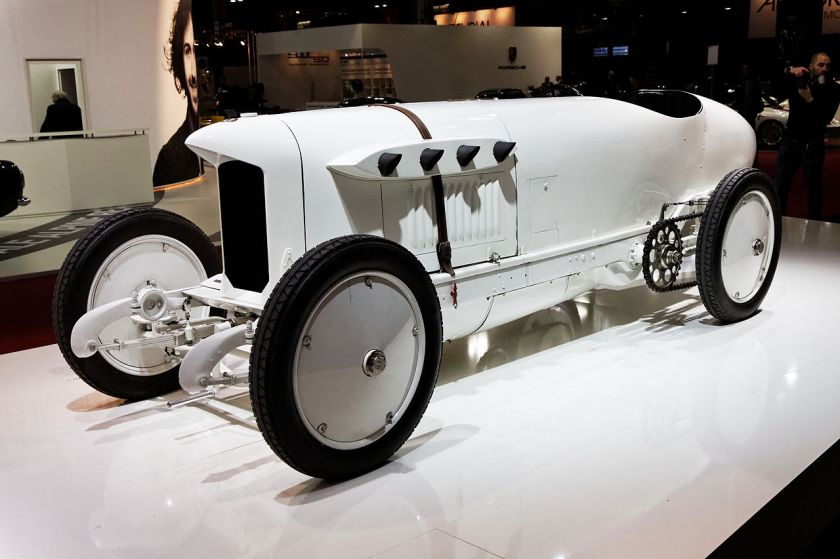 Blitzen Benz 1909
Blitzen Benz 1909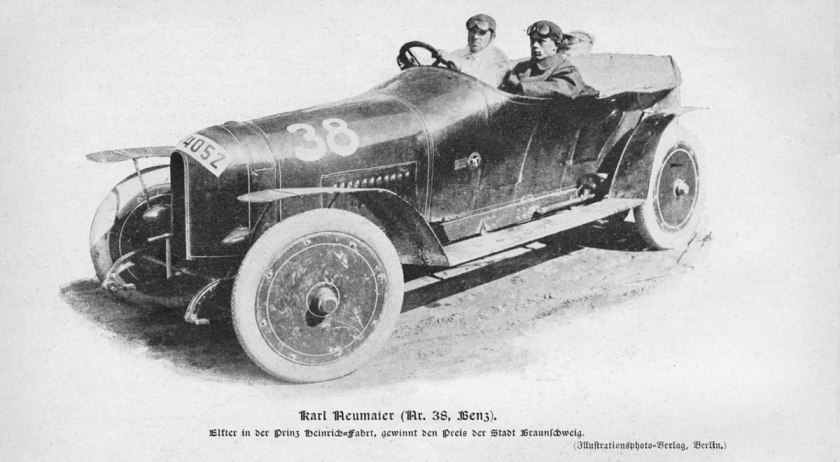
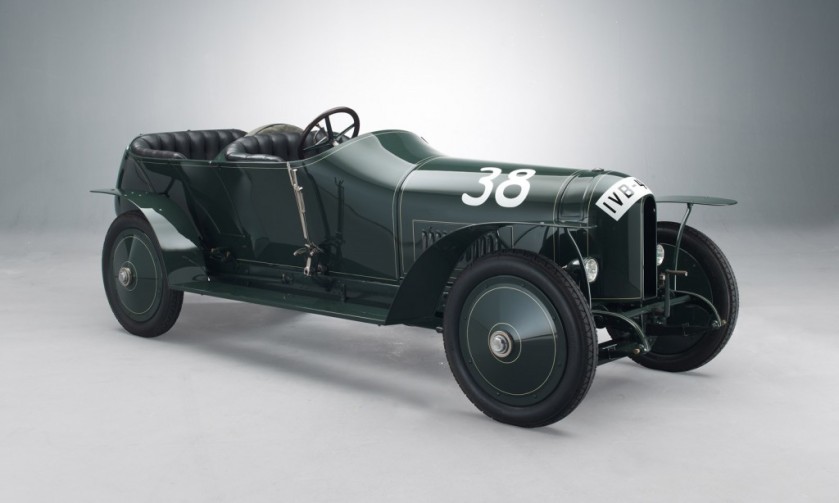 1910 Benz Prinz Heinrich car Benz 1910 ‘Prinz Heinrich’
1910 Benz Prinz Heinrich car Benz 1910 ‘Prinz Heinrich’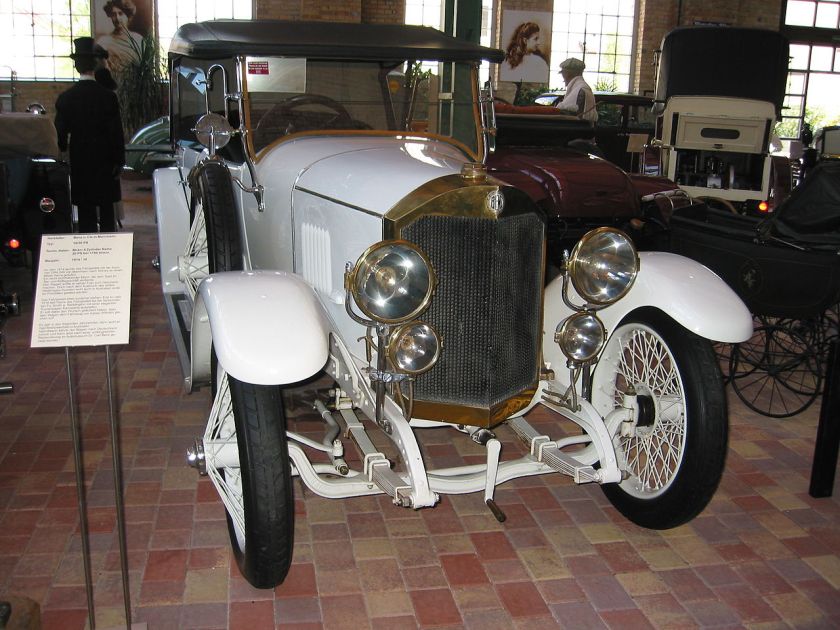 1914 Benz 10-30 PS with Torpedo style bodywork Benz 10/30 PS 1912, 1921-1927 (also Daimler-Benz model after 1926)
1914 Benz 10-30 PS with Torpedo style bodywork Benz 10/30 PS 1912, 1921-1927 (also Daimler-Benz model after 1926)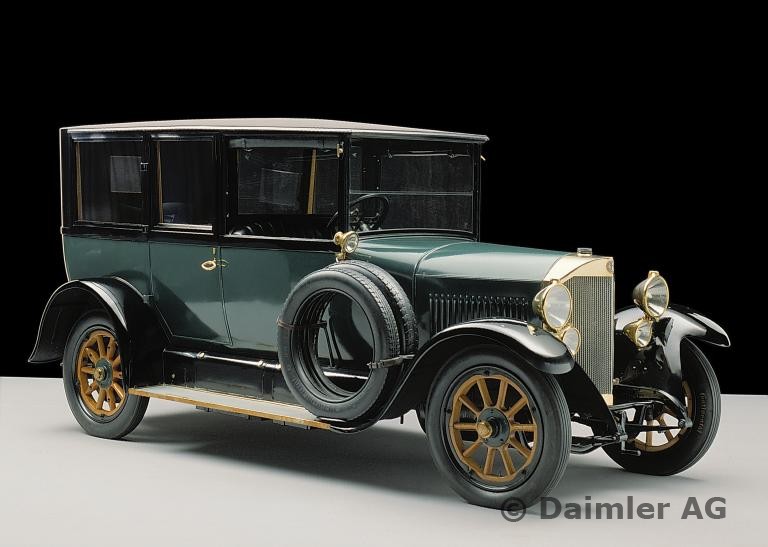 Benz 10/30(35) hp 1921
Benz 10/30(35) hp 1921
DMG (includes Mercedes)
Daimler-Motoren-Gesellschaft, founded in 1890 by Daimler and Maybach
Inventions of people Daimler and Maybach preceding DMG:
Daimler Motorized Carriage 1882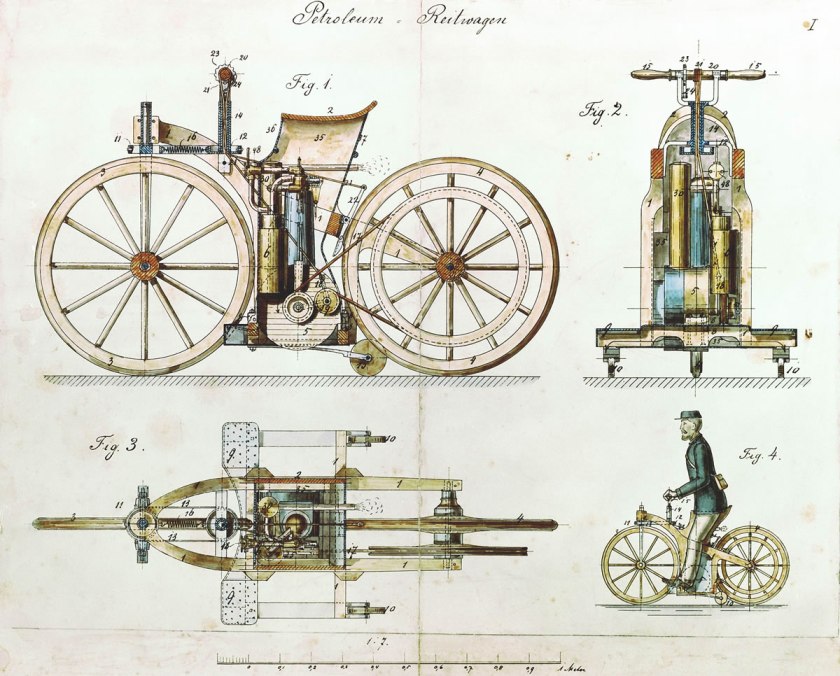
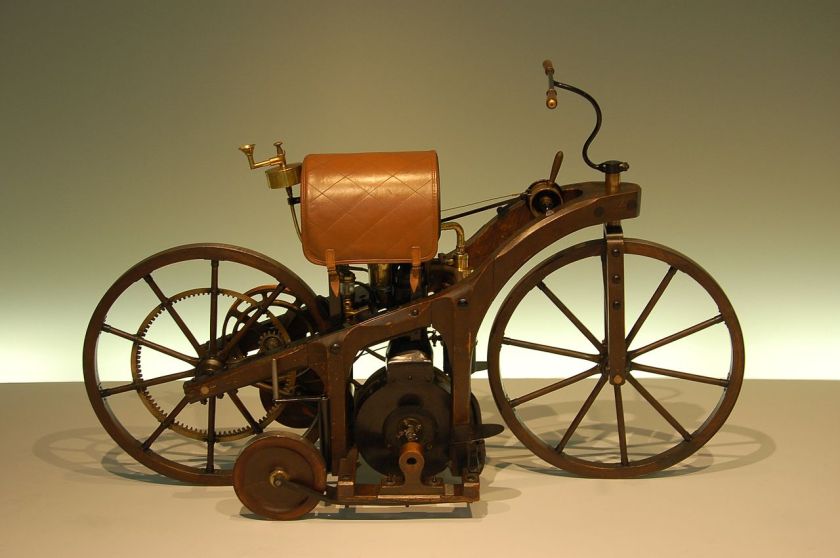
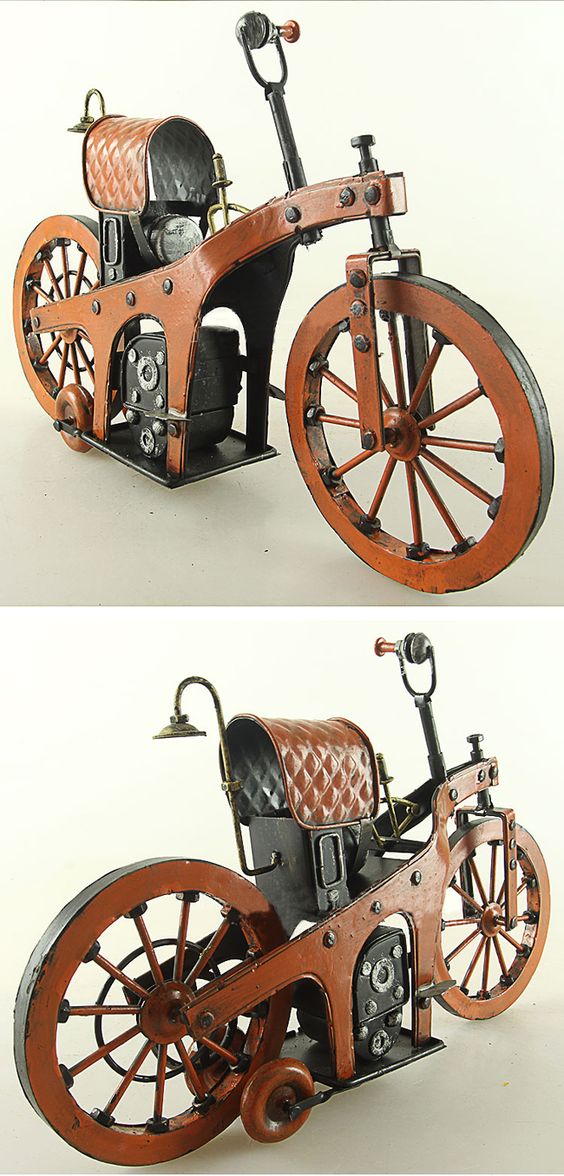 Daimler Reitwagen 1885
Daimler Reitwagen 1885
-
Daimler Motor Car 1886
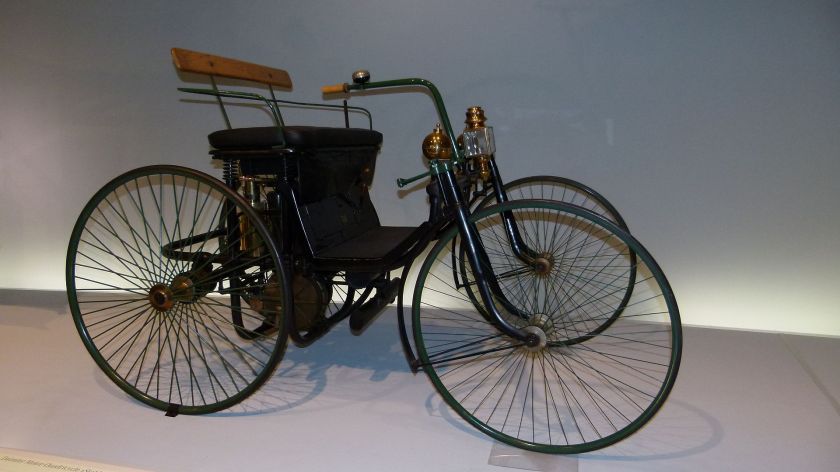 1889 Daimler Stahlradwagen – 1,5 PS, 18 km/h – Mercedes-Benz-Museum, Stuttgart, Bad Cannstatt Daimler Stahlradwagen 1889
1889 Daimler Stahlradwagen – 1,5 PS, 18 km/h – Mercedes-Benz-Museum, Stuttgart, Bad Cannstatt Daimler Stahlradwagen 188930 Daimler vehicles produced by 1895 Daimler belt-drive 1895-1899 Daimler Phoenix 1897-1902 4 hp and 6 hp
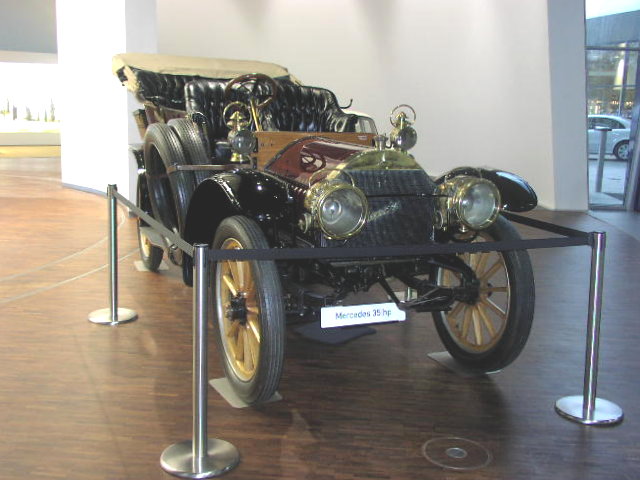
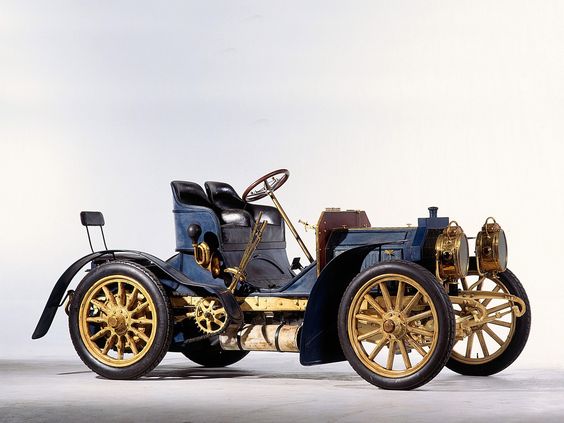 Mercedes 35 hp 1901
Mercedes 35 hp 1901 -
Mercedes Simplex 1902
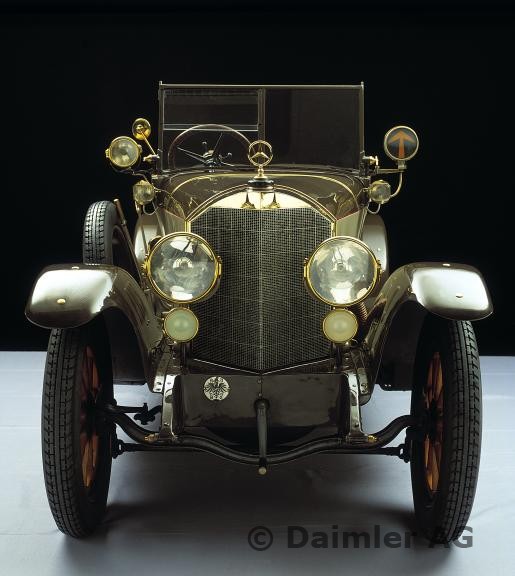
1910-24 Mercedes Knight 10-30 hp – 25-65 hp
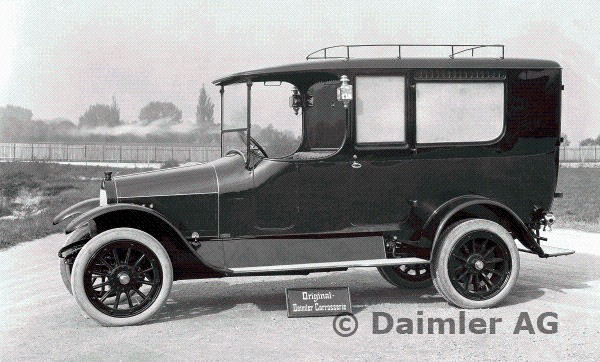 1913 Daimler ambulance Type UK with 10-30 hp Knight engine
1913 Daimler ambulance Type UK with 10-30 hp Knight engine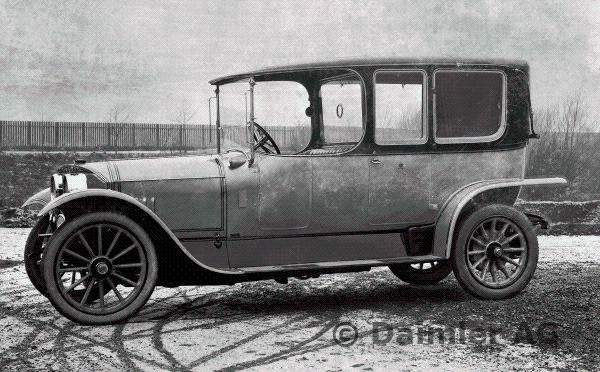 1913-15 Mercedes Knight-2565-PS
1913-15 Mercedes Knight-2565-PS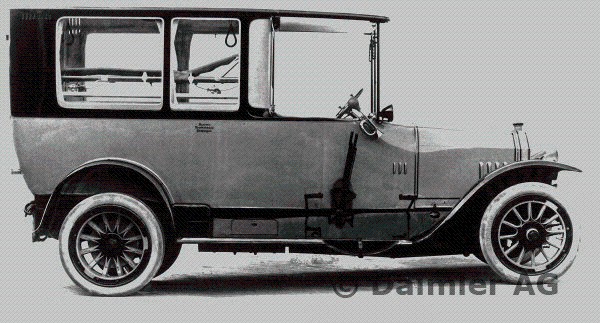 1920-21 Daimler ambulance Type UK with 16-45 hp Knight engine
1920-21 Daimler ambulance Type UK with 16-45 hp Knight engine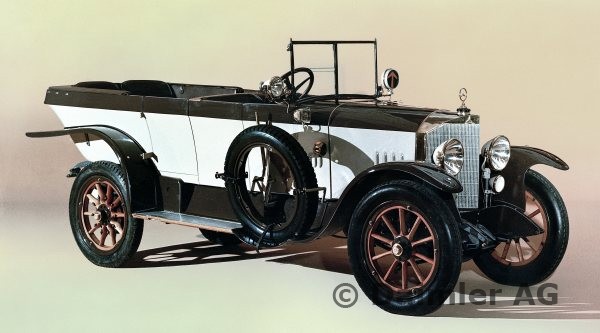 1921 Mercedes Knight 16-40 hp, 16-45 hp, 16-50 hp Mercedes Knight (1910-1924)
1921 Mercedes Knight 16-40 hp, 16-45 hp, 16-50 hp Mercedes Knight (1910-1924)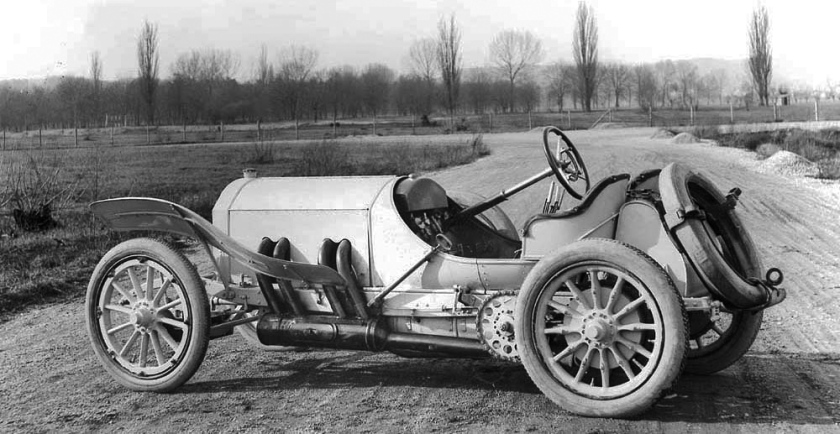 GP Mercedes 1908
GP Mercedes 1908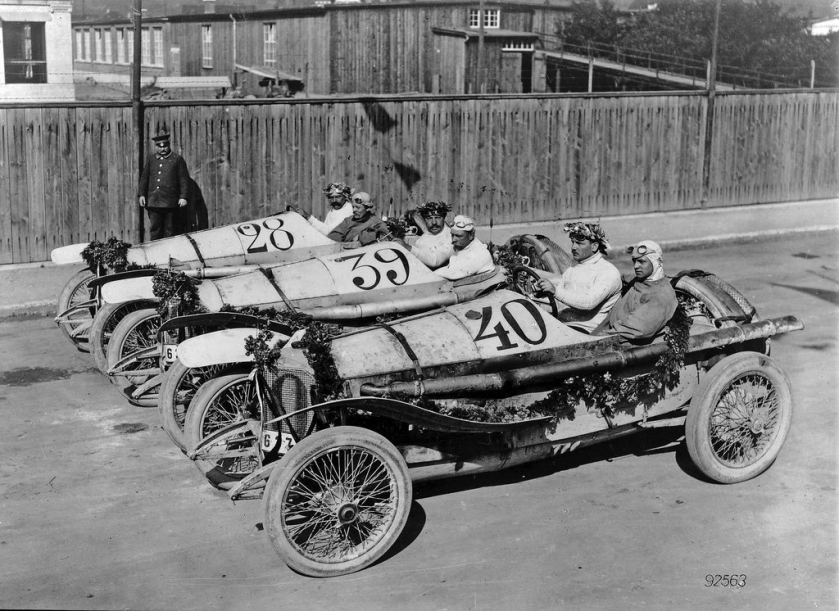
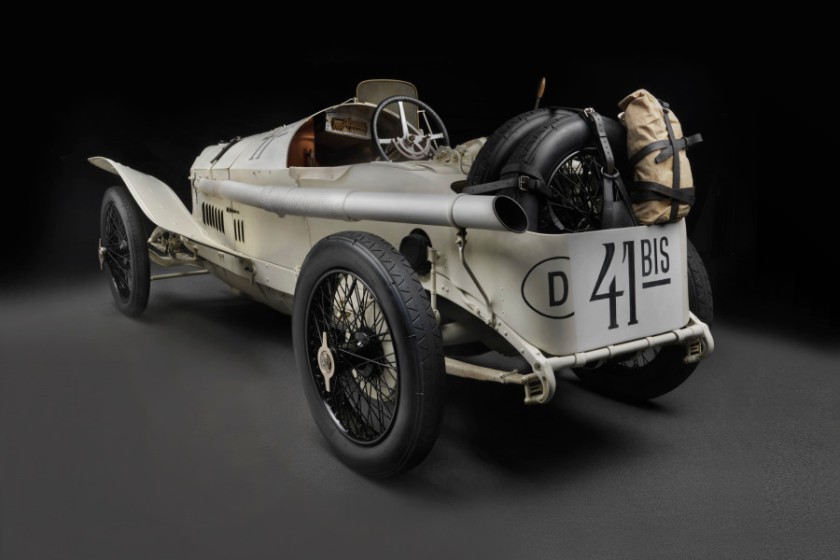 Mercedes Grand Prix Racing Car 1914
Mercedes Grand Prix Racing Car 1914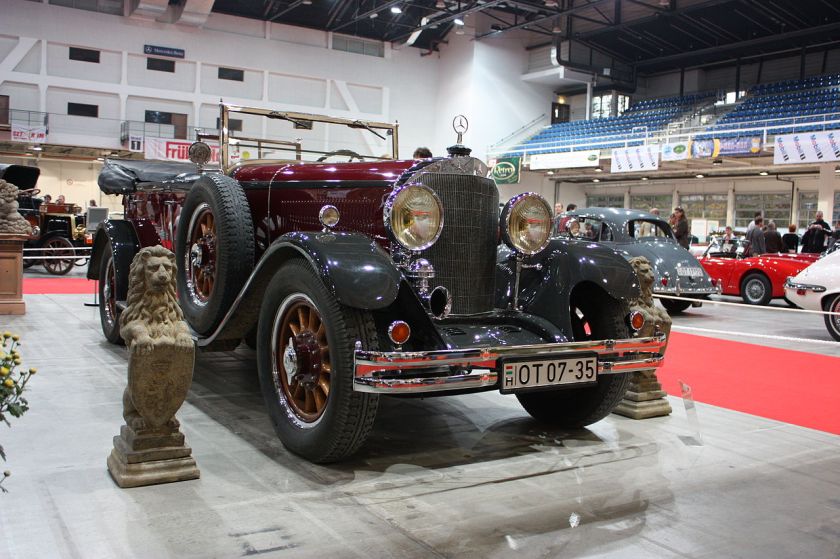 1921-24 Mercedes-Benz 15-70-100 PS Typ 400 Mercedes 15/70/100 PS, 1921-1924 (became Mercedes-Benz Typ 400 with merger)
1921-24 Mercedes-Benz 15-70-100 PS Typ 400 Mercedes 15/70/100 PS, 1921-1924 (became Mercedes-Benz Typ 400 with merger)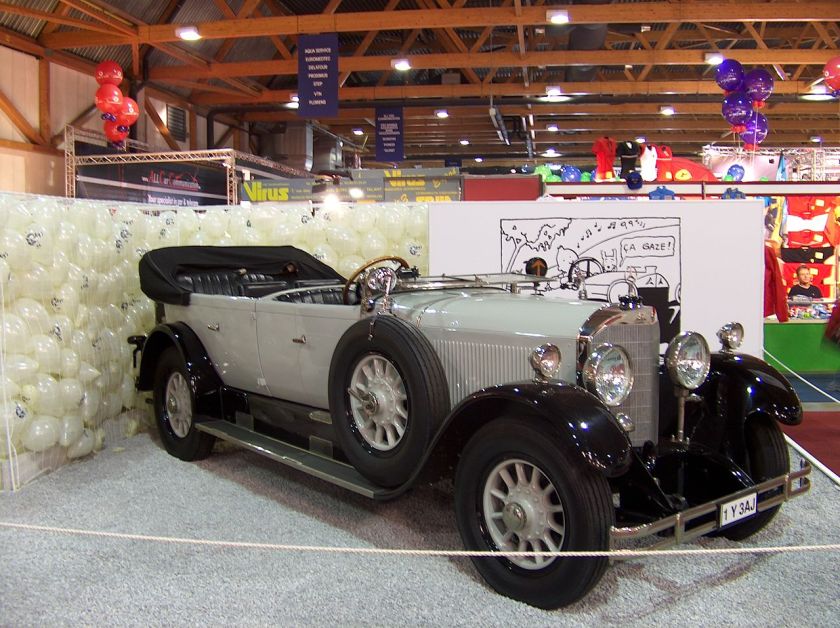 Mercedes 24/100/140 PS, 1924 – 1929 (became Mercedes-Benz Typ 630 with the merger) See also the related businesses: Austro-Daimler
Mercedes 24/100/140 PS, 1924 – 1929 (became Mercedes-Benz Typ 630 with the merger) See also the related businesses: Austro-Daimler -
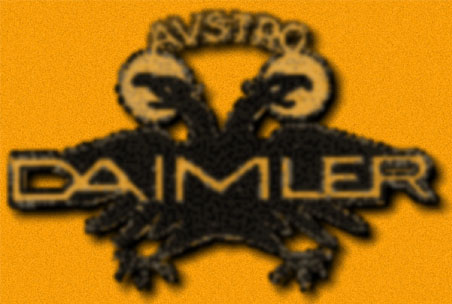
-
- USA Daimler and Steinway’s Daimler Motor Co.
- Daimler Company (Daimler Motor Company (1896))
Mercedes-Benz cars (1926-present)
In 1926 Daimler-Benz was formed from the merger of DMG and Benz
1926-1930
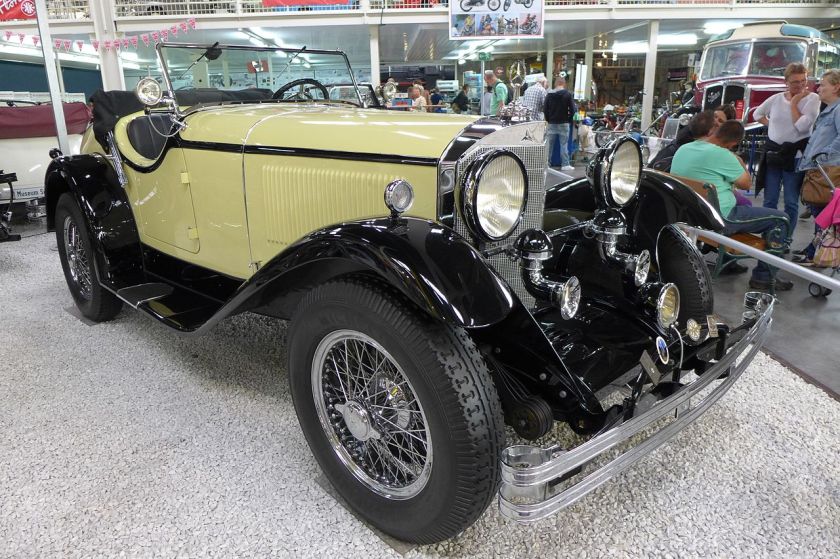 1927 Mercedes-Benz 400 K Tourer Sinsheim, a Daimler-Benz product
1927 Mercedes-Benz 400 K Tourer Sinsheim, a Daimler-Benz product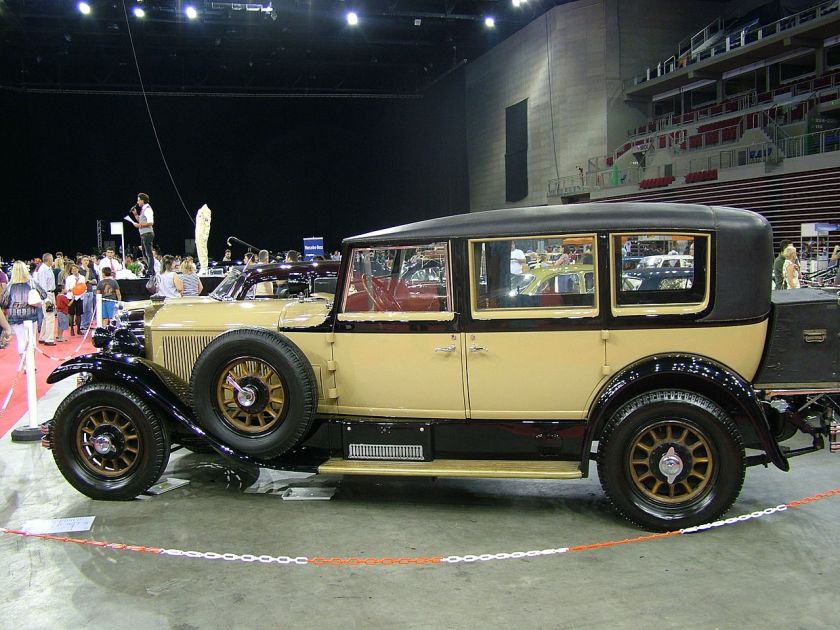 1927 Mercedes Benz 630K Mercedes-Benz 630 K (1926 – 1929)
1927 Mercedes Benz 630K Mercedes-Benz 630 K (1926 – 1929)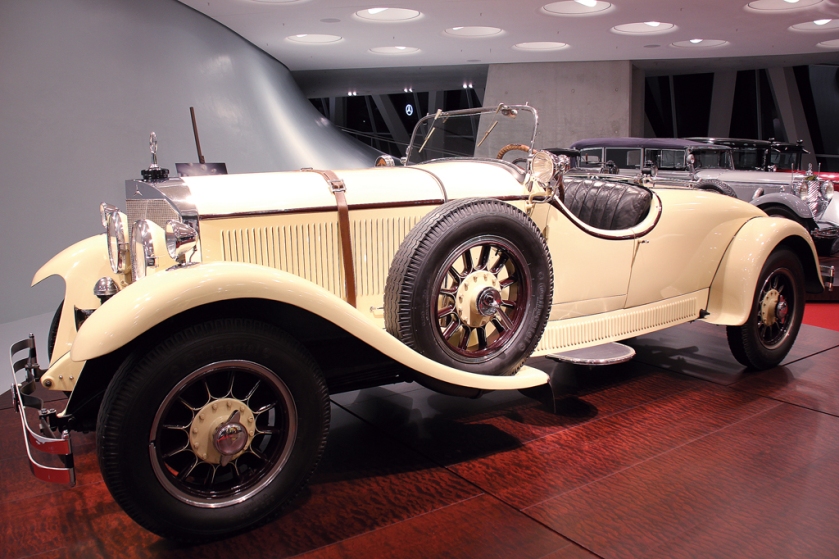 1926 Mercedes Benz 24-100-140 PS Roadster (This was the Mercedes 24/100/140 PS of DMG) Mercedes-Benz Model K
1926 Mercedes Benz 24-100-140 PS Roadster (This was the Mercedes 24/100/140 PS of DMG) Mercedes-Benz Model K
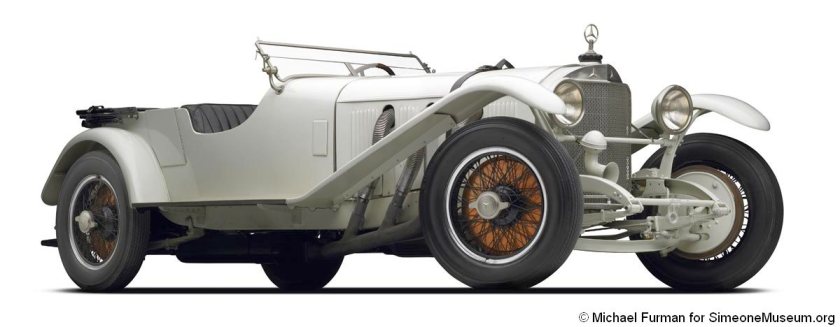
1927 mercedes benz S type 6cyl 6,78lt 180hp S-series, from 1927 with supercharged 6-cylinder engines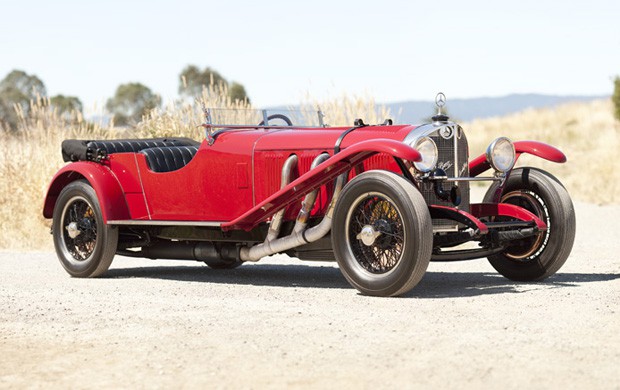 1927 Mercedes-Benz S-Type 26/180 Sportwagen S (Sport)
1927 Mercedes-Benz S-Type 26/180 Sportwagen S (Sport)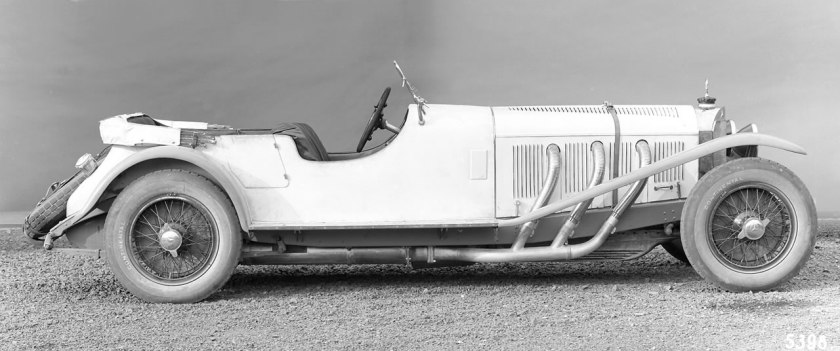 1927 26-170-225 hp Mercedes-Benz SS racing and touring sports car. SS (Super Sport)1928-32 Mercedes-Benz SSK model series W 06 II, SSK (Super Sport Kurz)
1927 26-170-225 hp Mercedes-Benz SS racing and touring sports car. SS (Super Sport)1928-32 Mercedes-Benz SSK model series W 06 II, SSK (Super Sport Kurz) 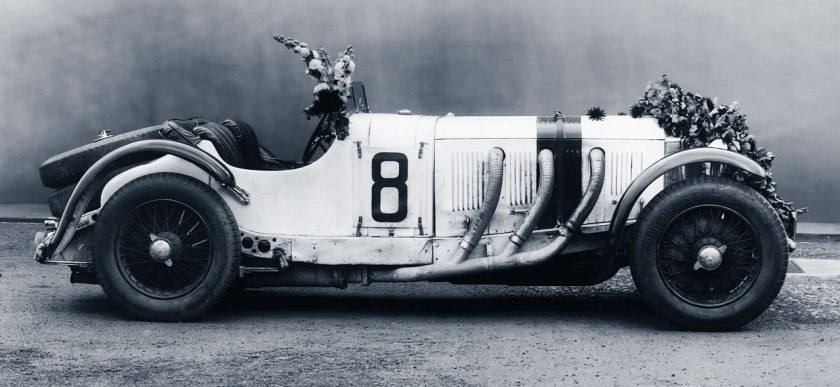 1927 Mercedes Benz SSKL (Super Sport Kurz Leicht) SSKL (Super Sport Kurz Leicht)
1927 Mercedes Benz SSKL (Super Sport Kurz Leicht) SSKL (Super Sport Kurz Leicht)
- K (Kurz-short) 2532
- Supercharged Mercedes Benz’s 1920’s + 1930’s
- S 1927
- SSK 1928
- SS 1928
- 10/50 hp “Stuttgart” 1929
Mercedes-Benz Three Wheeler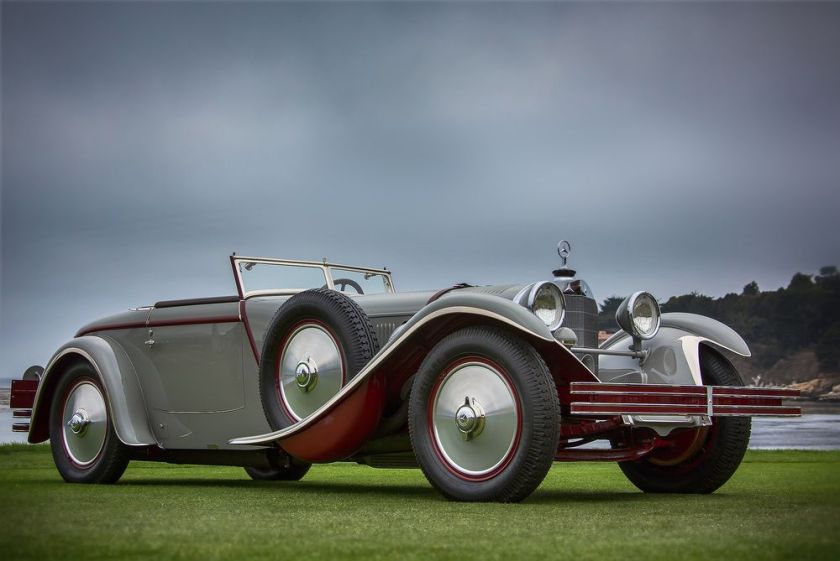 1928 Mercedes-Benz 680S Saoutchik Torpedo
1928 Mercedes-Benz 680S Saoutchik Torpedo
1930s
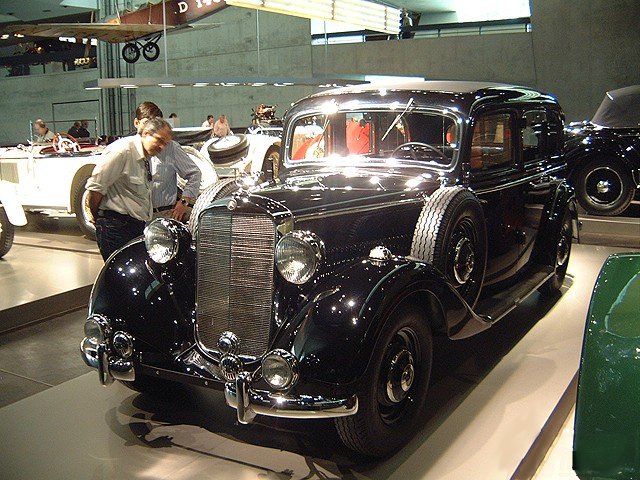 Mercedes-Benz 260D in museum in Stuttgart
Mercedes-Benz 260D in museum in Stuttgart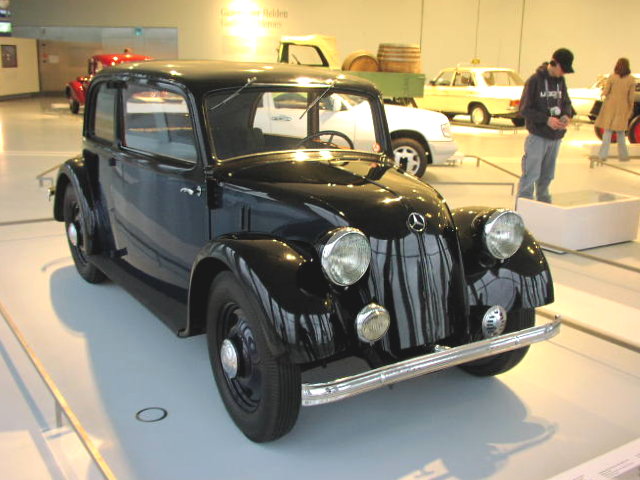 Mercedes Benz 130 W23 (1935)
Mercedes Benz 130 W23 (1935)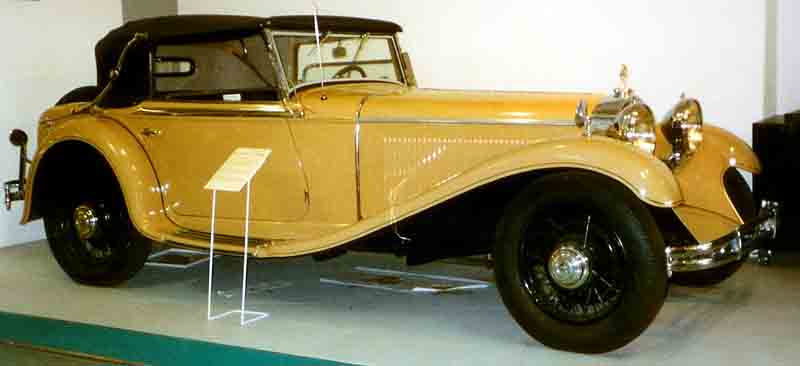 1931 Mercedes Benz Mannheim 370 S Sport-Cabriolet Mercedes Benz Mannheim 350/370 (W10) 1929-1934
1931 Mercedes Benz Mannheim 370 S Sport-Cabriolet Mercedes Benz Mannheim 350/370 (W10) 1929-1934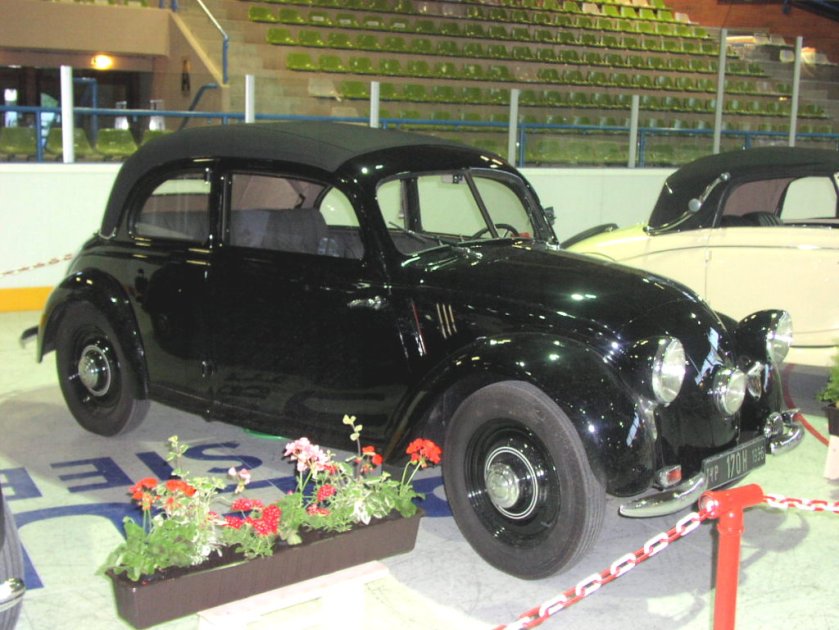 1936 Mercedes Benz 170 W28 H 170 Saloon 1931-1932
1936 Mercedes Benz 170 W28 H 170 Saloon 1931-1932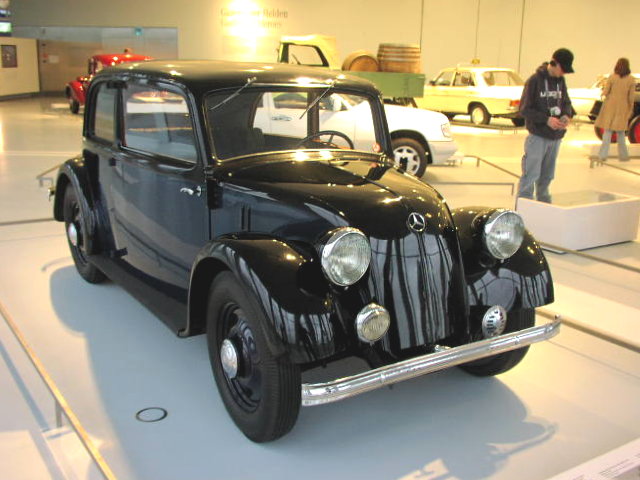 130H W23 1934
130H W23 1934
- 770 (Grosser) 1930-1943 in two series:
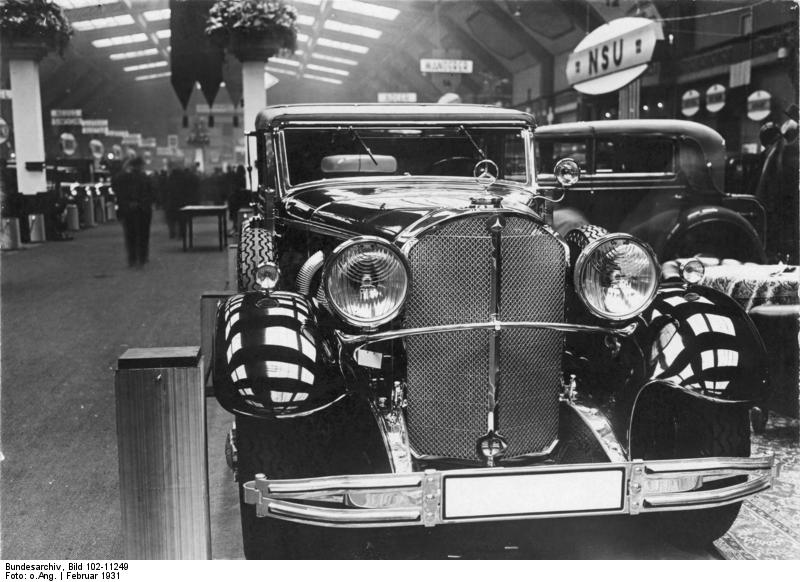
Die Eröffnung der grossen Automobilausstellung in den Ausstellungshallen am Kaiserdamm in Berlin! Der Tauerste Luxuswagen Deutschland, ein Mecedes-Limousine, welche 46.000,– Mark kostet. 1930-1938 Mercedes Benz 770 (W07) on display at the 1931 Berlin Motor Show
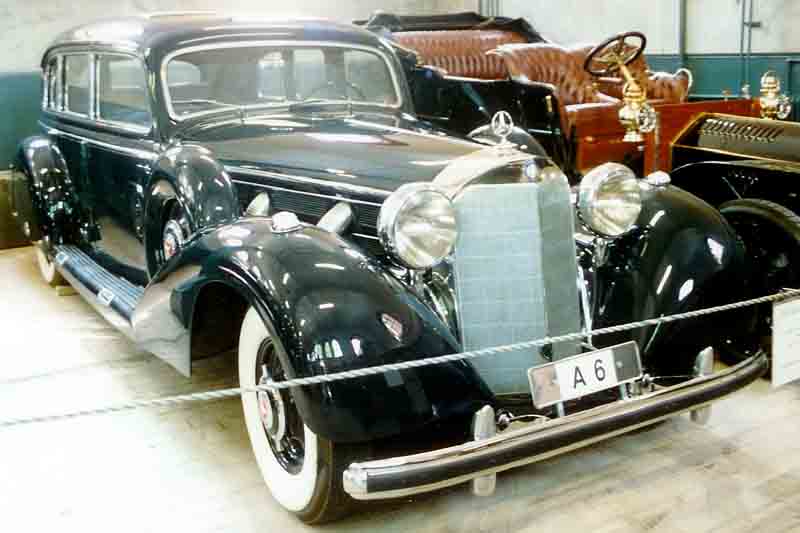 Mercedes-Benz W07-W150 or 770 Pullman-Limousine W150 1938-1943
Mercedes-Benz W07-W150 or 770 Pullman-Limousine W150 1938-1943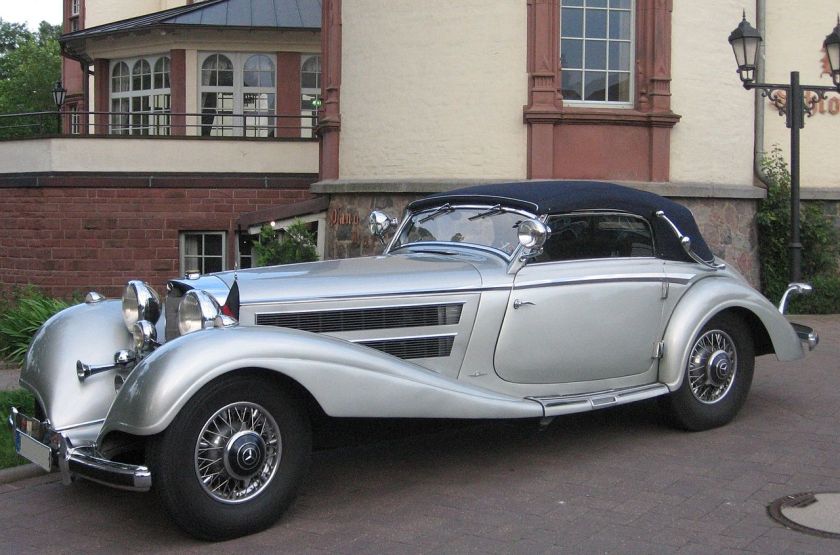 1934-36 Mercedes 500K (type W29) Cabriolet is a grand touring car
1934-36 Mercedes 500K (type W29) Cabriolet is a grand touring car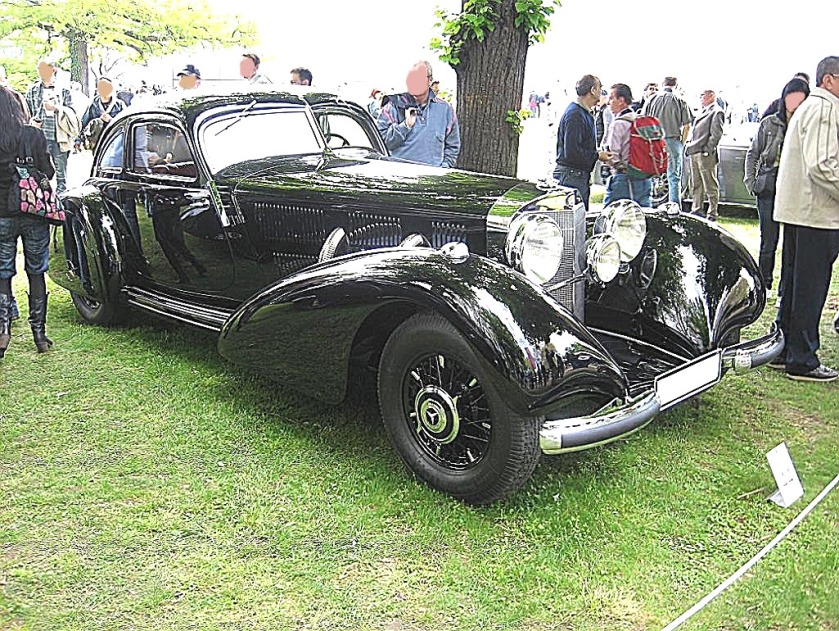 1939 Mercedes Benz 540K-Autobahnkurier 540K 1936-1943
1939 Mercedes Benz 540K-Autobahnkurier 540K 1936-1943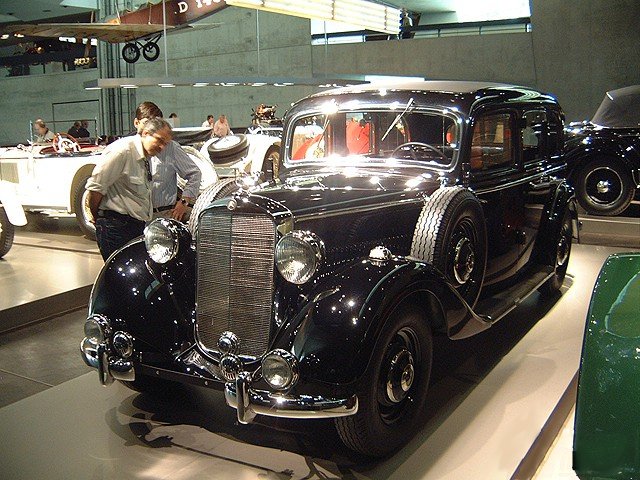 1938 Mercedes benz 260D 1936-1940
1938 Mercedes benz 260D 1936-1940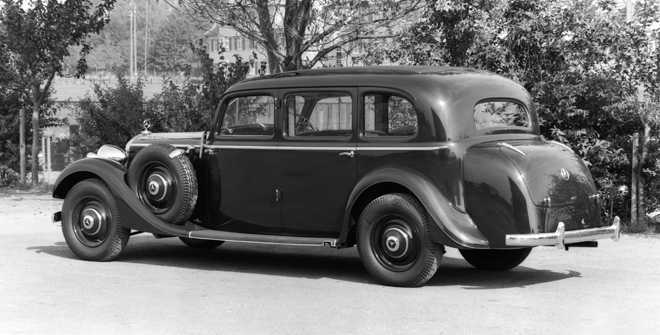 1937 Mercedes-Benz 320 (W 142) Saloon was a modern luxury-class touring car.
1937 Mercedes-Benz 320 (W 142) Saloon was a modern luxury-class touring car.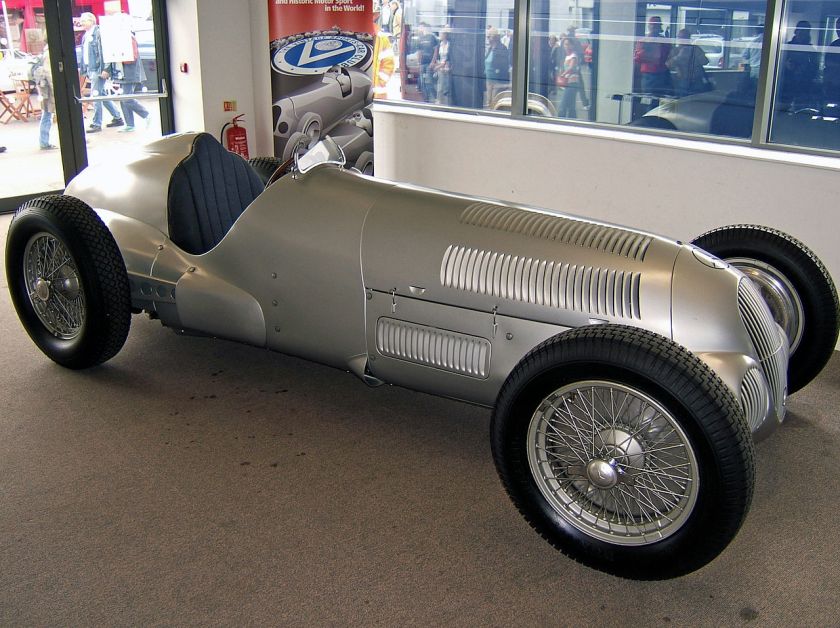 1937 Mercedes Benz W 125 Donington W125 1937
1937 Mercedes Benz W 125 Donington W125 1937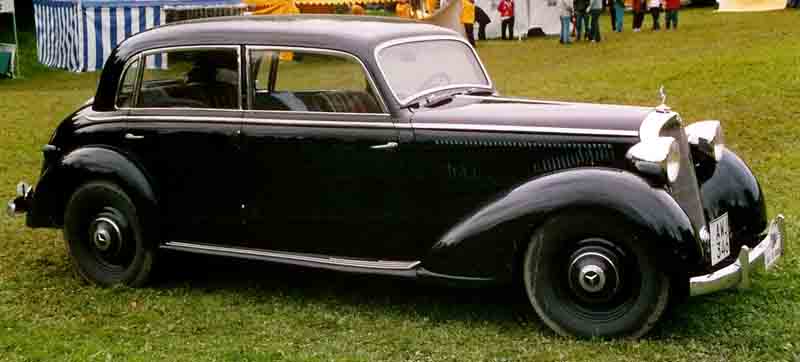 1939 Mercedes Benz 230 Limousine 230 1938
1939 Mercedes Benz 230 Limousine 230 1938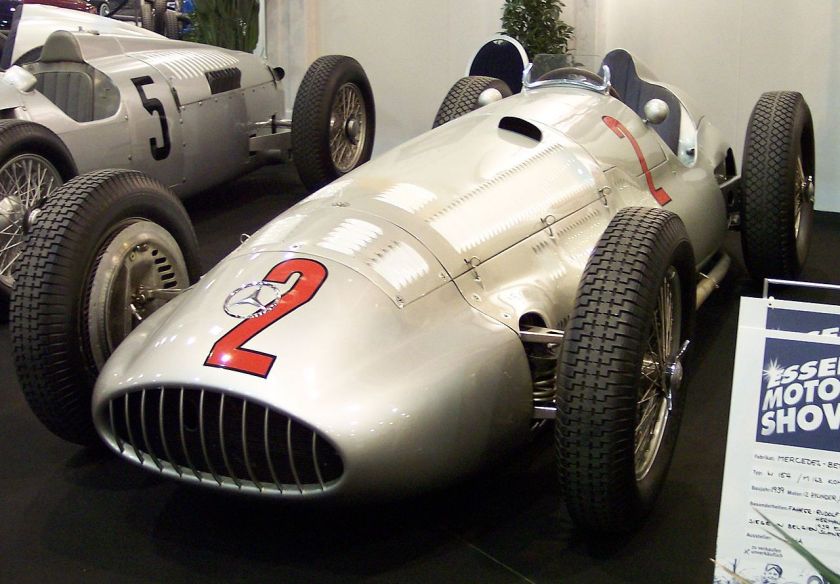 Mercedes Benz W154, W163 1938, 1939
Mercedes Benz W154, W163 1938, 1939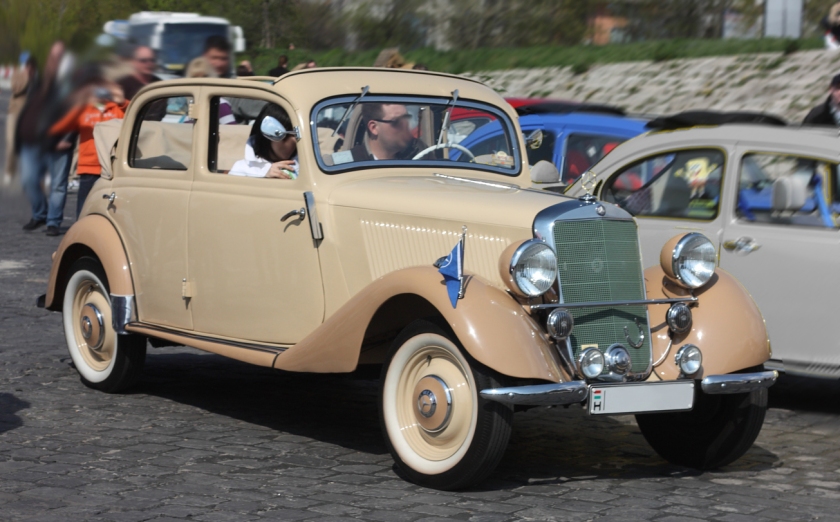 Mercedes-Benz W136 (170 V)
Mercedes-Benz W136 (170 V)1935–1942 75,006 units 1947–1955 83,190 units
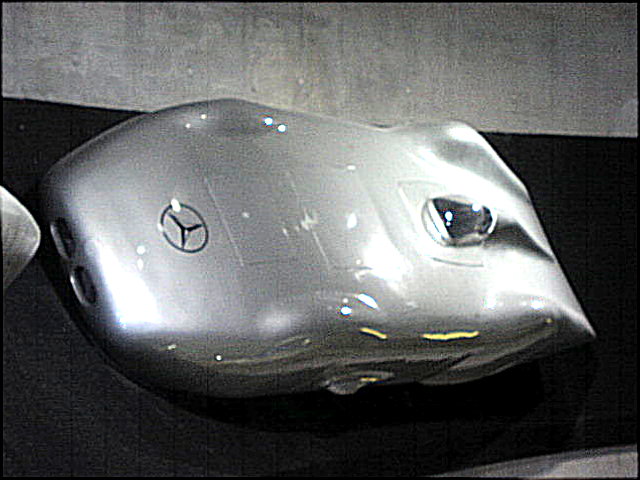
 Mercedes-Benz W125 Rekordwagen – 1938
Mercedes-Benz W125 Rekordwagen – 1938 -
1939 Mercedes-Benz T80
Production disrupted from WWII from 1939-1945, and restarted by late 1940s
1940s
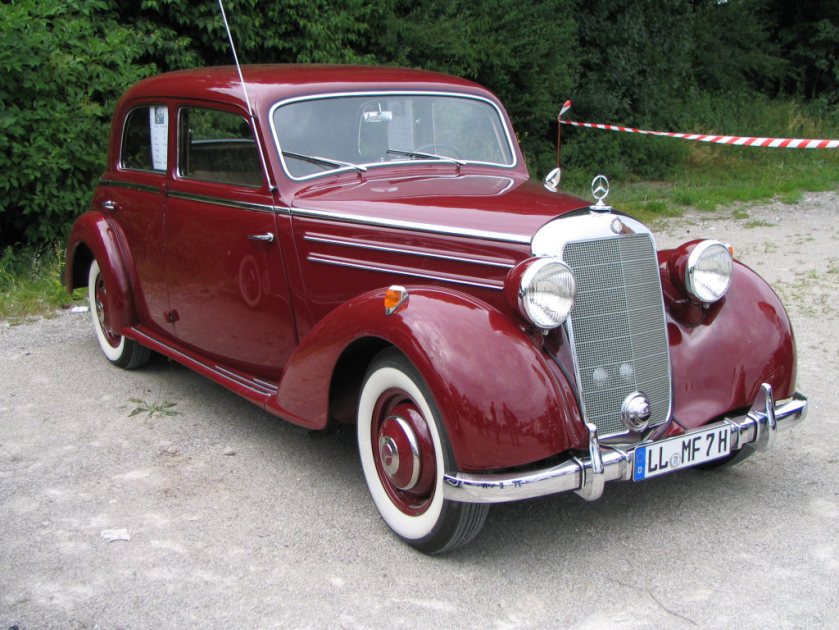 Mercedes-Benz W136 1947–1955
Mercedes-Benz W136 1947–1955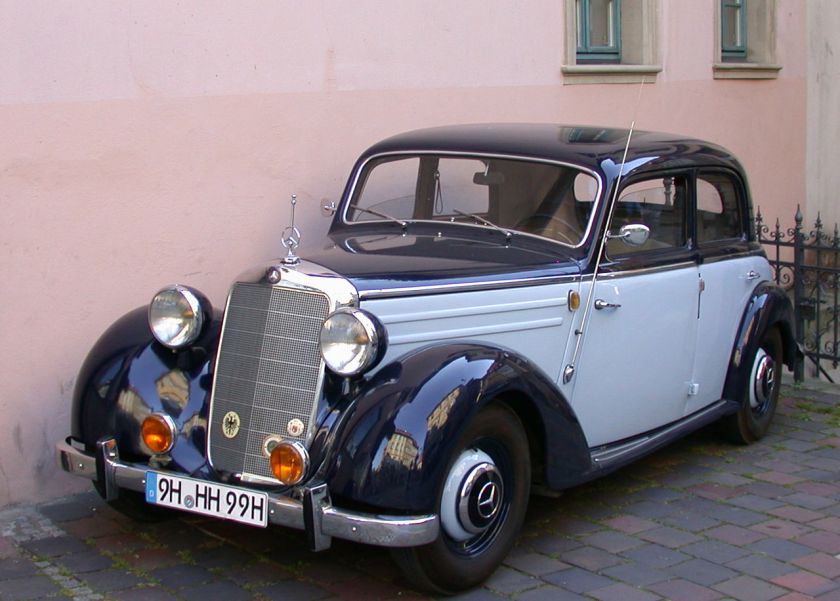 Mercedes Benz 170S (W191) 1949-1955
Mercedes Benz 170S (W191) 1949-1955
1950s
4 Cylinder
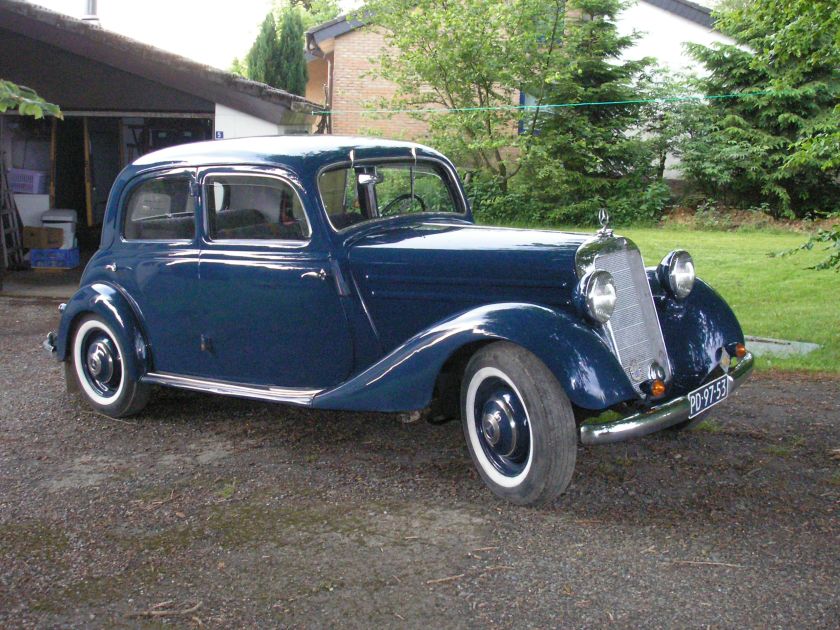 Mercedes-Benz W136 1947–1955
Mercedes-Benz W136 1947–1955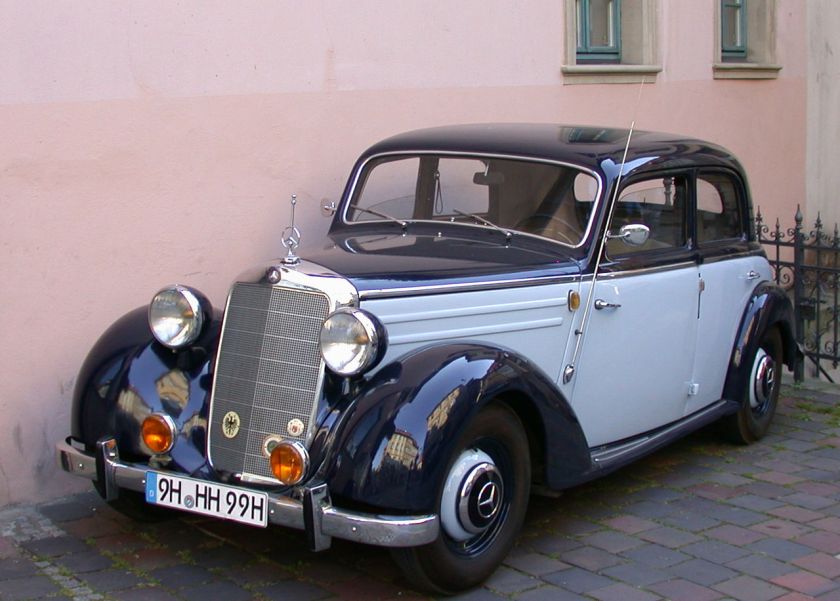 Mercedes Benz 170S (W191) 1949-1955
Mercedes Benz 170S (W191) 1949-1955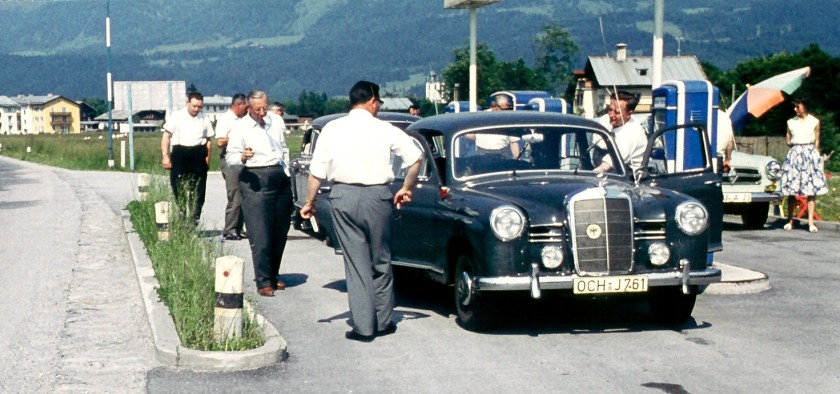 Mercedes Benz 120 180/180D (W120) 190/190D (W121) 1953-1962
Mercedes Benz 120 180/180D (W120) 190/190D (W121) 1953-1962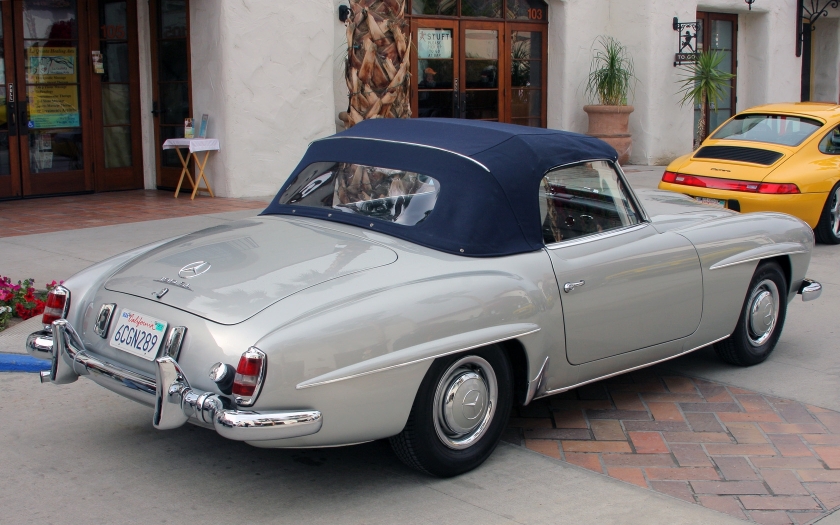 Mercedes Benz 190SL (W121) 1955-1963
Mercedes Benz 190SL (W121) 1955-1963
6 Cylinder
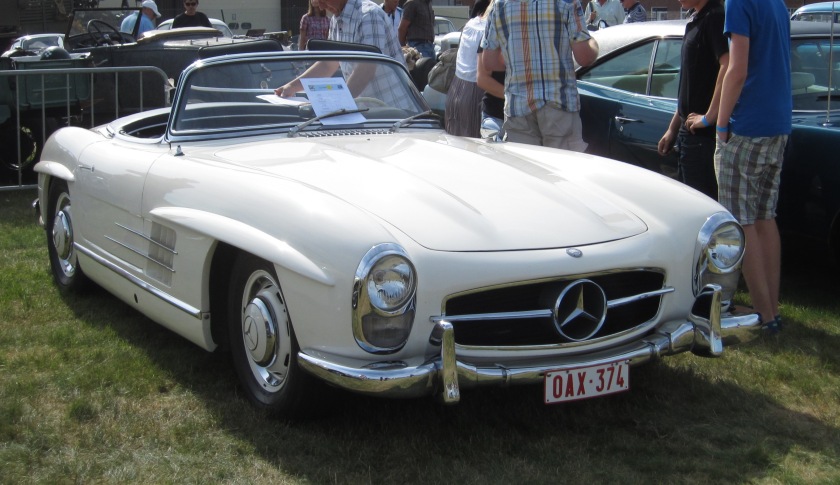 1960 Mercedes Benz 300SL Roadster (W198 II)
1960 Mercedes Benz 300SL Roadster (W198 II)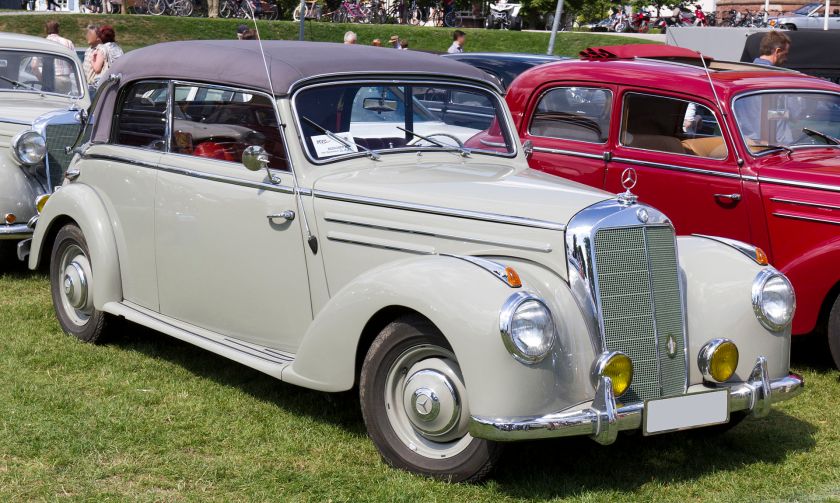 Mercedes Benz 220 (W187) 1951-1955
Mercedes Benz 220 (W187) 1951-1955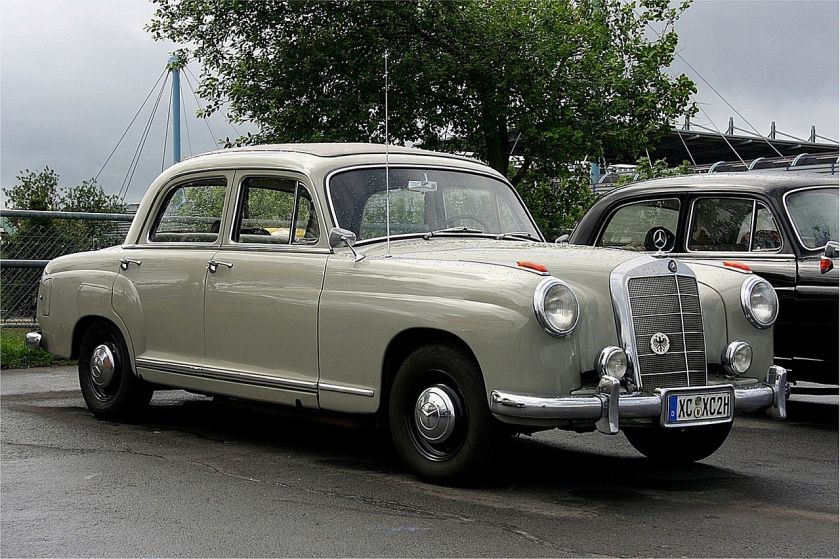 Mercedes Benz 219 (W219) 1956-1959
Mercedes Benz 219 (W219) 1956-1959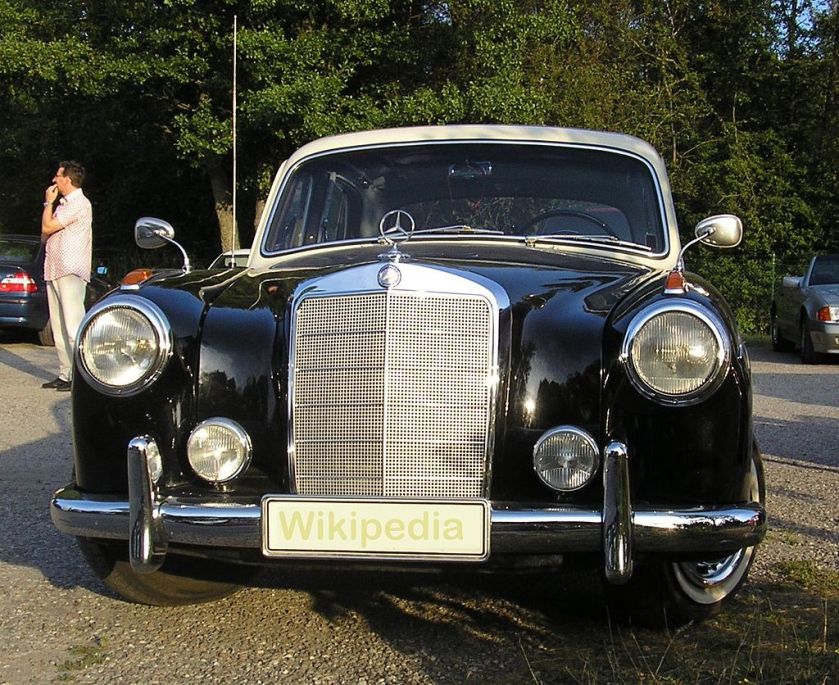 1958 Mercedes Benz 220a/220S (W180) 1954-1959
1958 Mercedes Benz 220a/220S (W180) 1954-1959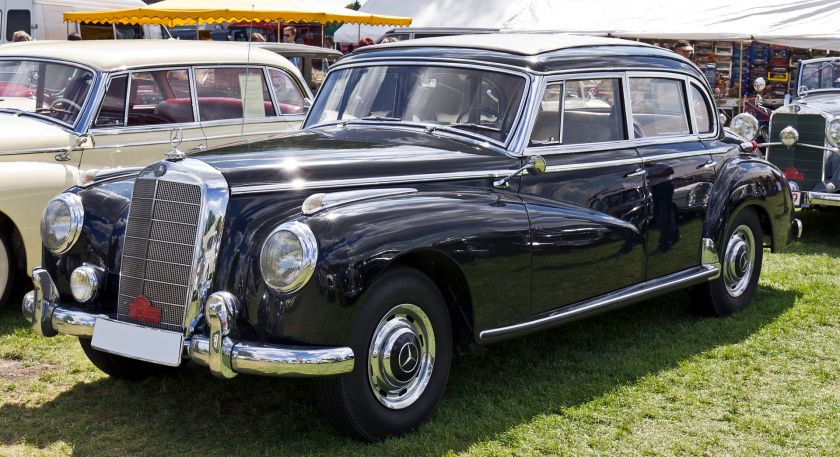 Mercedes Benz Limousine 300/300S (W186 W189 W188) 1951-1962
Mercedes Benz Limousine 300/300S (W186 W189 W188) 1951-1962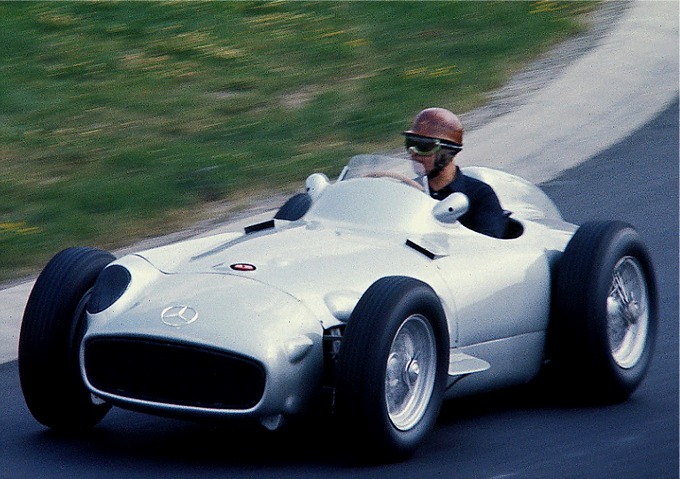 Mercedes Benz W196 (W196) GP 1954
Mercedes Benz W196 (W196) GP 1954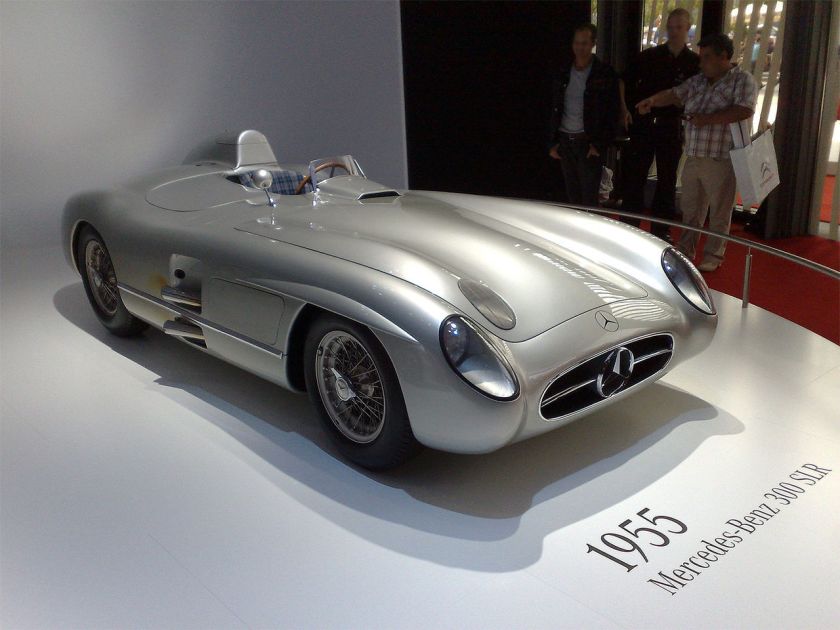 Mercedes Benz 300SLR (W196S) 1955
Mercedes Benz 300SLR (W196S) 1955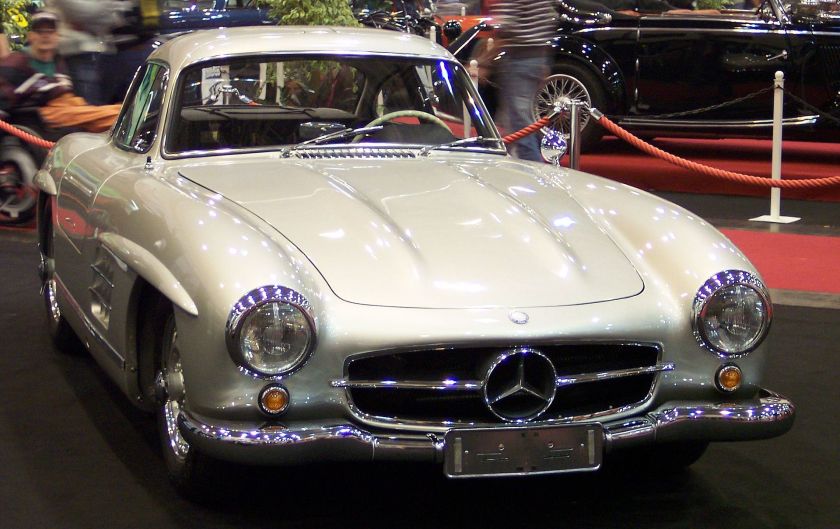 Mercedes Benz 300SL (W198) 1954-1963 in two series:
Mercedes Benz 300SL (W198) 1954-1963 in two series:
- Gullwing Coupe 1954-1957
- Roadster 1958-1963
1960s
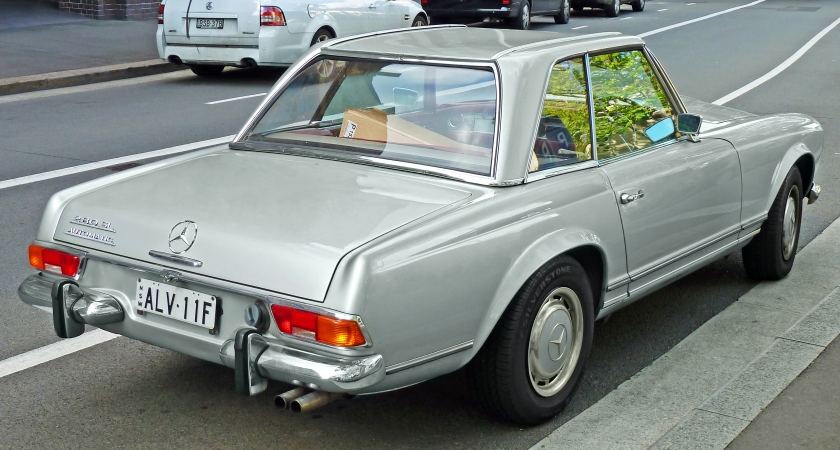 1969 Mercedes-Benz 280 SL
1969 Mercedes-Benz 280 SL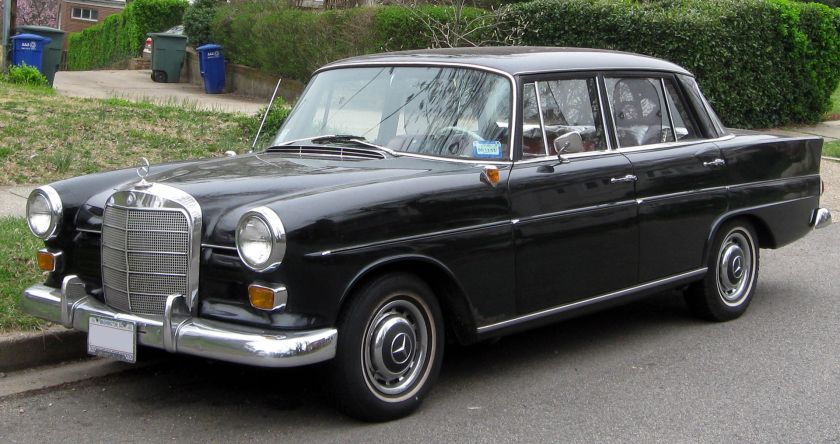 1965 Mercedes Benz 190c Sedan 1962-1965
1965 Mercedes Benz 190c Sedan 1962-1965
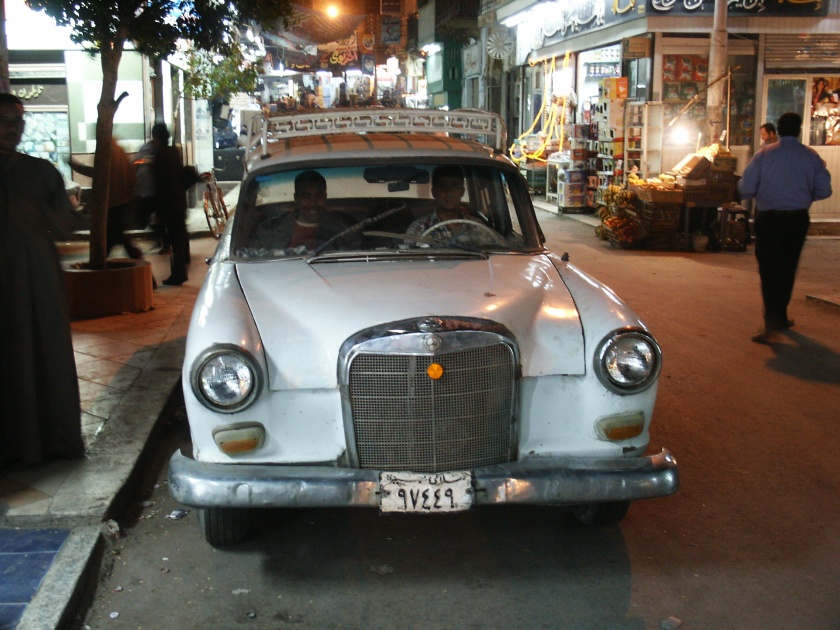
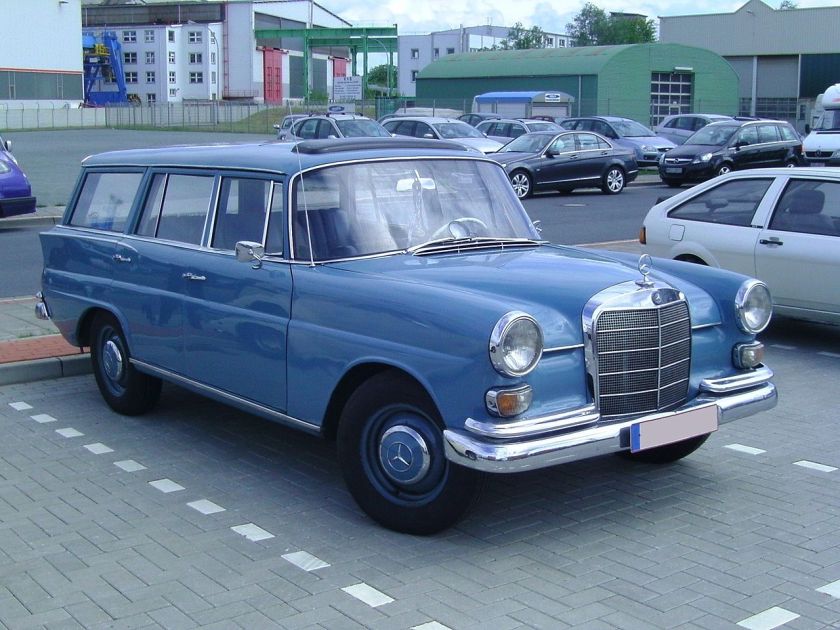 Mercedes Benz 200 W 110 kombi 1966-1968
Mercedes Benz 200 W 110 kombi 1966-1968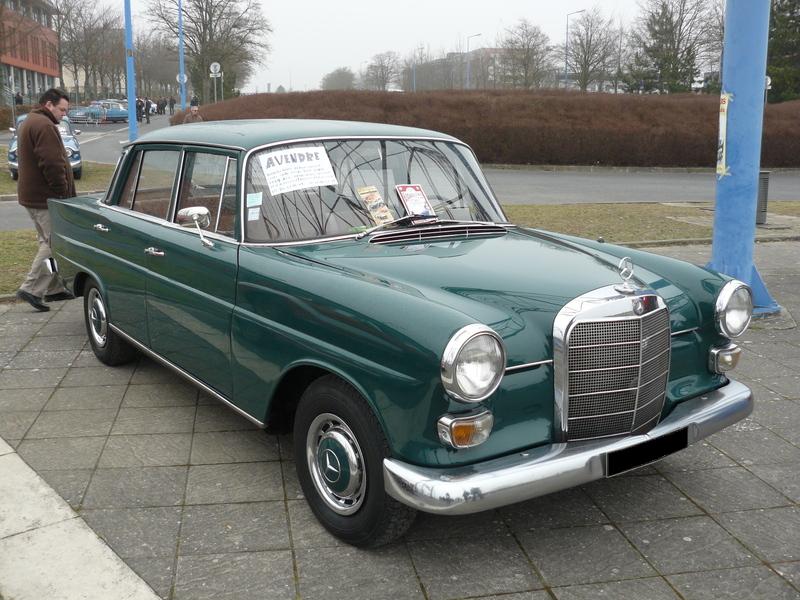 Mercedes Benz 200D 1966-1967
Mercedes Benz 200D 1966-1967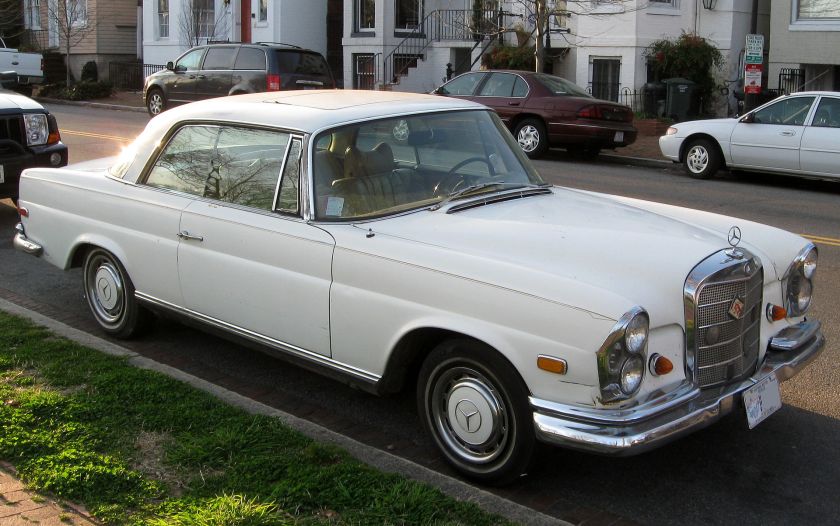 Mercedes-Benz W111/220SE 1960-1966
Mercedes-Benz W111/220SE 1960-1966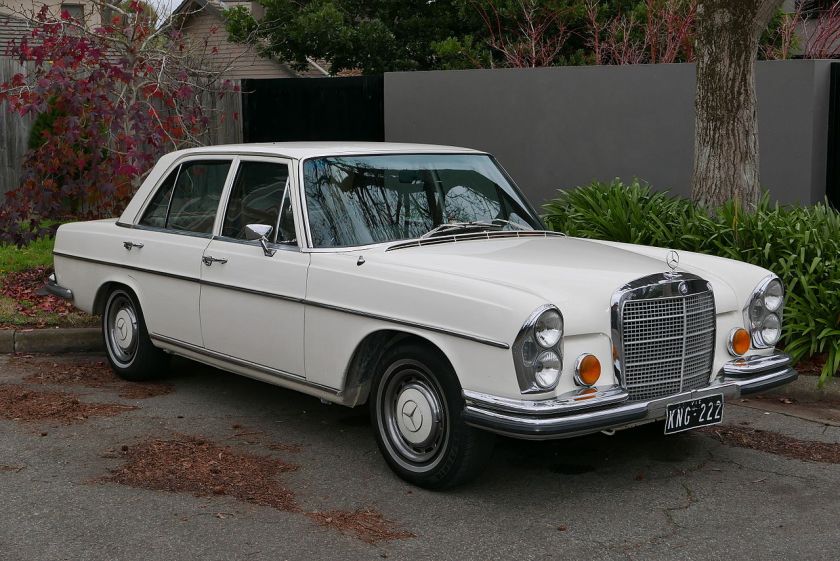 Mercedes Benz 250S, 250SE 300SE 280S 280SE 280SEL(W108/W109) 1965-1972
Mercedes Benz 250S, 250SE 300SE 280S 280SE 280SEL(W108/W109) 1965-1972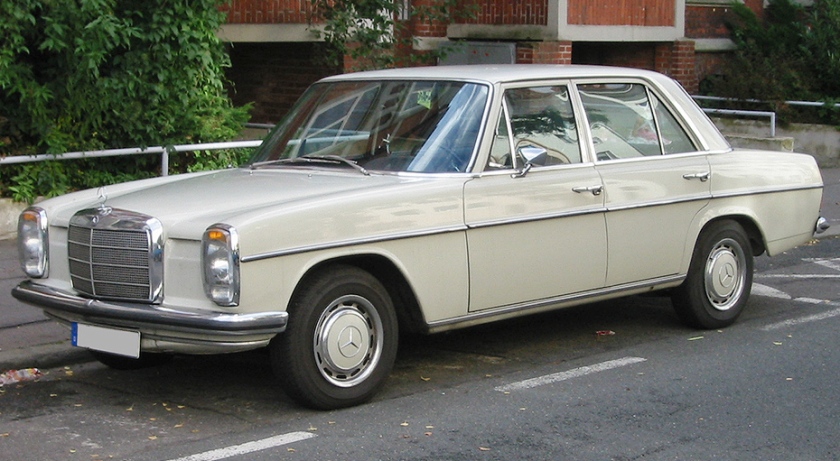 Mercedes Benz 230 1968-1972
Mercedes Benz 230 1968-1972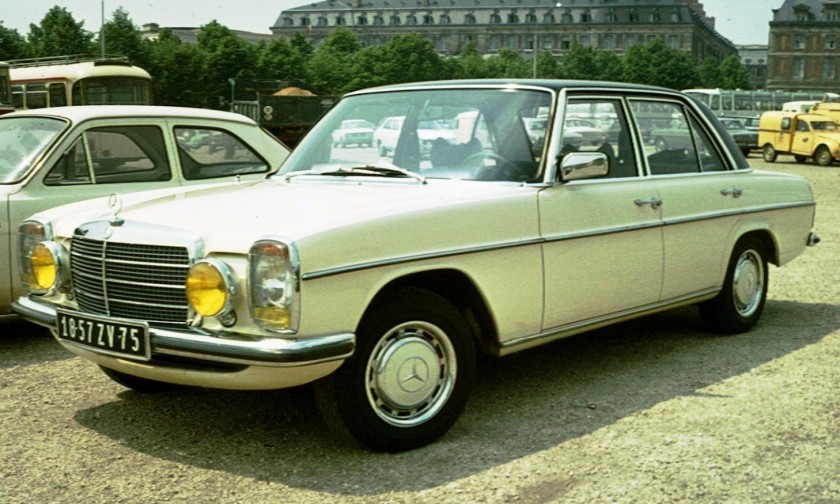 Mercedes Benz 250 Saloon 1968-1972
Mercedes Benz 250 Saloon 1968-1972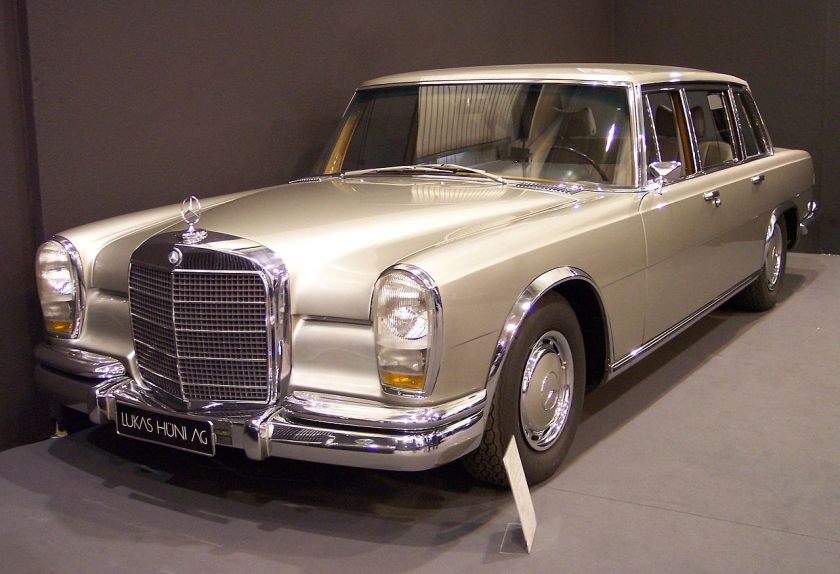 Mercedes Benz 600 (W100) 1963-1981
Mercedes Benz 600 (W100) 1963-1981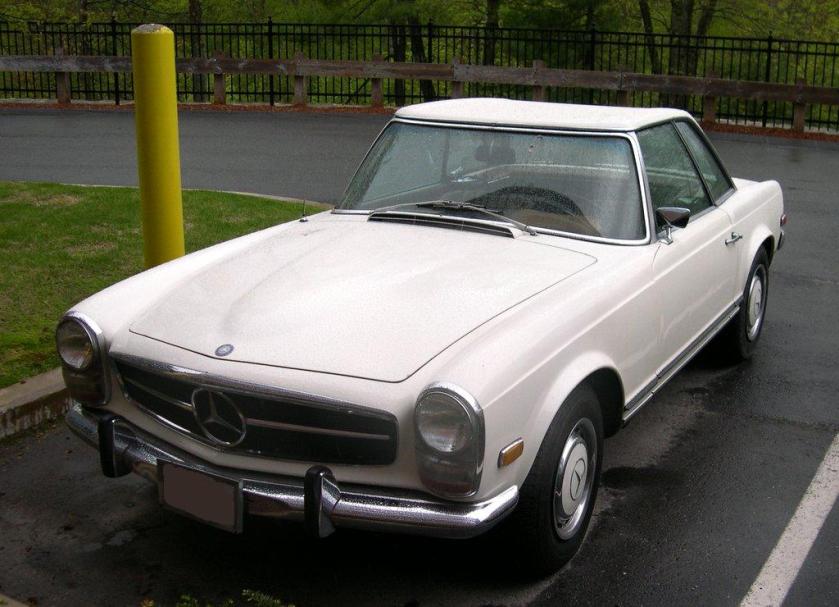 Mercedes Benz 230SL 250SL 280SL (W113) “Pagoda” 1963-1971
Mercedes Benz 230SL 250SL 280SL (W113) “Pagoda” 1963-1971
1970s
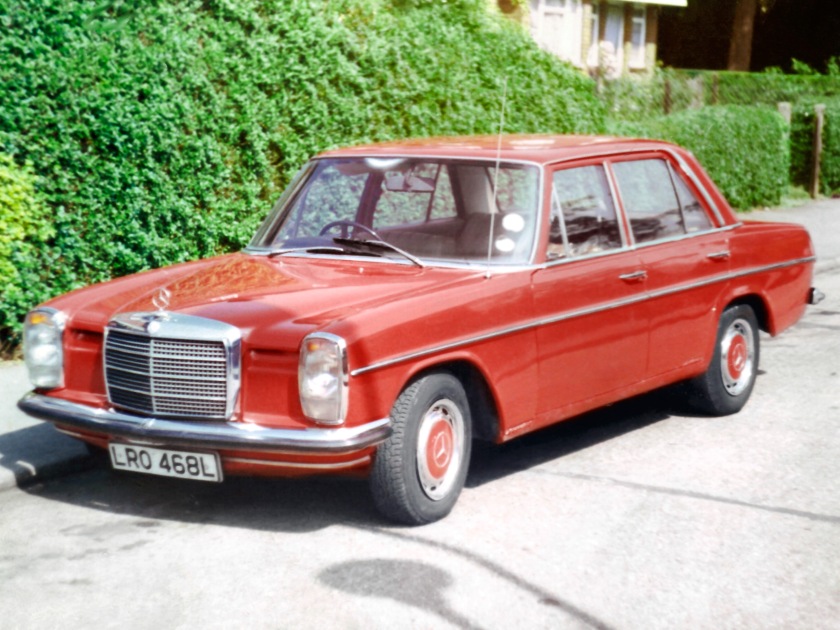 Pre-facelift Mercedes-Benz W115 220
Pre-facelift Mercedes-Benz W115 220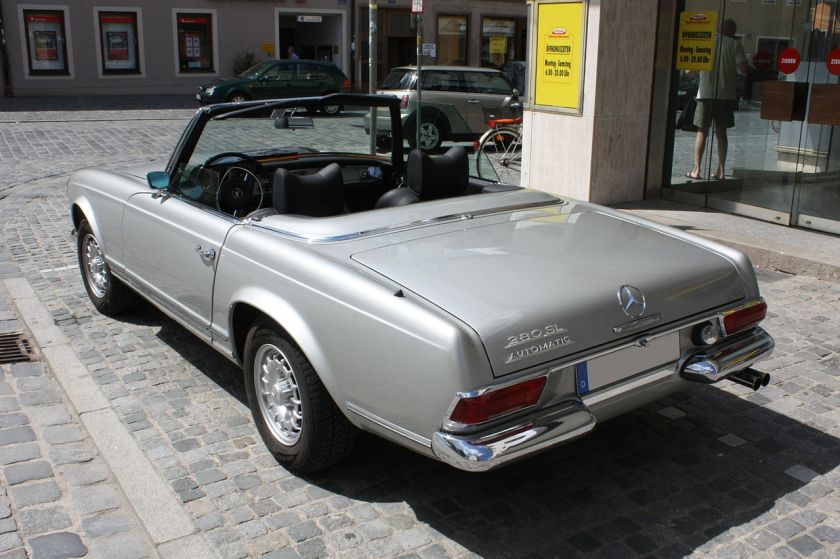 Mercedes Benz 280 (W114) 1972-1976
Mercedes Benz 280 (W114) 1972-1976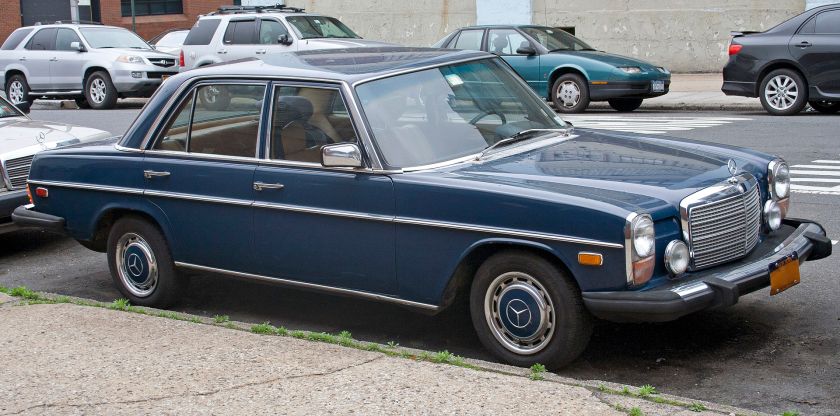 1975 Mercedes Benz 280C (W114) 1973-1976
1975 Mercedes Benz 280C (W114) 1973-1976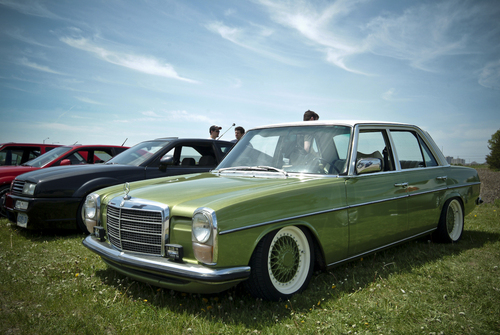 Mercedes Benz 300D (W114) 1975-1976
Mercedes Benz 300D (W114) 1975-1976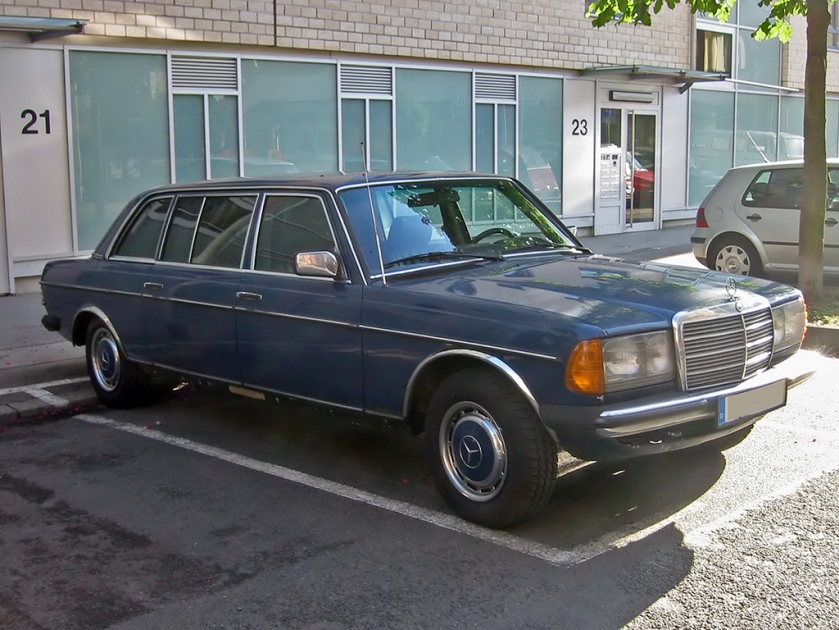 Mercedes Benz V123 Limo (Euro-spec) W123 1976-1985
Mercedes Benz V123 Limo (Euro-spec) W123 1976-1985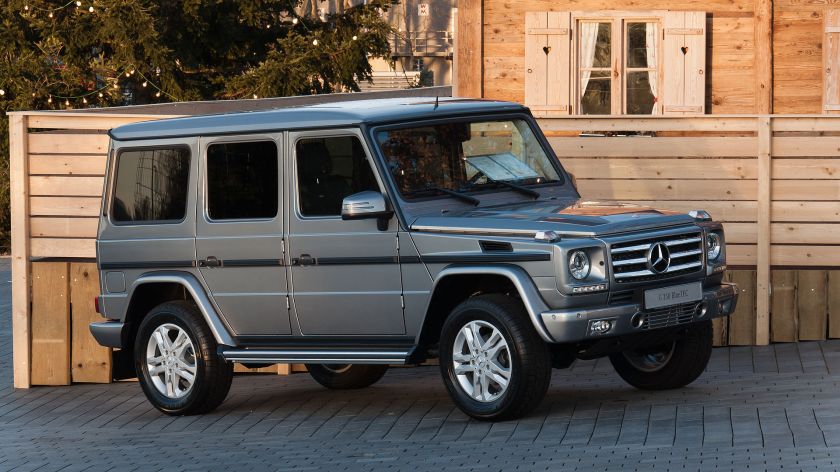 Mercedes Benz G 350 BlueTEC (W463) G-Class 1979-present
Mercedes Benz G 350 BlueTEC (W463) G-Class 1979-present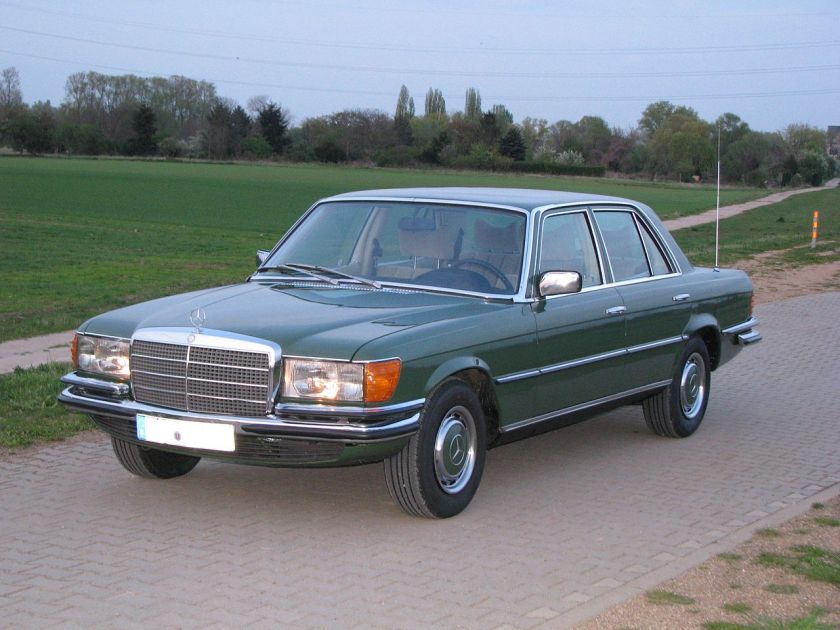 1978 Mercedes-Benz 280 SE (W116) S-Class W116 1972-1979
1978 Mercedes-Benz 280 SE (W116) S-Class W116 1972-1979 1957 Mercedes Benz 300 SL Roadster (W198) SL-Class 1957-
1957 Mercedes Benz 300 SL Roadster (W198) SL-Class 1957-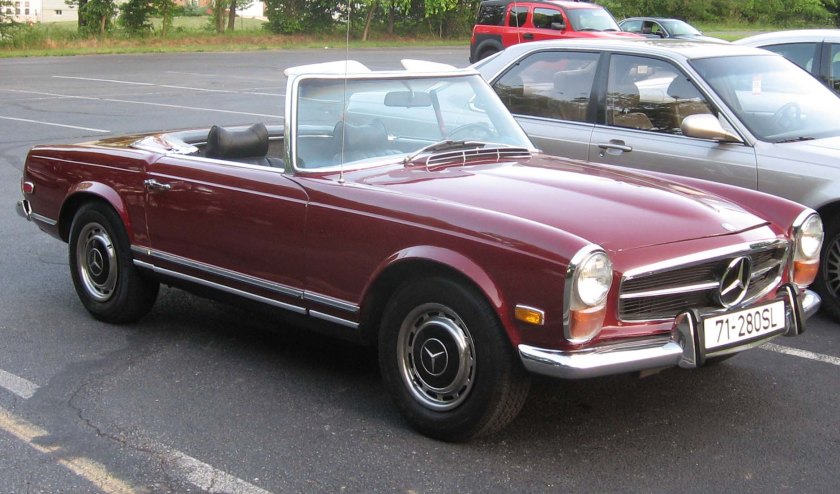 1971 Mercedes-Benz W113 W113 1963-1971
1971 Mercedes-Benz W113 W113 1963-1971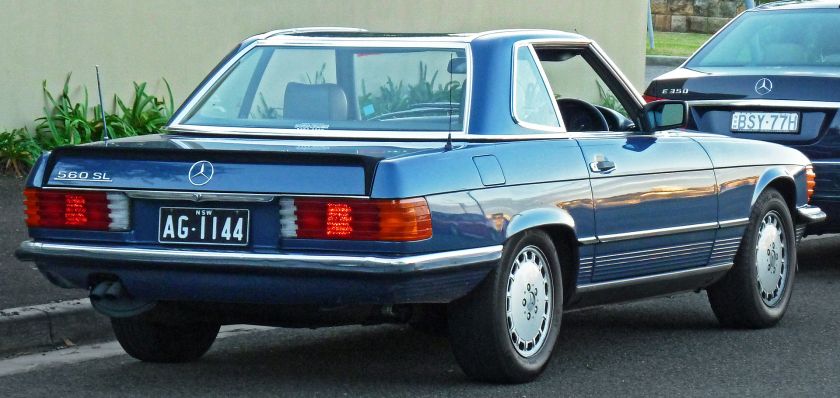 1987 Mercedes Benz 560 SL roadster (Australia) R107 1972-1989
1987 Mercedes Benz 560 SL roadster (Australia) R107 1972-1989
1980s
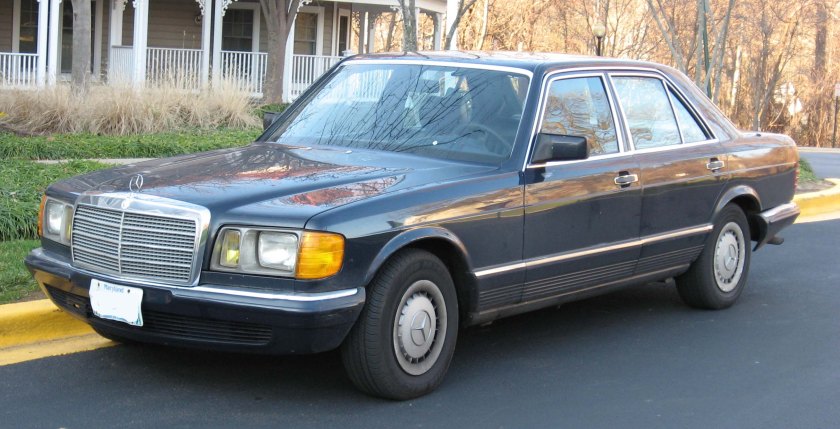 The 1980s marked a period of increasing demand in America, personified by thousands of Grey-market imported cars, such as this Mercedes-Benz 500 SE shown here
The 1980s marked a period of increasing demand in America, personified by thousands of Grey-market imported cars, such as this Mercedes-Benz 500 SE shown here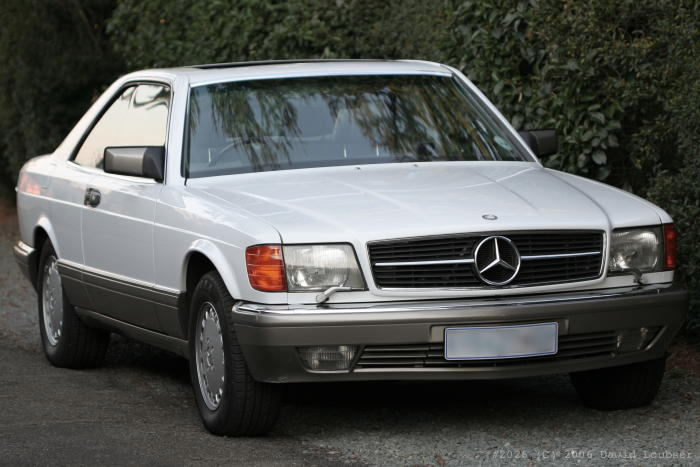 Mercedes Benz 560SEC
Mercedes Benz 560SEC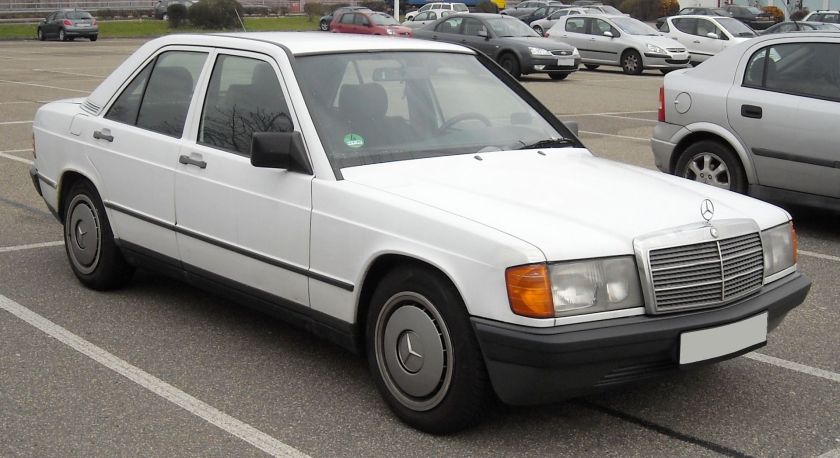 Mercedes Benz 190E W201 190 1982-1993
Mercedes Benz 190E W201 190 1982-1993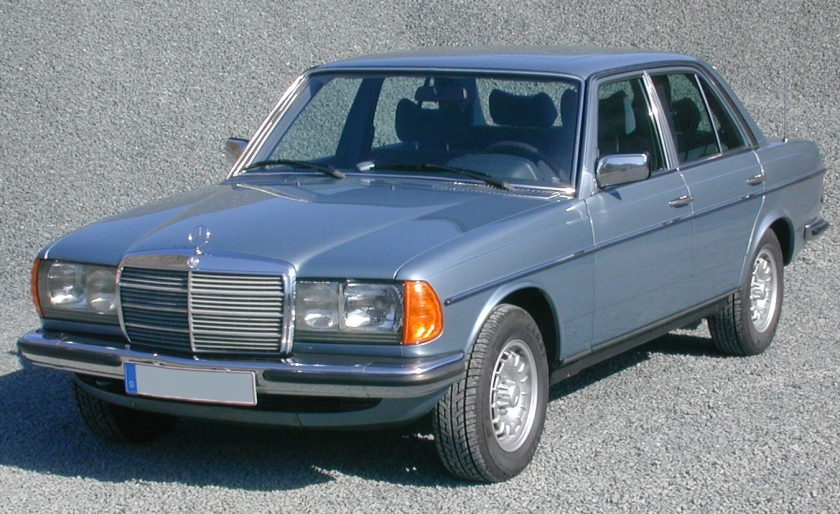 1977 Mercedes Benz 300D W123 300D 1977-1985
1977 Mercedes Benz 300D W123 300D 1977-1985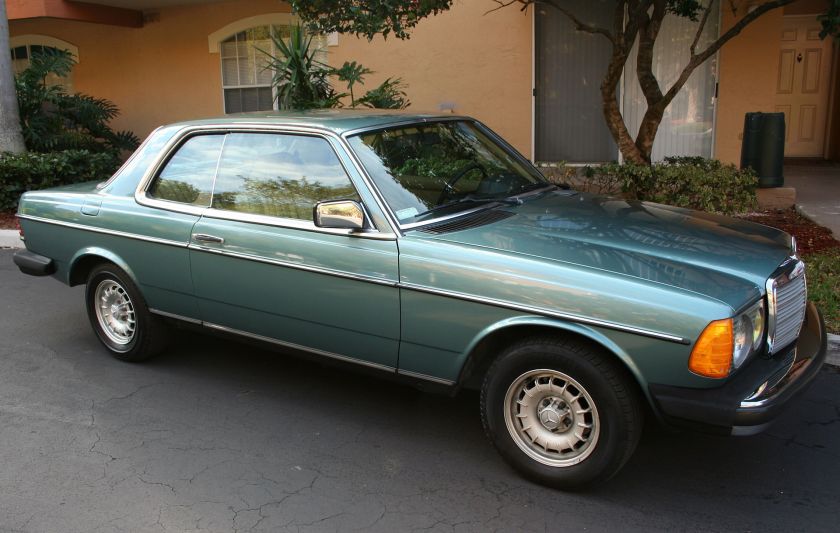 Mercedes Benz 300CD Turbodiesel coupe (US-version) 300CD 1978-1985
Mercedes Benz 300CD Turbodiesel coupe (US-version) 300CD 1978-1985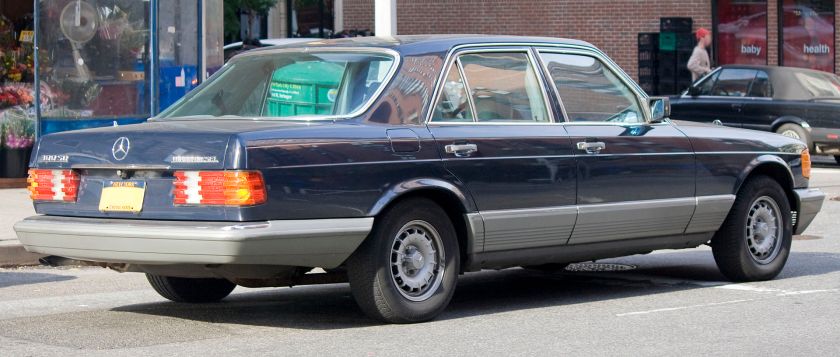 Mercedes Benz 300SD 1981-1985
Mercedes Benz 300SD 1981-1985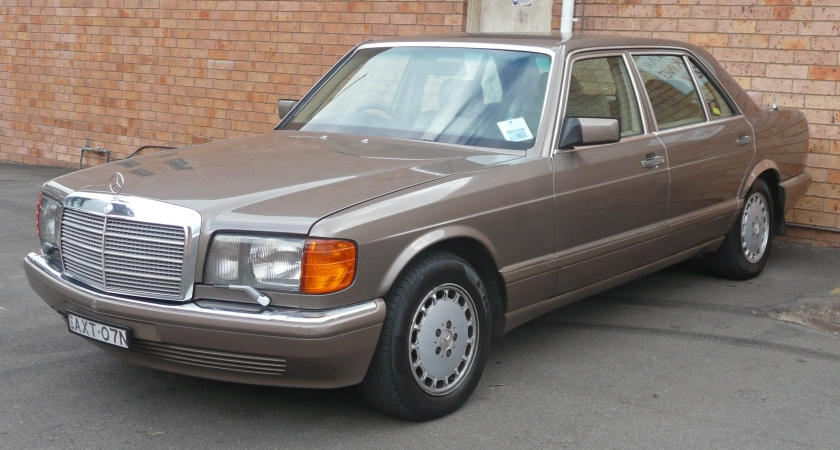 1987-92 Mercedes Benz 300 SEL (W126) sedan 300SEL 1987-1991
1987-92 Mercedes Benz 300 SEL (W126) sedan 300SEL 1987-1991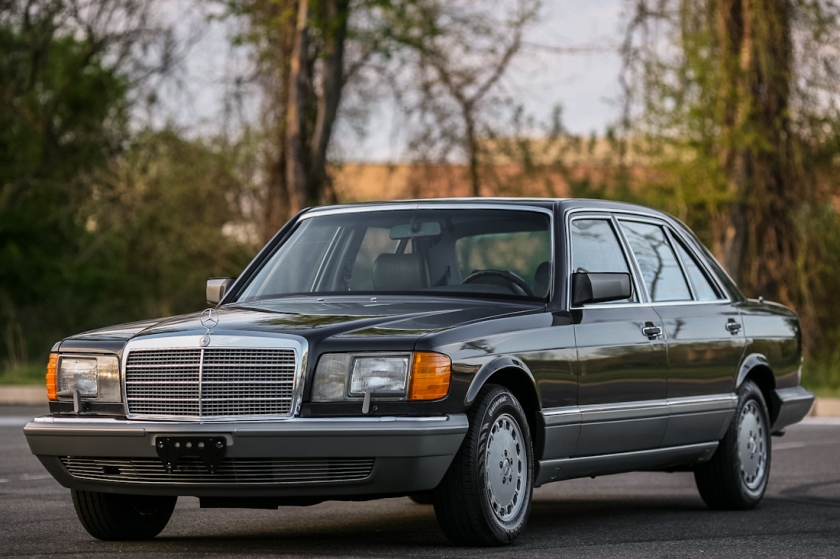 1987 Mercedes Benz 300SDL 300SDL 1986-1987
1987 Mercedes Benz 300SDL 300SDL 1986-1987 Mercedes Benz 300TD 1978-1985
Mercedes Benz 300TD 1978-1985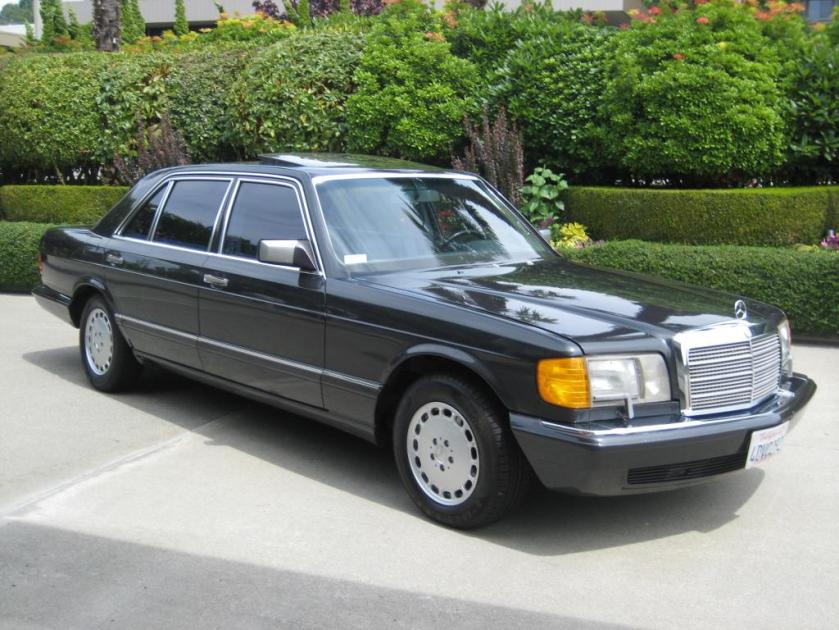 1990 Mercedes Benz 350SDL 1990-1991
1990 Mercedes Benz 350SDL 1990-1991
1990s
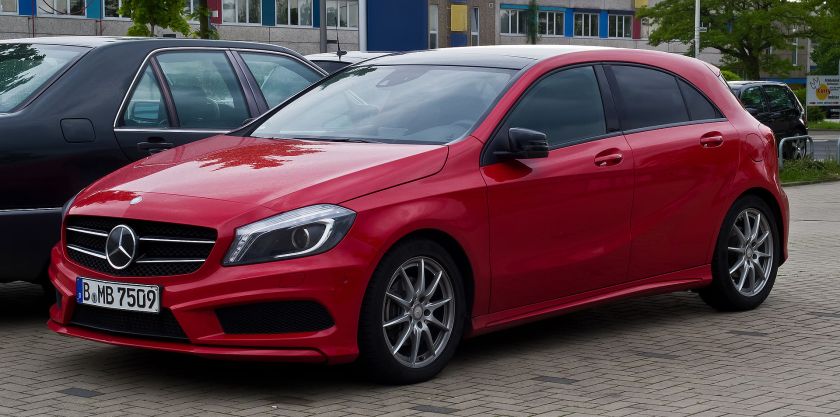 2013 Mercedes Benz A 200 Sport AMG Line (W176).jpg A-Class 1997-
2013 Mercedes Benz A 200 Sport AMG Line (W176).jpg A-Class 1997-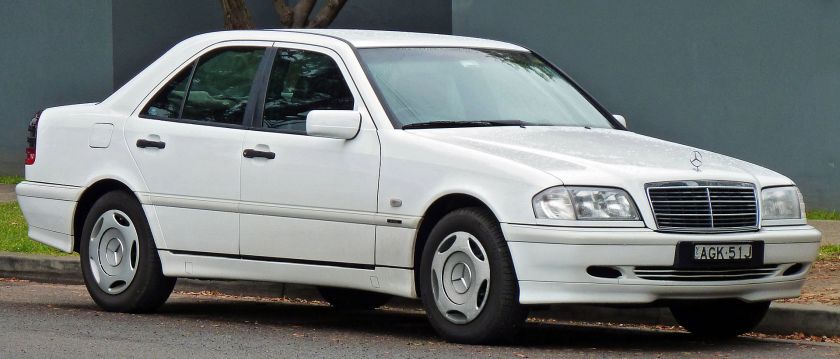 1997-00 Mercedes Benz C 200 (W202) Classic sedan C-Class 1993-
1997-00 Mercedes Benz C 200 (W202) Classic sedan C-Class 1993-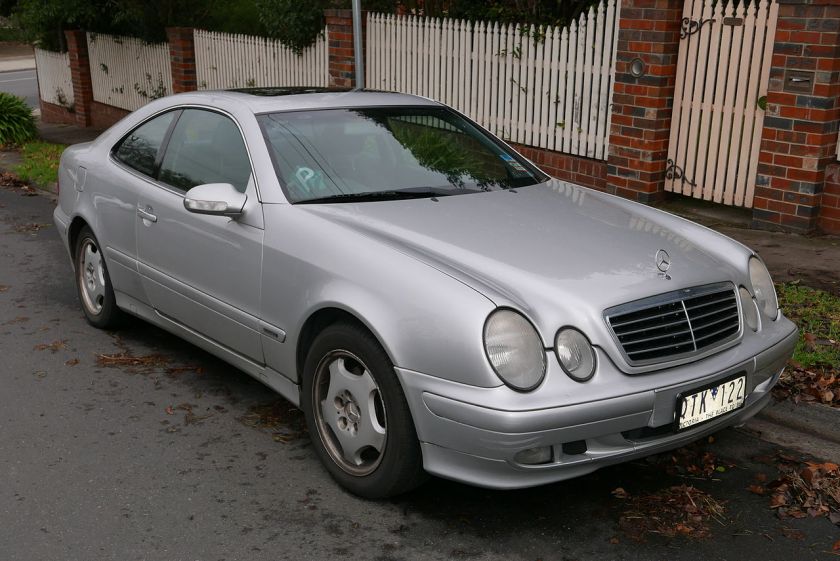 2000 Mercedes Benz CLK 320 (C208) Elegance coupe CLK-Class 1998-
2000 Mercedes Benz CLK 320 (C208) Elegance coupe CLK-Class 1998-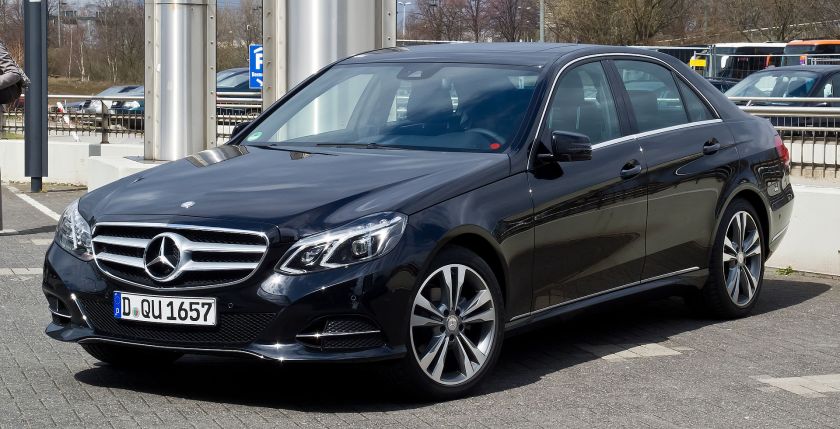 2013 Mercedes Benz E 220 CDI Avantgarde (W 212, Facelift) E-Class 1995-
2013 Mercedes Benz E 220 CDI Avantgarde (W 212, Facelift) E-Class 1995-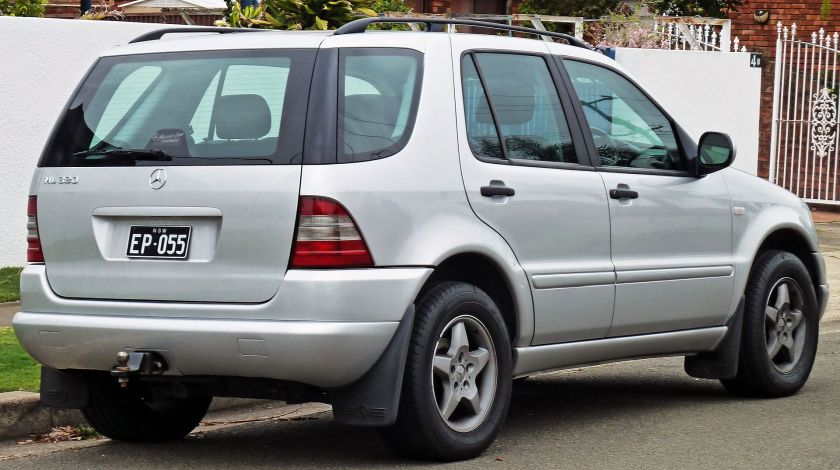 M-Class 1997-2015, renamed GLE-class in 2015
M-Class 1997-2015, renamed GLE-class in 2015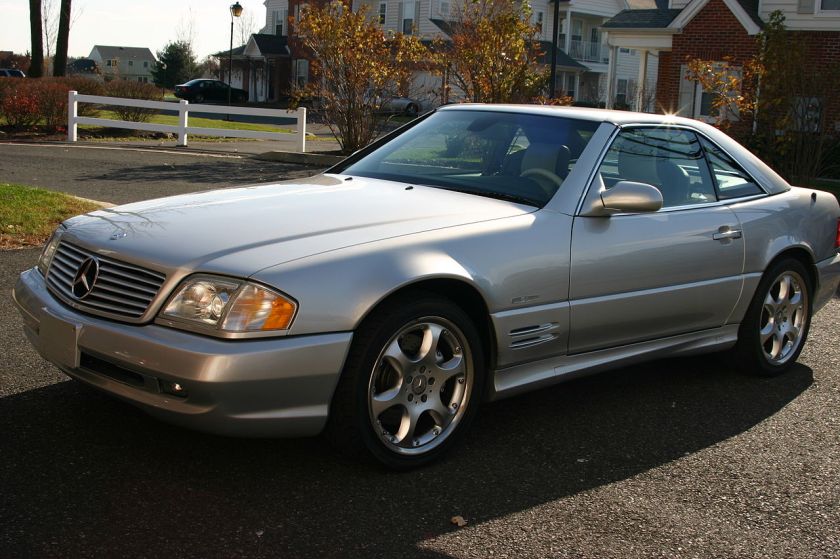 2000 Mercedes Benz SL (R129) SL-Class 1989-2001
2000 Mercedes Benz SL (R129) SL-Class 1989-2001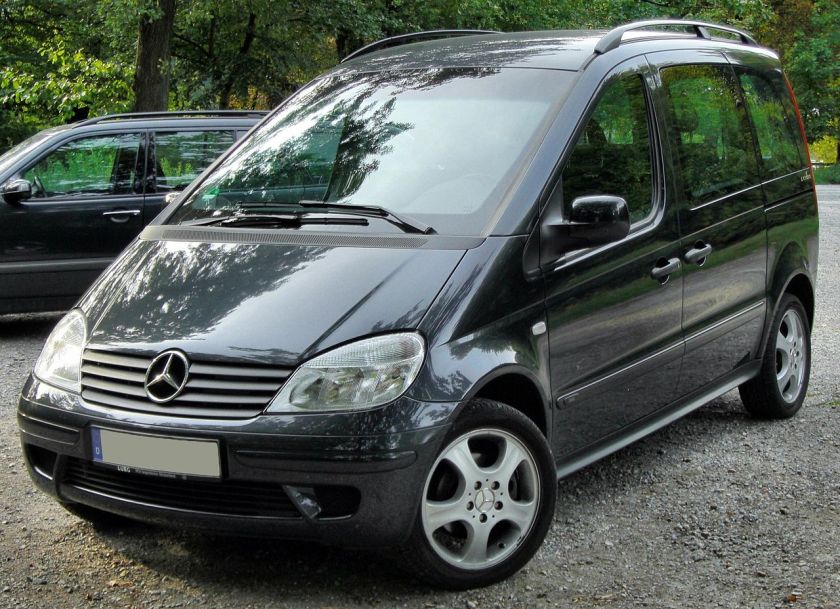 Mercedes Benz Vaneo 1997-2004
Mercedes Benz Vaneo 1997-2004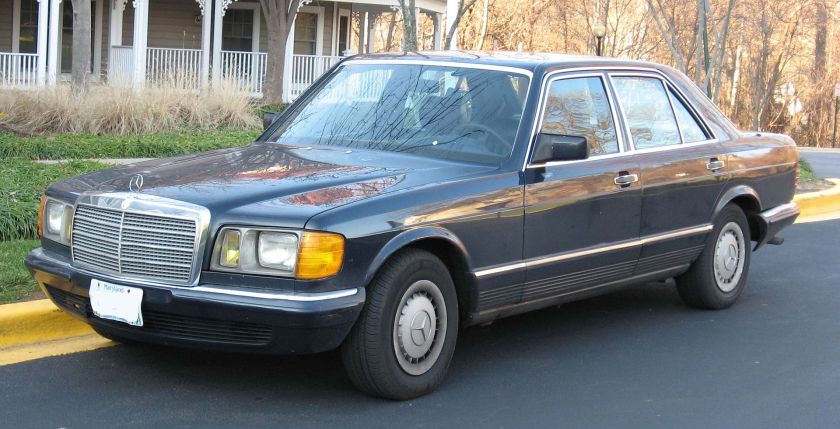 1992 Mercedes-Benz S-Class
1992 Mercedes-Benz S-Class 1987–1992 Mercedes-Benz 300 SEL (W126) sedan Mercedes-Benz W126 (to ~1991)
1987–1992 Mercedes-Benz 300 SEL (W126) sedan Mercedes-Benz W126 (to ~1991)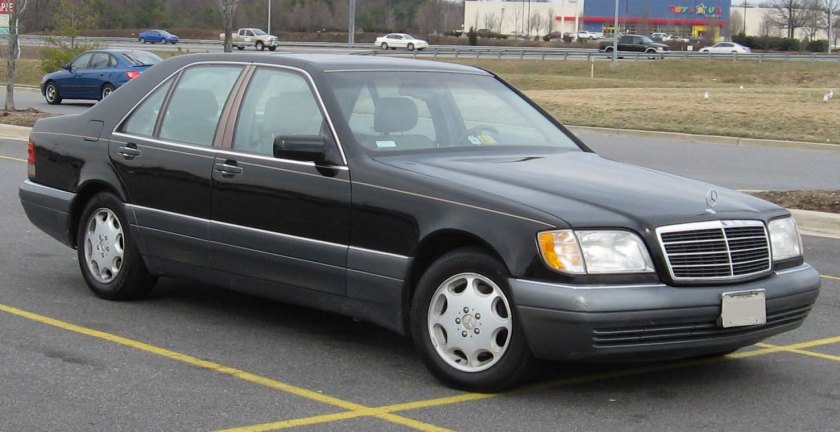 Mercedes-Benz S-Class (W140)
Mercedes-Benz S-Class (W140)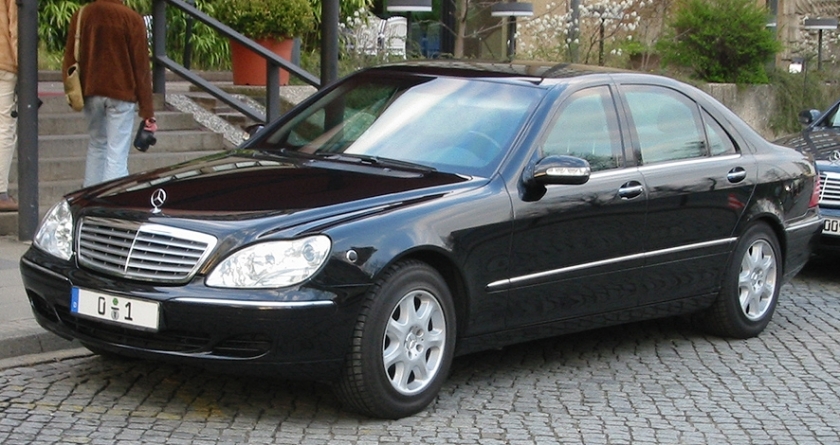 Mercedes-Benz S-Class (W220) (1998-2005/6)
Mercedes-Benz S-Class (W220) (1998-2005/6)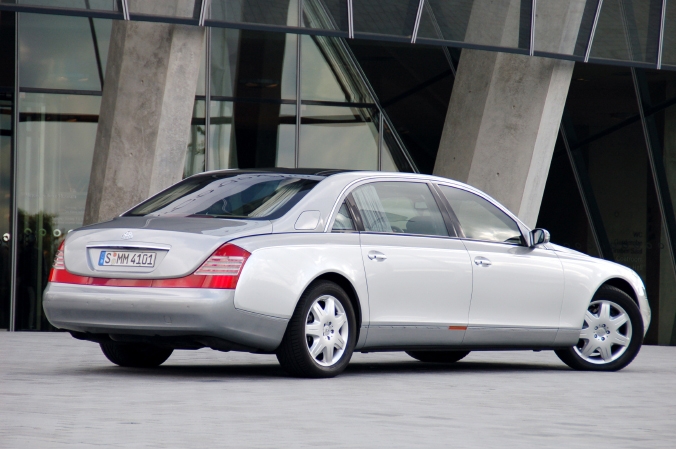 see also Maybach
see also Maybach
2000s
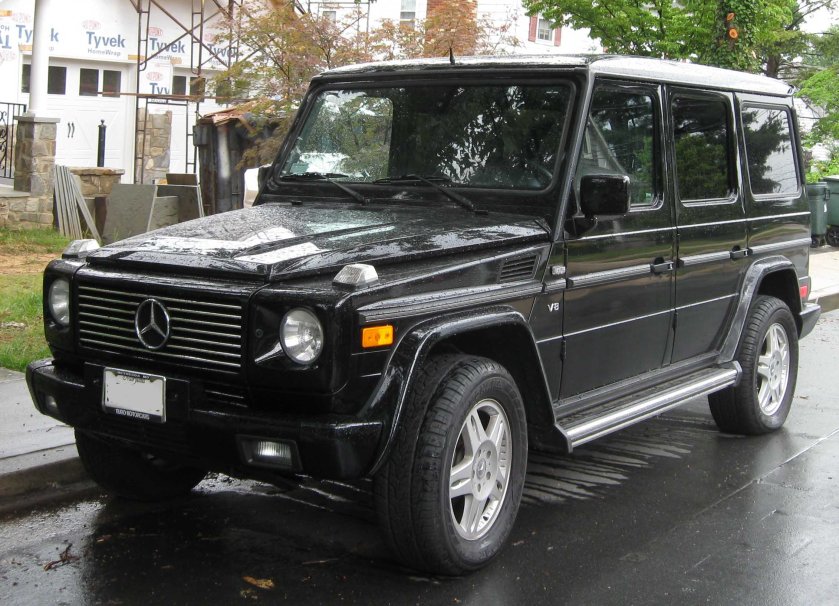 One standout in the MB lineup in the 21st century has been the Mercedes-Benz G-Class
One standout in the MB lineup in the 21st century has been the Mercedes-Benz G-Class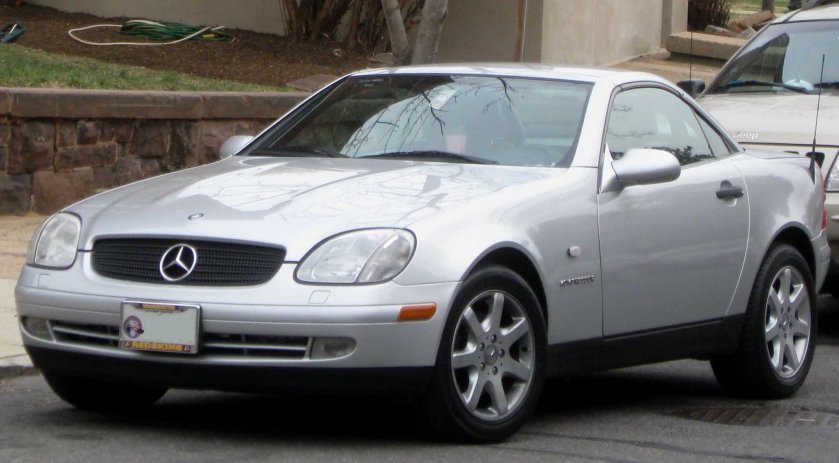 Mercedes-Benz SLK, 1996-2004
Mercedes-Benz SLK, 1996-2004 Mercedes-Benz M-Class, models go by ML430, ML500, etc. naming style
Mercedes-Benz M-Class, models go by ML430, ML500, etc. naming style
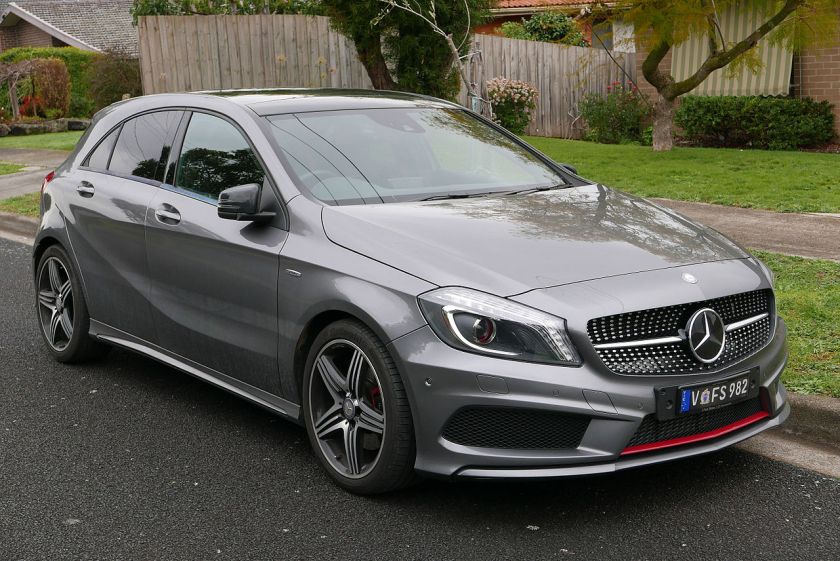 2014 Mercedes-Benz A 250 (W176) Sport hatchback (Australia) Mercedes-Benz A-Class
2014 Mercedes-Benz A 250 (W176) Sport hatchback (Australia) Mercedes-Benz A-Class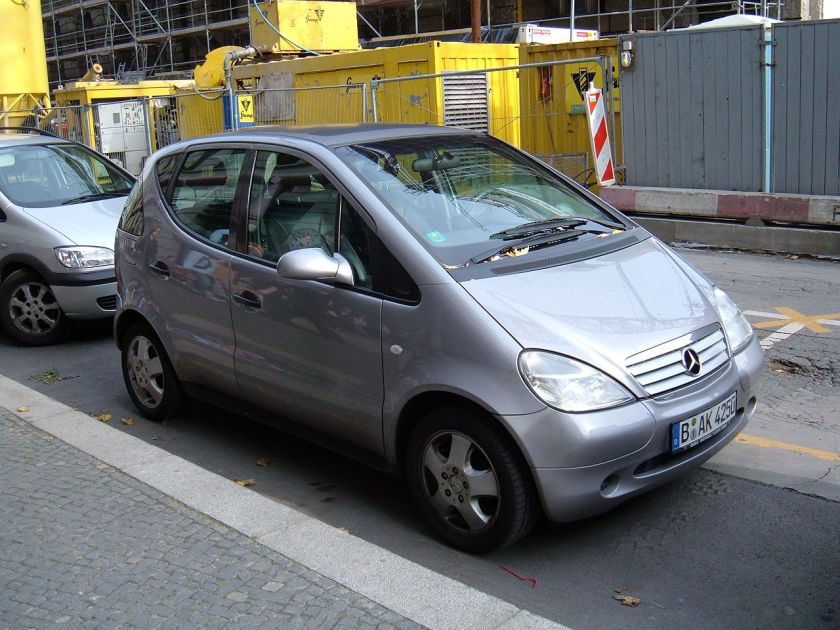 2000-04 Silver Mercedes A140 W168 side.JPG W168 2000-2004
2000-04 Silver Mercedes A140 W168 side.JPG W168 2000-2004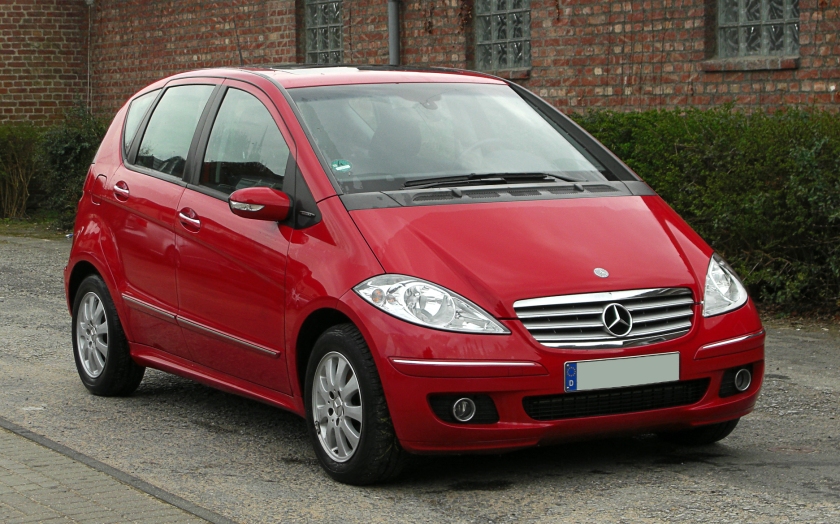 2004-12 Mercedes Benz A 180 CDI Elegance (W 169) W169 2004-2012 Mercedes-Benz B-Class
2004-12 Mercedes Benz A 180 CDI Elegance (W 169) W169 2004-2012 Mercedes-Benz B-Class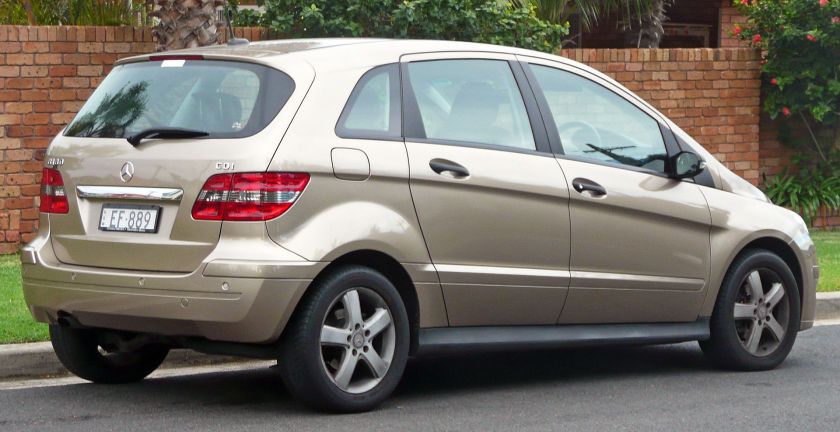 2006-08 Mercedes-Benz B 180 CDI (W245) hatchback W245 2005-2011 Mercedes-Benz C-Class
2006-08 Mercedes-Benz B 180 CDI (W245) hatchback W245 2005-2011 Mercedes-Benz C-Class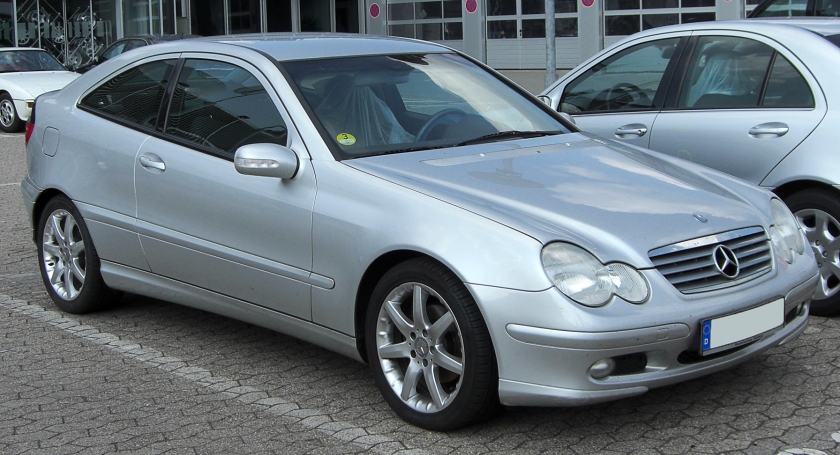 2001–04 Mercedes-Benz C 220 CDI SportCoupé (Germany) W203 2000-2007
2001–04 Mercedes-Benz C 220 CDI SportCoupé (Germany) W203 2000-2007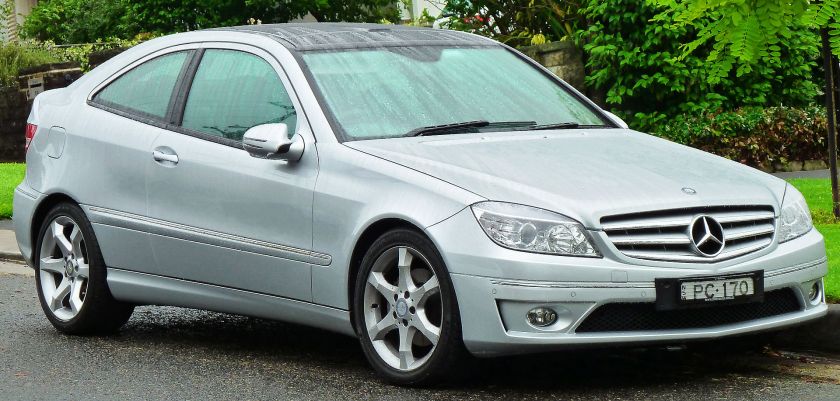 2008-11 Mercedes Benz CLC 200 Kompressor (CL203) coupe W204 2007-2014
2008-11 Mercedes Benz CLC 200 Kompressor (CL203) coupe W204 2007-2014
 2015 Mercedes Benz C 220 BlueTEC Exclusive (W 205) Mercedes-Benz CL-Class
2015 Mercedes Benz C 220 BlueTEC Exclusive (W 205) Mercedes-Benz CL-Class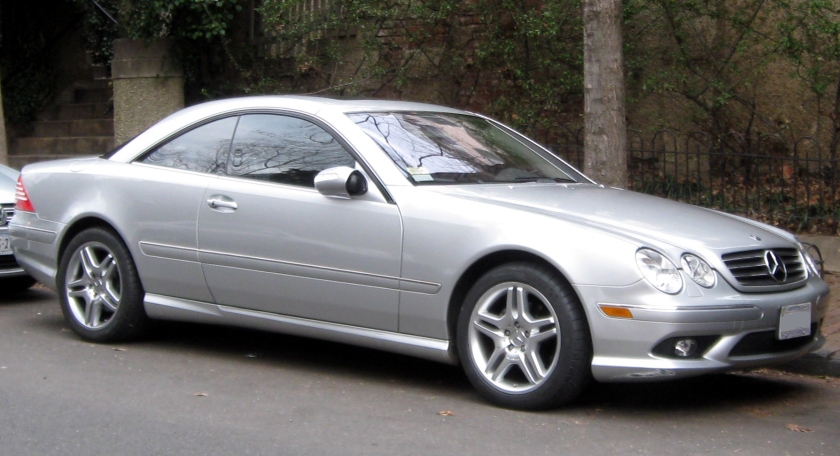 2000-06 Mercedes Benz CL Class W215 2000-2006
2000-06 Mercedes Benz CL Class W215 2000-2006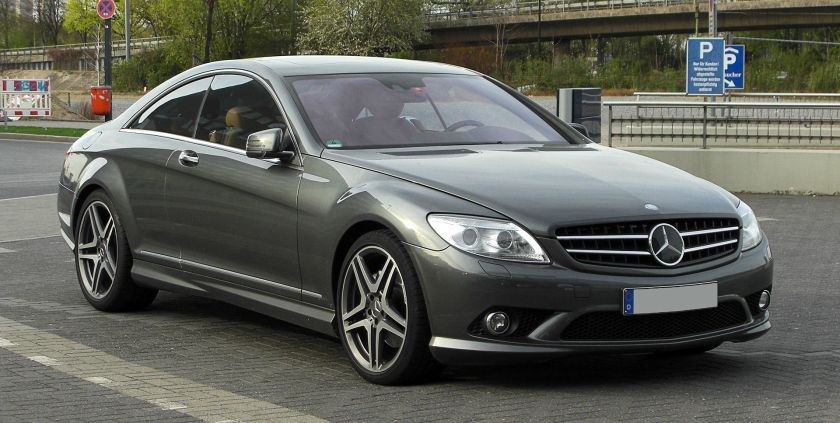 2007-14 Mercedes Benz CL 500 Sport-Paket AMG (C 216) W216 2007-
2007-14 Mercedes Benz CL 500 Sport-Paket AMG (C 216) W216 2007-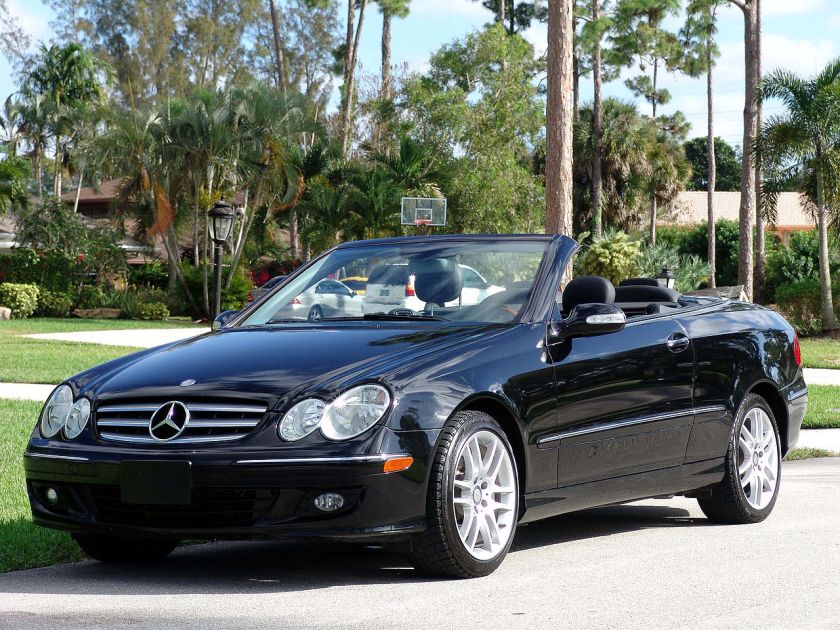 1997-09 Mercedes Benz CLK Cabriolet (A209)
1997-09 Mercedes Benz CLK Cabriolet (A209)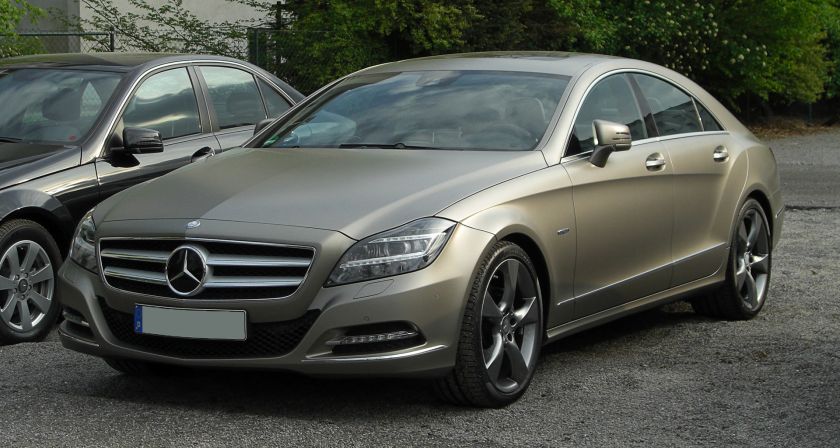 2004-present Mercedes-Benz CLS 350 BlueEFFICIENCY-series EDITION I C 218
2004-present Mercedes-Benz CLS 350 BlueEFFICIENCY-series EDITION I C 218- Mercedes-Benz E-Class
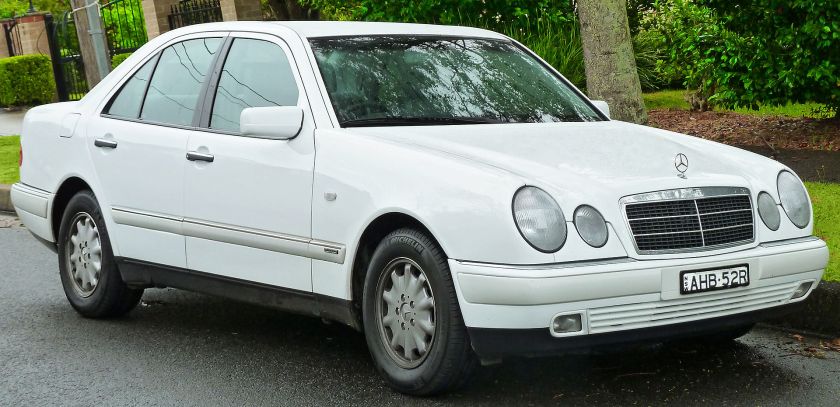 1998–03 Mercedes-Benz E 240 (W210) Elegance sedan W210 1995-2002
1998–03 Mercedes-Benz E 240 (W210) Elegance sedan W210 1995-2002
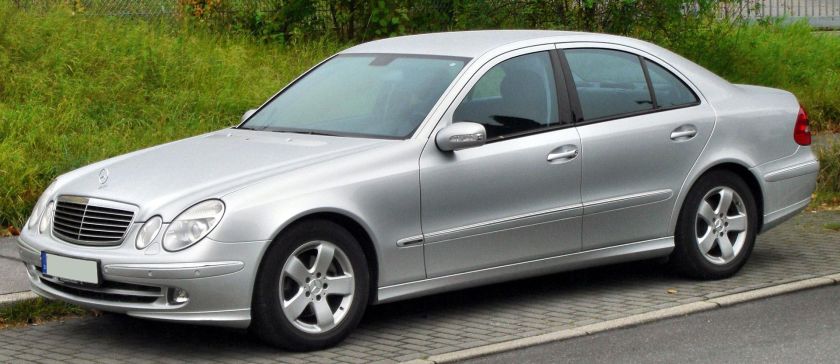 2009 Mercedes E-Klasse S 400 Hybrid Avantgarde (W211).jpg W211 2003-2009
2009 Mercedes E-Klasse S 400 Hybrid Avantgarde (W211).jpg W211 2003-2009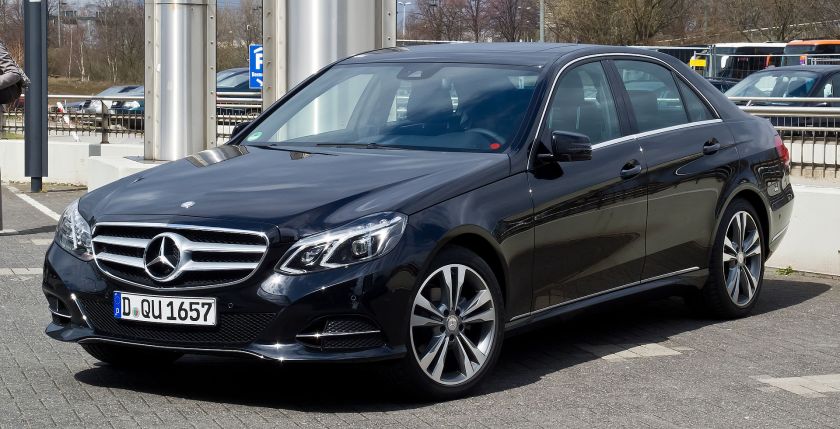 2009-present Mercedes Benz E 220 CDI Avantgarde (W 212, Facelift) W212 2009-
2009-present Mercedes Benz E 220 CDI Avantgarde (W 212, Facelift) W212 2009-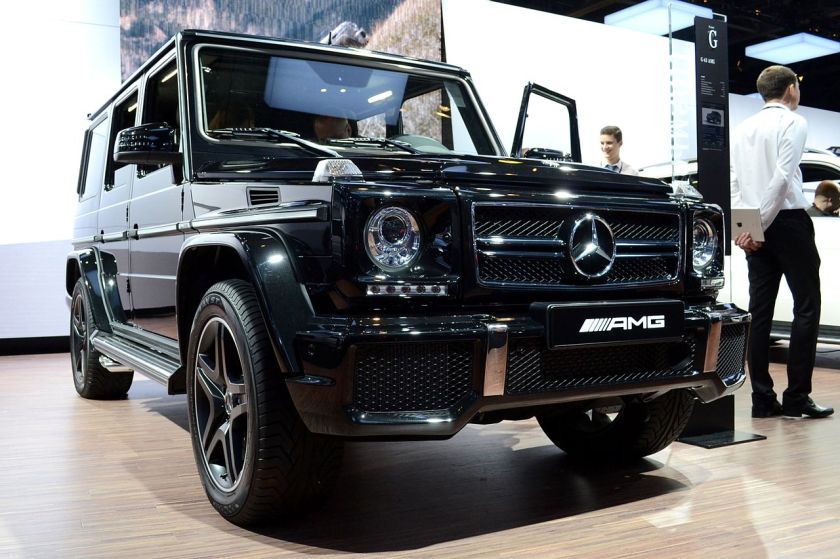 2012 Mercedes Benz G 63 AMG.JPG Mercedes-Benz G-Class 2000-
2012 Mercedes Benz G 63 AMG.JPG Mercedes-Benz G-Class 2000-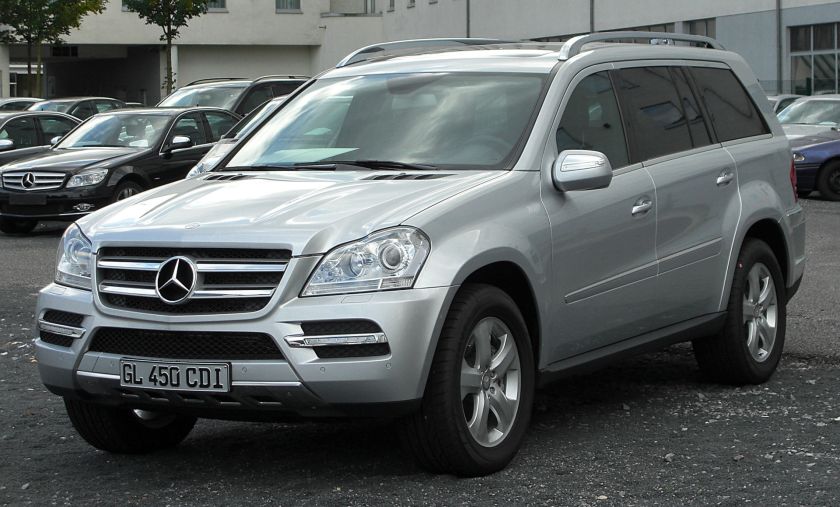 2010 Mercedes Benz GL 450 CDI 4MATIC (X164) Mercedes-Benz GL-Class X164 2007-
2010 Mercedes Benz GL 450 CDI 4MATIC (X164) Mercedes-Benz GL-Class X164 2007-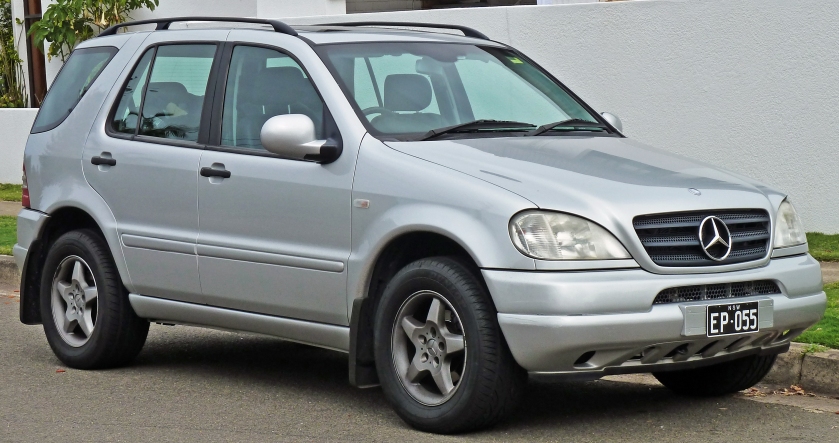 1998-01 Mercedes Benz ML 320 (W163) wagon Mercedes-Benz M-Class W163 1998-2005
1998-01 Mercedes Benz ML 320 (W163) wagon Mercedes-Benz M-Class W163 1998-2005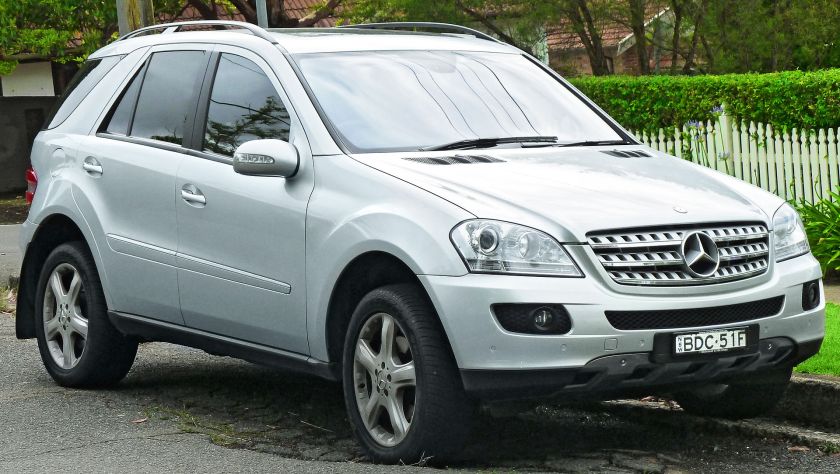 2007-08 Mercedes Benz ML 320 CDI (W164 MY08) wagon W164 2006-2011
2007-08 Mercedes Benz ML 320 CDI (W164 MY08) wagon W164 2006-2011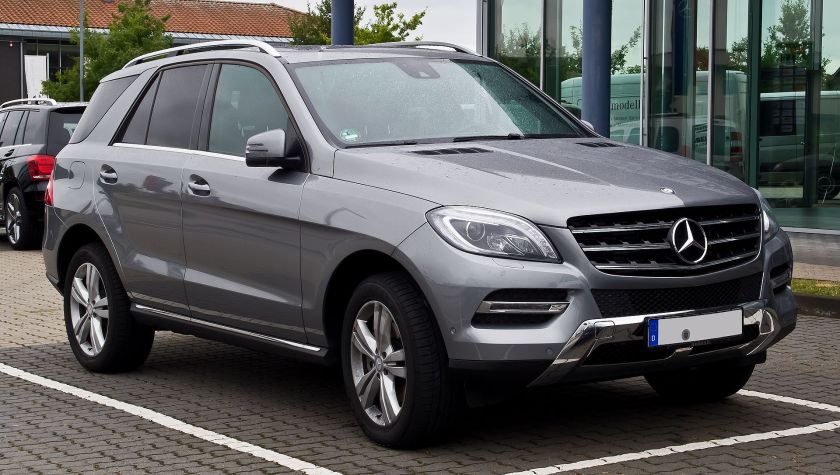 2011-present Mercedes Benz ML 350 BlueTEC 4MATIC (W 166) W166 2011-
2011-present Mercedes Benz ML 350 BlueTEC 4MATIC (W 166) W166 2011-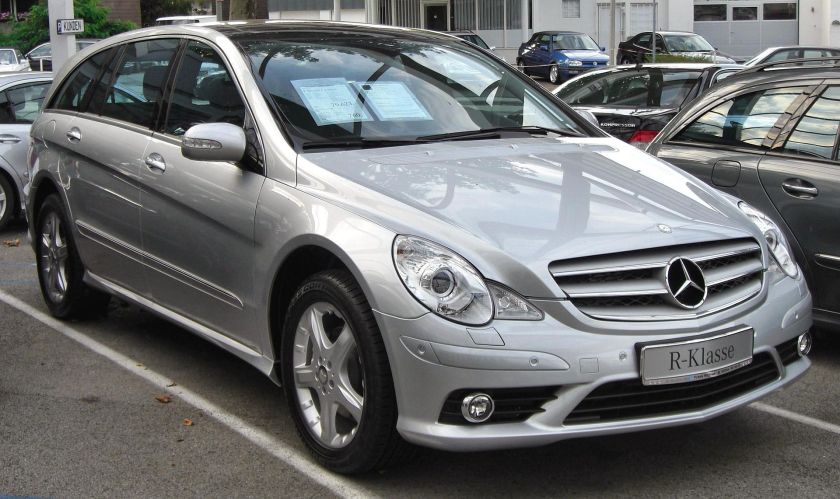 2008 Mercedes Benz R320CDI L AMG-Sportpaket.JPG R-Class 2006- Mercedes-Benz S-Class
2008 Mercedes Benz R320CDI L AMG-Sportpaket.JPG R-Class 2006- Mercedes-Benz S-Class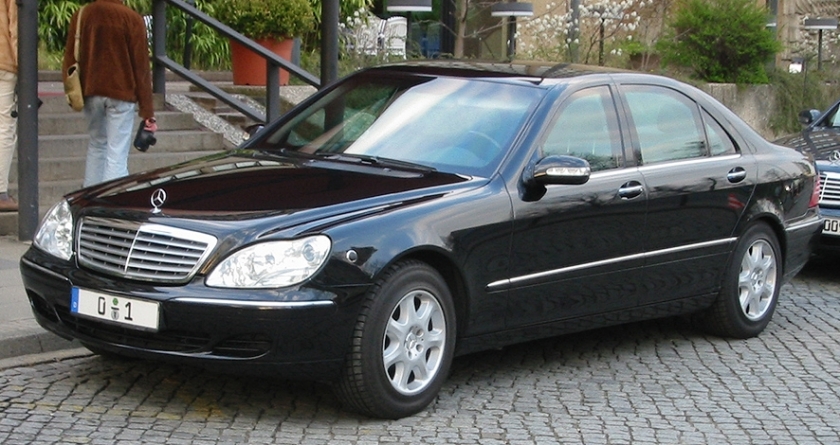
- Mercedes Benz S-Class (W220) 1999-2005
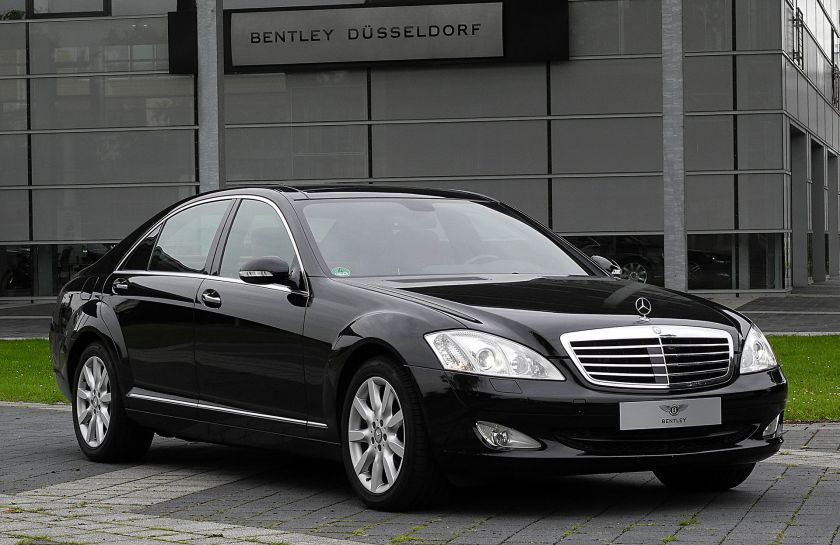 2011 Mercedes Benz S-Class (W221)S 320 CDI 4MATIC L (V 221) 2006-2013
2011 Mercedes Benz S-Class (W221)S 320 CDI 4MATIC L (V 221) 2006-2013
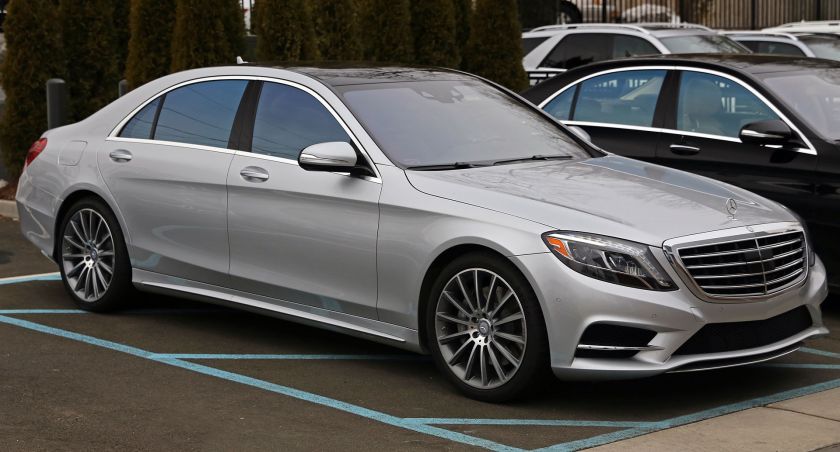 2014 Mercedes Benz S550 W 222 (US) lwb W222 2014- Mercedes-Benz SLK-ClassR171 2005-2010
2014 Mercedes Benz S550 W 222 (US) lwb W222 2014- Mercedes-Benz SLK-ClassR171 2005-2010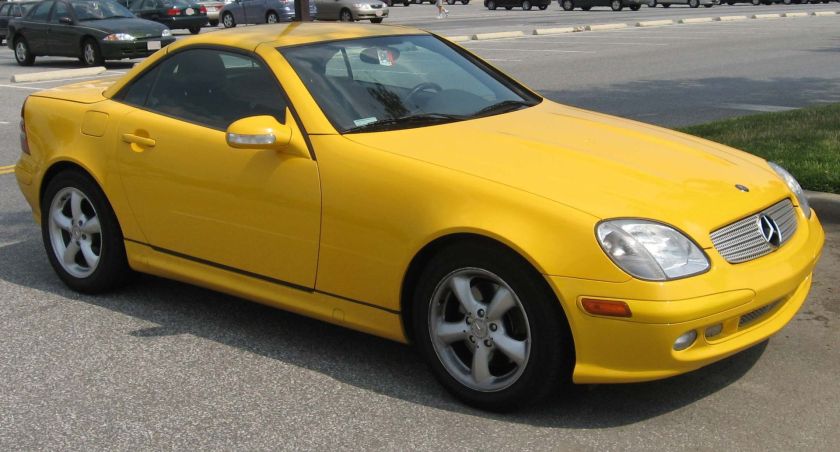 1998 Mercedes Benz SLK R170.jpg 1998-2004
1998 Mercedes Benz SLK R170.jpg 1998-2004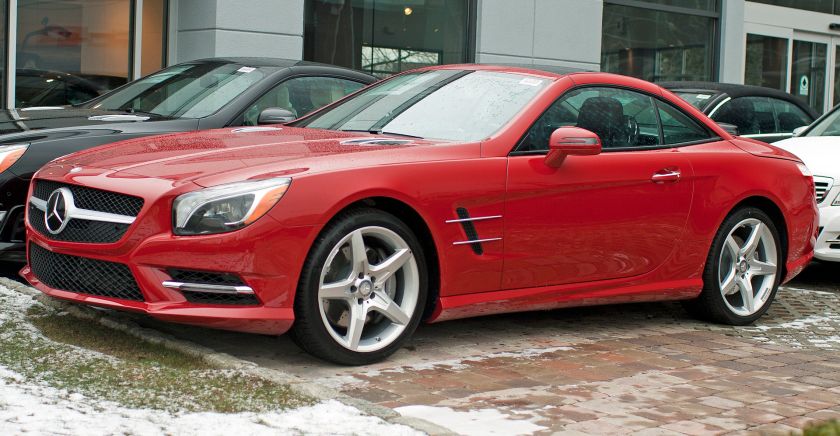 2013 Mercedes Benz SL 550 vf 7-spd automatic.jpg Mercedes-Benz SL-Class 2001-
2013 Mercedes Benz SL 550 vf 7-spd automatic.jpg Mercedes-Benz SL-Class 2001- 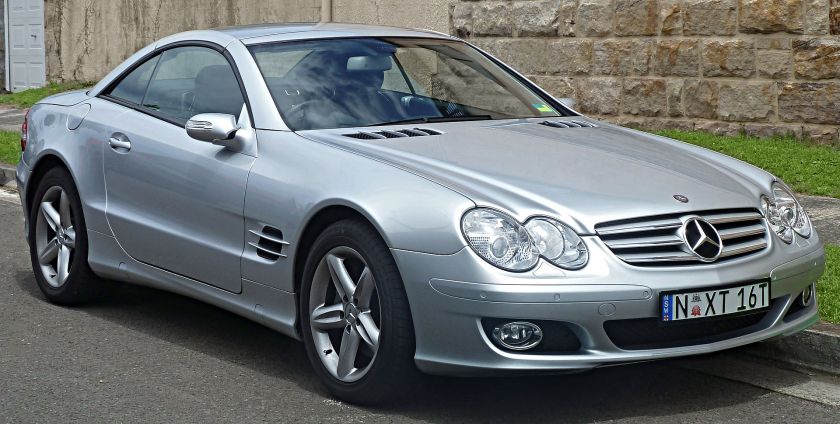 2006-08 Mercedes Benz SL 350 (R230) roadster 5th gen.jpg
2006-08 Mercedes Benz SL 350 (R230) roadster 5th gen.jpg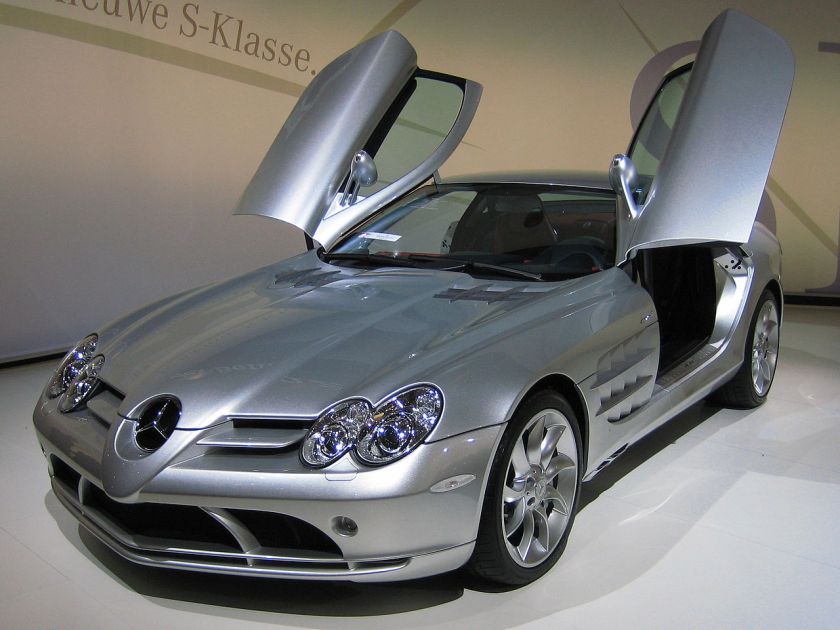 2006 Mercedes-Benz SLR-McLaren 2003-2009722 Edition 2006-2009
2006 Mercedes-Benz SLR-McLaren 2003-2009722 Edition 2006-2009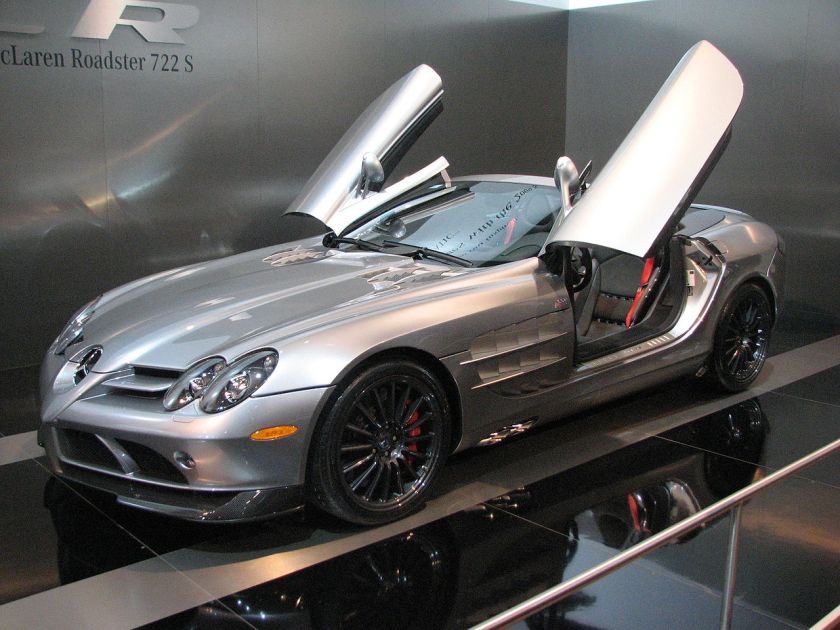 Mercedes Benz SLR McLaren 722 Roadster variant
Mercedes Benz SLR McLaren 722 Roadster variant
2010s
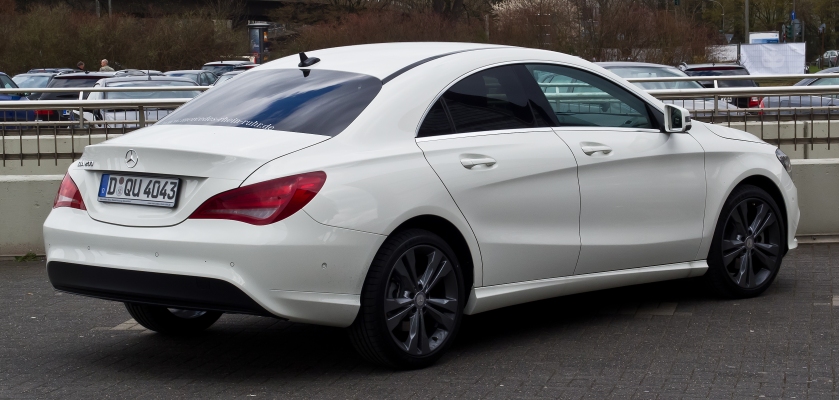 A CLA-clas in Düsseldorf; version CLA 200. This new smaller class featured front-wheel drive and a lowered financial barrier to a new Mercedes product
A CLA-clas in Düsseldorf; version CLA 200. This new smaller class featured front-wheel drive and a lowered financial barrier to a new Mercedes product
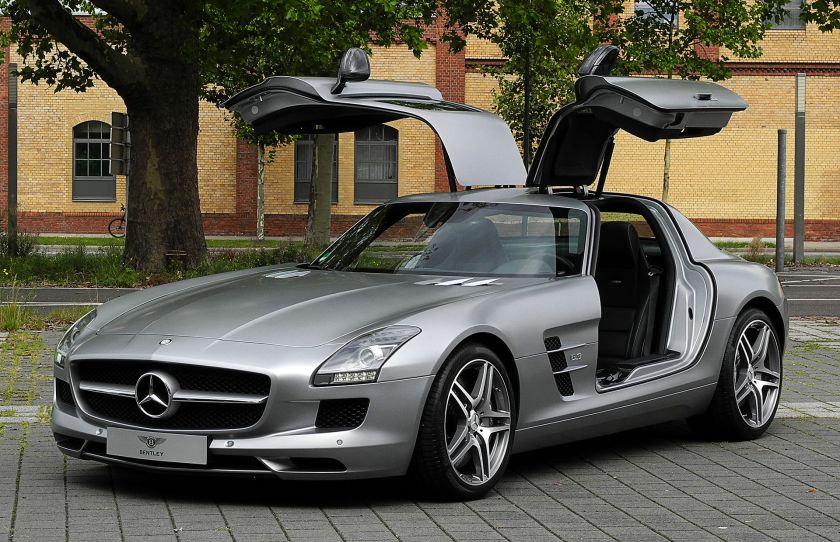 2011 Mercedes Benz SLS AMG C 197 2010-2013
2011 Mercedes Benz SLS AMG C 197 2010-2013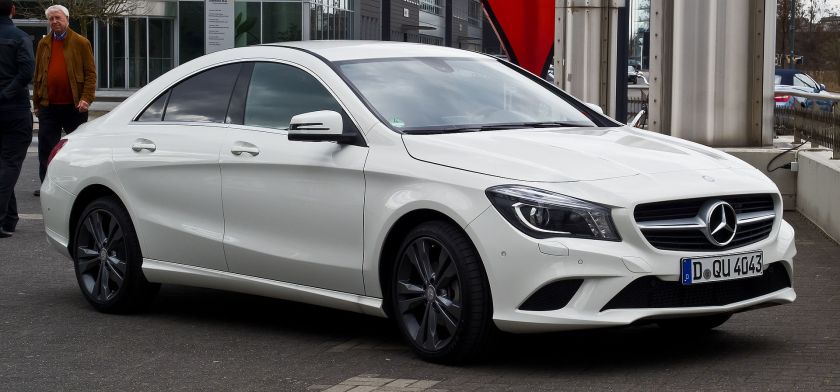 2013 Mercedes-Benz CLA 200-Class C 117 2010-2013
2013 Mercedes-Benz CLA 200-Class C 117 2010-2013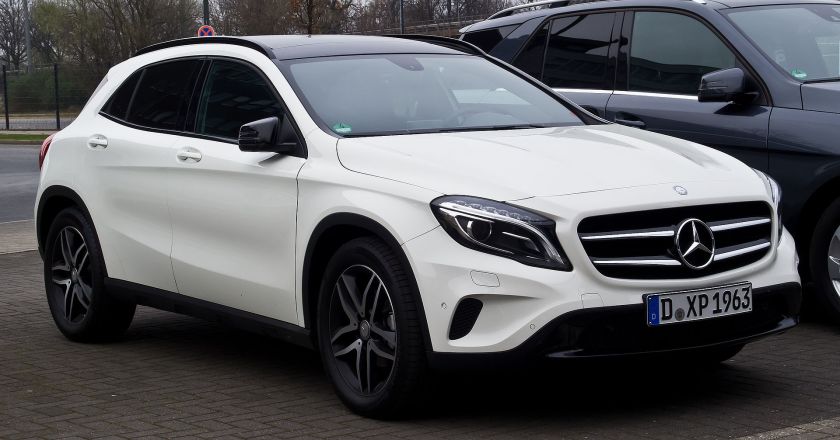 2014 Mercedes Benz GLA 200 CDI Urban (X 156)
2014 Mercedes Benz GLA 200 CDI Urban (X 156)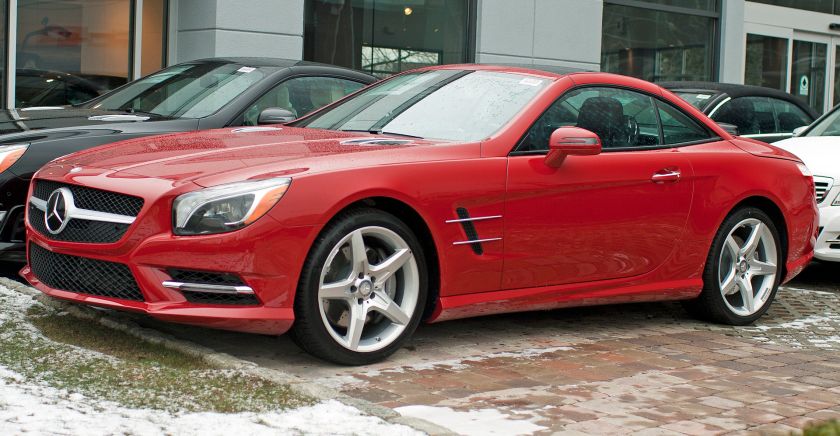 2013 Mercedes Benz SL 550 R231 vf 7spd-automatic R231.jpg
2013 Mercedes Benz SL 550 R231 vf 7spd-automatic R231.jpg
In the 2015 renaming several existing product lines were renamed
GLK-class to GLC-class
M-class to GLE-class
GL-class to GLS-class
Name change of Mercedes-Benz C63 AMG to Mercedes-AMG C63 in 2014.
Mercedes-Maybach S600
B-Class Electric Drive introduced (Special version of existing B-Class with no piston engine)
Mercedes-Benz SUVs
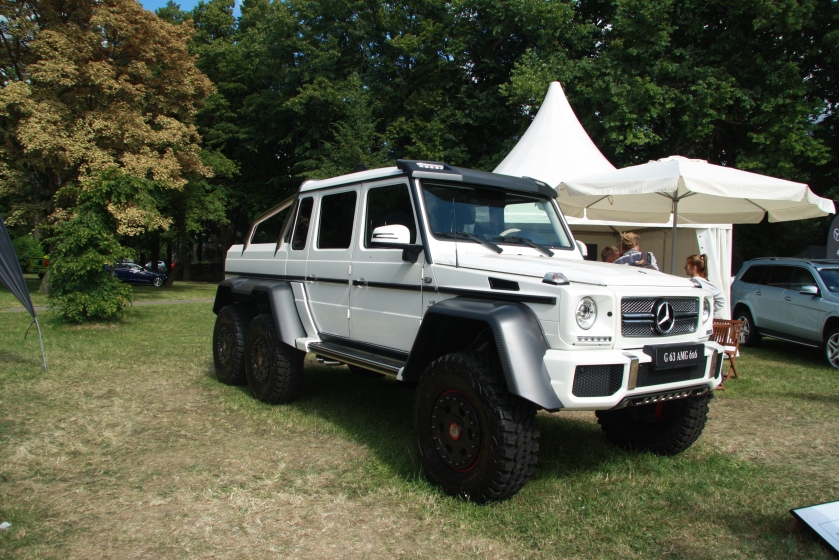 2014 G-Class G63 AMG 6×6
2014 G-Class G63 AMG 6×6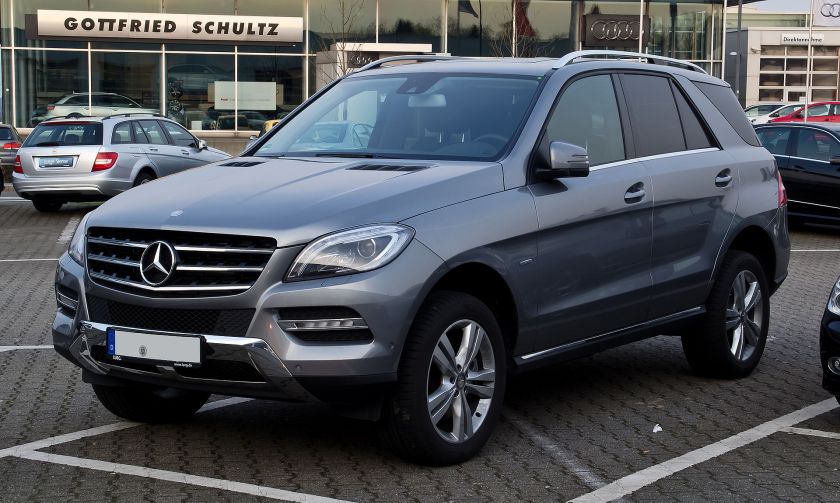 2012 Mercedes-Benz M-Class ML 250 BlueTEC 4MATIC (W 166) Mercedes-Benz M-Class
2012 Mercedes-Benz M-Class ML 250 BlueTEC 4MATIC (W 166) Mercedes-Benz M-Class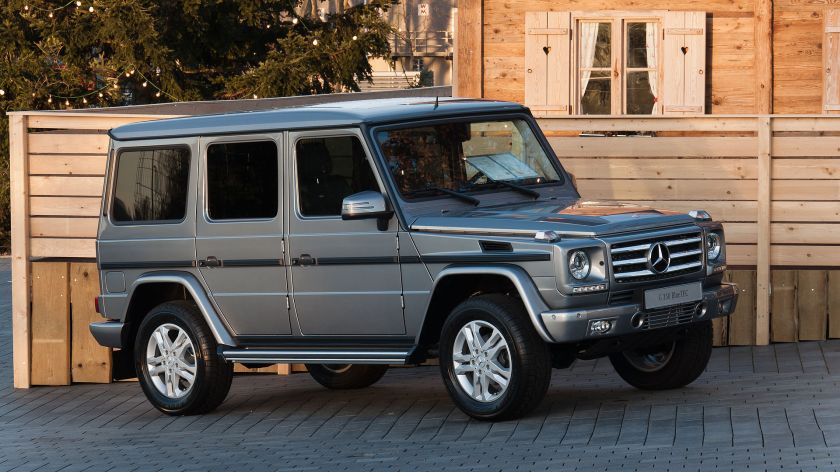 Mercedes Benz G 350 BlueTEC (W463) Mercedes-Benz G-Class
Mercedes Benz G 350 BlueTEC (W463) Mercedes-Benz G-Class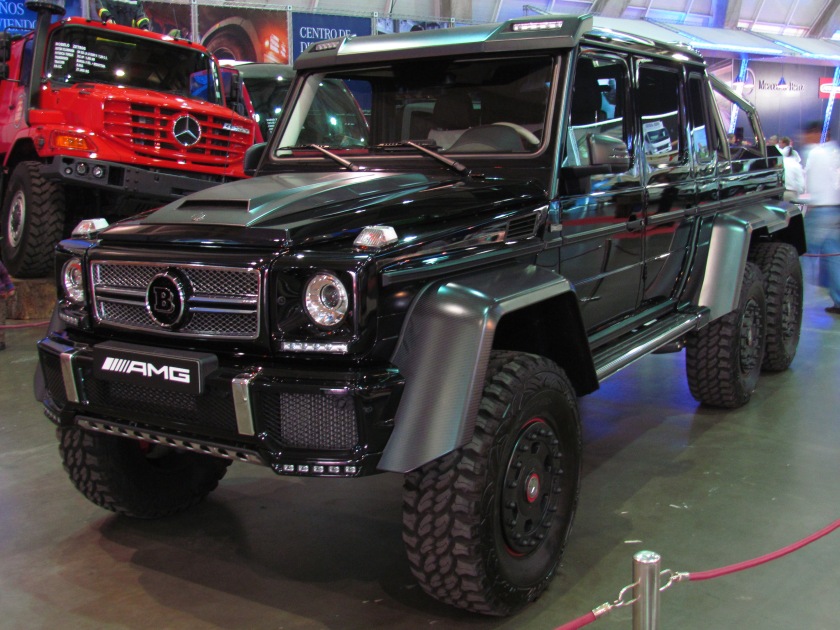 2013 Mercedes Benz G 63 AMG Brabus B63S 700 6×6 G63 AMG 6×6 (2013–2015)
2013 Mercedes Benz G 63 AMG Brabus B63S 700 6×6 G63 AMG 6×6 (2013–2015)
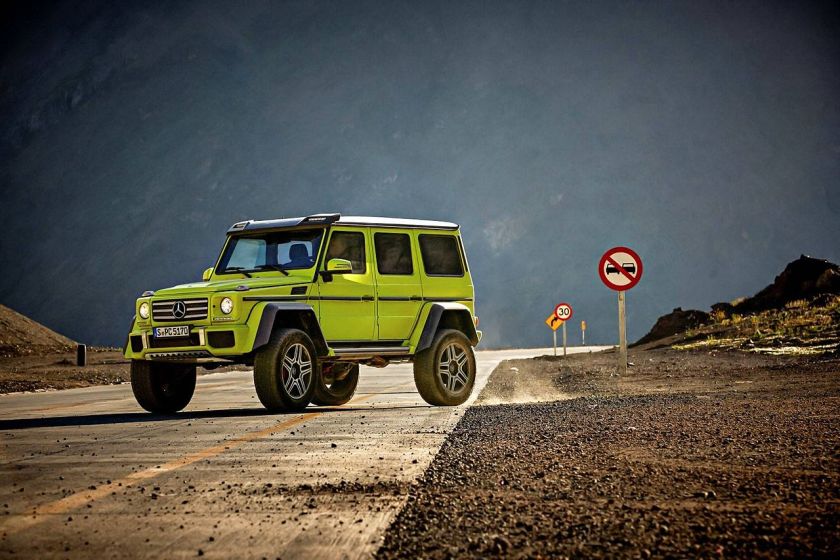 Mercedes-Benz G 500 4×4² in off-road test Mercedes-Benz G500 4×4²
Mercedes-Benz G 500 4×4² in off-road test Mercedes-Benz G500 4×4²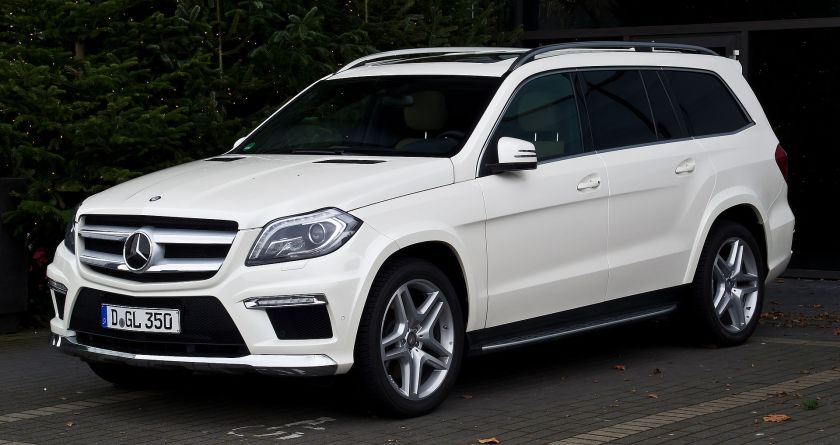 2012 Mercedes Benz GL 350 BlueTEC 4MATIC Sport-Paket AMG (X 166) Mercedes-Benz GL-Class
2012 Mercedes Benz GL 350 BlueTEC 4MATIC Sport-Paket AMG (X 166) Mercedes-Benz GL-Class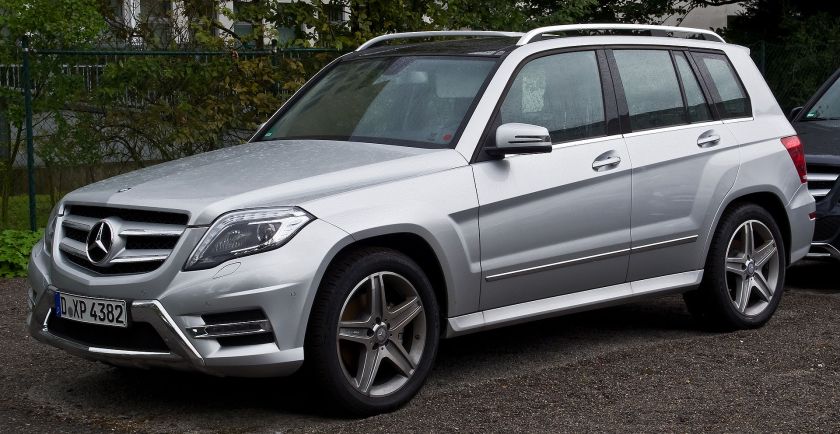 2014 Mercedes Benz GLK 220 CDI 4MATIC Sport-Paket AMG (X 204, Facelift) Mercedes-Benz GLK-Class
2014 Mercedes Benz GLK 220 CDI 4MATIC Sport-Paket AMG (X 204, Facelift) Mercedes-Benz GLK-Class
Post 2015 naming restructure: Mercedes Benz GLA-Class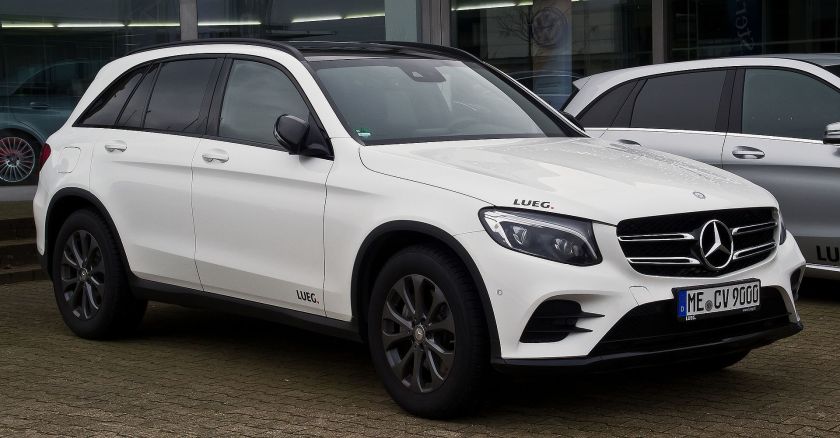 2016 Mercedes Benz GLC 220 d 4MATIC AMG Line (X 253) Mercedes-Benz GLC-Class
2016 Mercedes Benz GLC 220 d 4MATIC AMG Line (X 253) Mercedes-Benz GLC-Class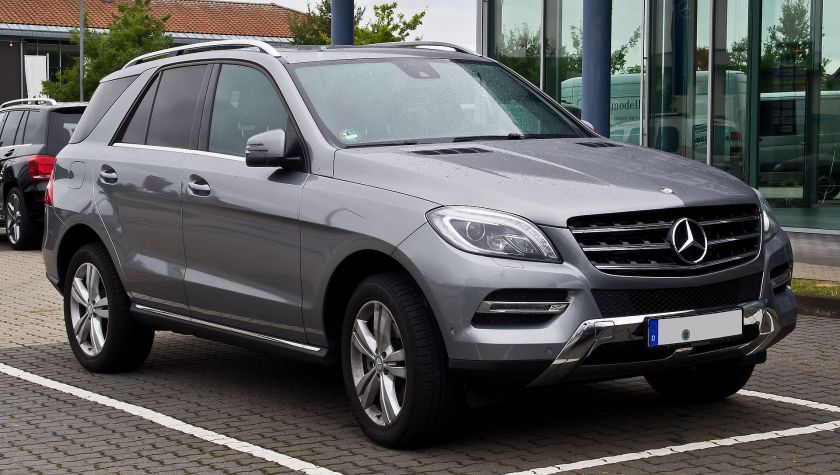 2013 Mercedes-Benz GLE ML 350 BlueTEC 4MATIC (W 166) Mercedes-Benz GLE-Class GLE-Coupe
2013 Mercedes-Benz GLE ML 350 BlueTEC 4MATIC (W 166) Mercedes-Benz GLE-Class GLE-Coupe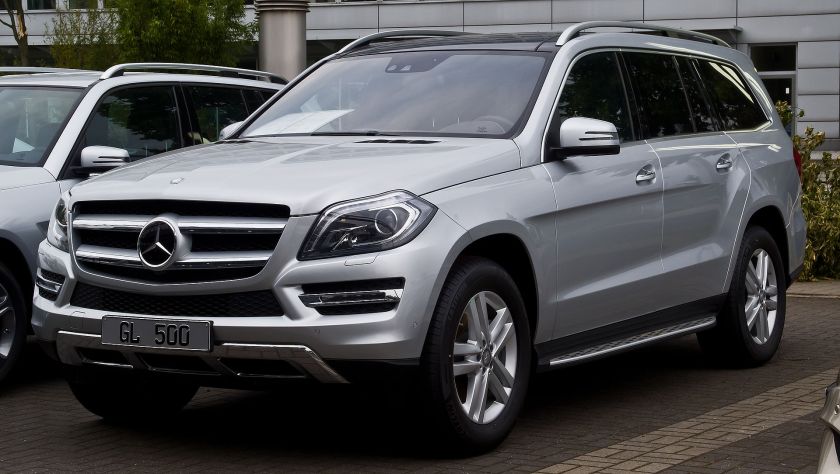 2014 Mercedes Benz GL 500 4MATIC (X 166) Mercedes-Benz GLS-Class
2014 Mercedes Benz GL 500 4MATIC (X 166) Mercedes-Benz GLS-Class
Mercedes-Benz vans
1950s
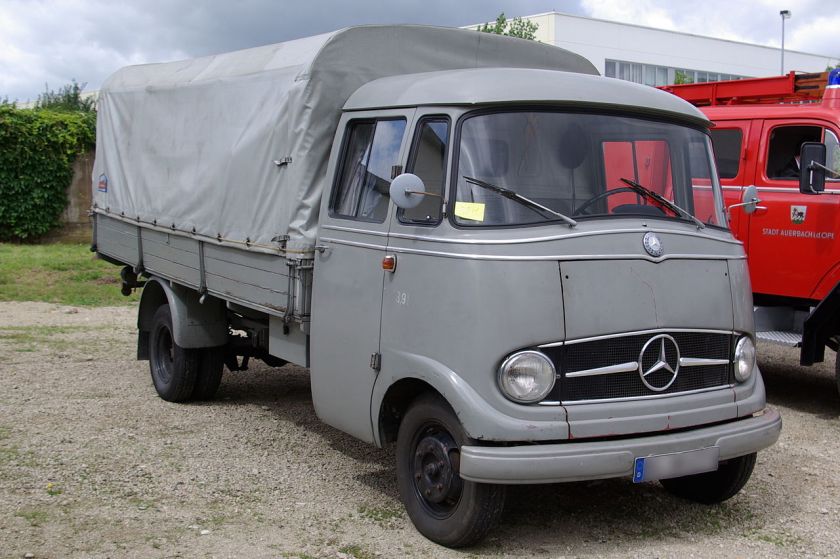 Mercedes-Benz L 319 1955-1967 – mid-sized van from 3,5 to 3,9 tonnes GVWR
Mercedes-Benz L 319 1955-1967 – mid-sized van from 3,5 to 3,9 tonnes GVWR
1970s
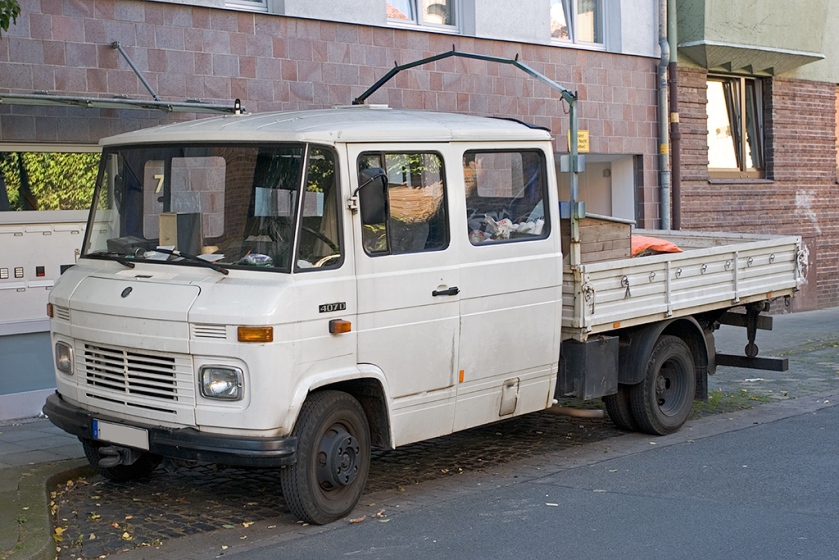 Mercedes-Benz T2 1967-1986 – heavy Van from 3,5 to 6,79 tonnes GVWR –
Mercedes-Benz T2 1967-1986 – heavy Van from 3,5 to 6,79 tonnes GVWR –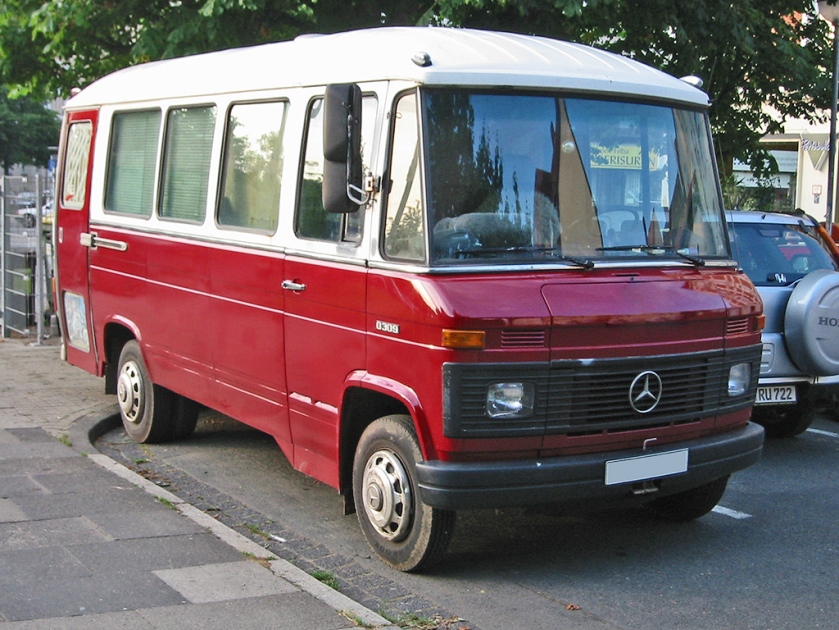 1967 Mercedes Benz O309 Mercedes-Benz O309 – busvariant of T2
1967 Mercedes Benz O309 Mercedes-Benz O309 – busvariant of T2
1980s
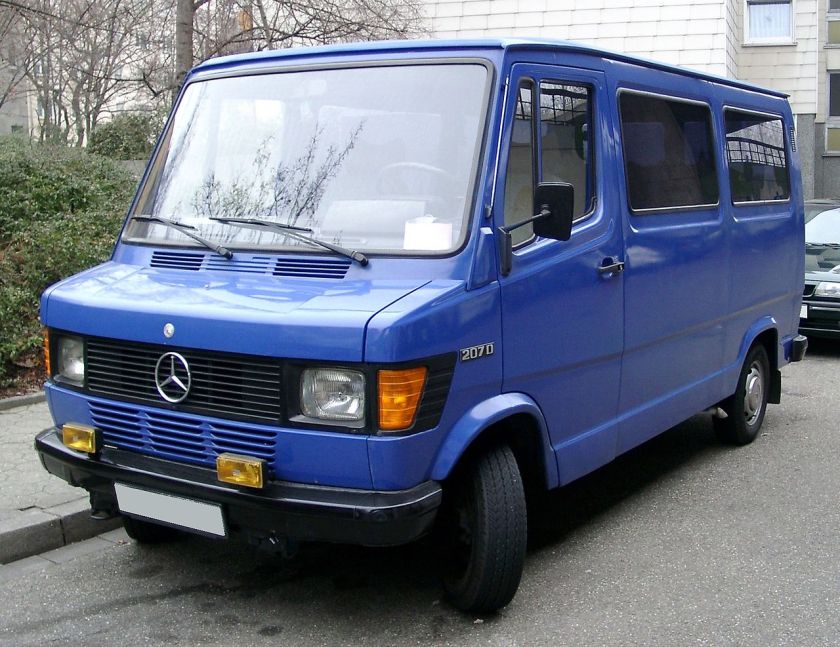 Mercedes-Benz TN or T1 1977-1995 – mid-sized van from 2,55 to 4,6 tonnes GVWR, predecessor to the sprinter
Mercedes-Benz TN or T1 1977-1995 – mid-sized van from 2,55 to 4,6 tonnes GVWR, predecessor to the sprinter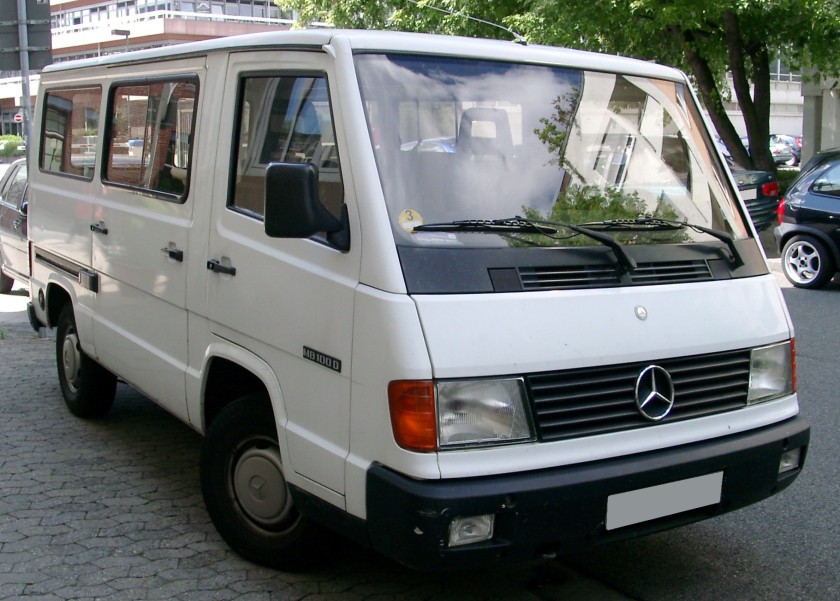 1981-95 Mercedes-Benz MB100-180 – mid-sized van from 2,65 to 3,5 tonnes GVWR
1981-95 Mercedes-Benz MB100-180 – mid-sized van from 2,65 to 3,5 tonnes GVWR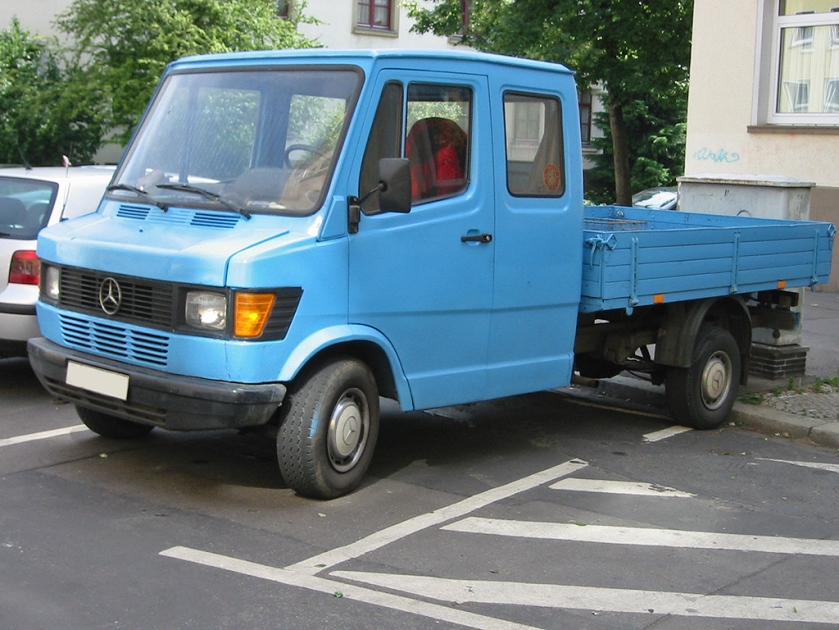 Mercedes Benz T1 Transporter
Mercedes Benz T1 Transporter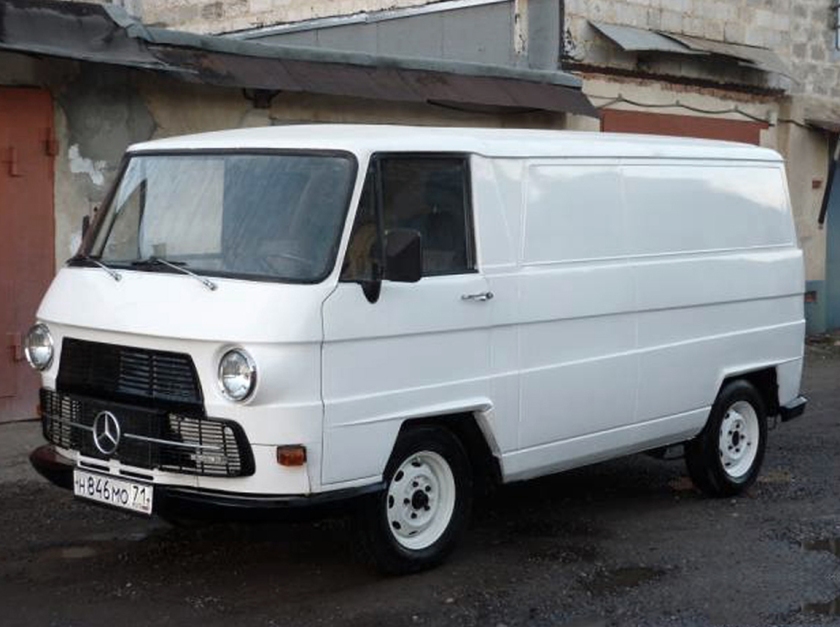 1975 Mercedes Benz N1300 first DKW F1000 L with 3 cyl 981cc 2 stroke DKW engine later with MB1300 Diesel
1975 Mercedes Benz N1300 first DKW F1000 L with 3 cyl 981cc 2 stroke DKW engine later with MB1300 Diesel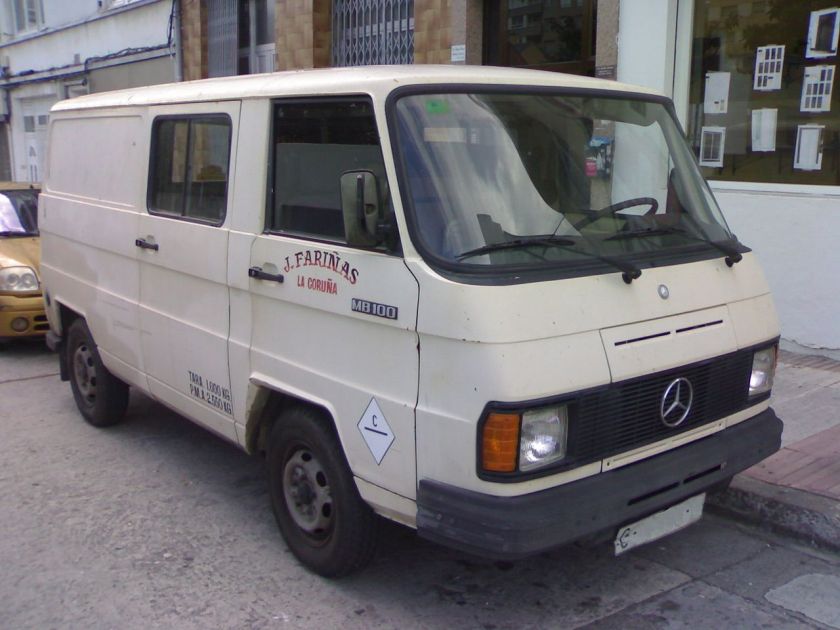 1981-87 Mercedes-Benz MB 100 spanish generación
1981-87 Mercedes-Benz MB 100 spanish generación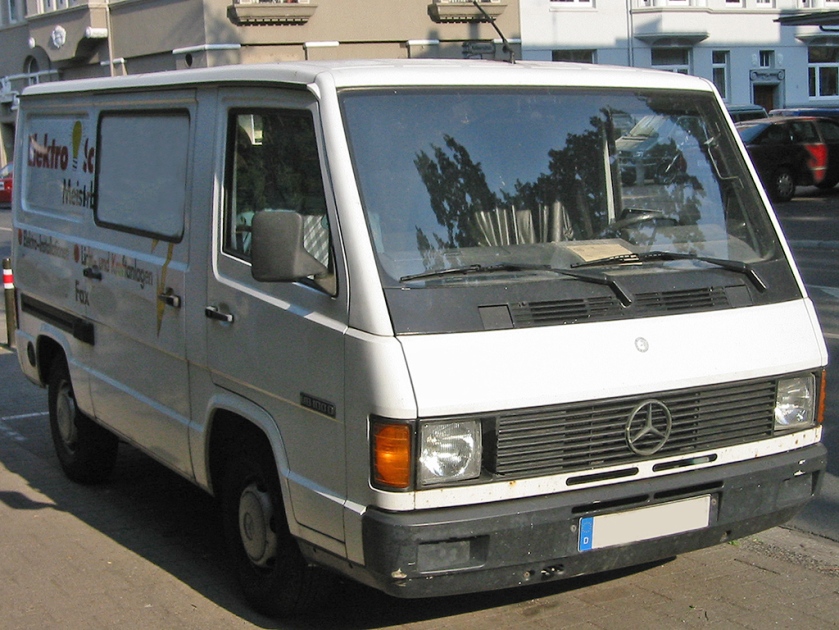 1988-95 Mercedes Benz MB 100 ca. 207.000 Stück
1988-95 Mercedes Benz MB 100 ca. 207.000 Stück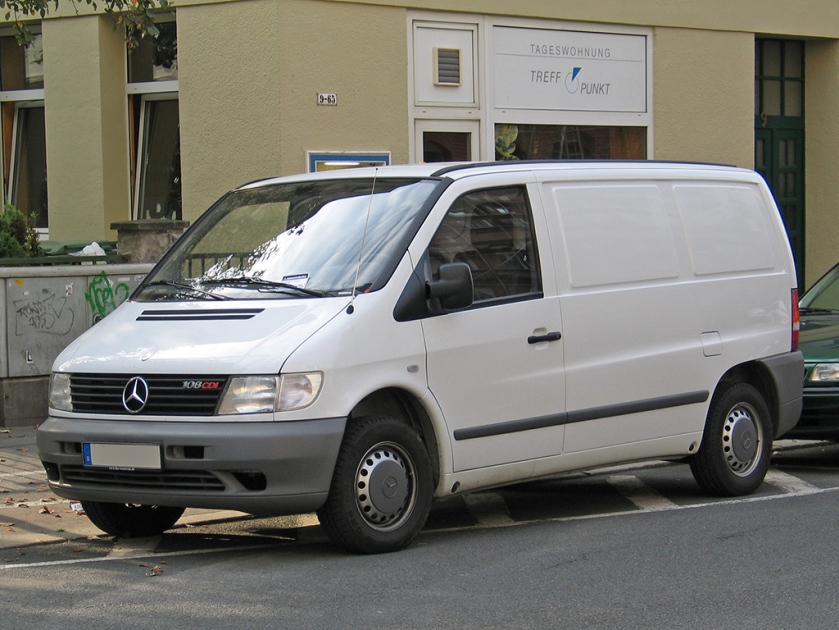 1996-03 First Mercedes Benz Vito W638 Vclass 560.000st(
1996-03 First Mercedes Benz Vito W638 Vclass 560.000st(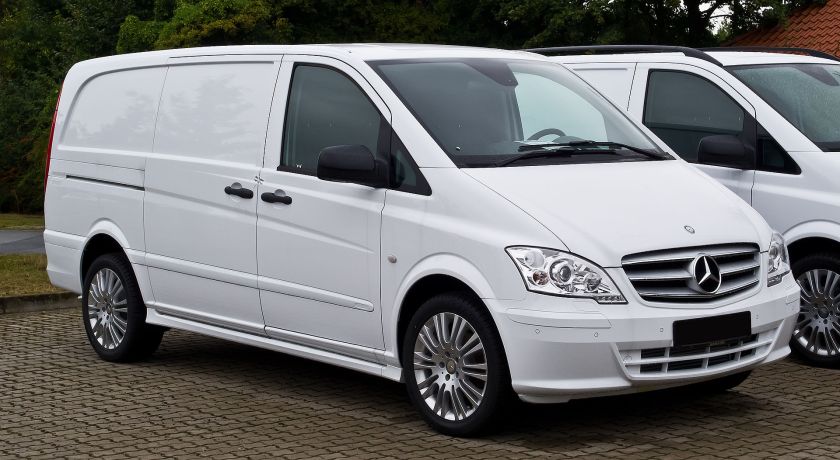 (2013)2003-14 2nd Mercedes Benz Vito(Viano) W/V 639
(2013)2003-14 2nd Mercedes Benz Vito(Viano) W/V 639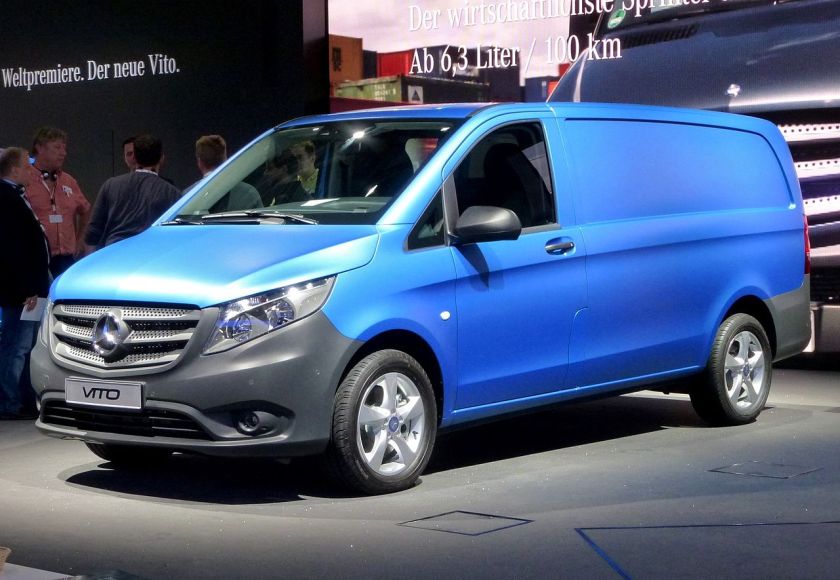 2014 3rd Mercedes Benz Vito W447 V-class
2014 3rd Mercedes Benz Vito W447 V-class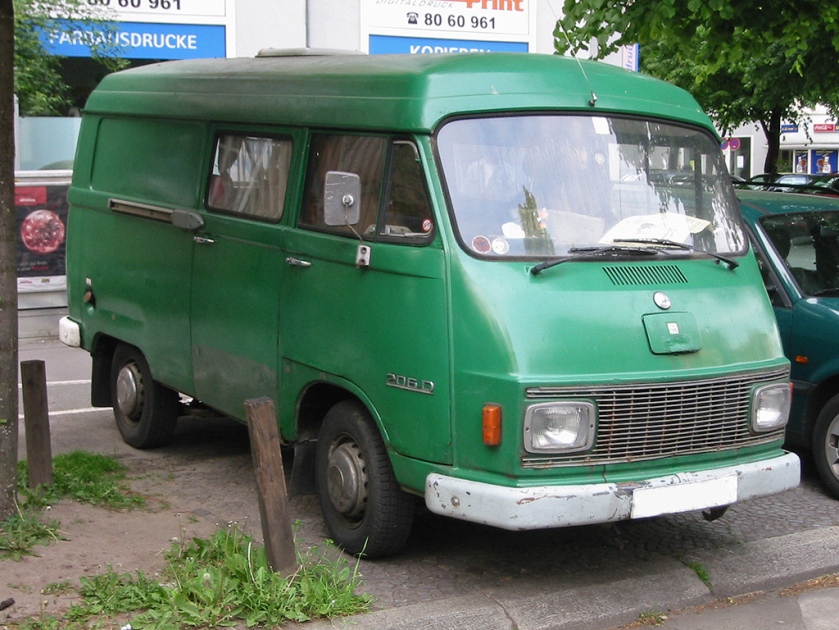 1970-77 Mercedes Benz L206 Harburger Transporter first Hanomag-Henschel 305.000
1970-77 Mercedes Benz L206 Harburger Transporter first Hanomag-Henschel 305.000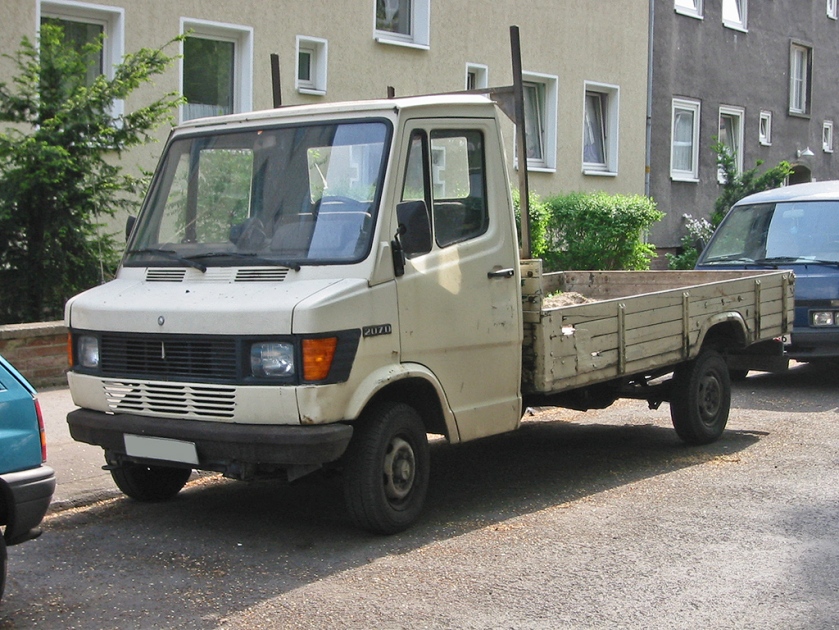 1977-95 Mercedes Benz 207D T1 (601+602 ca. 970.000)
1977-95 Mercedes Benz 207D T1 (601+602 ca. 970.000)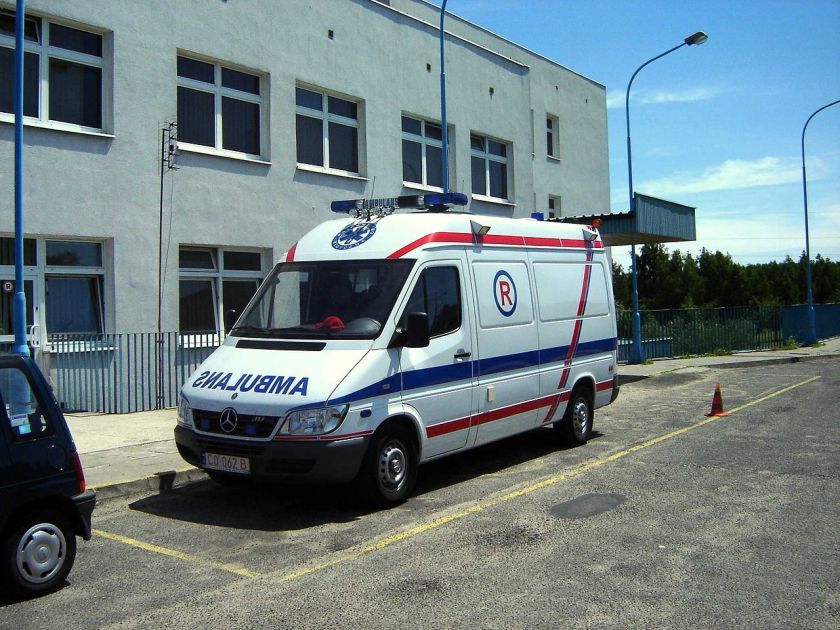 1995-05 Mercedes Benz Sprinter 616CDI 156hp Ambulance (1.3000.000)
1995-05 Mercedes Benz Sprinter 616CDI 156hp Ambulance (1.3000.000)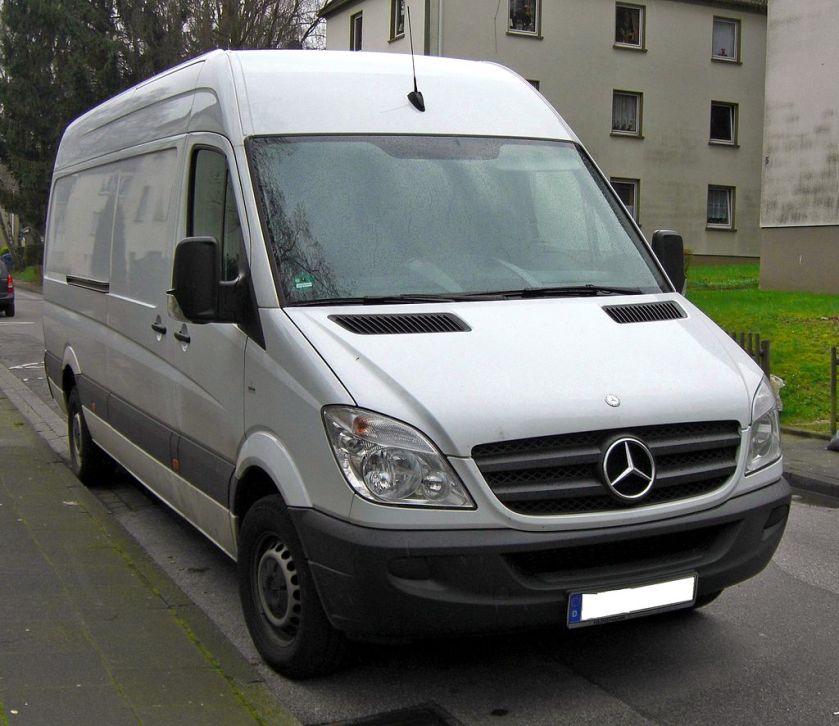 2006-present Mercedes Benz Sprinter W/V 906
2006-present Mercedes Benz Sprinter W/V 906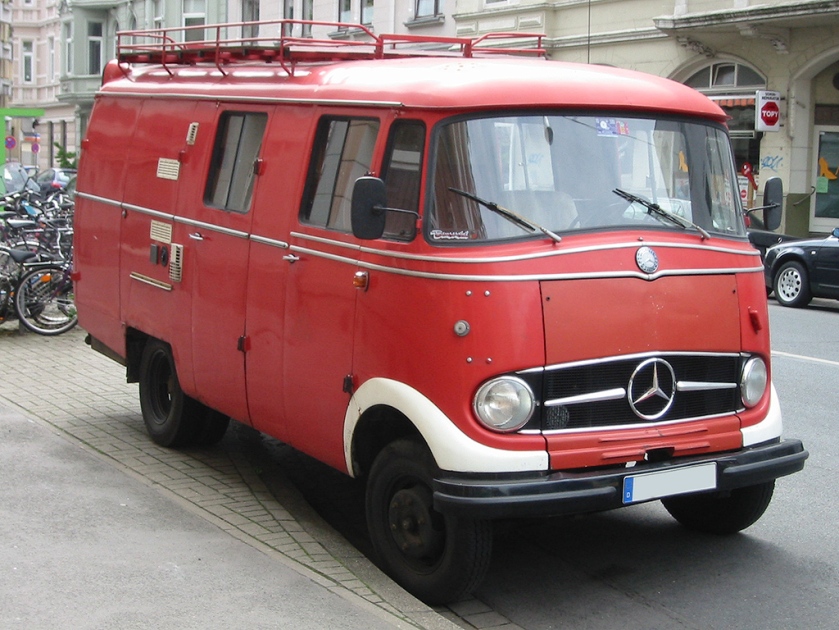 1956-67 ca. 140.000 Mercedes Benz L 319-L 405(diesel) + L 407(petrol)
1956-67 ca. 140.000 Mercedes Benz L 319-L 405(diesel) + L 407(petrol) 1967-86 ca. 540.000 Mercedes Benz T2 first generation
1967-86 ca. 540.000 Mercedes Benz T2 first generation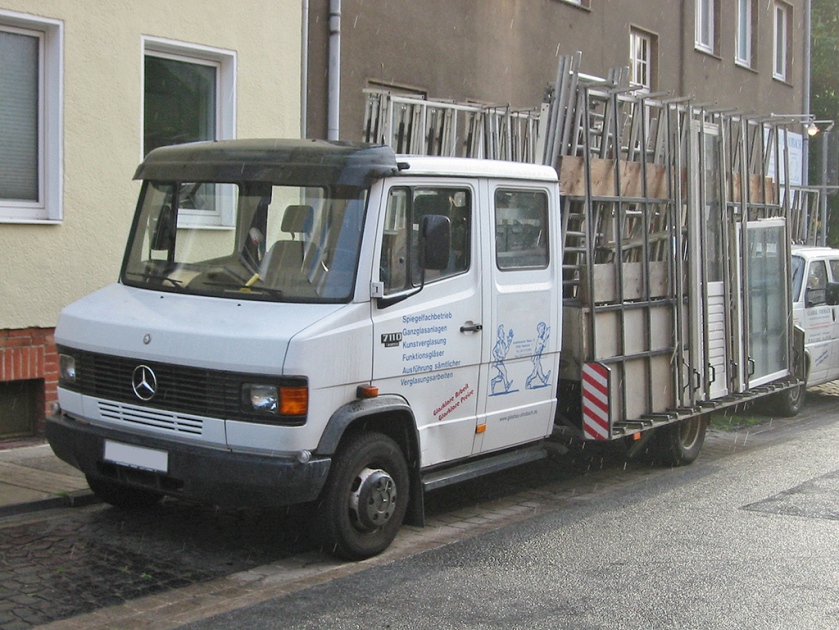 1986-96 138.407 Mercedes Benz T2 2nd gen.
1986-96 138.407 Mercedes Benz T2 2nd gen.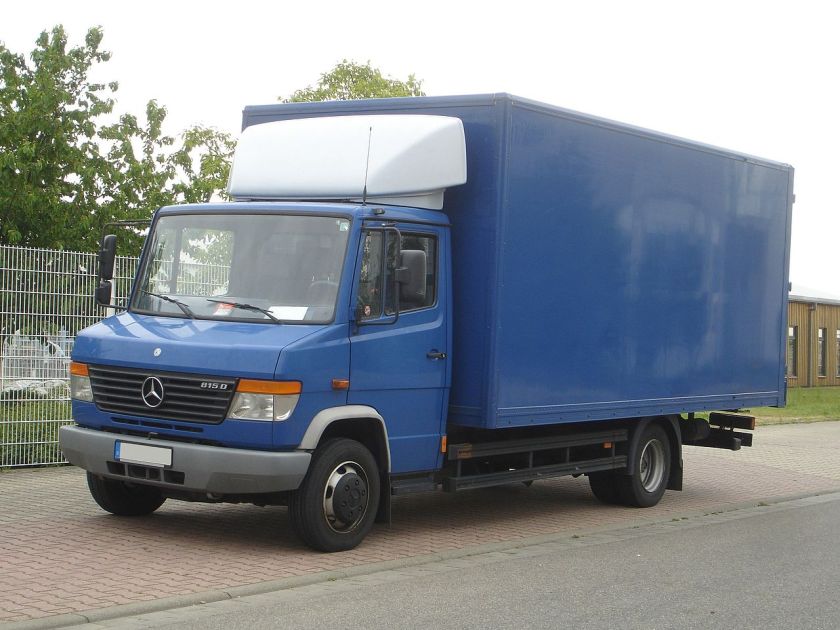 1996-13 90.743 Mercedes Benz Vario 815D
1996-13 90.743 Mercedes Benz Vario 815D
All other previous models on the German Wikipedia
- Mercedes-Benz Vito – light van based on the Viano MPV with a payload of approx 1 tonne
- Mercedes-Benz Metris in the United States
- Mercedes-Benz Sprinter – mid-sized van, based on a joint venture with the Volkswagen Commercial Vehicles Crafter, with payloads of 2 to 6 tonne. Also produced as a Dodge in USA and Canada with the name FreightlinerSprinter.
- Sprinter 414 416CDI – ambulance
- Sprinter 316CDI – light ambulance
- Mercedes-Benz Vario 1996-2013 – heavy van from 3,5 to 7,5 tonnes GVWR
- Mercedes-Benz Citan 2012-
Concept models
 Mercedes-Benz Bionic inspired by nature, in particular the yellow boxfish resulting a high volume to low drag ratio (2005)
Mercedes-Benz Bionic inspired by nature, in particular the yellow boxfish resulting a high volume to low drag ratio (2005)
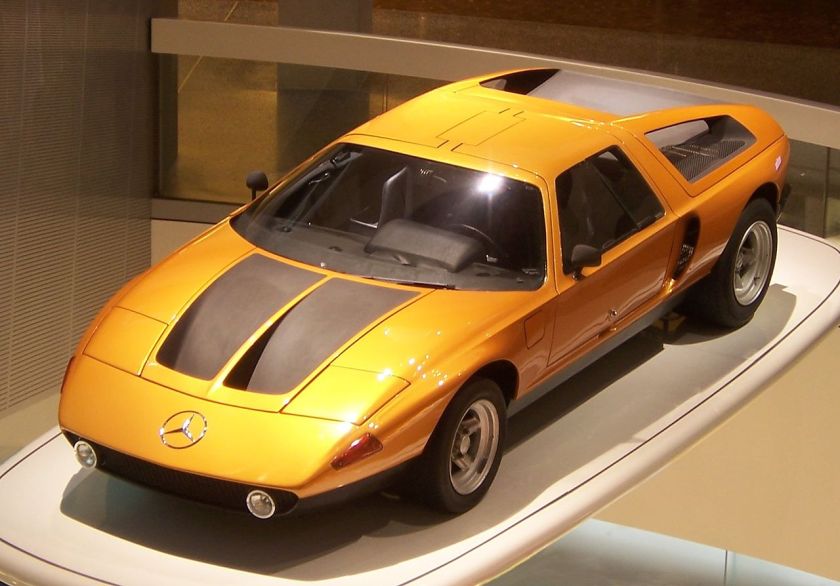 Mercedes-Benz C111 – sports car and test vehicle for different high performance engines (wankel engine and later diesel engines) shown in 1969, 1970 and 1978,1979
Mercedes-Benz C111 – sports car and test vehicle for different high performance engines (wankel engine and later diesel engines) shown in 1969, 1970 and 1978,1979
- Mercedes-Benz Schulz Studie CW311 (1979)
- Mercedes-Benz Auto 2000 – four-door saloon shown in 1981 Frankfurt Auto Show
- Mercedes-Benz NAFA – microcar, 1982
- Mercedes-Benz C112 – sports car and development mule developed in 1991
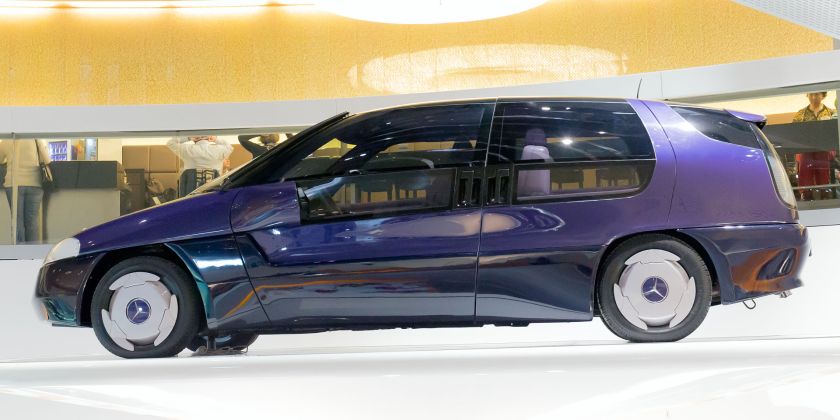 Mercedes-Benz F 100 – car introduced in 1991 North American International Auto Show
Mercedes-Benz F 100 – car introduced in 1991 North American International Auto Show - Mercedes-Benz Coupe Concept – car introduced in 1993 Geneva Motor Show
- Mercedes Benz S500 Shooting Break
- Mercedes Benz SLK 2 (1994)
- Mercedes-Benz Vision A93 Concept – small city car, preview of 1997 A-Class
- Mercedes-Benz Vario Research Car – one car, four vehicles, introduced in 1995 Geneva Motor Show
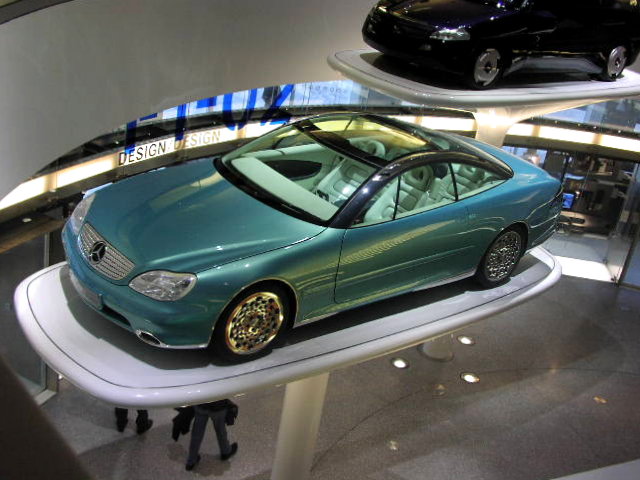
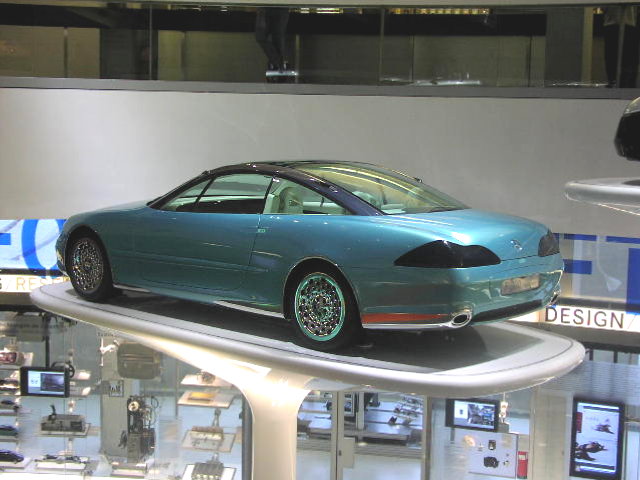 Mercedes-Benz F 200 Imagination – two-door coupé introduced in 1996 Paris Motor Show, preview of 1999 S-Class (W220)
Mercedes-Benz F 200 Imagination – two-door coupé introduced in 1996 Paris Motor Show, preview of 1999 S-Class (W220) - Mercedes-Benz F 300 Life Jet – three-wheel car/motorcycle unveiled in 1997 Frankfurt Motor Show
- Mercedes-Benz Vision SLR – prototype of Mercedes-Benz SLR McLaren, unveiled in 1999 North American International Auto Show
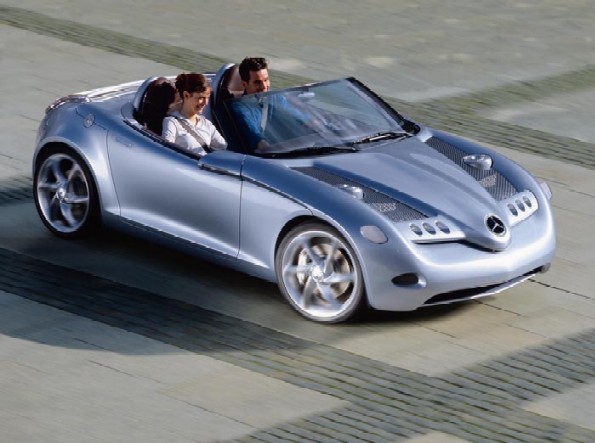 Mercedes-Benz Vision SLA – convertible with details of the SLR, but based on the A-Class platform, unveiled in 2000 North American International Auto Show
Mercedes-Benz Vision SLA – convertible with details of the SLR, but based on the A-Class platform, unveiled in 2000 North American International Auto Show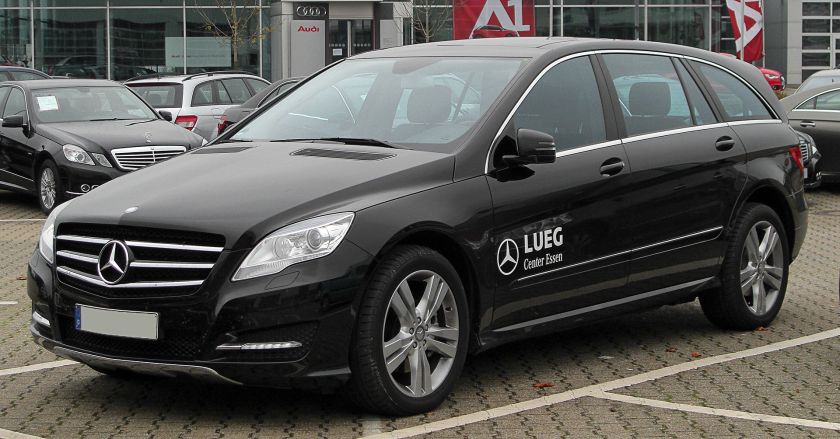 Mercedes-Benz Vision GST – car shown in 2002 North American International Auto Show, preview of R-Class
Mercedes-Benz Vision GST – car shown in 2002 North American International Auto Show, preview of R-Class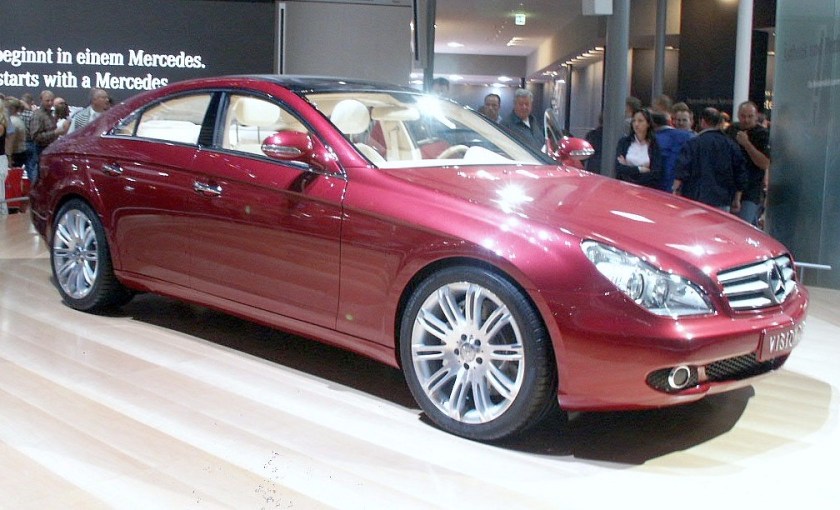 Mercedes-Benz Vision CLS 2003
Mercedes-Benz Vision CLS 2003
Mercedes-Benz F 400 Carving – a two-seat roadster unveiled in 2002 Tokyo Motor Show
- Mercedes Benz F 500 Mind – four-door fastback saloon unveiled in 2003 Tokyo Motor Show
- Mercedes-Benz F 600 HYGENIUS – compact fuel cell car, unveiled in 2005 Tokyo Motor Show
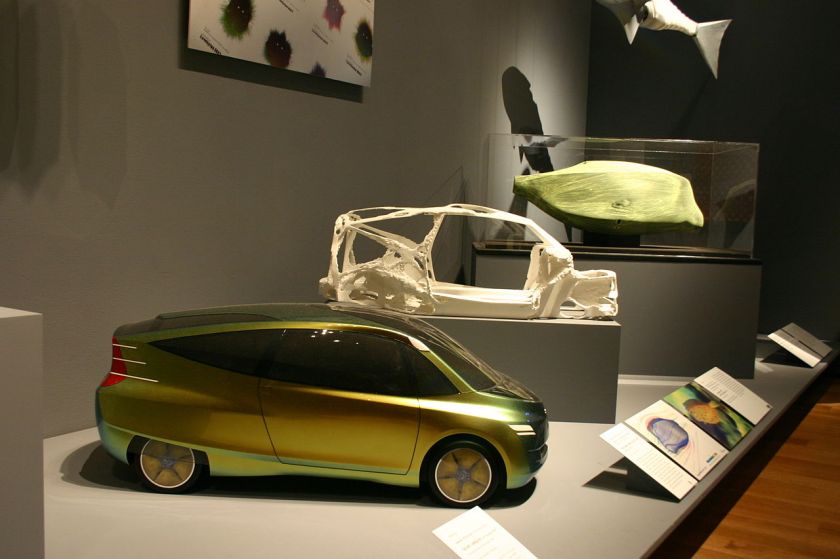
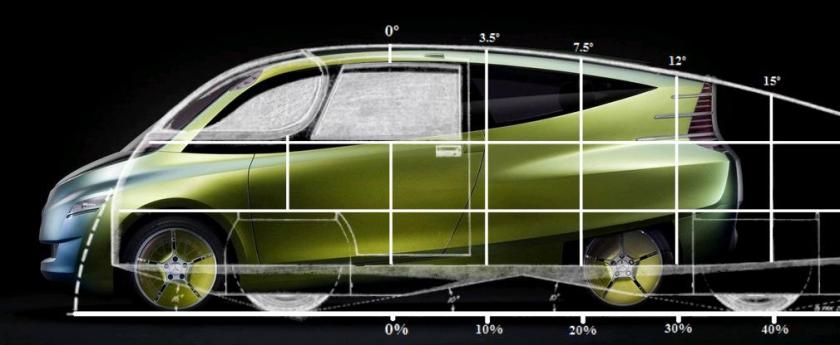
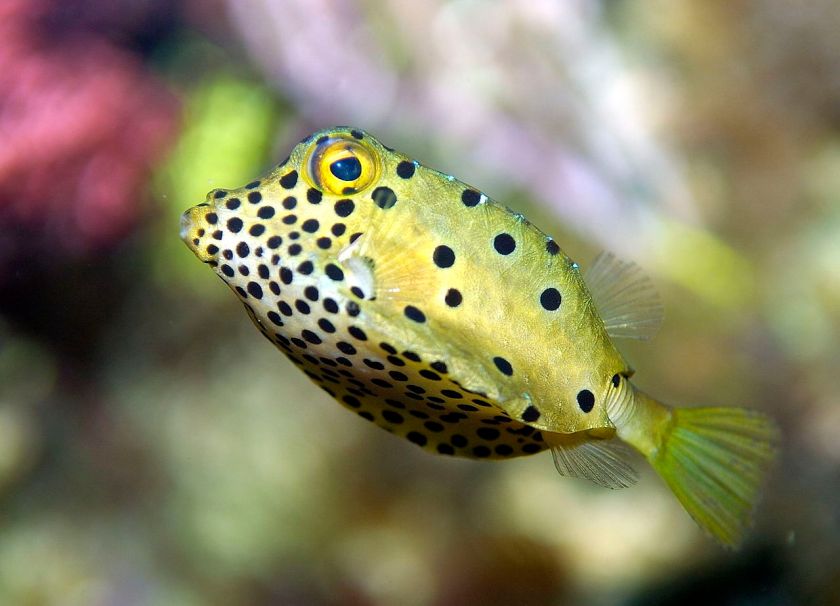 Mercedes-Benz Bionic – car unveiled in 2005 DaimlerChrysler Innovation Symposium in Washington, modeled after boxfish
Mercedes-Benz Bionic – car unveiled in 2005 DaimlerChrysler Innovation Symposium in Washington, modeled after boxfish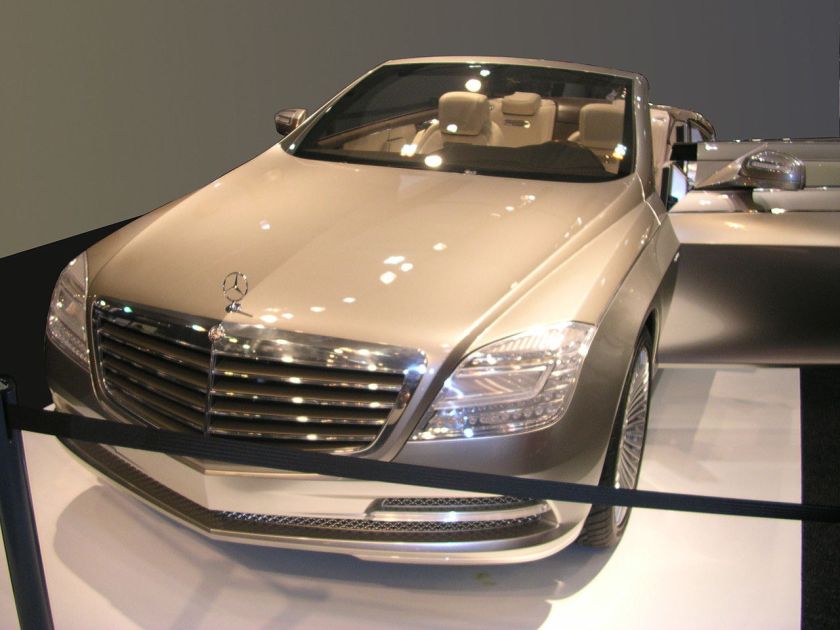 Mercedes-Benz Ocean Drive – a four-door convertible based on the S600, shown in 2007
Mercedes-Benz Ocean Drive – a four-door convertible based on the S600, shown in 2007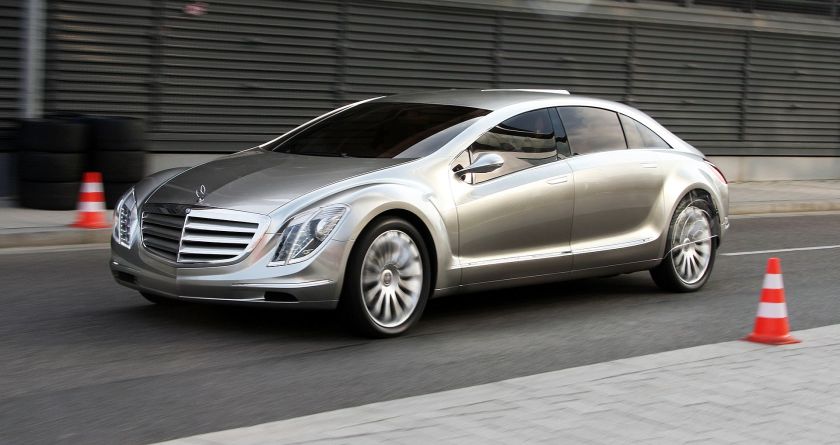 Mercedes-Benz F700 – large luxury saloon featuring the small capacity / high output DiesOtto engine, unveiled at the 2007 Frankfurt Motor Show.
Mercedes-Benz F700 – large luxury saloon featuring the small capacity / high output DiesOtto engine, unveiled at the 2007 Frankfurt Motor Show.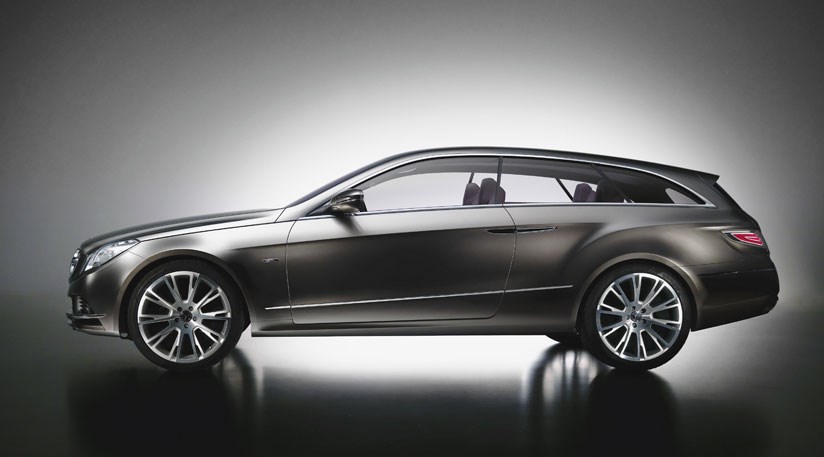 Mercedes-Benz Concept FASCINATION – shooting-brake giving a preview of the 2010 E-Class (W212), unveiled at 2008 Paris Motor Show
Mercedes-Benz Concept FASCINATION – shooting-brake giving a preview of the 2010 E-Class (W212), unveiled at 2008 Paris Motor Show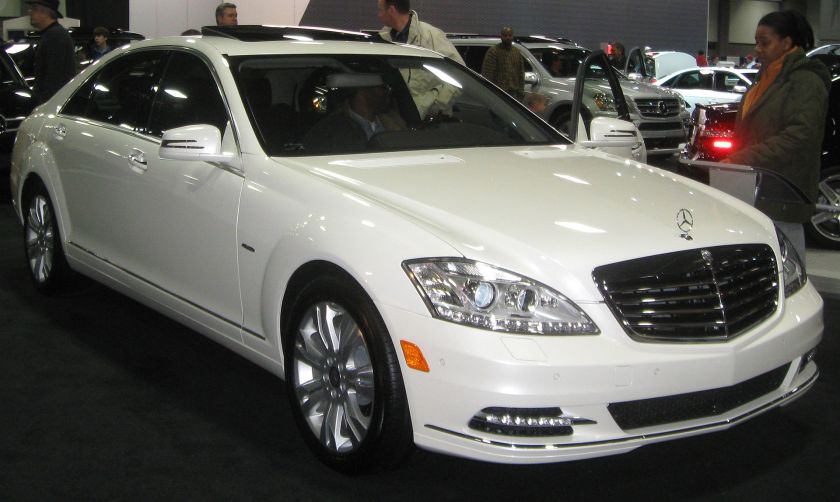 Mercedes-Benz S 400 BlueHYBRID 2010
Mercedes-Benz S 400 BlueHYBRID 2010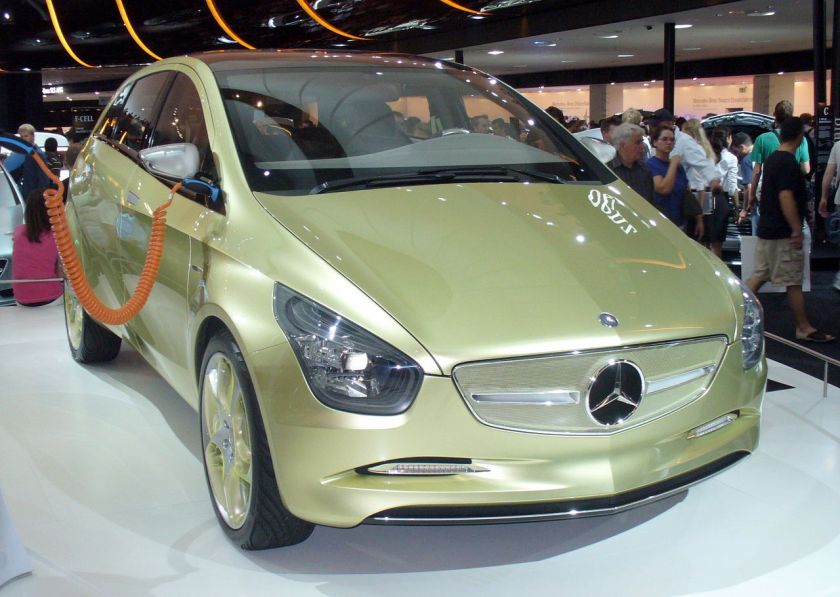
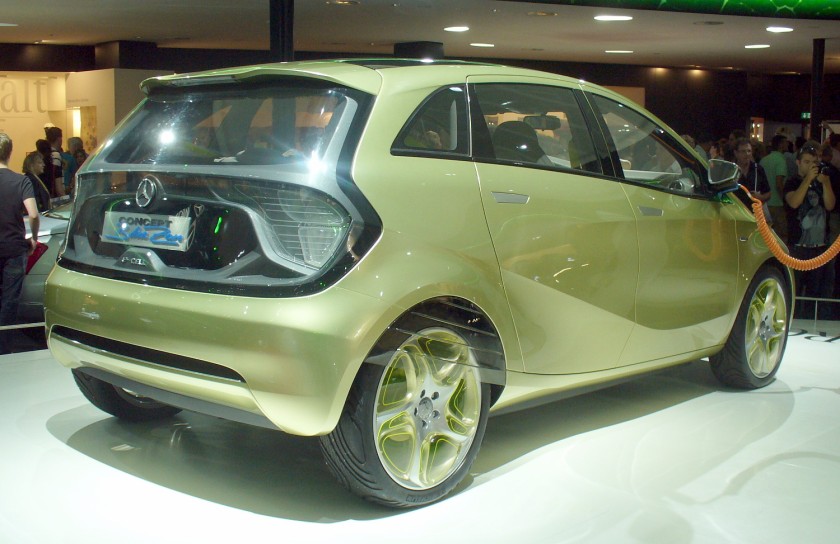 Mercedes-Benz BlueZERO (2009)
Mercedes-Benz BlueZERO (2009)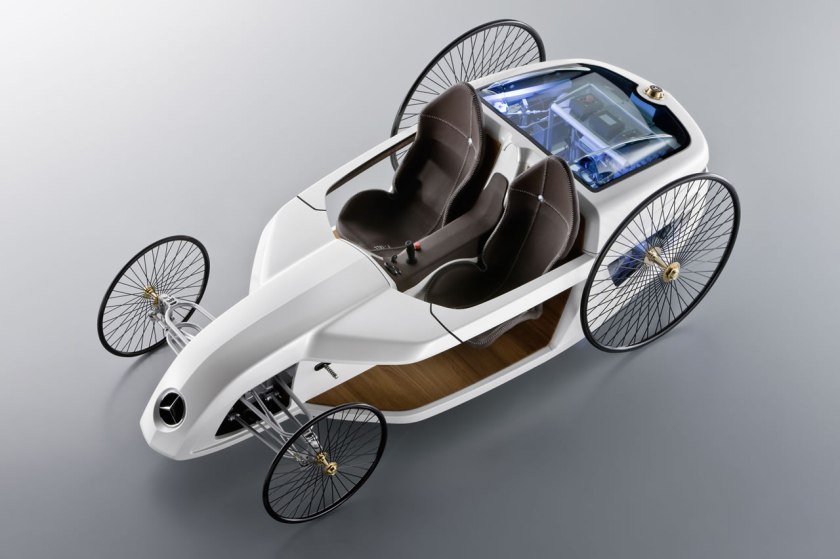 Mercedes-Benz F-Cell Roadster – open two-seater roadster, 2009
Mercedes-Benz F-Cell Roadster – open two-seater roadster, 2009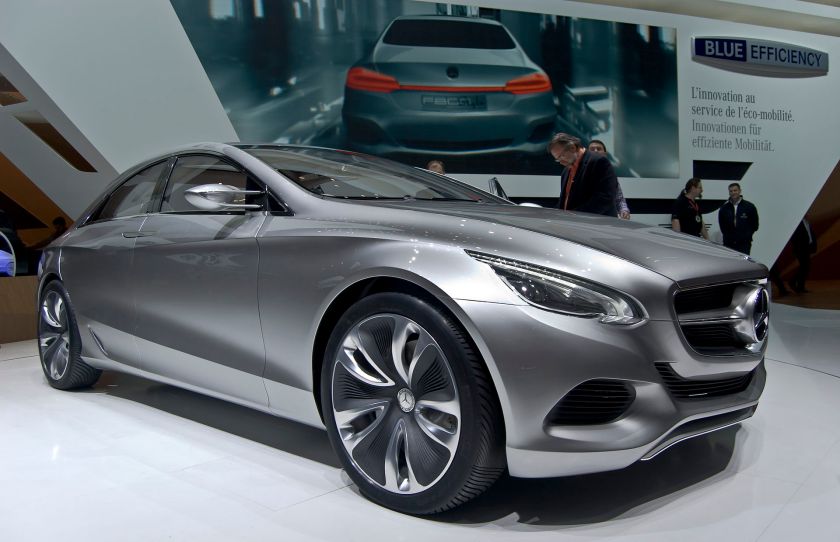 Mercedes-Benz F 800 Style – four-door sedan shown in 2010 Geneva Motor Show
Mercedes-Benz F 800 Style – four-door sedan shown in 2010 Geneva Motor Show - Mercedes-Benz BIOME
- Mercedes-Benz BlitzenBenz (2010)
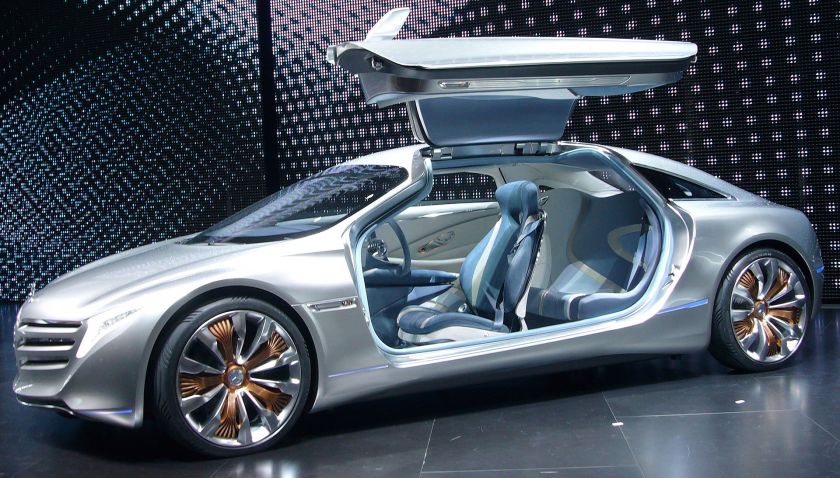 Mercedes-Benz F 125 – experimental luxury vehicle shown in 2011 2011 Mercedes Benz Silver Lightning Mercedes Benz Silver Lightning (2011)
Mercedes-Benz F 125 – experimental luxury vehicle shown in 2011 2011 Mercedes Benz Silver Lightning Mercedes Benz Silver Lightning (2011) - Mercedes-Benz Unimog Concept (2011)
- Mercedes-Benz Ener-G-Force (2012)
- Mercedes-Benz Concept GLA SUV
- Mercedes-Benz AMG Vision Grand Turismo (2013)
- SF1 Mercedes-Benz Concept Car
- Mercedes Benz Vision G-Code
- Mercedes-Benz Intelligent Aerodynamic Automobile
- Mercedes-Benz F1015
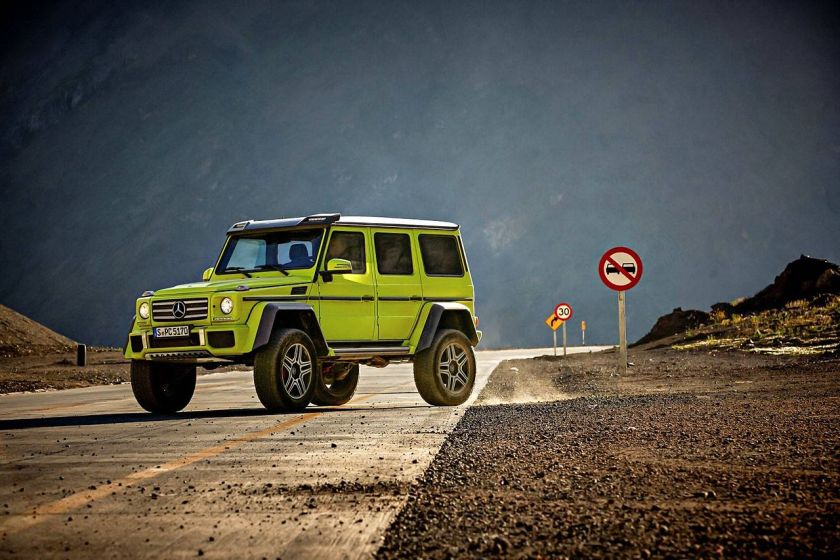
-
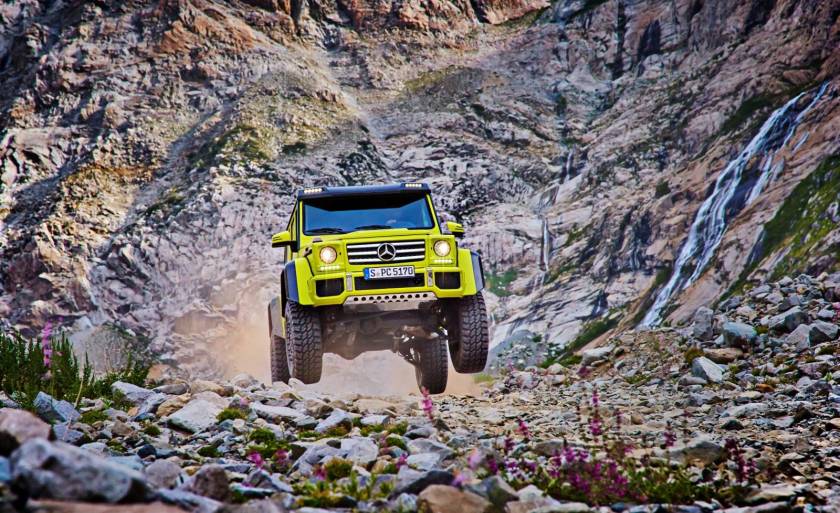
Mercedes-Benz G500 4×4^2 Showcar 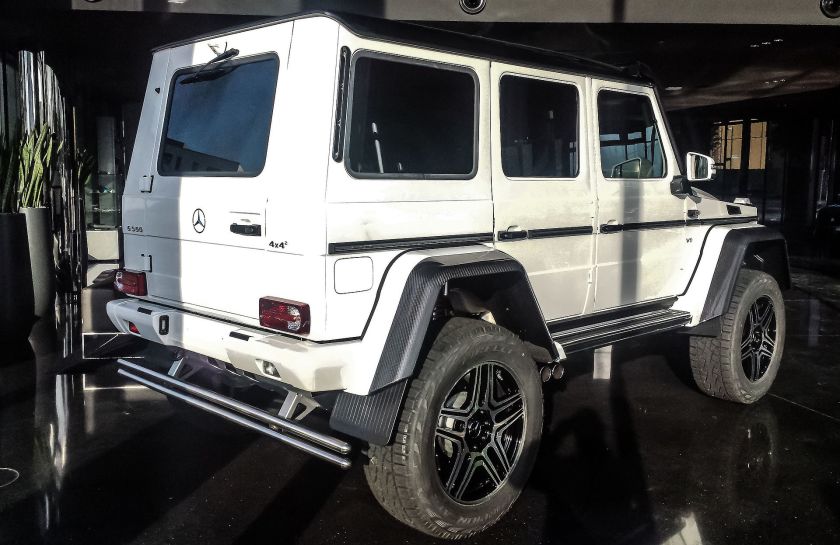 Mercedes-Benz G500 4×4² (2015)
Mercedes-Benz G500 4×4² (2015)
Race cars
See Mercedes-Benz in motorsport
- Willhelm Bauer’s Daimler racer
- Jellinek’ Daimler 35 PS Mercedes
- Blitzen Benz 1909, achieved 226.91 km/h (141.94 mph) in November 1909
- Benz Tropfenwagen (tear-drop) 1923
- Mercedes-Benz SSK Rennwagen version (1928 to 1932)
- Mercedes-Benz W125 Rekordwagen – 1937
- Mercedes-Benz T80 – experimental racing car developed for high speed in 1939
- Sauber Mercedes-Benz C9 – 1987
- Mercedes-Benz CLK GTR – racing car primarily, 25 production cars made to meet regulation
- Mercedes-Benz CLR (1999)
- Mercedes-Benz C-Coupé DTM (2011)
- Mercedes-Benz AMG C-Class DTM (W203)
- Mercedes-Benz AMG C-Class DTM (W204)
- Mercedes-Benz 300SEL 6.3
- Silver Arrows
- Mercedes-Benz W125
- Mercedes-Benz W154
- Mercedes-Benz W165
- Mercedes-Benz W194
- Mercedes-Benz W196
- Mercedes-Benz 300 SLR (W196S)
- Mercedes-Benz W25
F1
Mercedes-Benz trucks
Including really big trucks for trailer aka semi’s
1926-1944
The first Mercedes-Benz truck range, presented at the 1926 Berlin Motor Show (October) and at the 1927 International Motor Show for Trucks and Special Vehicles in Cologne (May) included three basic models with the payloads of 1.5, 2.5 and 5 tons. Each model was available with a standard and a low-frame chassis. Low chassis made sense especially that time to make easier loading and unloading of the vehicle. Also the low chassis has been used to build the buses. The models with the standard chassis were L1, L2 and L5 (L stood for Lastwagen, German word for a truck, and the digit stood for the rated payload in tons). The models with the low chassis were N1, N2 and NJ5/N5 (N stood for Niederwagen, German word means a low car). The trucks were equipped with the 4 cylinders petrol engines (M14, M2 and M5), developing 45HP, 55HP and 70 HP. Mercedes-Benz L1 and L2 were the new models, but Mercedes-Benz L5 truck was basically a continuation of famous Benz 5CN truck, which was developed before the merge of Benz & Cie and Daimler-Motoren-Gesellschaft companies.
In 1927 Mercedes-Benz presented its first diesel engine (OM5), which immediately became a sensation. It was the world’s first six-cylinder diesel engine, installed on the commercial vehicle. Also from 1927 Mercedes-Benz offered the more powerful 6 cylinders petrol engines (M16, M26 and M36) developing 50HP, 70HP and 100 HP. Four cylinders engines were discontinued only one year later. Therefore, in 1927-1928 most of the trucks from the series L1,L2,L5 were available with 4 or 6 cylinders engines. To distinguish that, 6 cylinders versions of the trucks were referred sometimes as, for example, L1/6 or N2/6.
In 1927-1928 Mercedes-Benz also expanded the range of the truck models, adding the small model L3/4 with the payload of 750 kg (3/4 ton), which was developed from the passenger car Typ 200 Nürnberg, and a heavy three axis model N56 with the payload 7-9 tons. The payloads of L1 and L2 models was increased with the new 6 cylinder engines from 1.5 to 1.75 tons (model L1/N1) and from 2.5 to 3.0-4.0 tons (model L2/N2). To fill the newly formed gap between L1 and L2 models, Mercedes-Benz offered new 2.5 tons model L45/N46 and (a bit later) 2.75/3.0 tons model L57/N58.
Resulting diversity of the trucks made an impressive lineup of Mercedes-Benz commercial vehicles, but also required a new, better system for their designations. In fact, by the year of 1930, only the model L5 still referred to its payload (5 tons). L1 model’s payload has been gradually increased up to 2 tons, L2 model’s payload – up to 4 tons, and L45/N46 and L57/N58 model names were not saying about their payload at all from the beginning, but were rather the company’s internal model designations. So in October 1930 a new system for the commercial vehicle designation has been introduced. Basically, instead of the one digit, standing for the rated payload in tons, a four digits number, standing for the rated payload in kg, has now been used. This number followed the same letter L for the trucks (as before), or the letters Lo (LO) for the low chassis, or the letter O for the buses (O stood for the German word Omnibus, what is translated as a bus). According to that, the model L1 was renamed to L2000, model L45 was renamed to L2500, model L57 was renamed to L3000, model L2 was renamed to L4000, model L5 was renamed to L5000 and the model N56 was renamed to L8500. This nomenclature has been used for more than 20 years, until 1954.
1945-1960
1990s
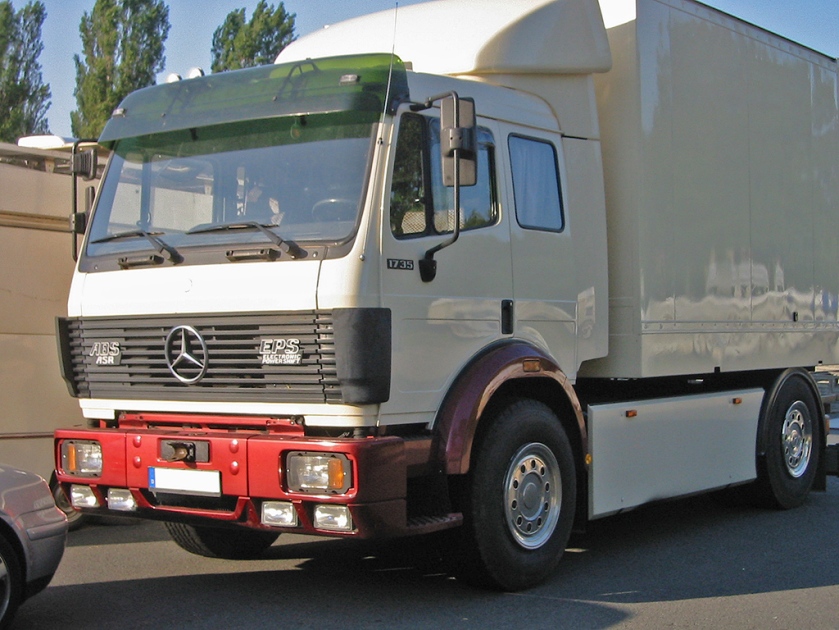
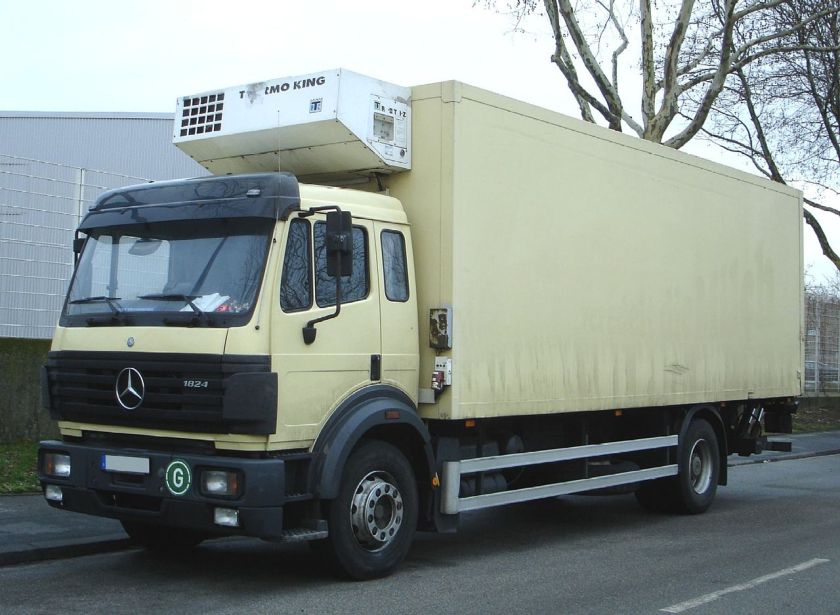 Mercedes-Benz SK (Schwere Klasse)
Mercedes-Benz SK (Schwere Klasse)
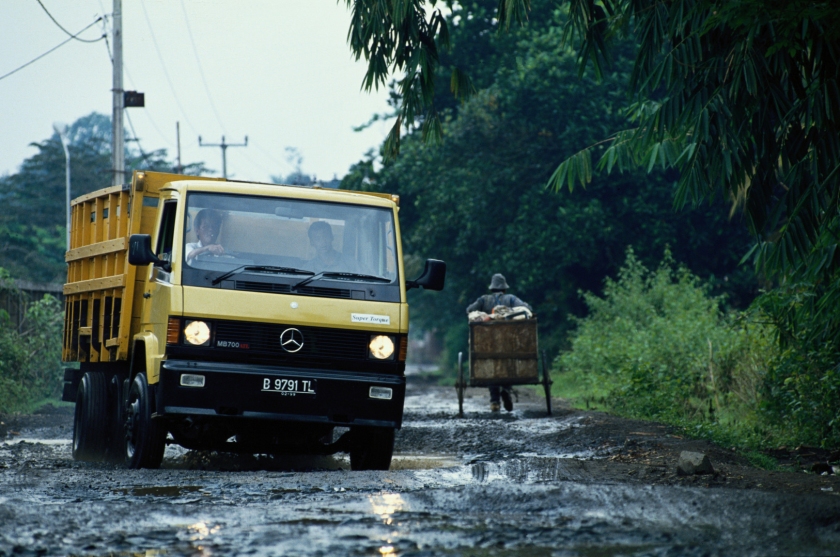
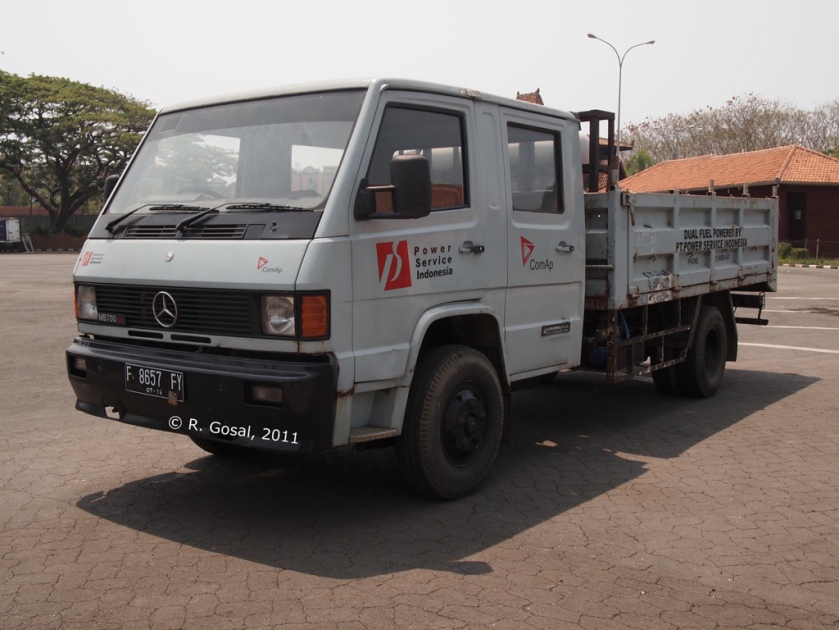
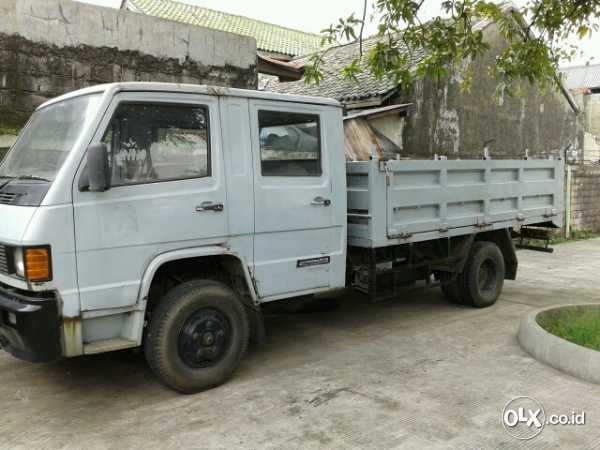 Mercedes-Benz MB700 (coe)
Mercedes-Benz MB700 (coe)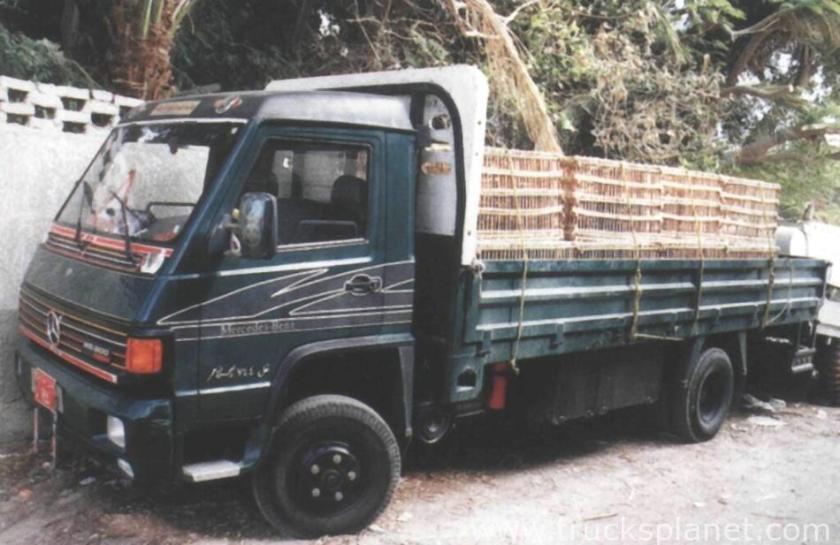
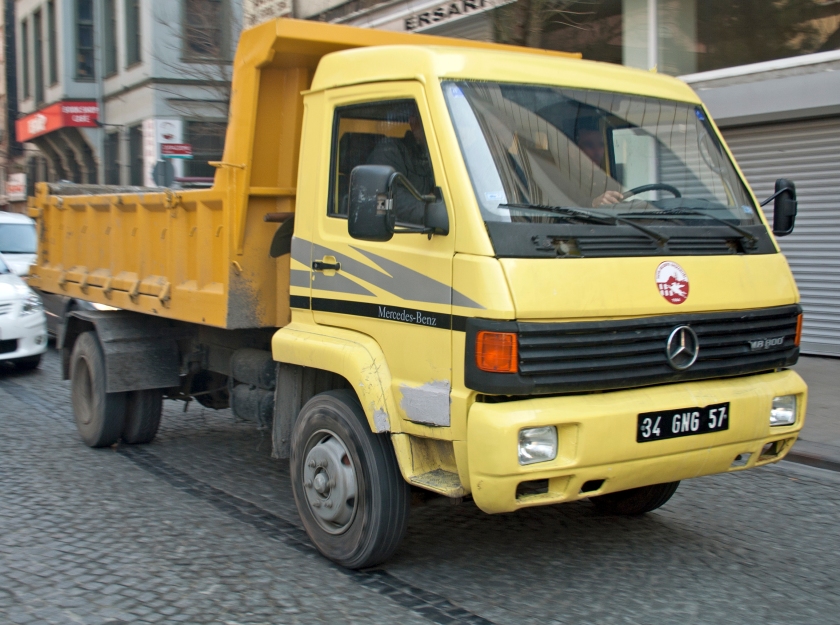
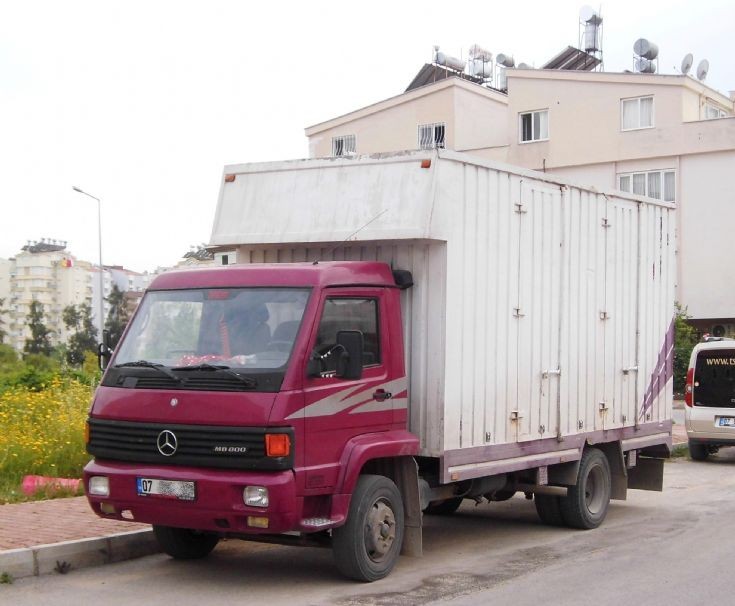
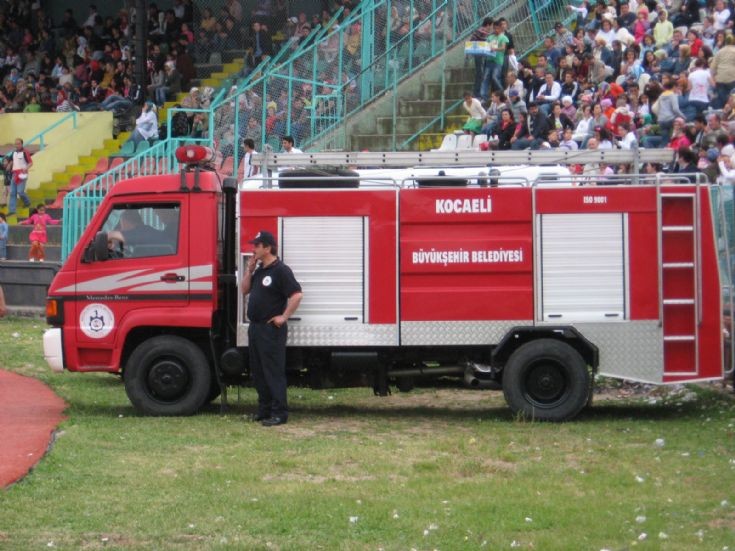
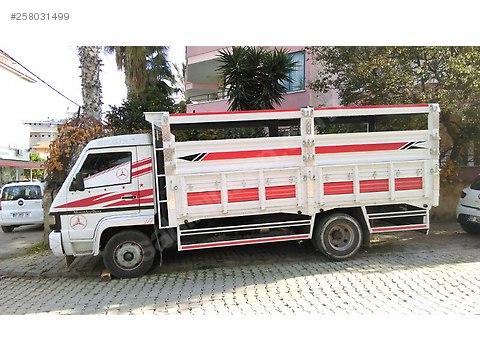
Mercedes-Benz MB800 (Built by Mercedes-Benz Türk since 1996, this five-ton cab-over truck uses an Indonesian cabin, a Brazilian engine, and a Spanish transmission)
2000s
Mercedes-Benz Arocs 6×6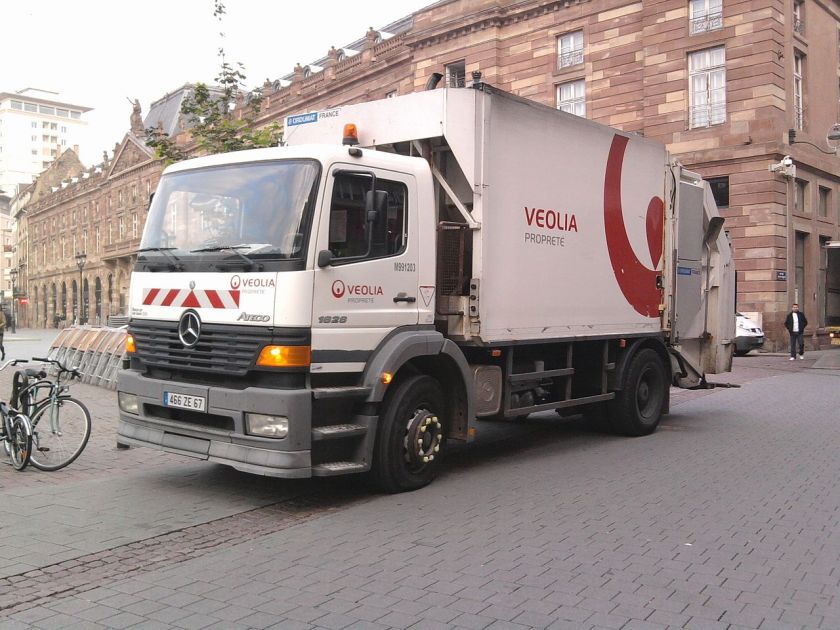 Pre facelift 1997 Mercedes Benz Atego
Pre facelift 1997 Mercedes Benz Atego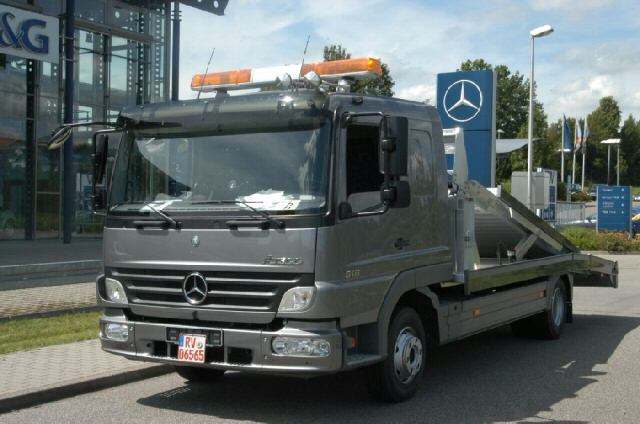 Mercedes Benz Atego Facelift front
Mercedes Benz Atego Facelift front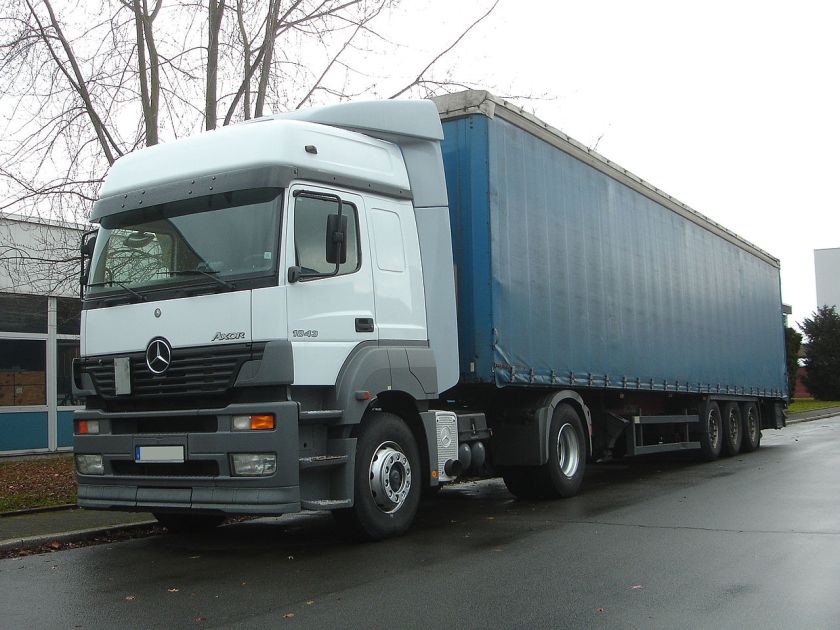
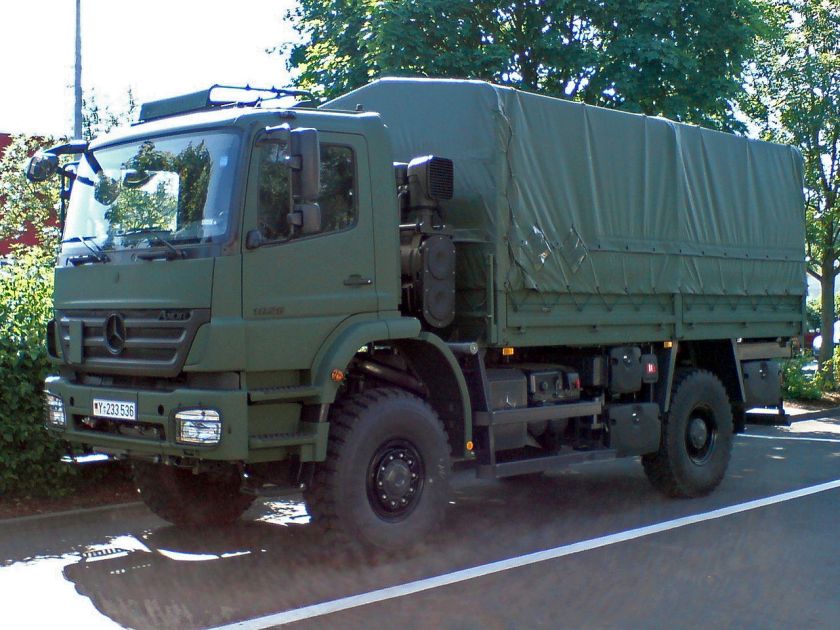
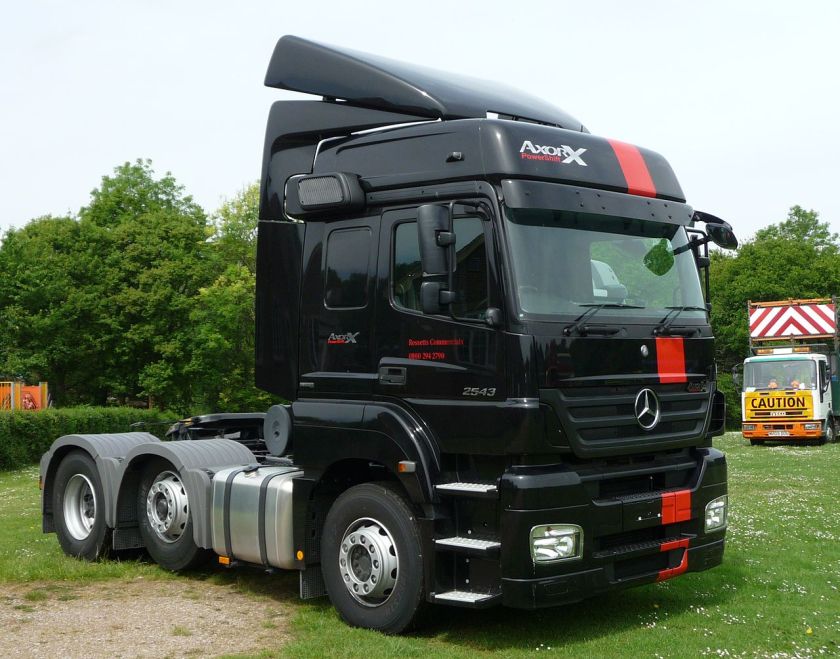 Mercedes-Benz Axor – mid-sized truck from 18 to 26 tonnes in rigid and articulated
Mercedes-Benz Axor – mid-sized truck from 18 to 26 tonnes in rigid and articulated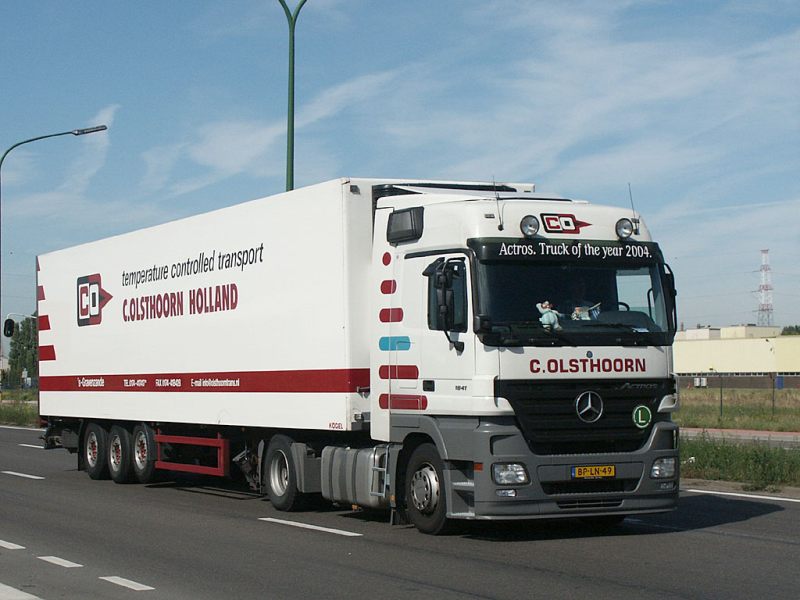
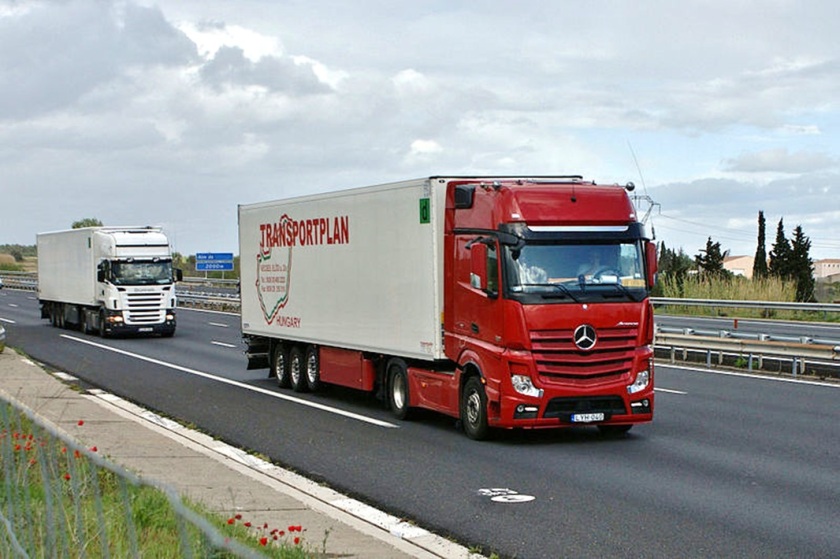
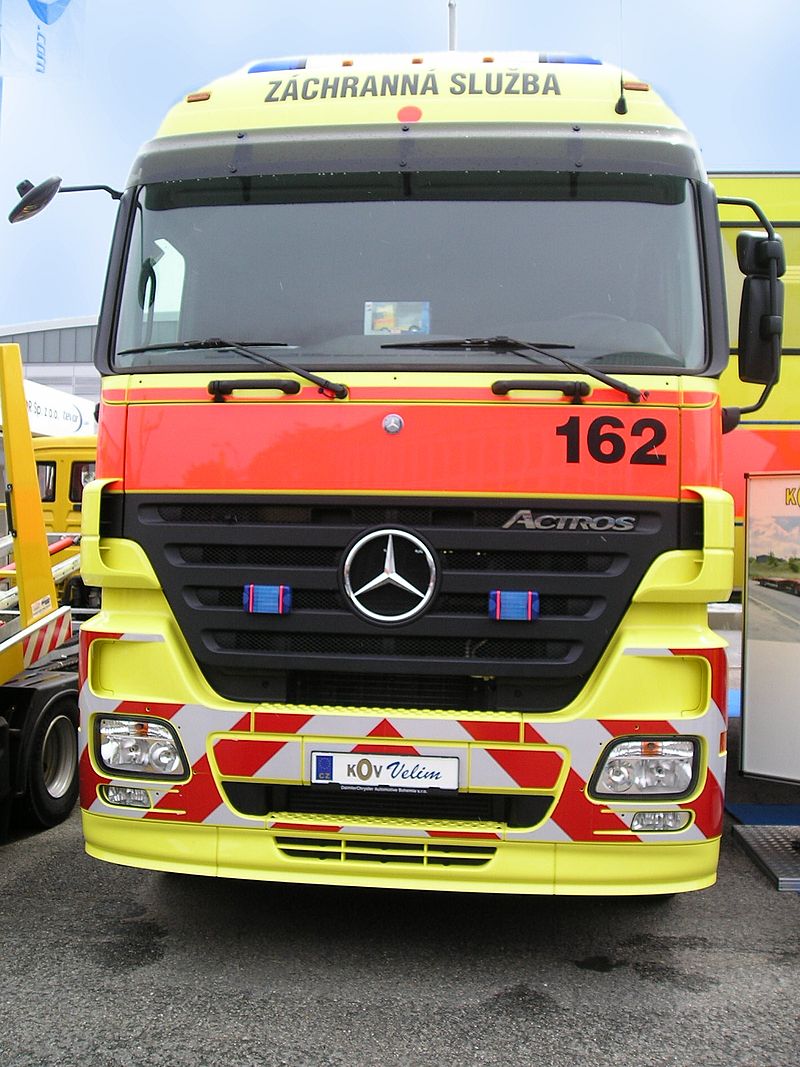
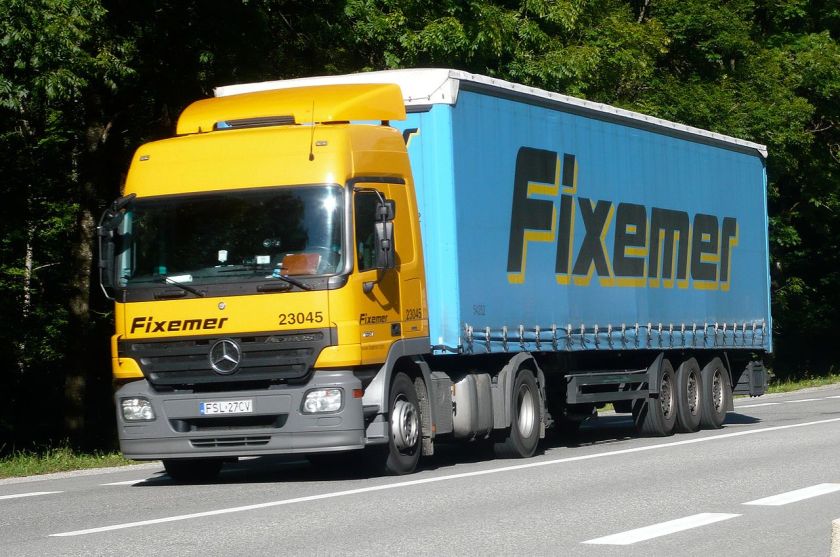
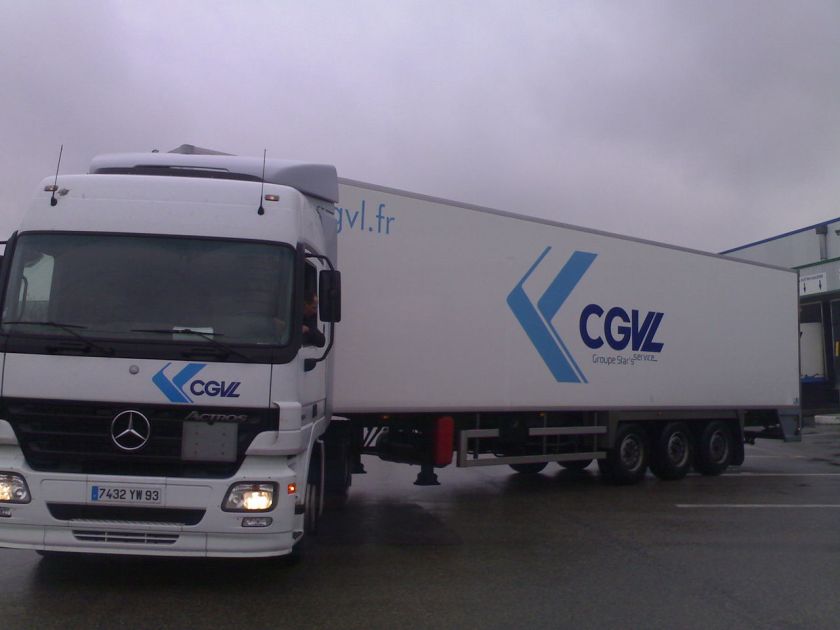
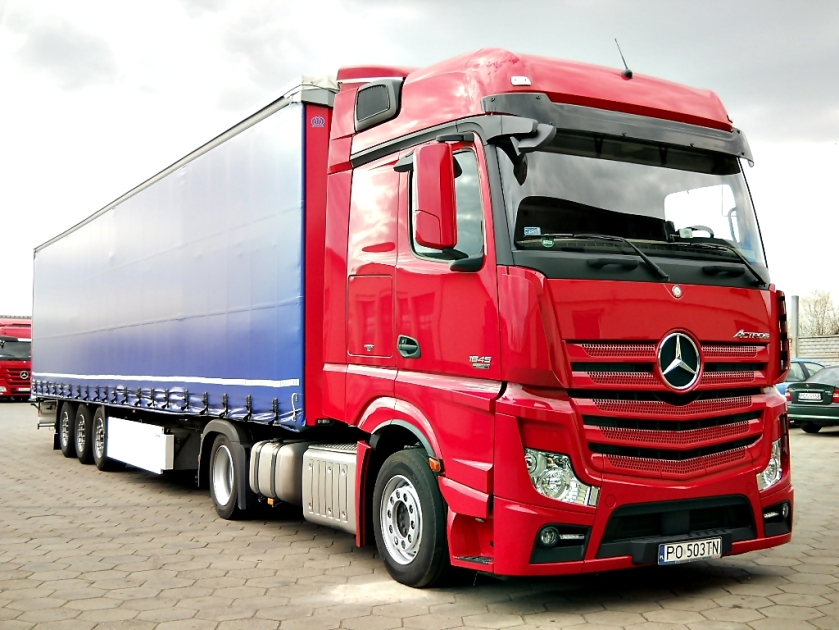
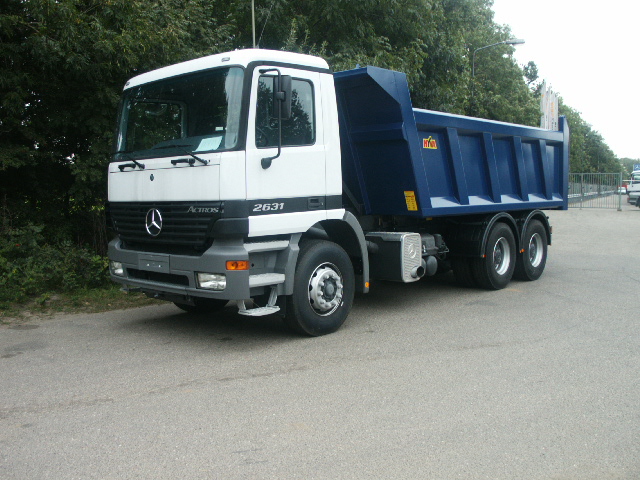
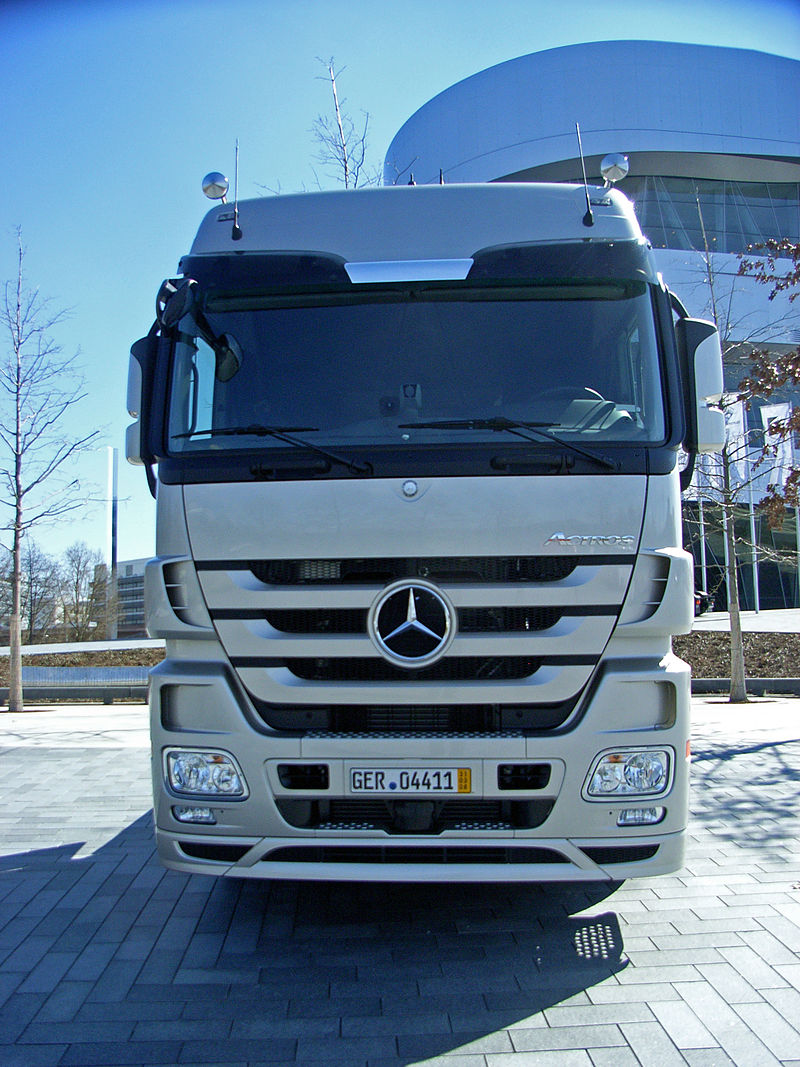
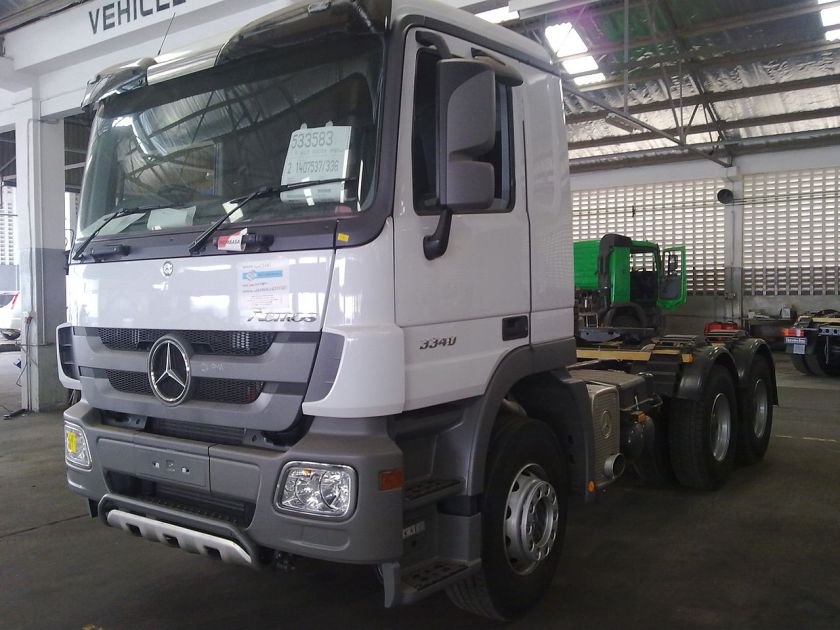
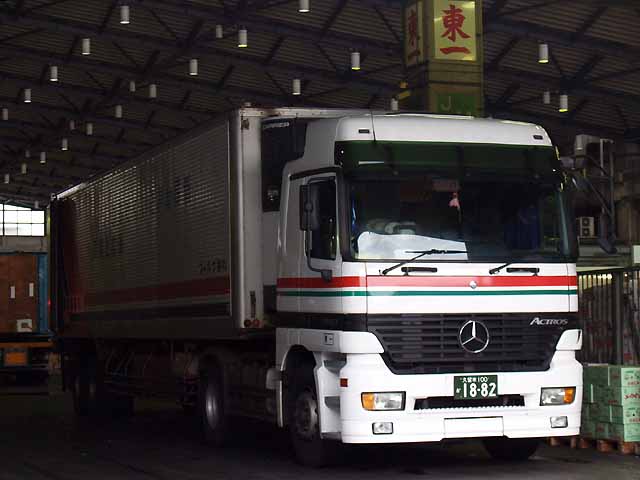
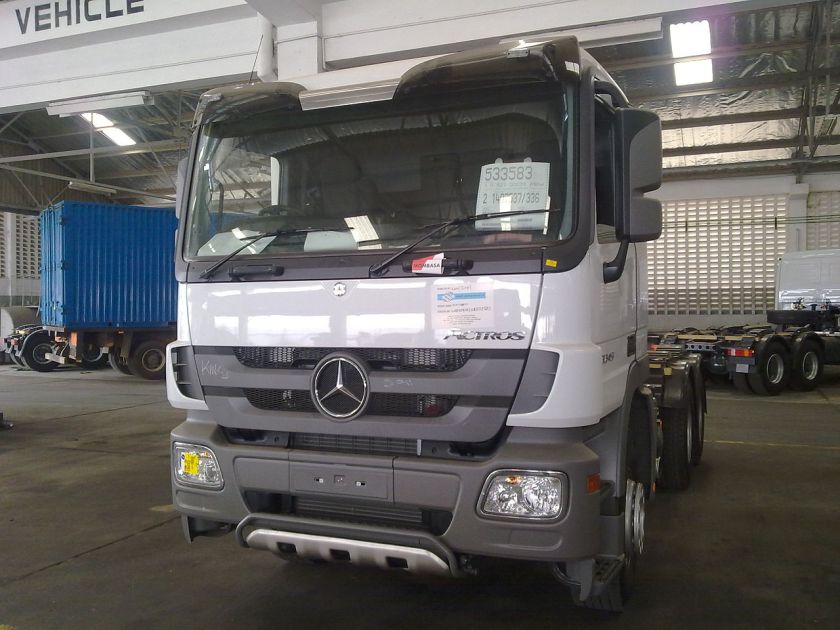
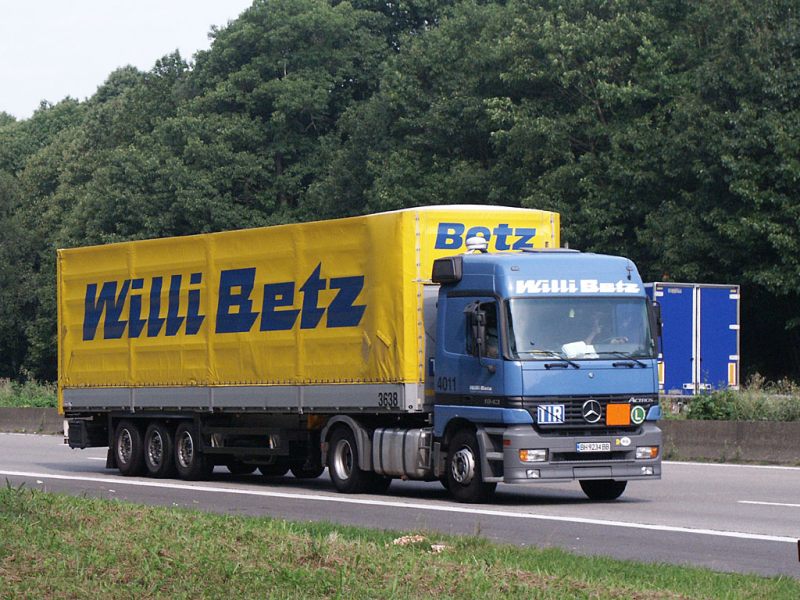 Mercedes Benz ActrosMercedes Benz ActrosMercedes-Benz Actros – heavy duty rigid and premium articulated — 18 to 250 tonnesMercedes Benz Actros Mercedes Benz Actros
Mercedes Benz ActrosMercedes Benz ActrosMercedes-Benz Actros – heavy duty rigid and premium articulated — 18 to 250 tonnesMercedes Benz Actros Mercedes Benz Actros
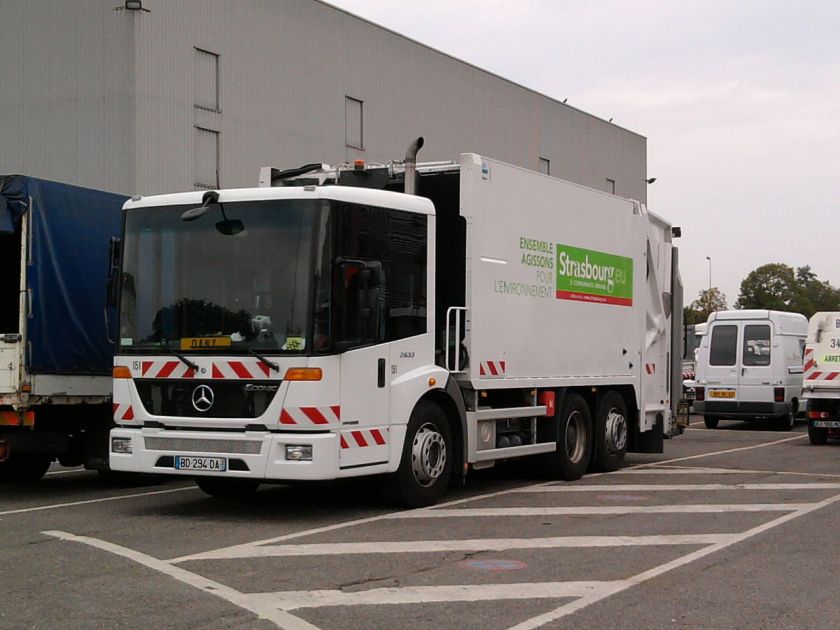
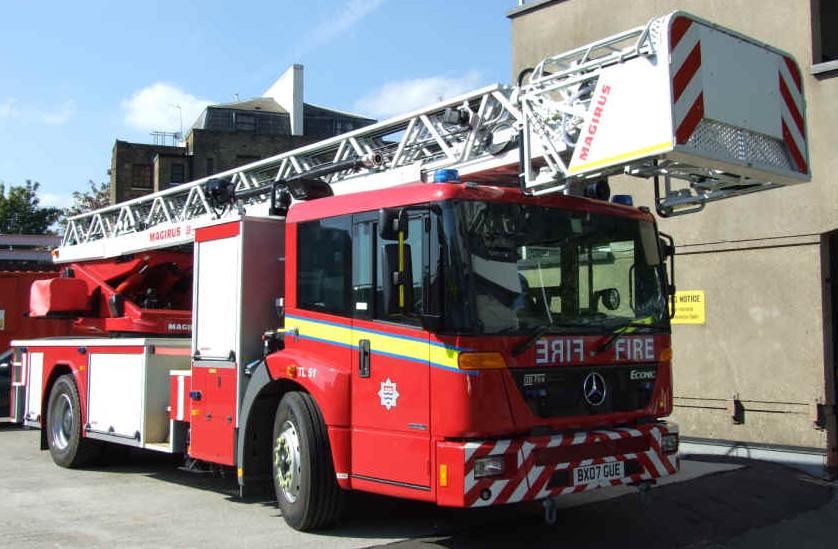 Mercedes-Benz Econic – low floor version of the Axor for refuse and specialist applications Mercedes Benz UnimogMercedes-Benz Unimog – for special purpose applications and transport across extreme terrain
Mercedes-Benz Econic – low floor version of the Axor for refuse and specialist applications Mercedes Benz UnimogMercedes-Benz Unimog – for special purpose applications and transport across extreme terrain
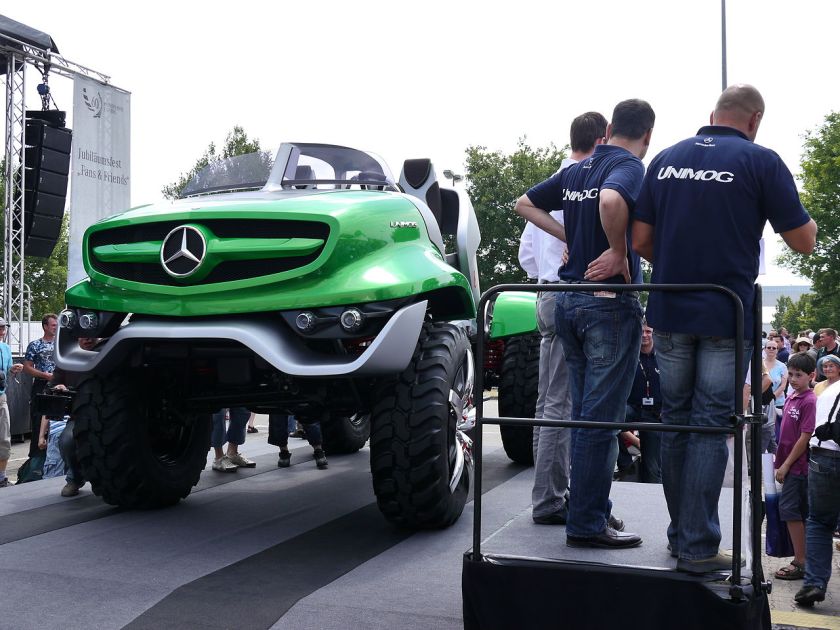
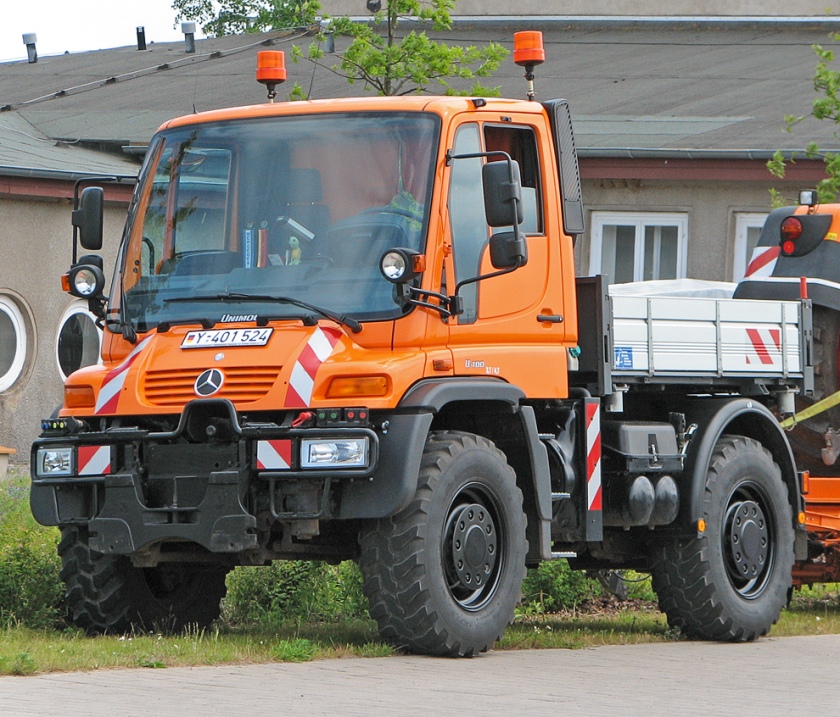
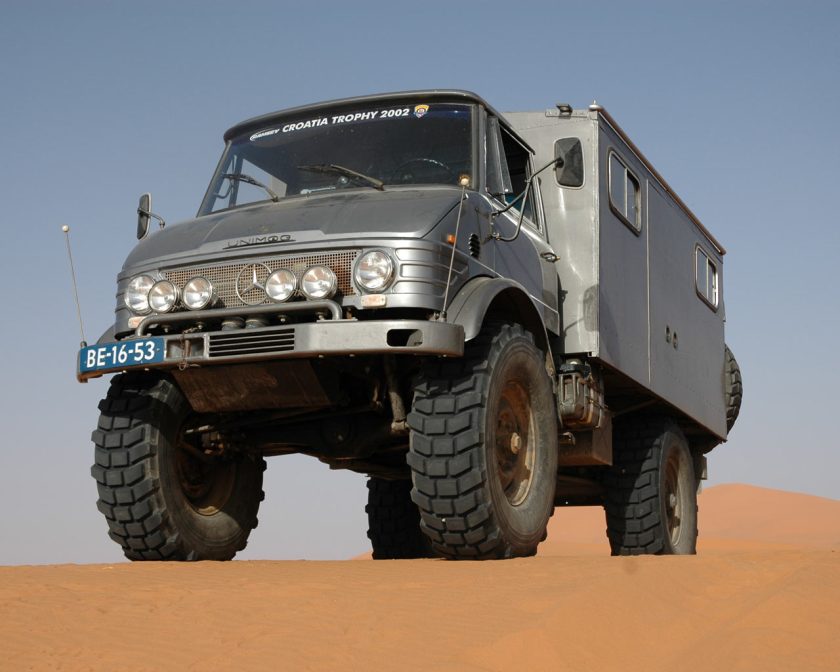
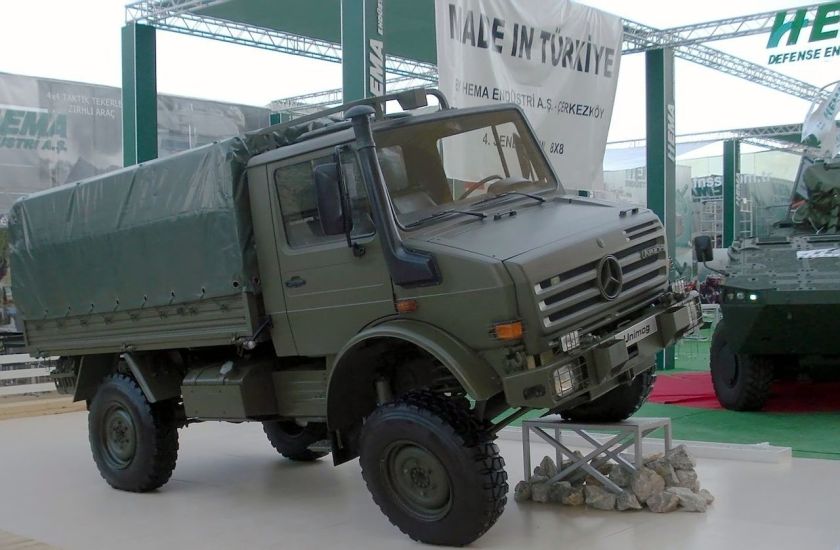
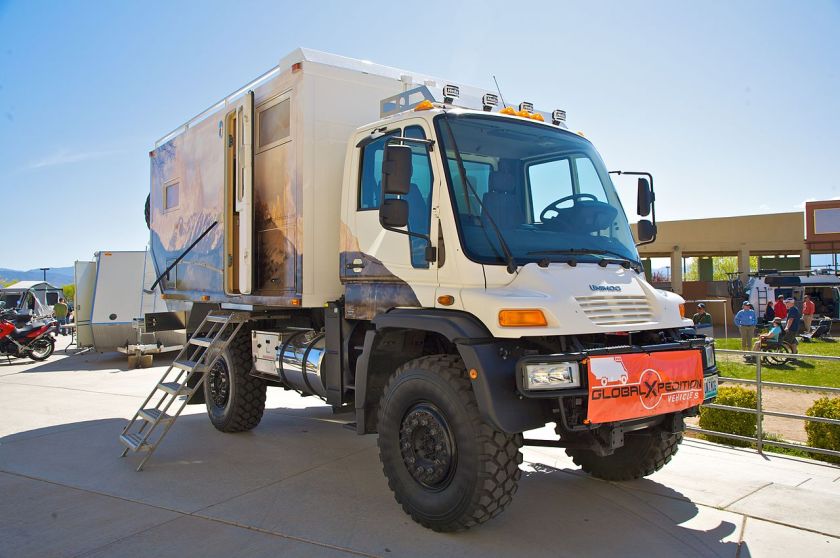
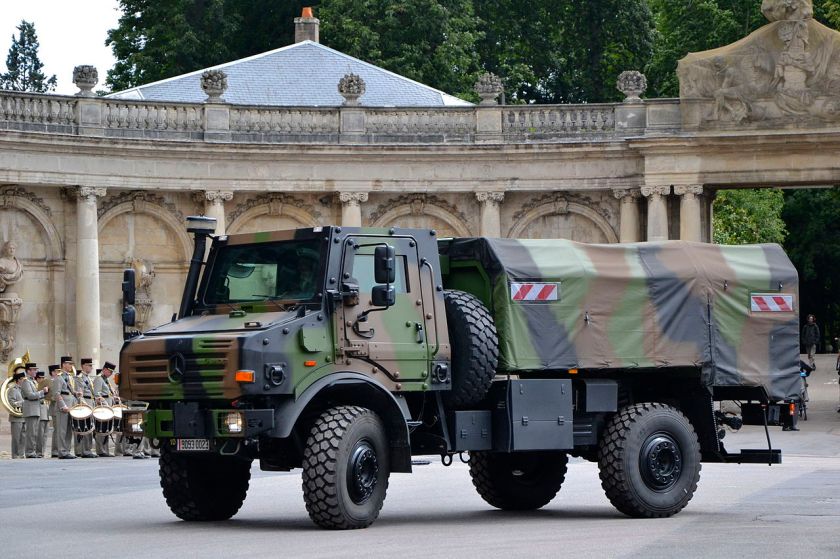
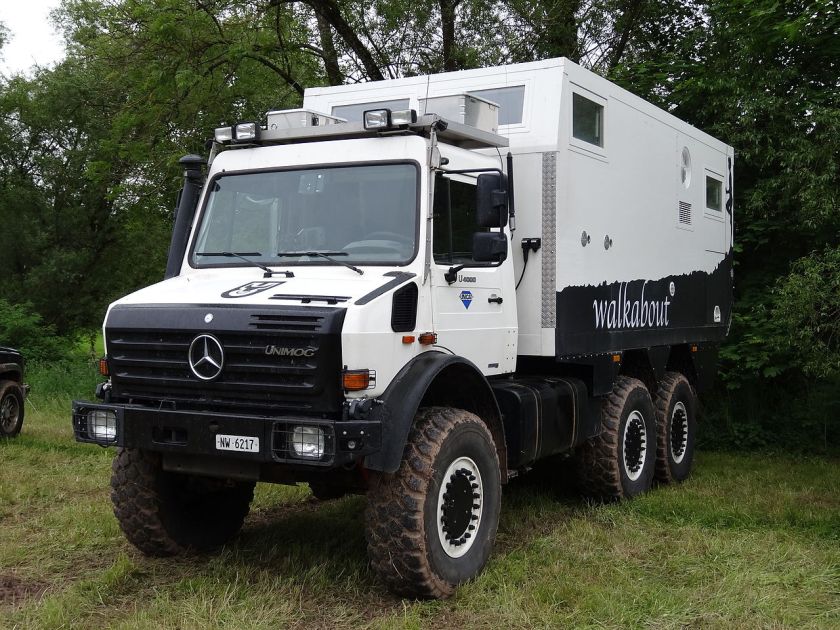 Mercedes Benz Unimog
Mercedes Benz Unimog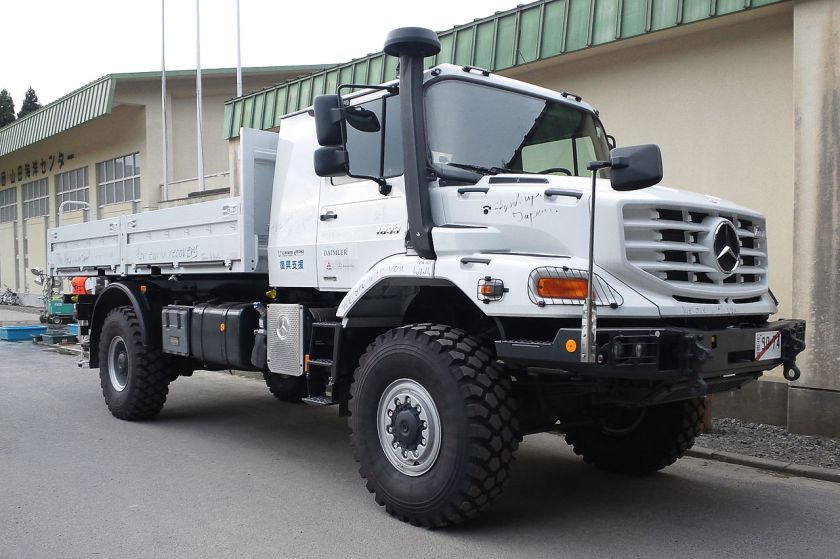
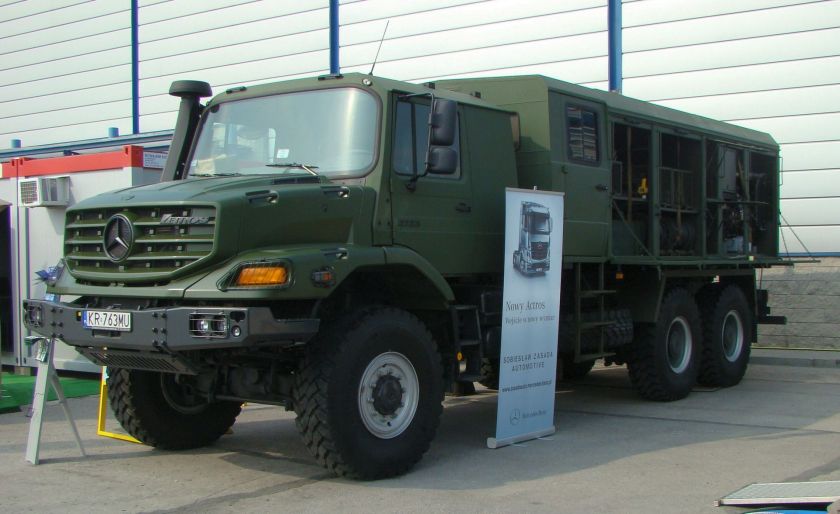
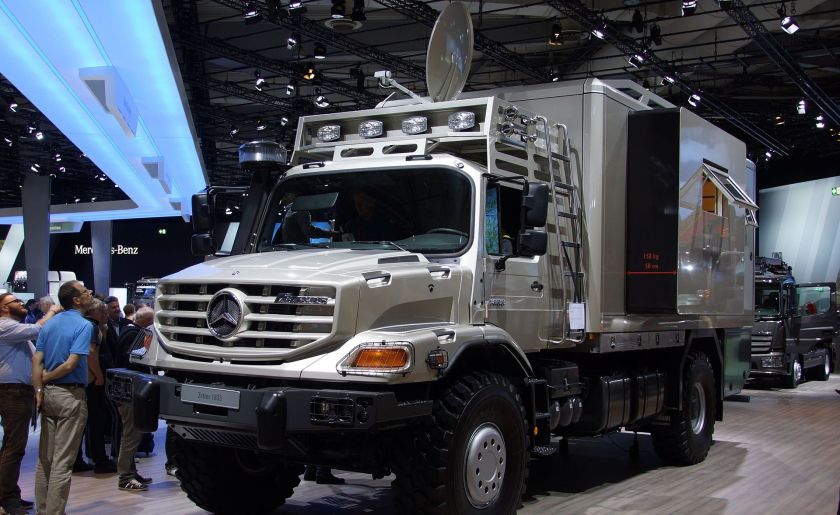
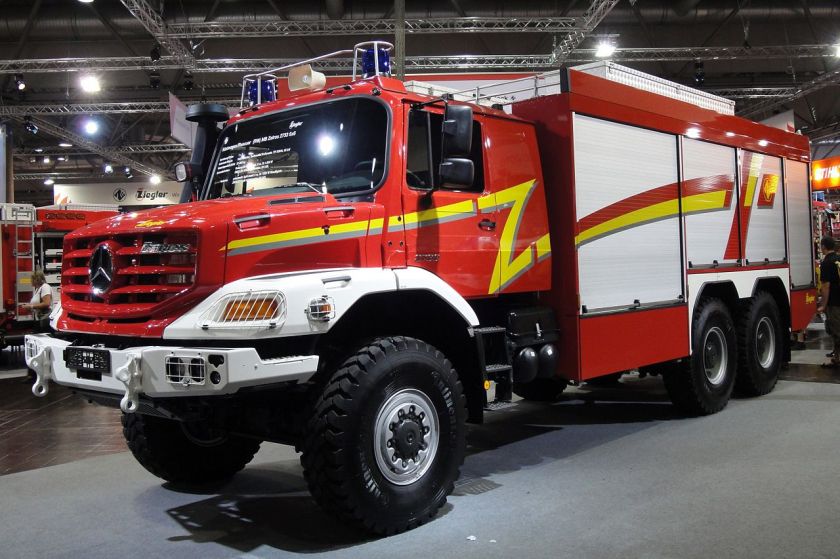
 Mercedes-Benz Zetros – off-road truck for extreme operations 1828L (F581) Mobile Casualty Treatment Centre 1517L Mobile Casualty Treatment Centre
Mercedes-Benz Zetros – off-road truck for extreme operations 1828L (F581) Mobile Casualty Treatment Centre 1517L Mobile Casualty Treatment Centre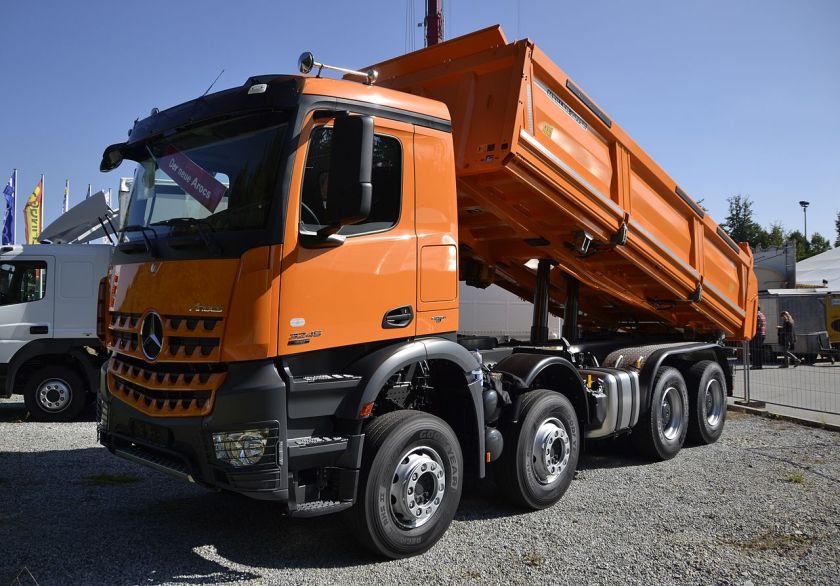
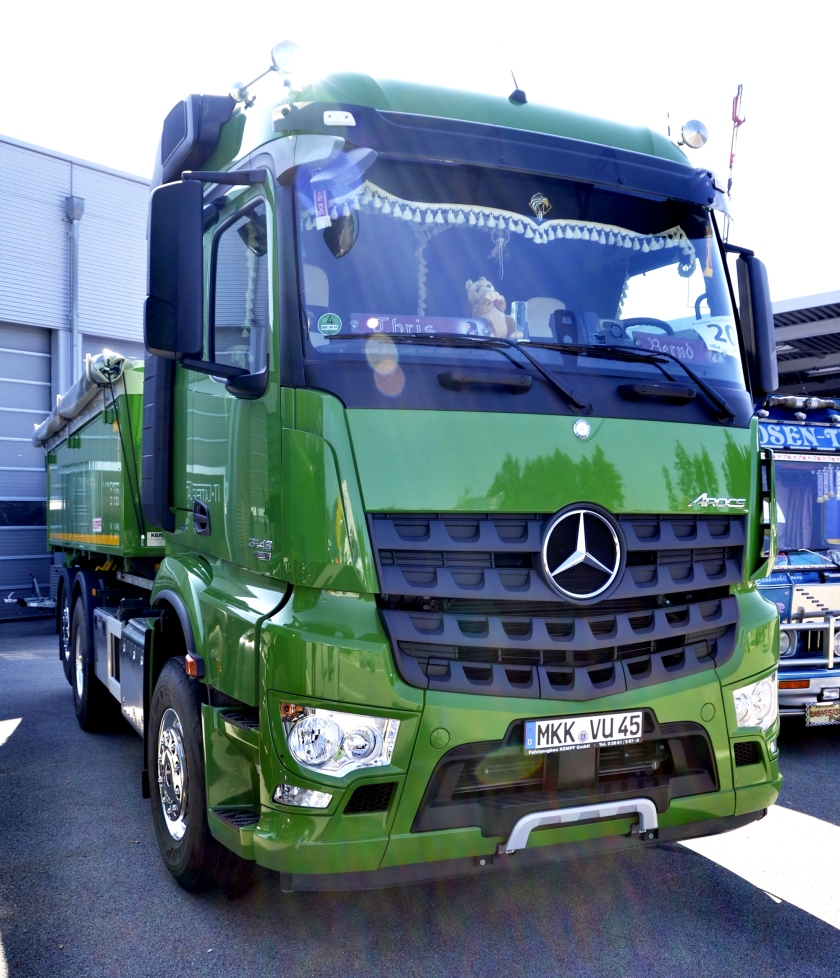 Mercedes-Benz Arocs 2013Mercedes-Benz models by type code
Mercedes-Benz Arocs 2013Mercedes-Benz models by type code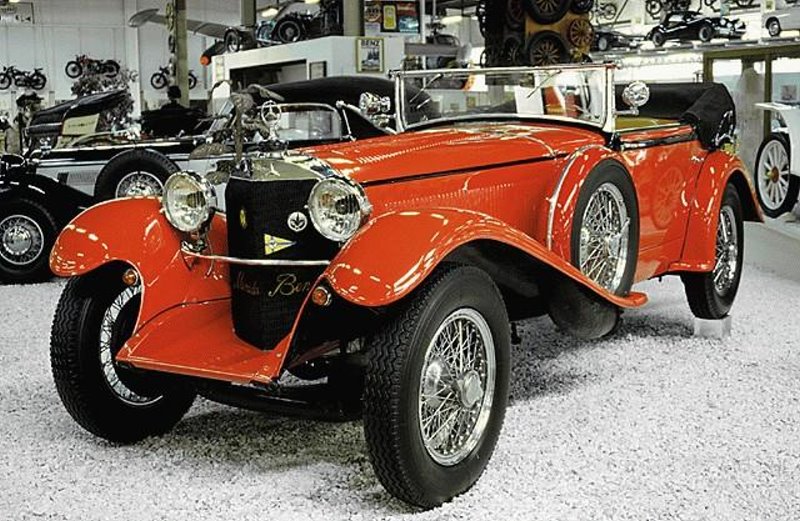 1926-28 Mercedes Benz 5-25 PS (W01 – W14) Typ 140 – 130 W01 1926 typ 140 (prototype)
1926-28 Mercedes Benz 5-25 PS (W01 – W14) Typ 140 – 130 W01 1926 typ 140 (prototype)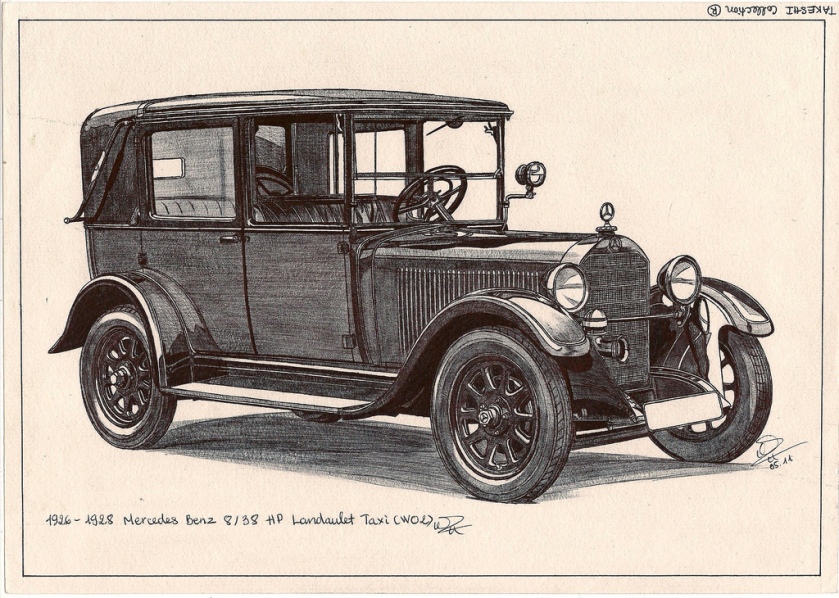 1926-28 Mercedes Benz 8-38 HP Landaulet Taxi (W02)
1926-28 Mercedes Benz 8-38 HP Landaulet Taxi (W02)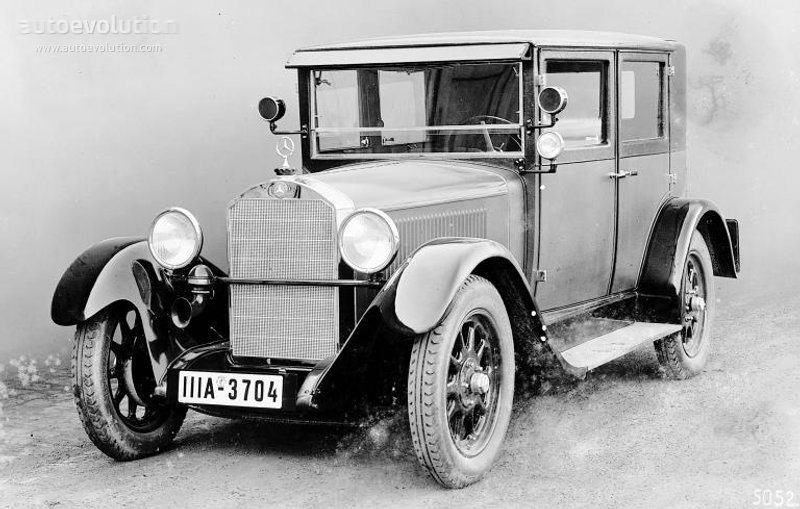 1926-28 MERCEDES BENZ 8-38 Typ 200 (W02)
1926-28 MERCEDES BENZ 8-38 Typ 200 (W02)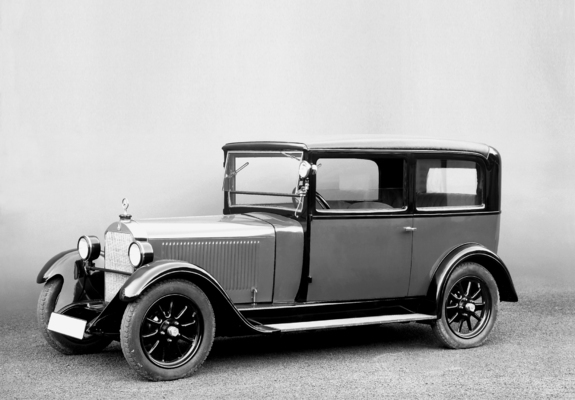 1927 Mercedes Benz 8-38hp (W02) Stuttgart 200
1927 Mercedes Benz 8-38hp (W02) Stuttgart 200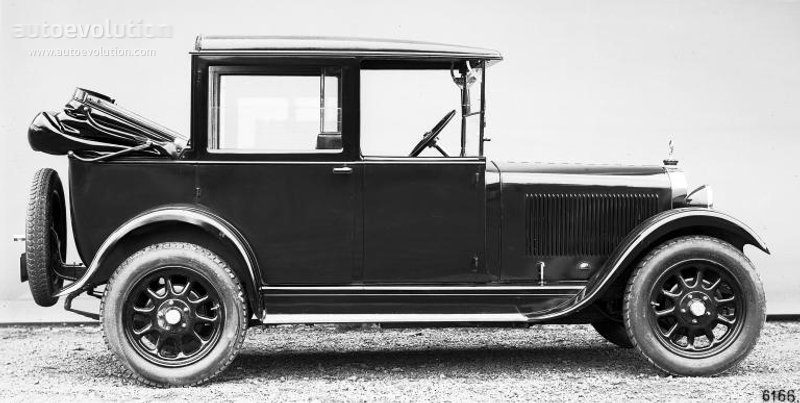 1926-28 MERCEDES BENZ 8-38 Typ 200 (W02)
1926-28 MERCEDES BENZ 8-38 Typ 200 (W02) 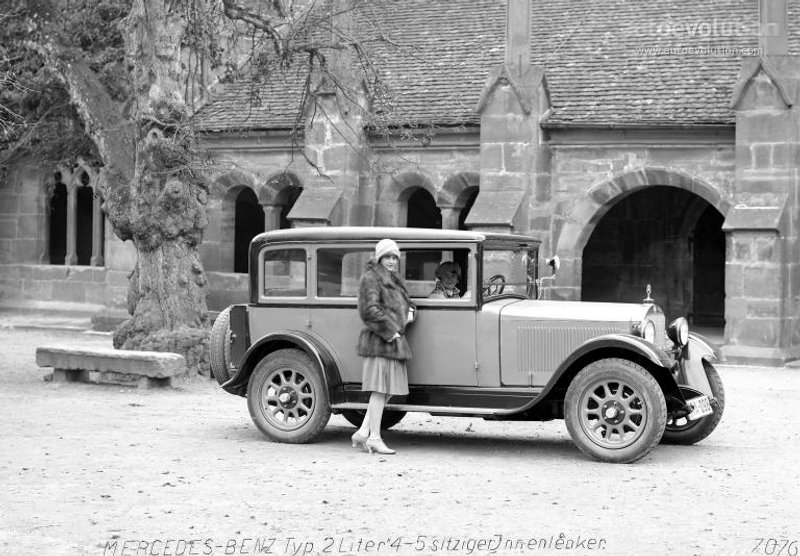 1928-33 MERCEDES BENZ 8-38 Typ Stuttgart 200 (W02)
1928-33 MERCEDES BENZ 8-38 Typ Stuttgart 200 (W02) 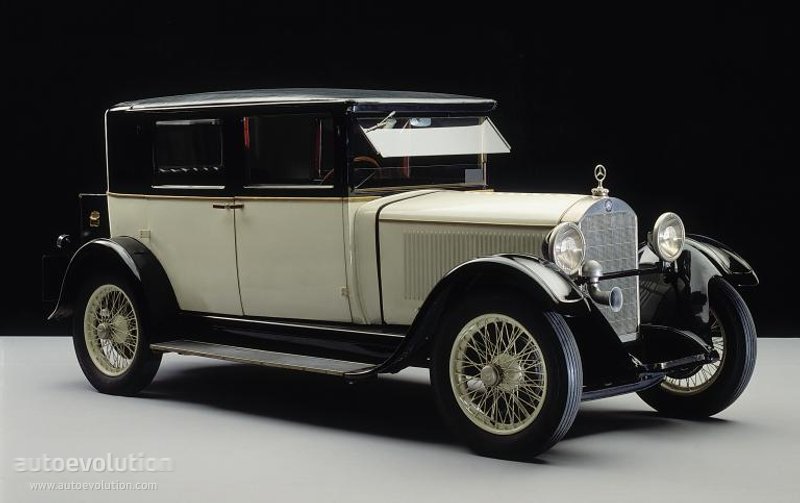 1928-33 MERCEDES BENZ 8-38 Typ Stuttgart 200 (W02) 1926-1936 Stuttgart 200, L3/4
1928-33 MERCEDES BENZ 8-38 Typ Stuttgart 200 (W02) 1926-1936 Stuttgart 200, L3/4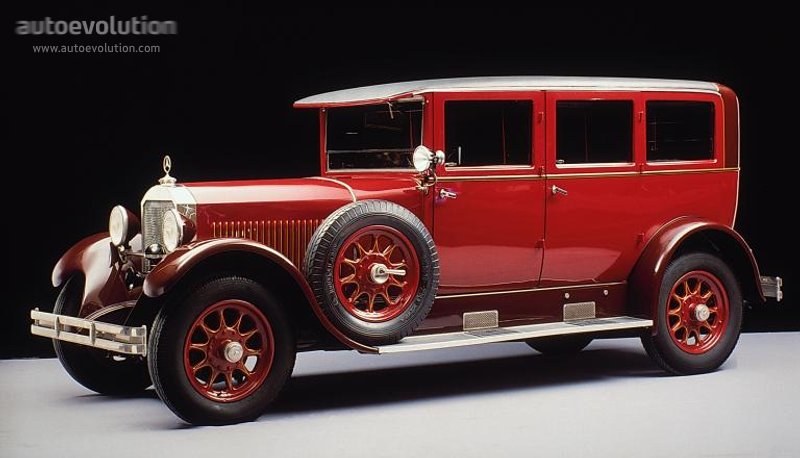 1926 Mercedes Benz W03
1926 Mercedes Benz W03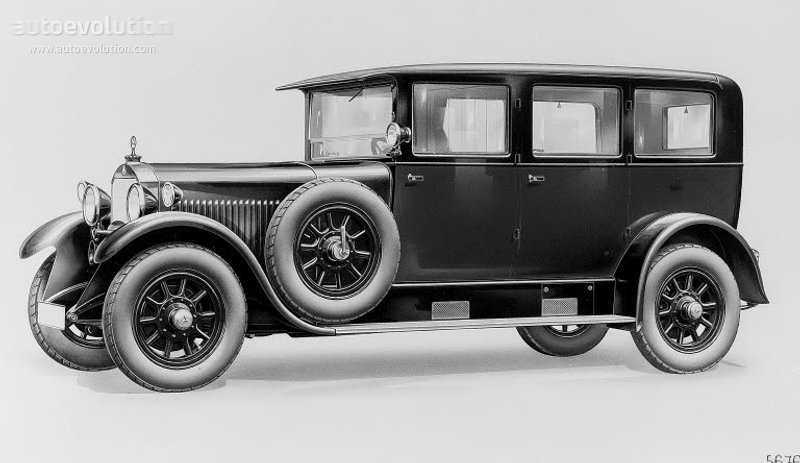 1926 Mercedes-Benz W03 a
1926 Mercedes-Benz W03 a
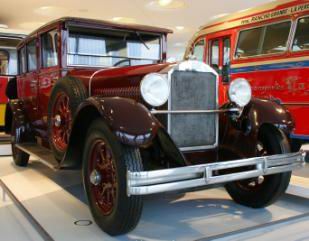
1926-27 mercedes benz w300 (W03)
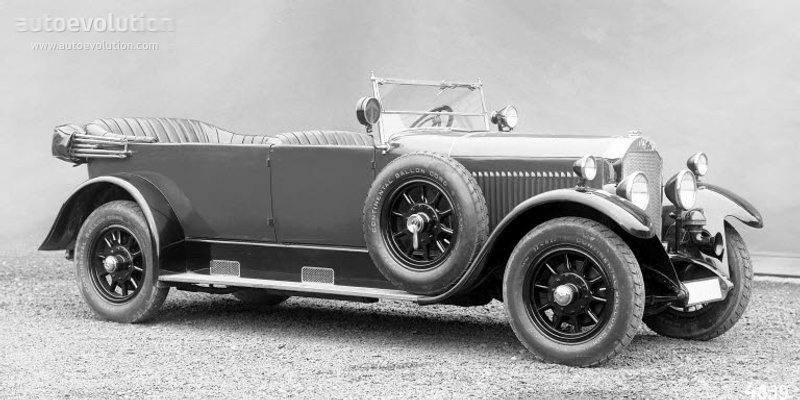 1926-27 Mercedes Benz W03 1926-1927 typ 300
1926-27 Mercedes Benz W03 1926-1927 typ 300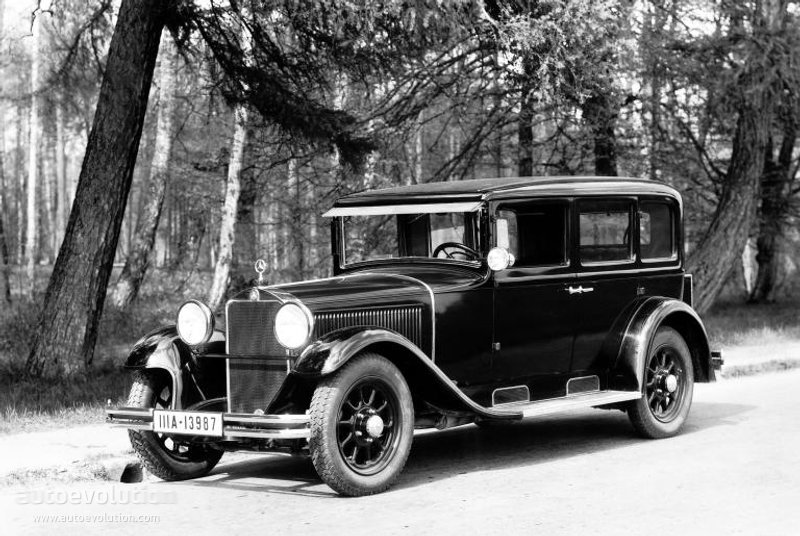 MERCEDES BENZ Typ12-55-14-60-W03-W04-W05–2557 7
MERCEDES BENZ Typ12-55-14-60-W03-W04-W05–2557 7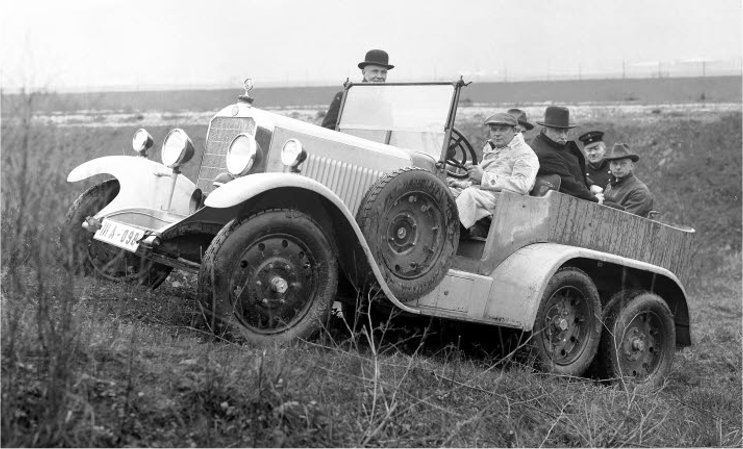 1926-29 Mercedes Benz 12-55 HP (W03+W04) typ 300-320 W04 1927-1928 typ 300, typ 320
1926-29 Mercedes Benz 12-55 HP (W03+W04) typ 300-320 W04 1927-1928 typ 300, typ 320
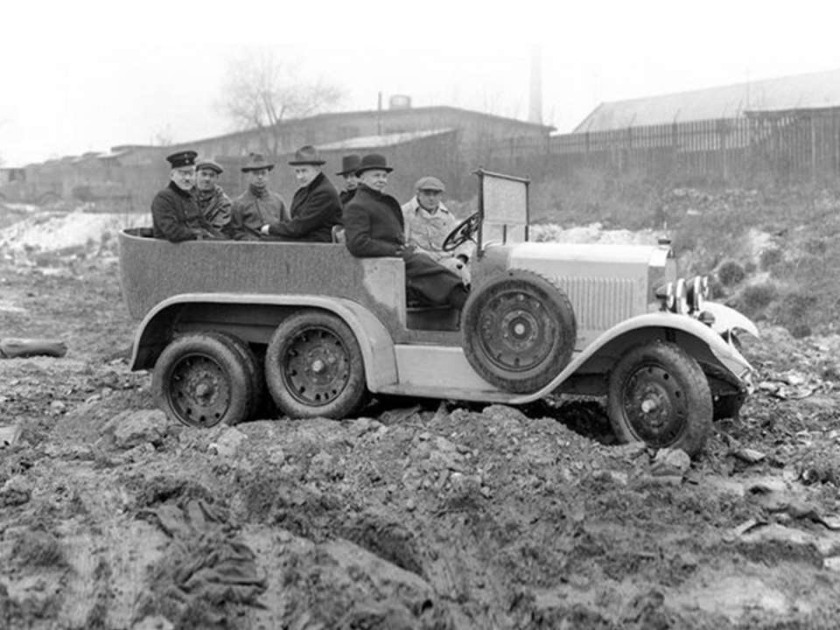 1926 Mercedes Benz 12-55hp WO3 6×6 g1 (Prototype Car)
1926 Mercedes Benz 12-55hp WO3 6×6 g1 (Prototype Car)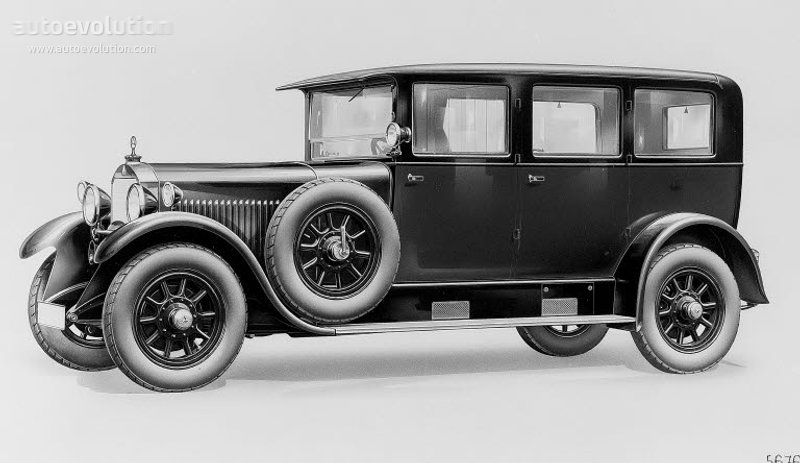 1926-29 MERCEDES BENZ Typ 12-55 – 14-60 (W03+W04+W05)a W05 1928-1929 typ 350
1926-29 MERCEDES BENZ Typ 12-55 – 14-60 (W03+W04+W05)a W05 1928-1929 typ 350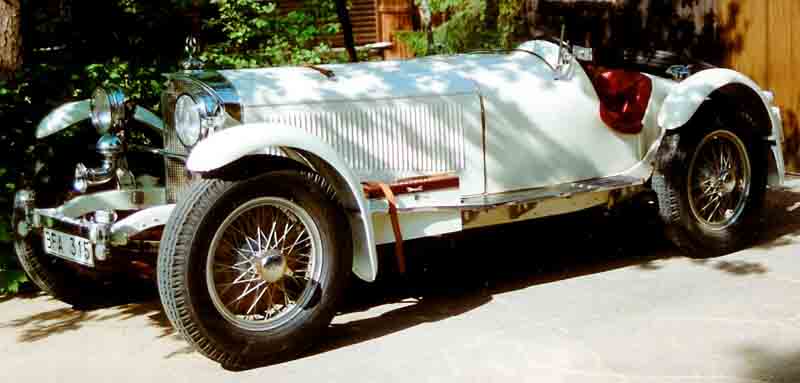 1929 Mercedes Benz W06 1926-1934 S, SS, SSK, SSKL
1929 Mercedes Benz W06 1926-1934 S, SS, SSK, SSKL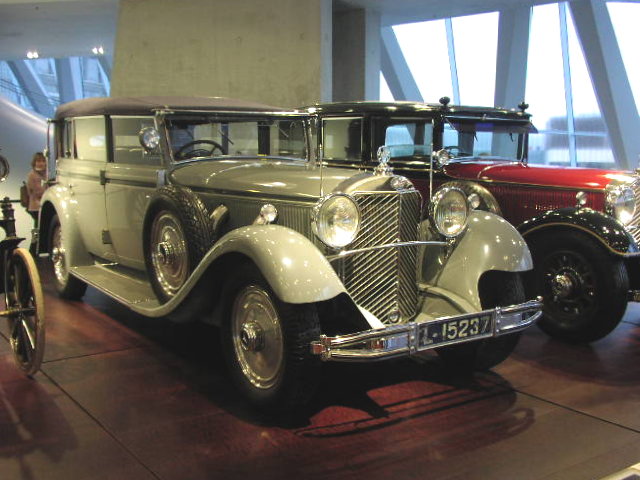 1932 Mercedes Benz W07 770 Cabrio F WilhelmII 01.jpg W07 1930-1938 typ 770 “Grosser”
1932 Mercedes Benz W07 770 Cabrio F WilhelmII 01.jpg W07 1930-1938 typ 770 “Grosser”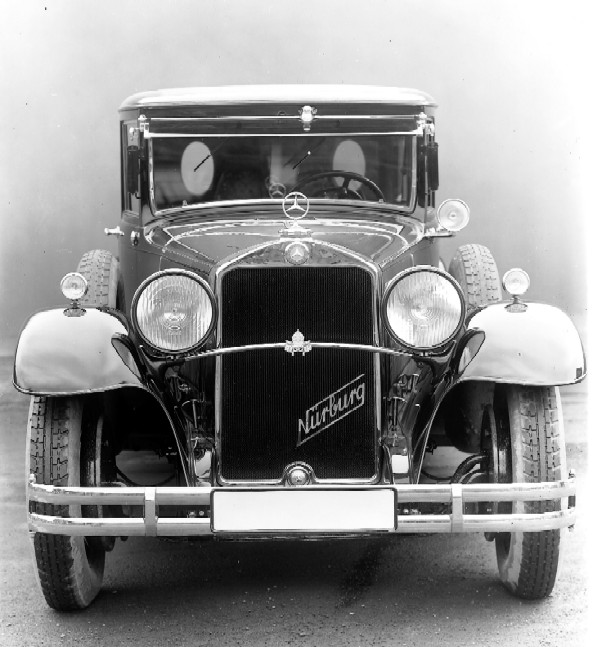 1930 Mercedes Benz Typ Nürburg 460 W08.jpg
1930 Mercedes Benz Typ Nürburg 460 W08.jpg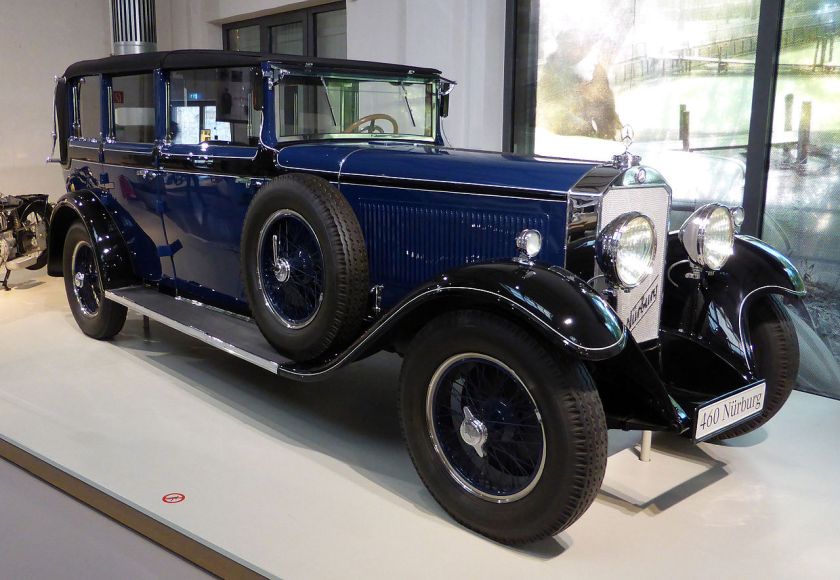 1929 Mercedes Benz Nürburg 460 W08 1928-1939 Nuerburg 460, Nuerburg 500
1929 Mercedes Benz Nürburg 460 W08 1928-1939 Nuerburg 460, Nuerburg 500
W09 1928-1931 typ 350, G3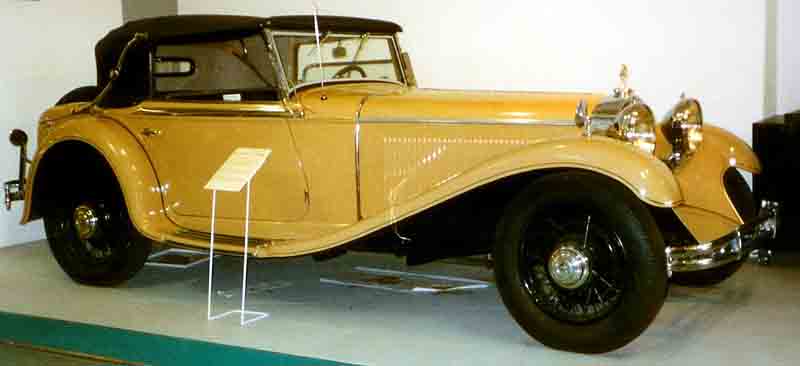 1931 Mercedes Benz 370S W10 Sport Cabriolet Manheim.jpg W10 1929-1935 Mannheim 350, Mannheim 370, Mannheim 380, G3a
1931 Mercedes Benz 370S W10 Sport Cabriolet Manheim.jpg W10 1929-1935 Mannheim 350, Mannheim 370, Mannheim 380, G3a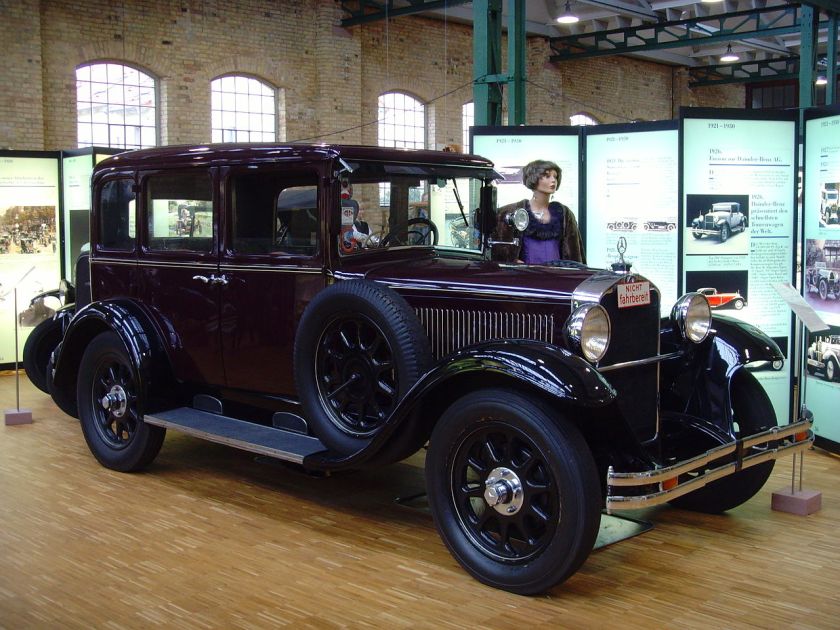 1929-34 Mercedes Benz Typ 10-50 PS W11 1929-1934 Stuttgart 260
1929-34 Mercedes Benz Typ 10-50 PS W11 1929-1934 Stuttgart 260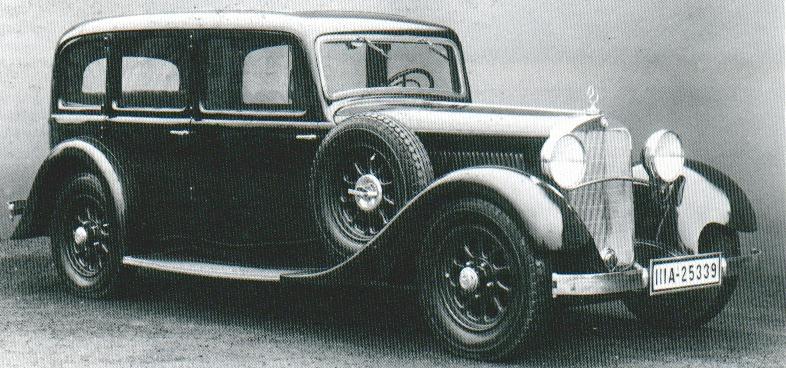 1929-35 Mercedes Benz W12 1930 Mannheim 370 K
1929-35 Mercedes Benz W12 1930 Mannheim 370 K
W13 1930 Mannheim 370 S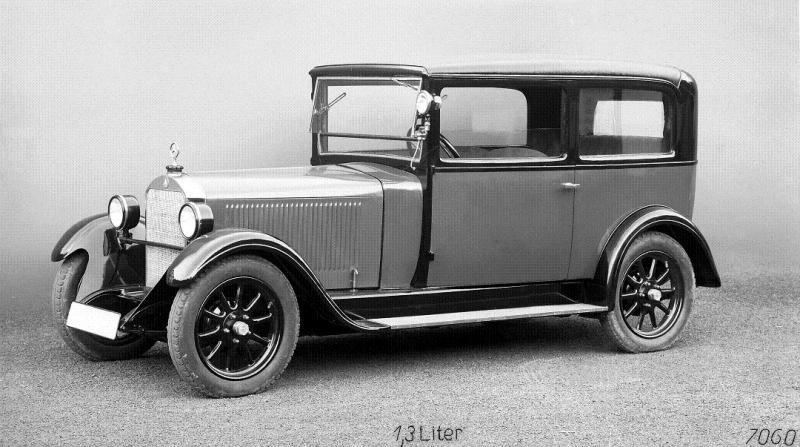 1928 Prototype of the Mercedes-Benz W14 5-25 hp Saloon.1 W14 1928 typ 130 (prototype)
1928 Prototype of the Mercedes-Benz W14 5-25 hp Saloon.1 W14 1928 typ 130 (prototype)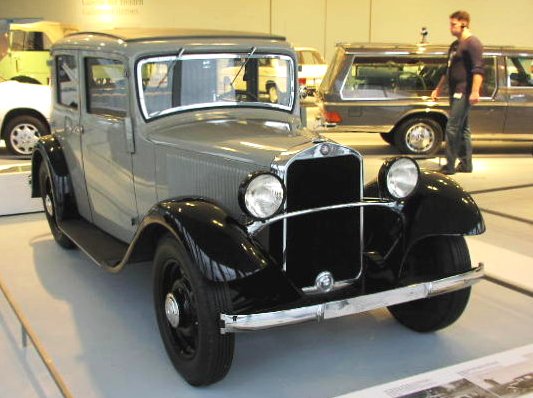 1931 Mercedes Benz Typ 170 W 15 170-6 1931-1936 typ 170, L300
1931 Mercedes Benz Typ 170 W 15 170-6 1931-1936 typ 170, L300
W16 1932 typ 270
Mercedes Benz 1931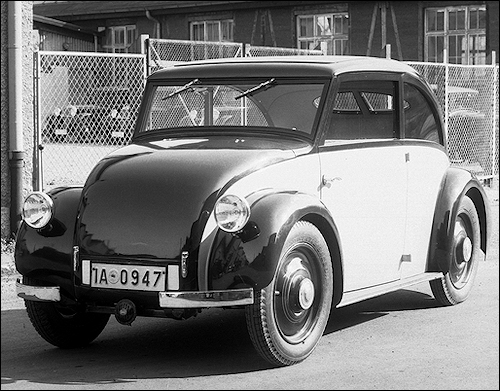 1931 mercedes benz 1931 120h w17 prototype 12 excemp W17 1931 typ 120 (prototype, rearmotor)
1931 mercedes benz 1931 120h w17 prototype 12 excemp W17 1931 typ 120 (prototype, rearmotor)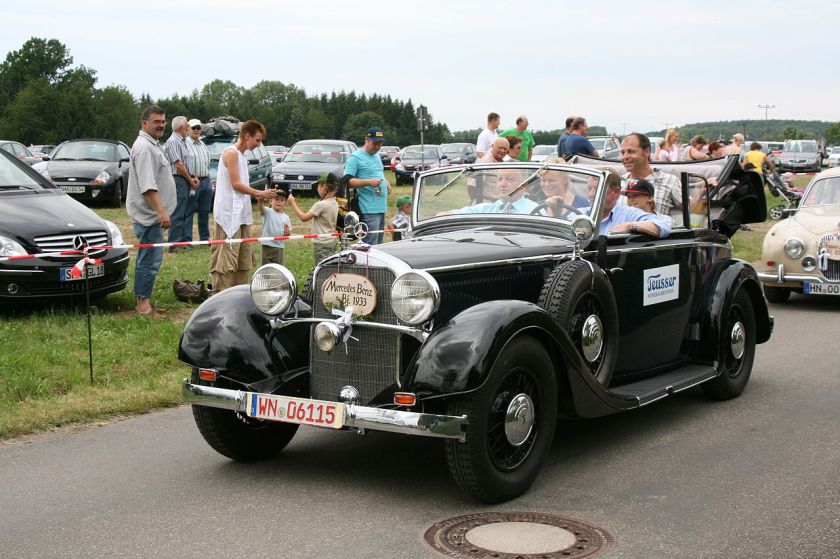 1933 Mercedes Benz Type 290 Cabriolet B W18 1933-1937 typ 290
1933 Mercedes Benz Type 290 Cabriolet B W18 1933-1937 typ 290 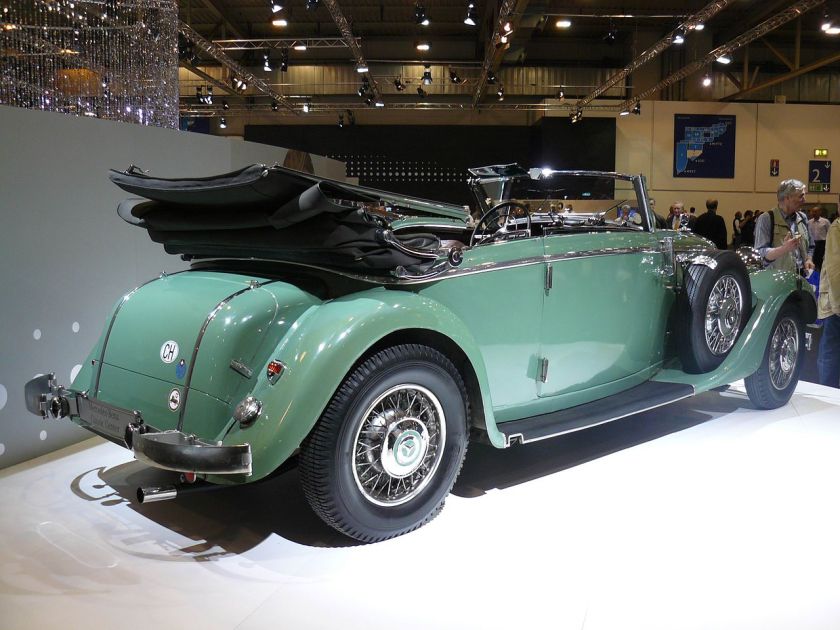 1935 Mercedes Benz W18 290 A Cabriolet.jpg
1935 Mercedes Benz W18 290 A Cabriolet.jpg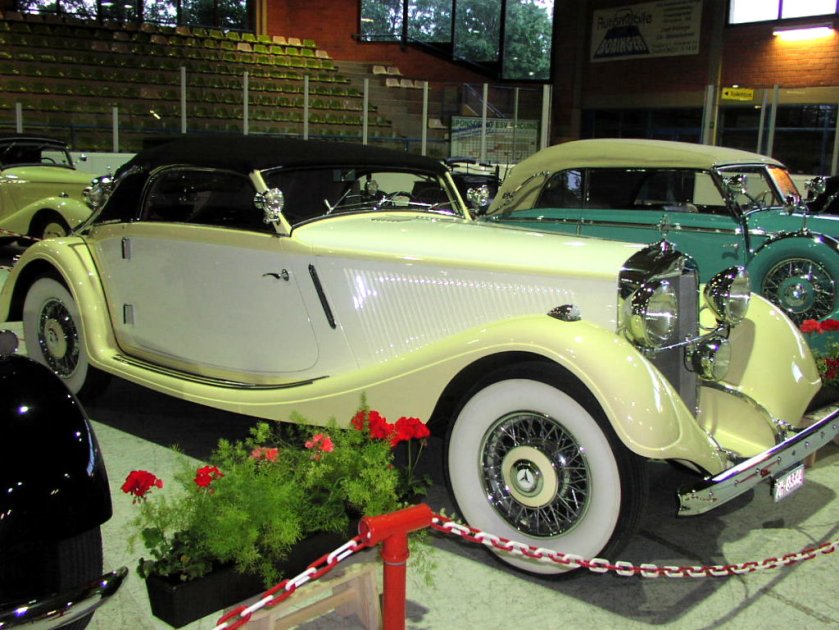 1935 Mercedes Benz W18 290 LWB Cabrio A.jpg
1935 Mercedes Benz W18 290 LWB Cabrio A.jpg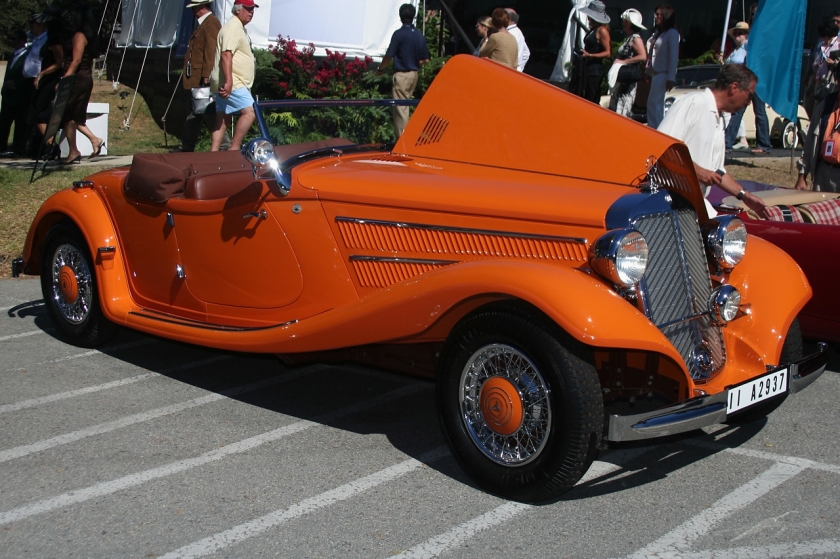 Mercedes Benz Typ 290 Spezial-Roadster W18
Mercedes Benz Typ 290 Spezial-Roadster W18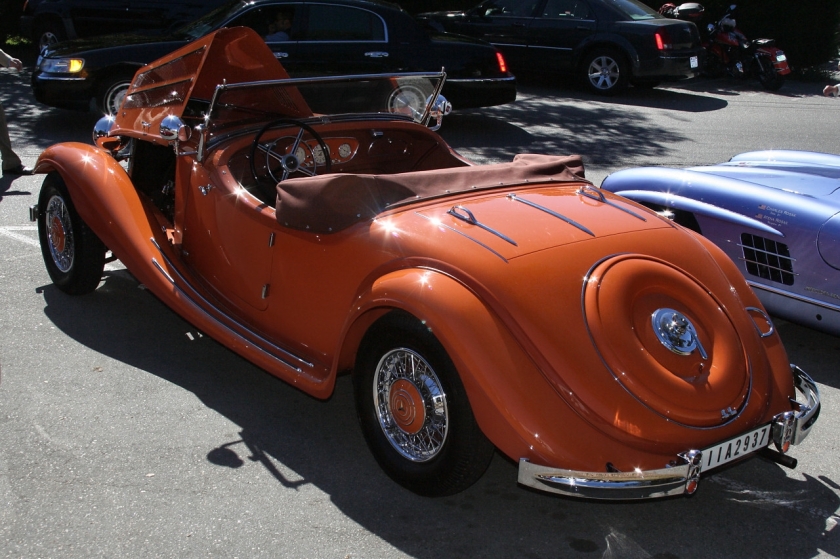 Mercedes Benz Typ 290 Spezial-Roadster W18 rear
Mercedes Benz Typ 290 Spezial-Roadster W18 rear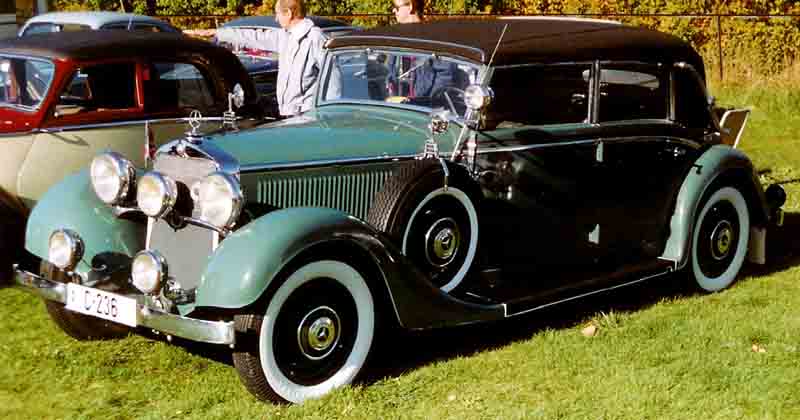 1936 Mercedes Benz 290 Cabriolet D W18
1936 Mercedes Benz 290 Cabriolet D W18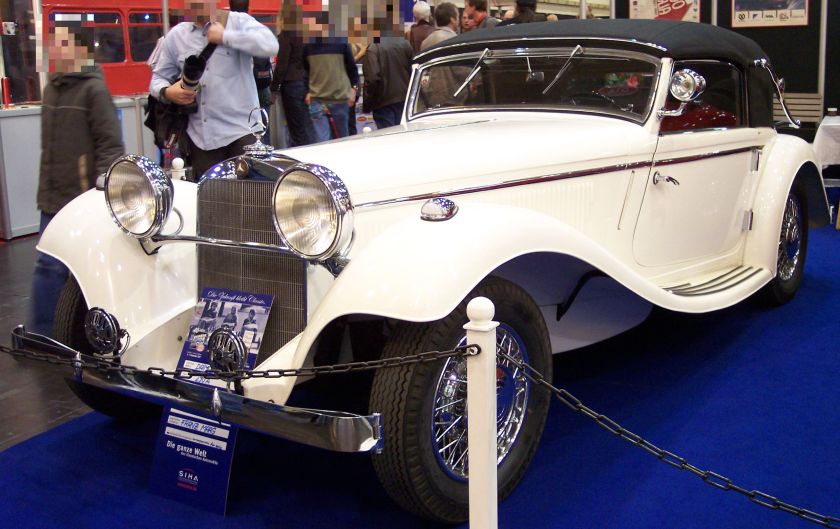 Mercedes Benz 290A W18 white vl TCE
Mercedes Benz 290A W18 white vl TCE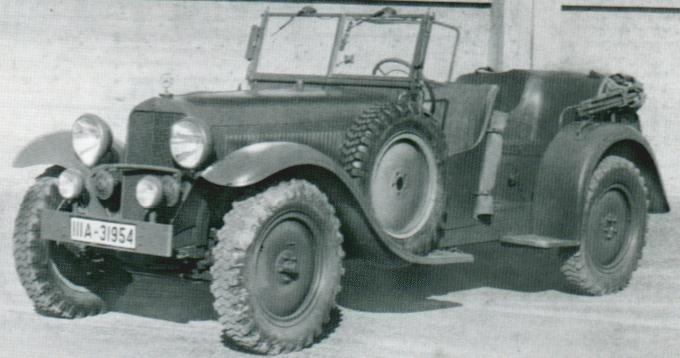 1936-37 Mercedes Benz-290 W18 Wehrmacht-Kübelwagen
1936-37 Mercedes Benz-290 W18 Wehrmacht-Kübelwagen 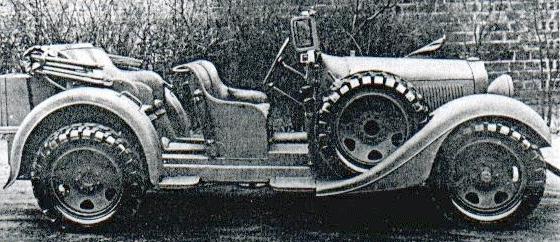 1934 Mercedes Benz 290 W18 Kübelwagen W18 III 1934 typ 290 Kübelwagen I(amphibie)
1934 Mercedes Benz 290 W18 Kübelwagen W18 III 1934 typ 290 Kübelwagen I(amphibie)
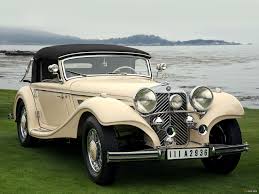
1934 Mercedes Benz Typ 380 Cabriolet C W19 1932-1933 typ 380 S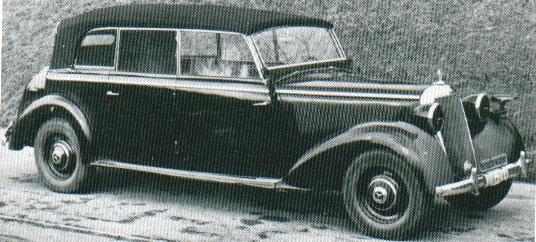 1932-33 Mercedes Benz Mannheim 380S W20 1932-1933 typ 380 S
1932-33 Mercedes Benz Mannheim 380S W20 1932-1933 typ 380 S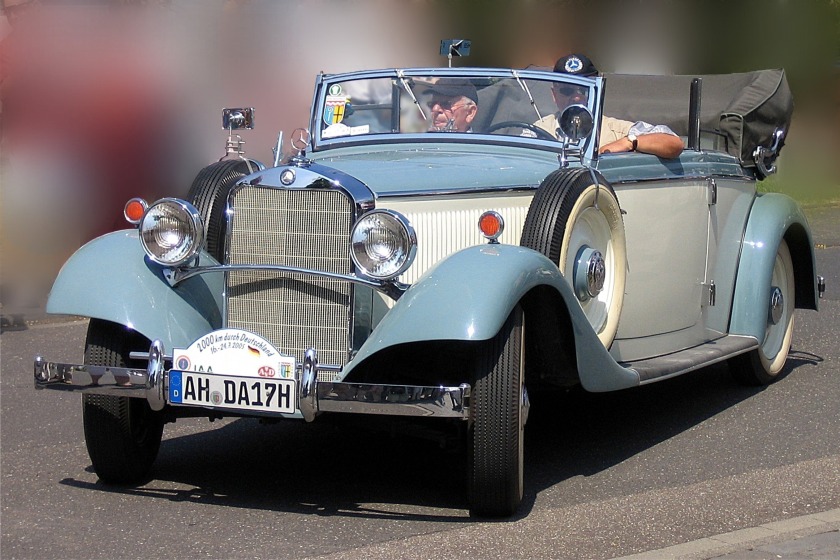 1935 Mercedes Benz 200 W21 1933-1937 typ 200, typ 230
1935 Mercedes Benz 200 W21 1933-1937 typ 200, typ 230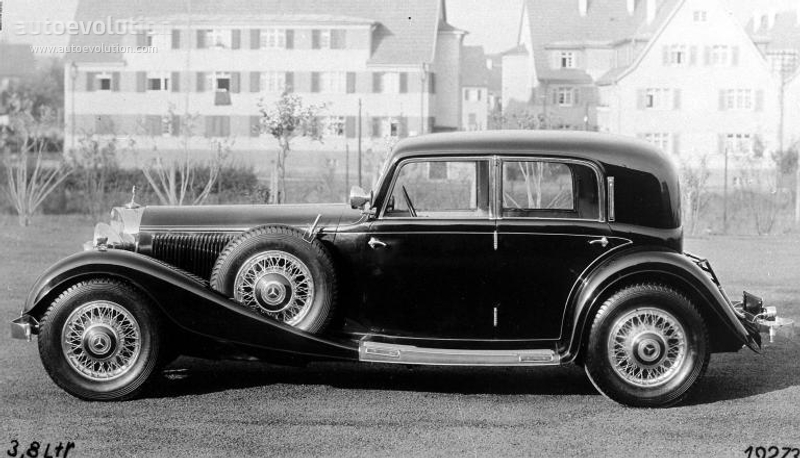 1933-34 MERCEDES BENZ Typ 380 W22 1933-1934 typ 380
1933-34 MERCEDES BENZ Typ 380 W22 1933-1934 typ 380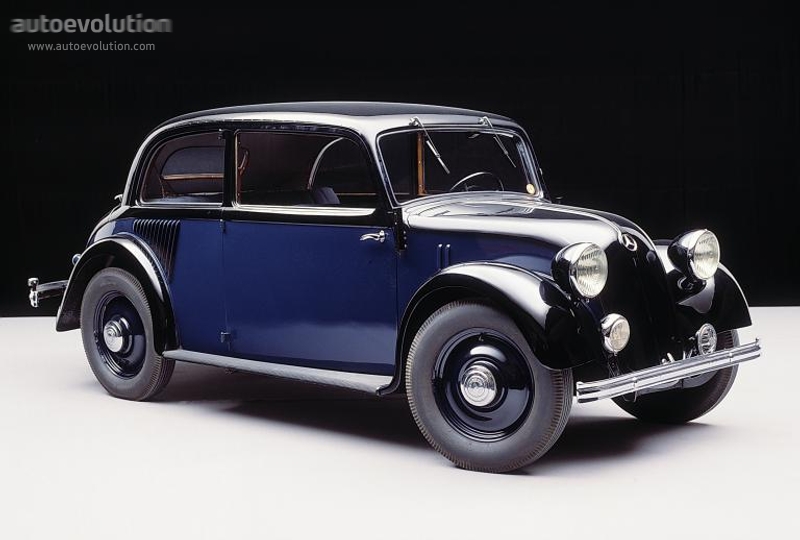
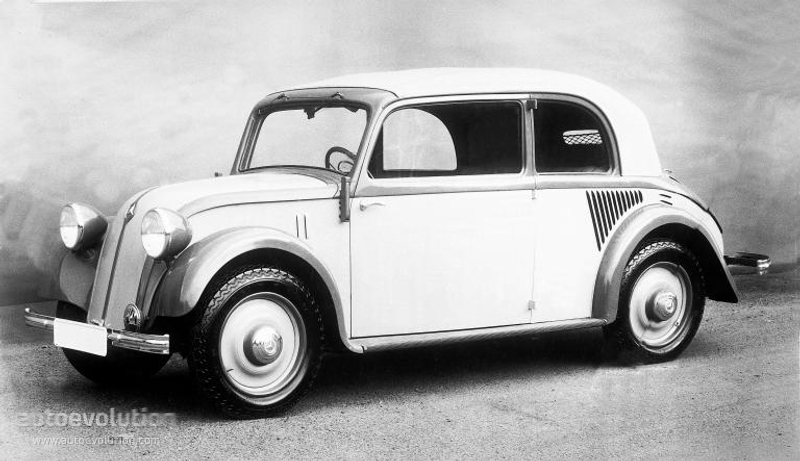
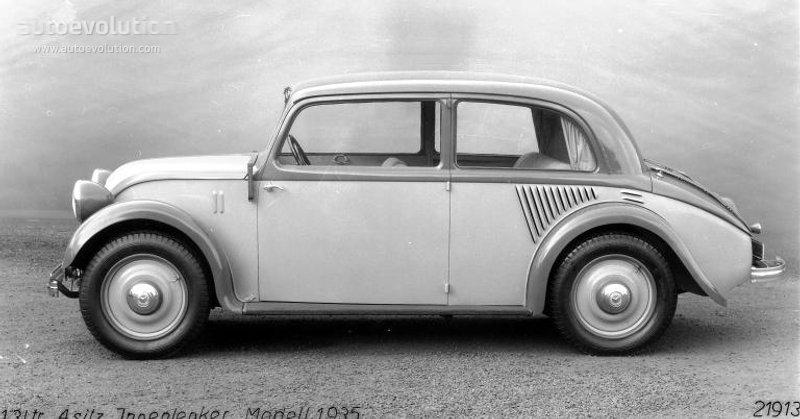 1934-36 MERCEDES BENZ130-W23–2634 1+2+3 W23 1934-1936 typ 130 (rearmotor)
1934-36 MERCEDES BENZ130-W23–2634 1+2+3 W23 1934-1936 typ 130 (rearmotor)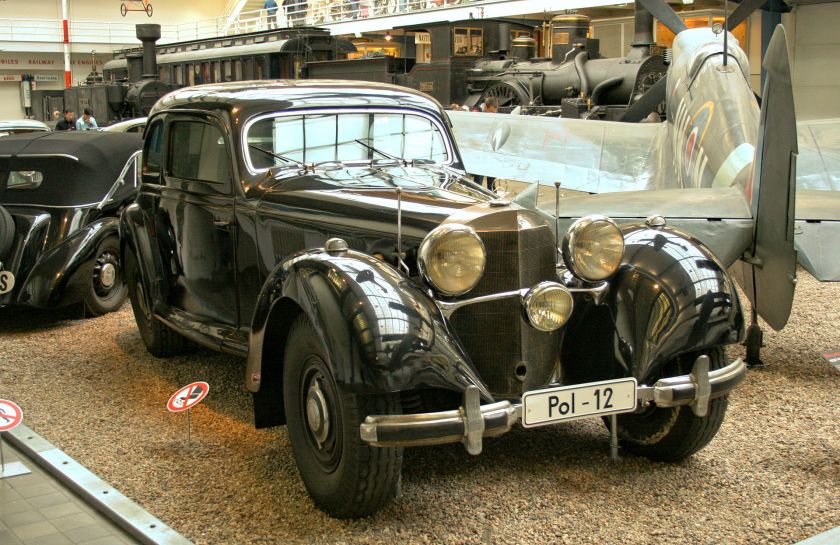 1936+1939-42 Mercedes Benz 540 K W24 1936, 1943 typ 540 K
1936+1939-42 Mercedes Benz 540 K W24 1936, 1943 typ 540 K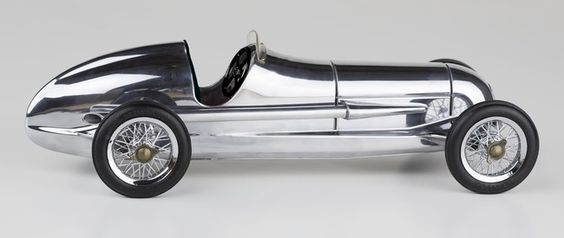
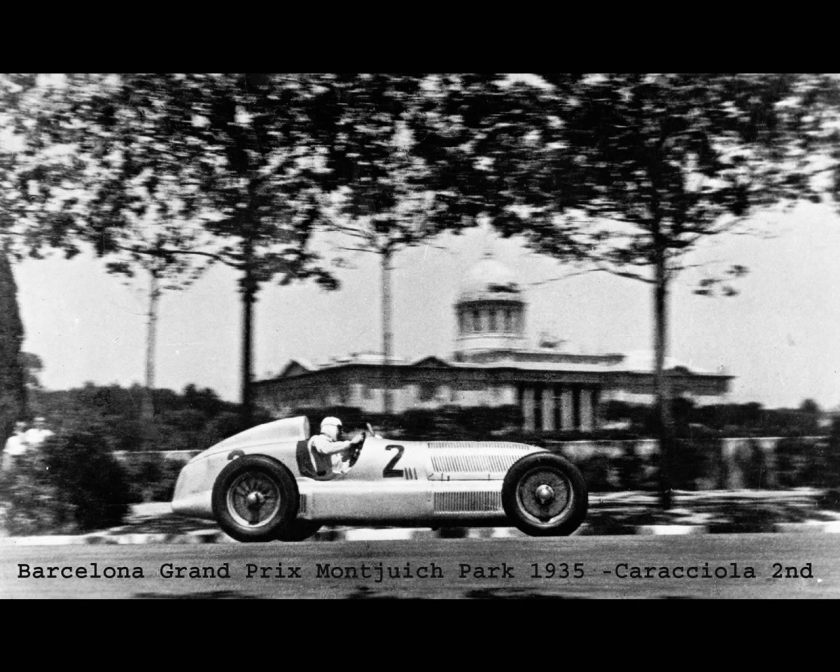 W25 1934-1936 W25 Silver Arrow
W25 1934-1936 W25 Silver Arrow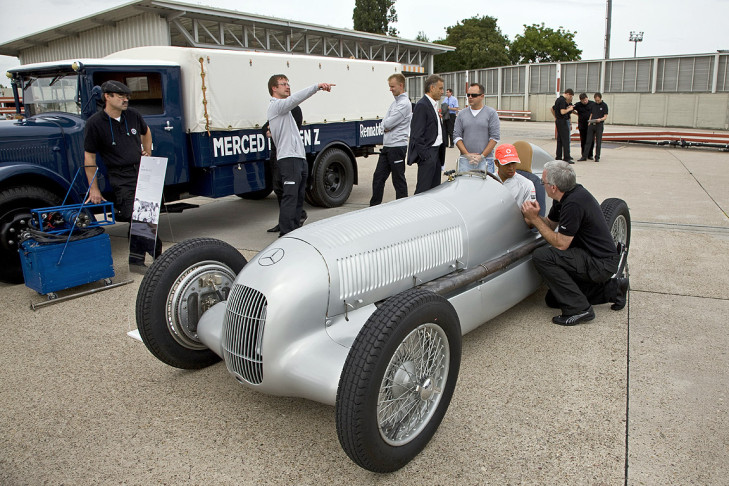 1933 Mercedes Benz Silberpfeile W-25D.jpg W25D 1933 typ 175 (prototype)
1933 Mercedes Benz Silberpfeile W-25D.jpg W25D 1933 typ 175 (prototype)
?
W27 1935 Mannheim 390, Mannheim 400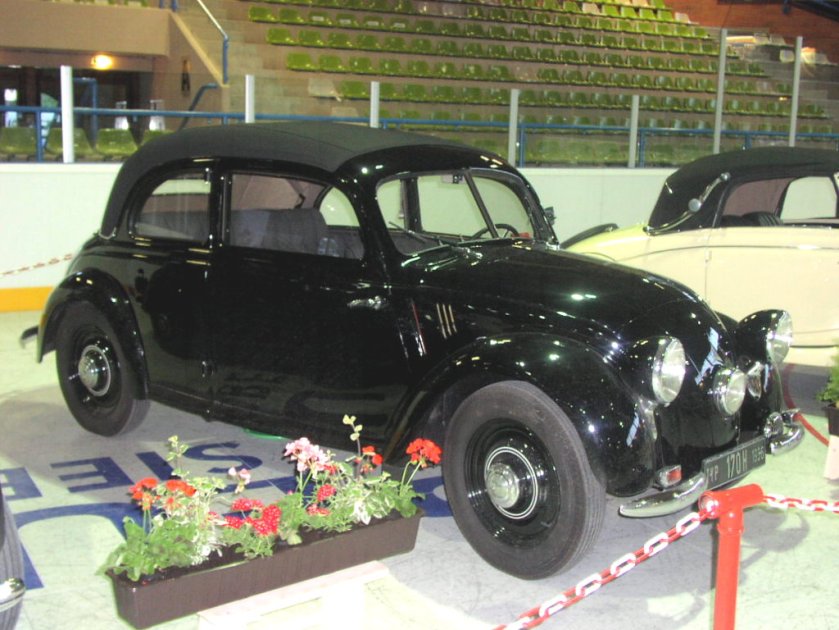 1936 Mercedes Benz W28 170H W28 1936-1939 typ 170 H
1936 Mercedes Benz W28 170H W28 1936-1939 typ 170 H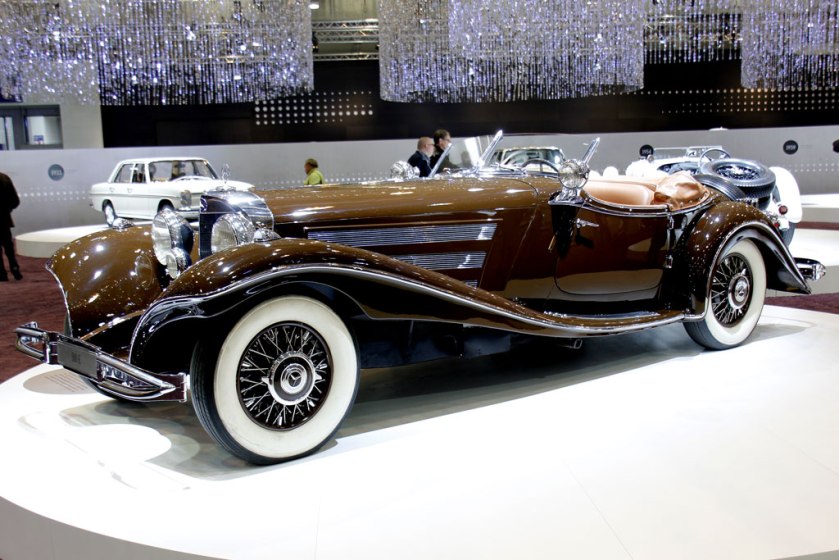 1934 Mercedes Benz 500 K Special Roadster W29 3215 1934-1939 typ 500 K, typ 540 K
1934 Mercedes Benz 500 K Special Roadster W29 3215 1934-1939 typ 500 K, typ 540 K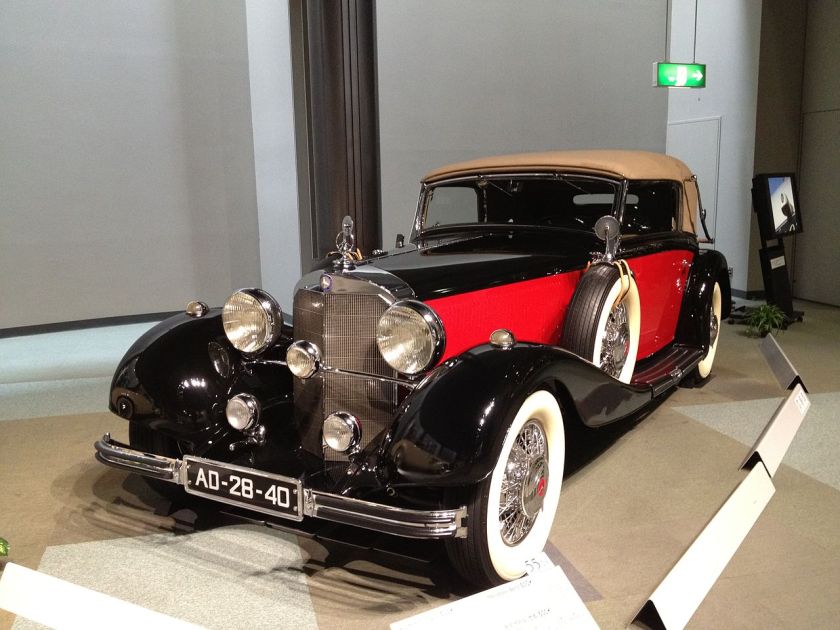 1935 Mercedes-Benz 500K W29
1935 Mercedes-Benz 500K W29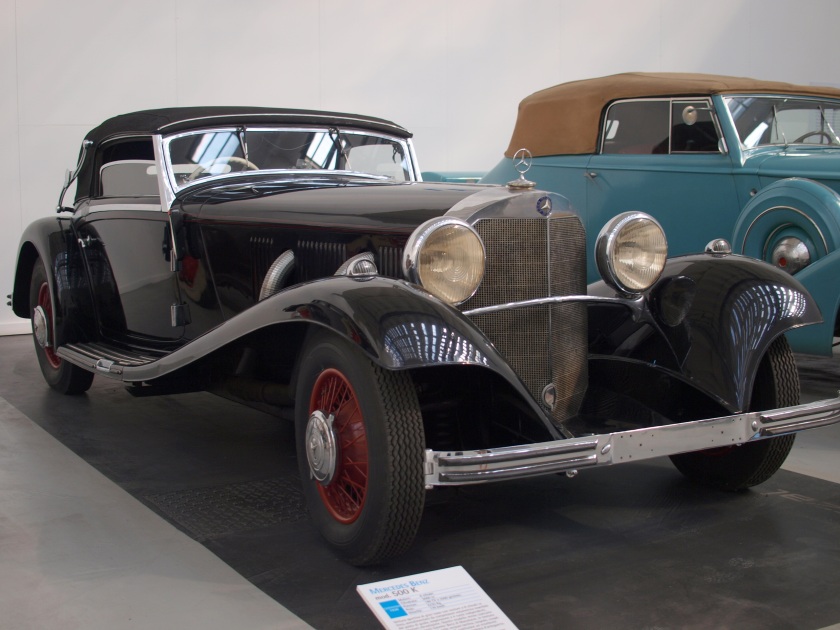
Mercedes Benz 500 K at Turin W29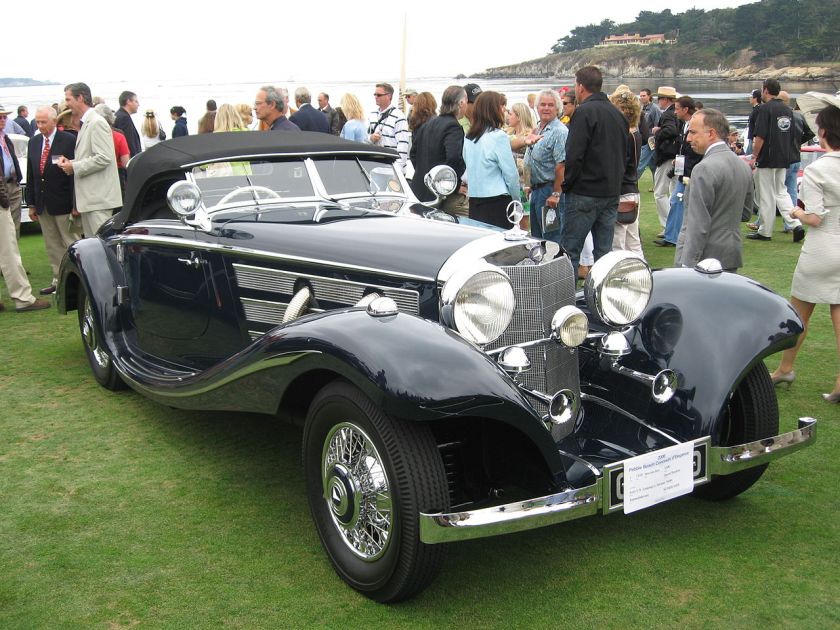 1936 Mercedes Benz 500 K Spezial-Roadster W29
1936 Mercedes Benz 500 K Spezial-Roadster W29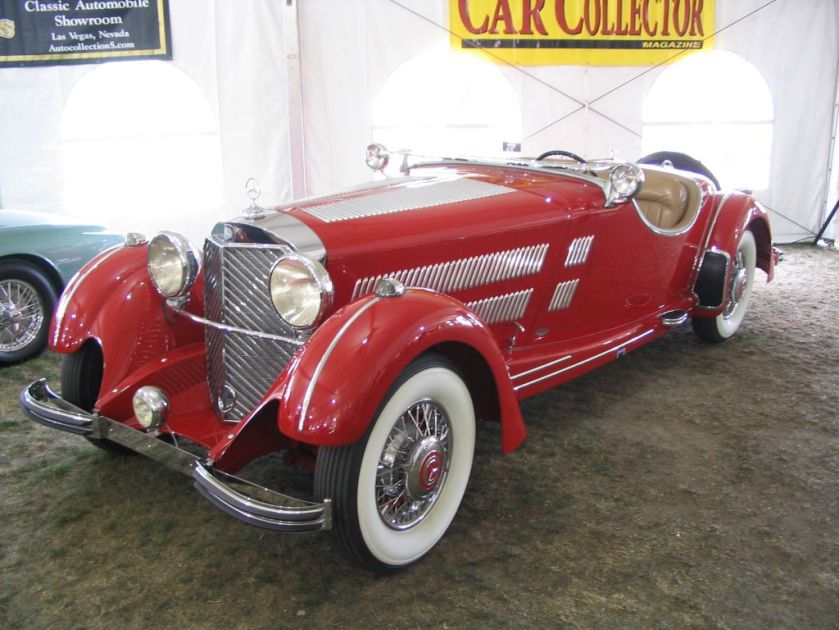 1934 Mercedes-Benz 500 K Sport-Roadster W29
1934 Mercedes-Benz 500 K Sport-Roadster W29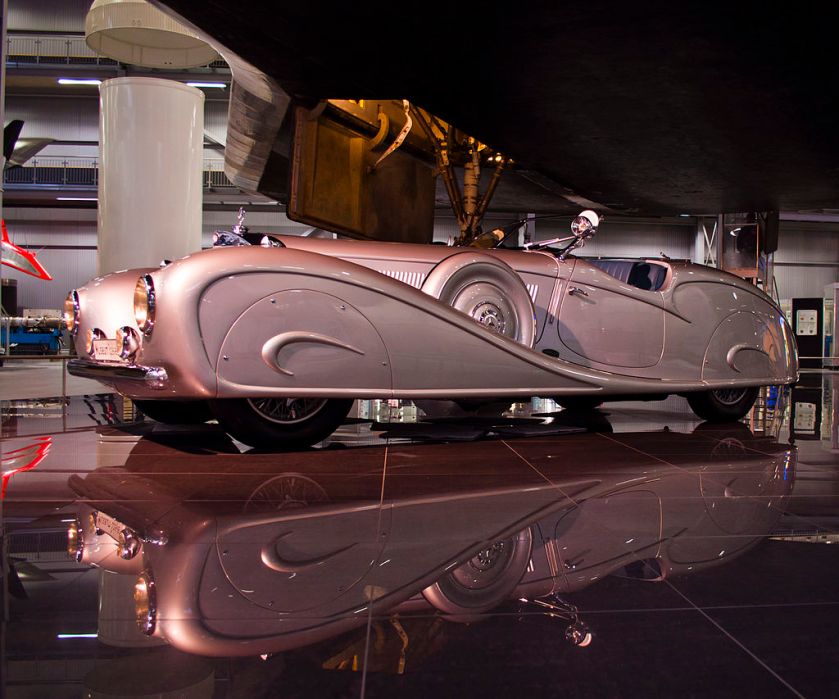 1935 Mercedes Benz 500 K W29 mit Erdmann-&-Rossi-Karosserie für den König des Irak
1935 Mercedes Benz 500 K W29 mit Erdmann-&-Rossi-Karosserie für den König des Irak
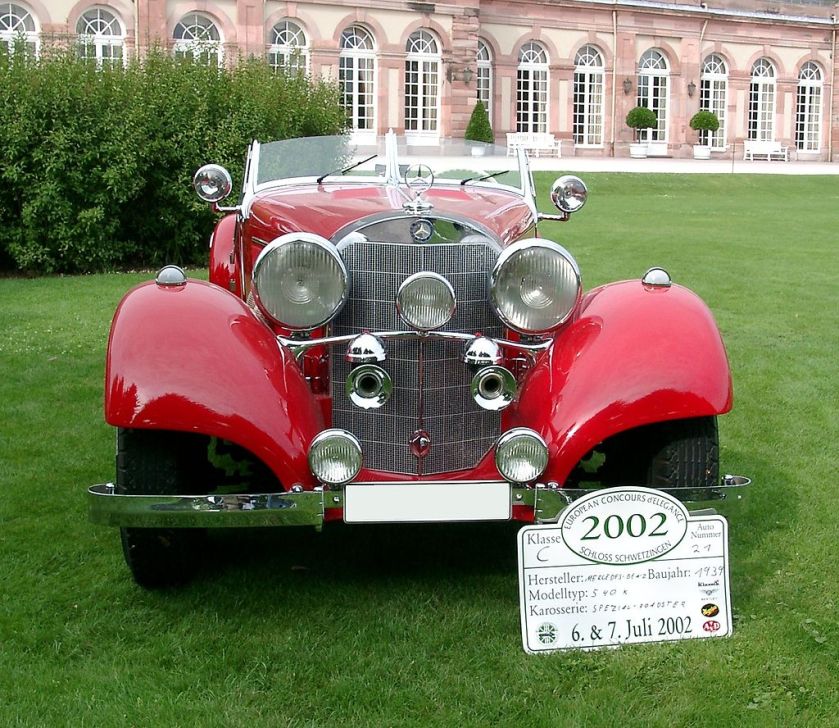 1939 Mercedes-Benz W29K540K Cabriolet, Baujahr 1939
1939 Mercedes-Benz W29K540K Cabriolet, Baujahr 1939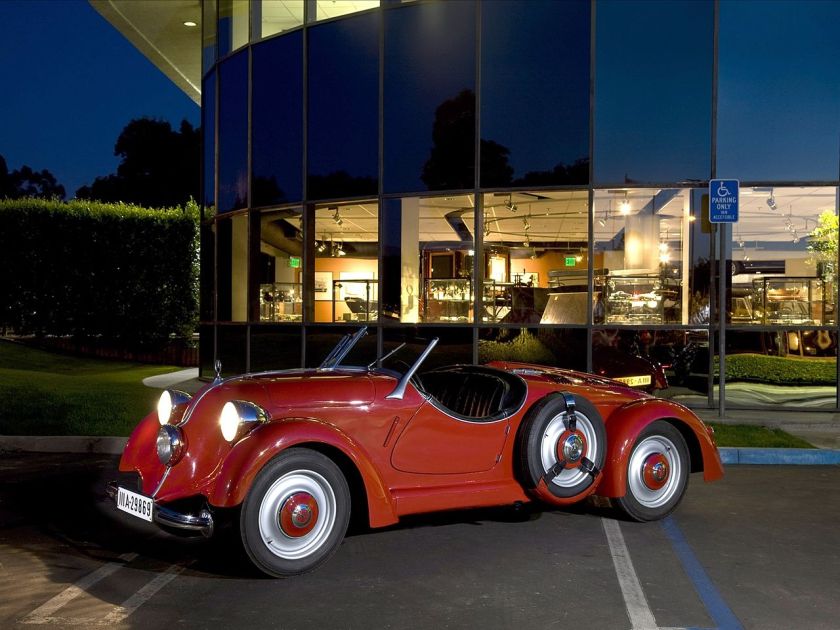 1935 Mercedes Benz 150 Roadster W30 1935-1936 typ 150 (rearmotor)
1935 Mercedes Benz 150 Roadster W30 1935-1936 typ 150 (rearmotor)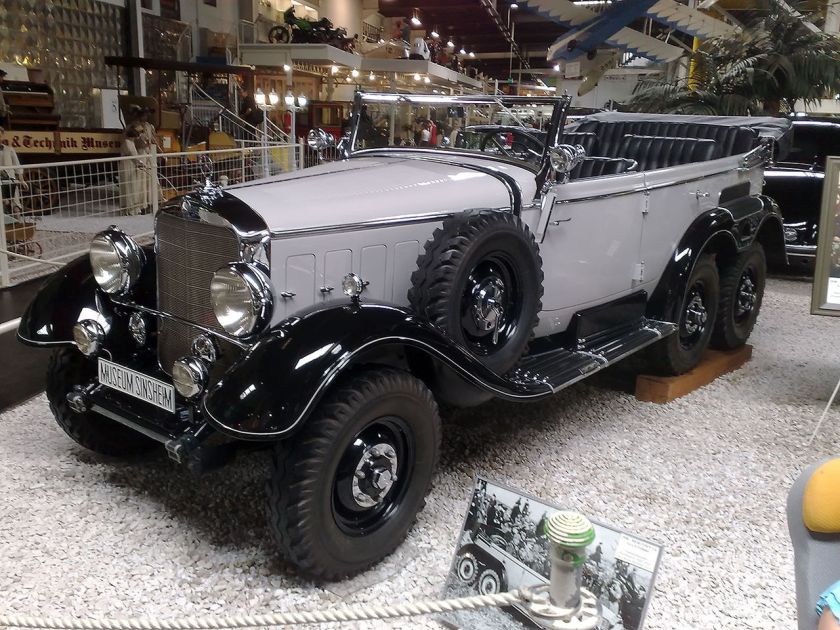 1938 Mercedes Benz G4 W31 1934-1939 typ G4
1938 Mercedes Benz G4 W31 1934-1939 typ G4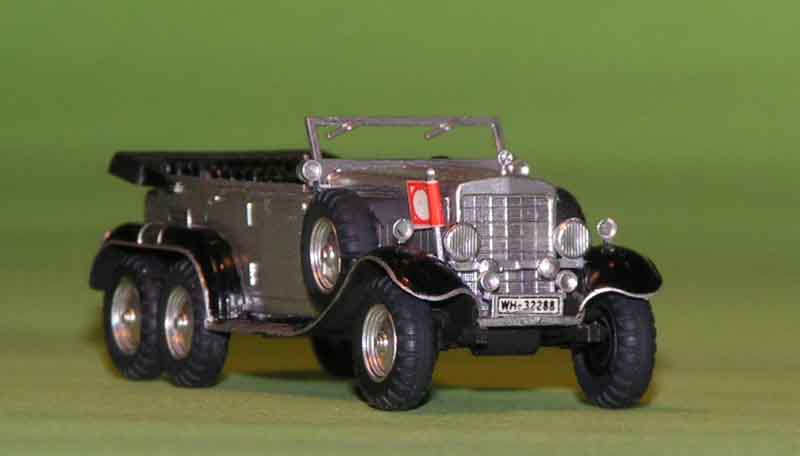 W34 1934 typ 150 (rearmotor)
W34 1934 typ 150 (rearmotor)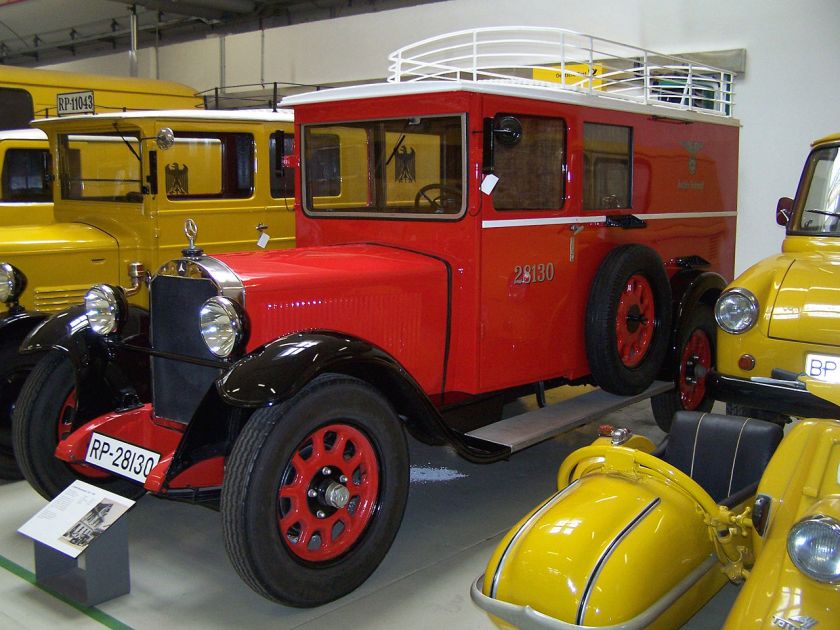 Daimler-Benz L 1000 W37 Heusenstamm. W37 1929-1936 L1000 (Stuttgart 260 based)
Daimler-Benz L 1000 W37 Heusenstamm. W37 1929-1936 L1000 (Stuttgart 260 based)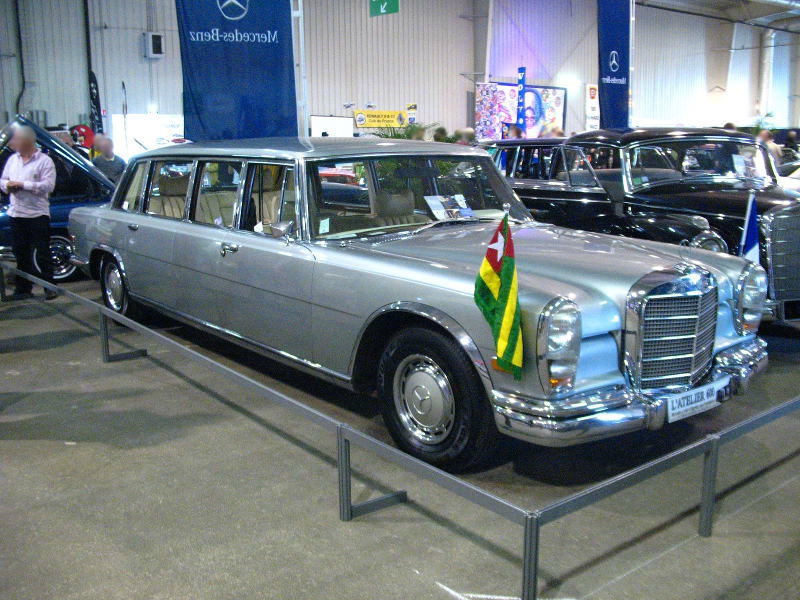
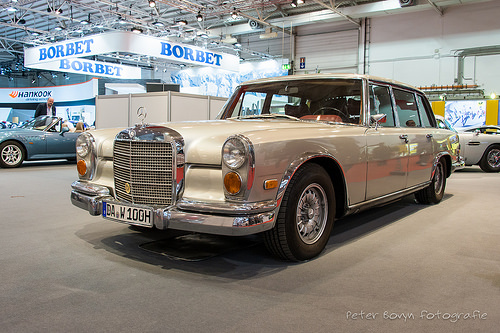
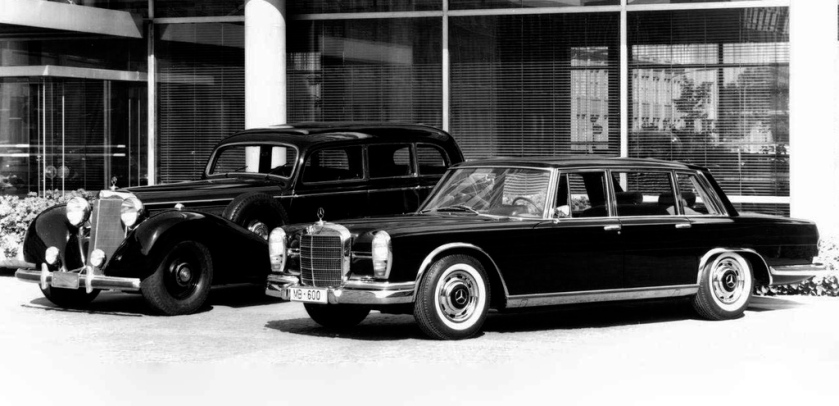
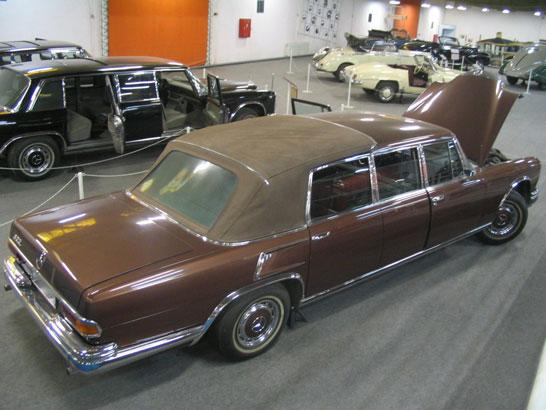
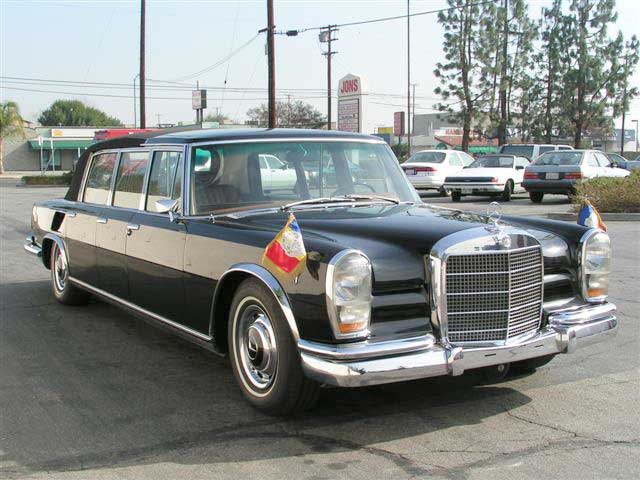
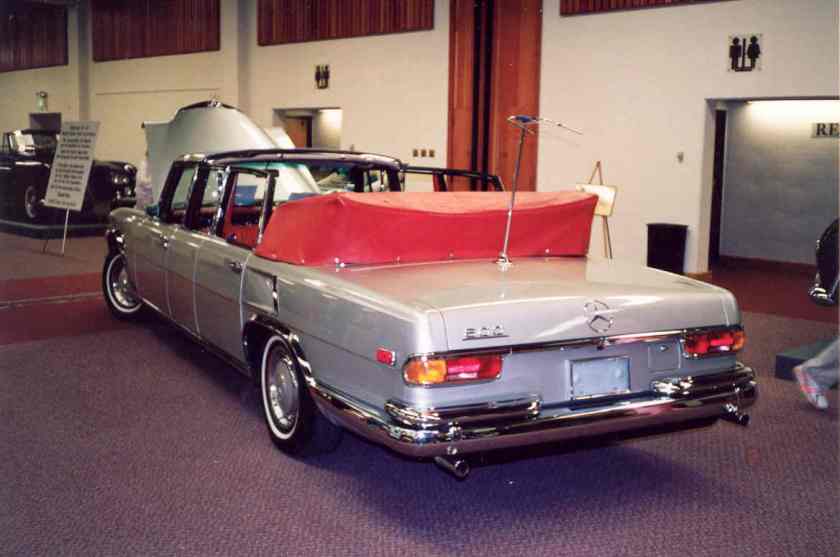
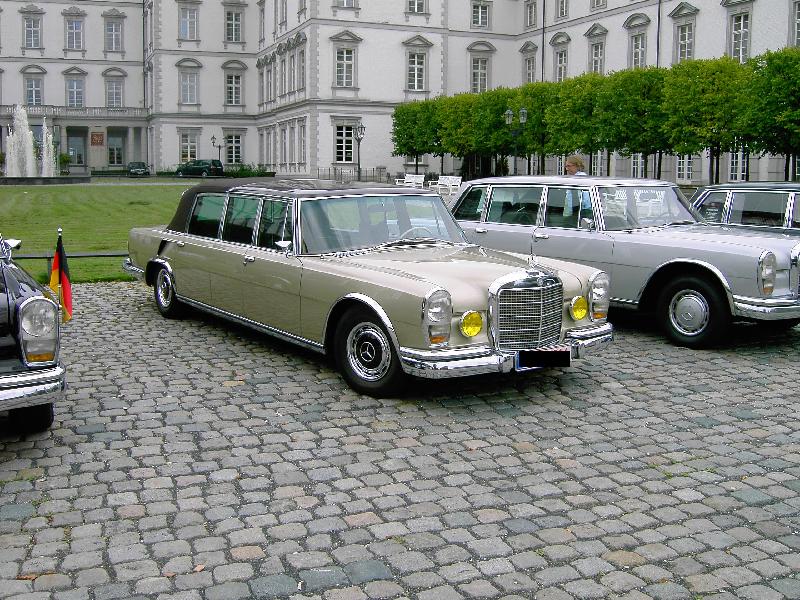
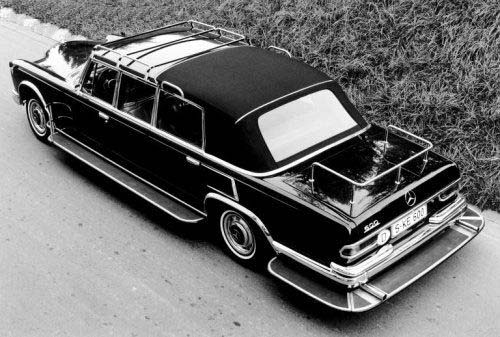
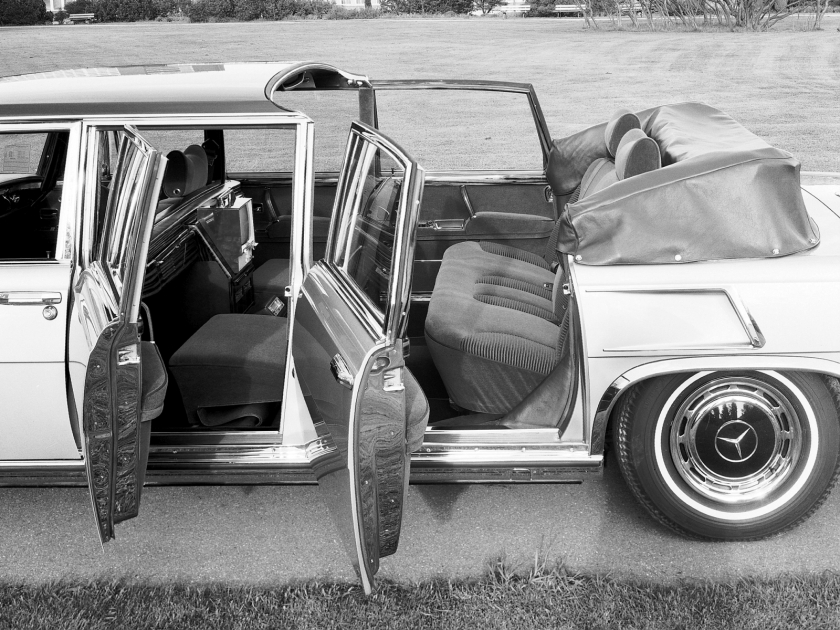
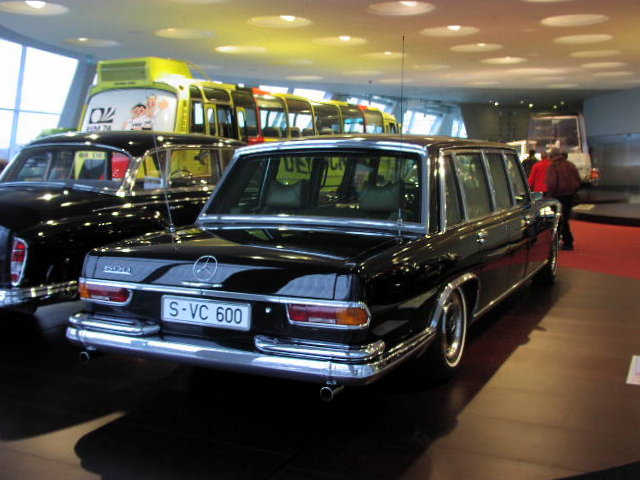
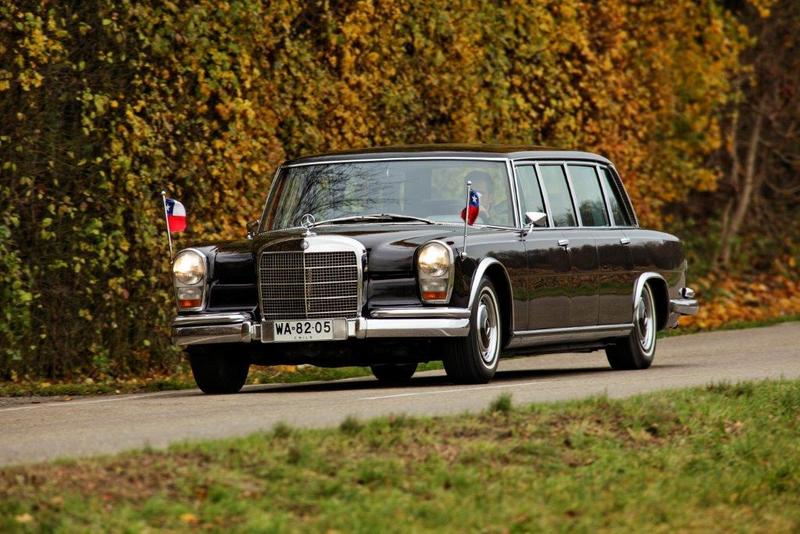
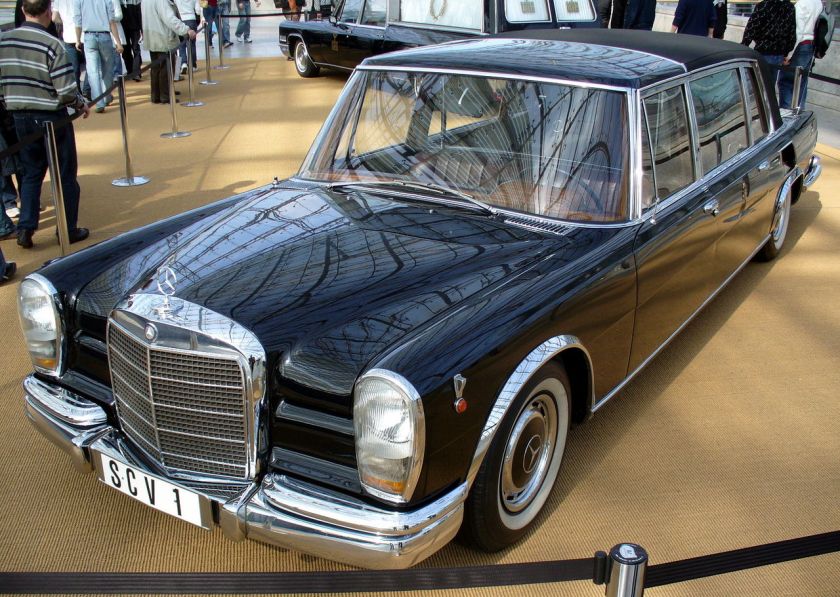
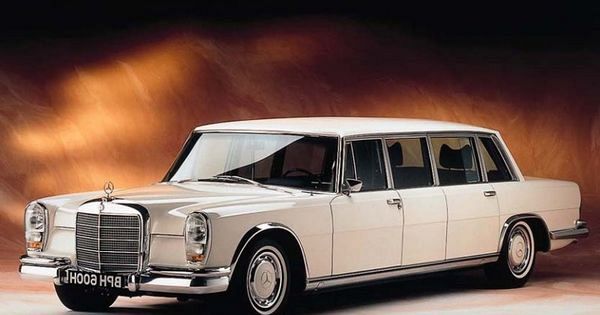
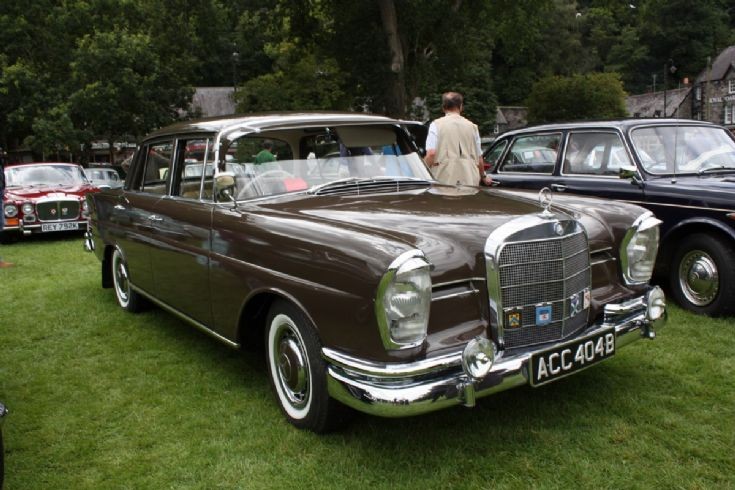
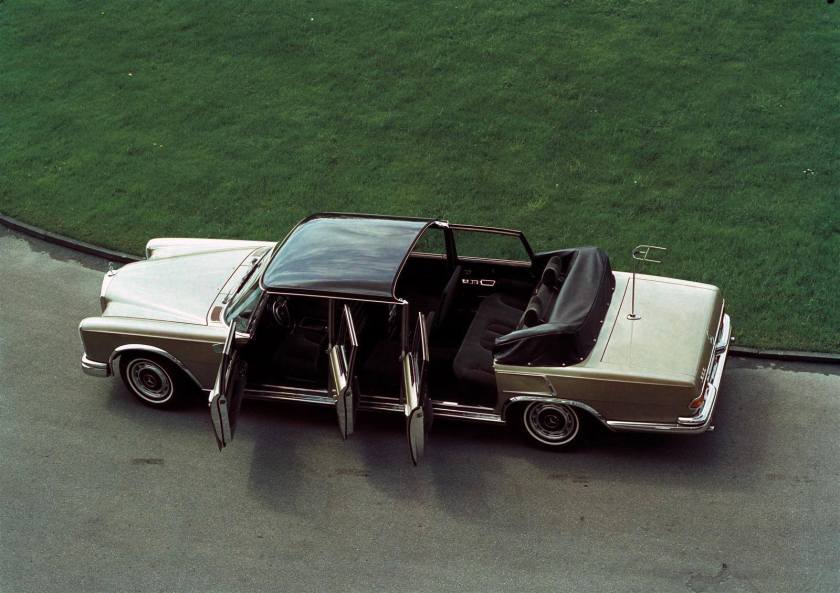
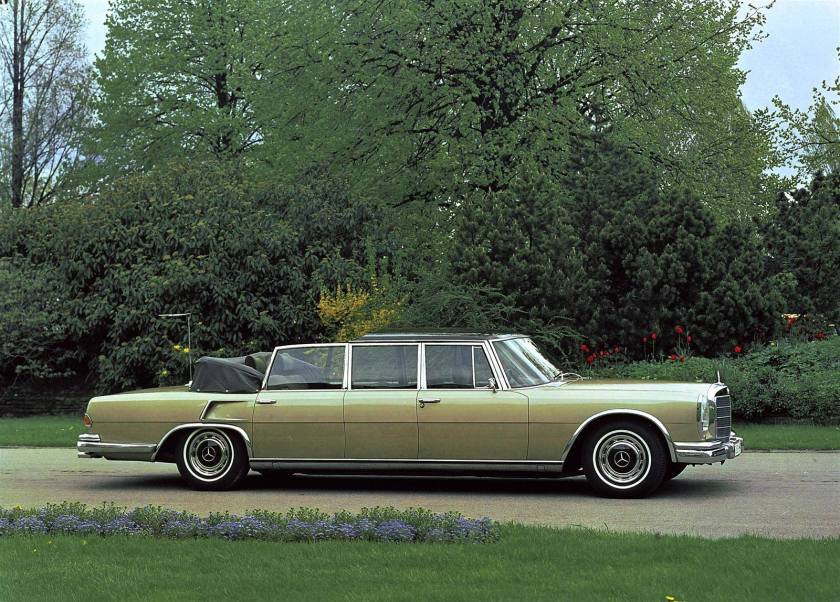
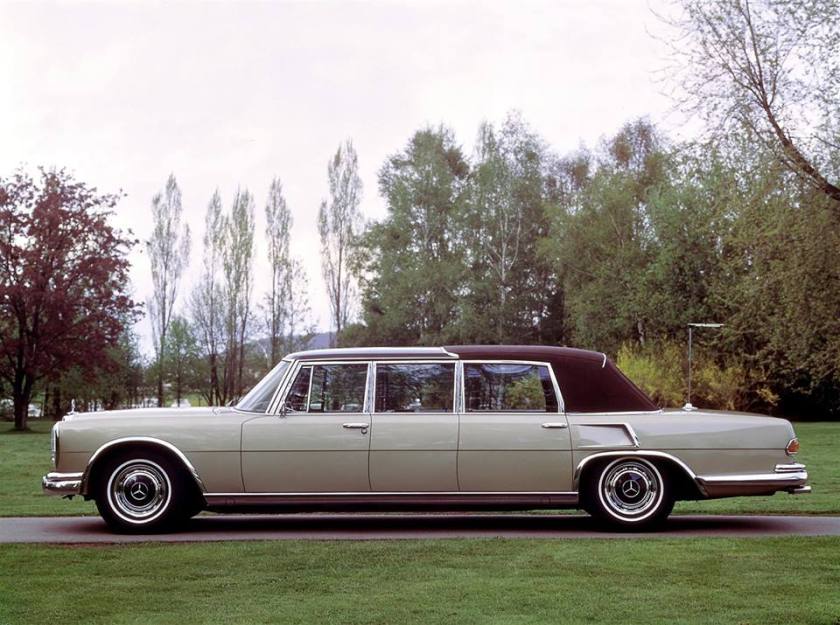
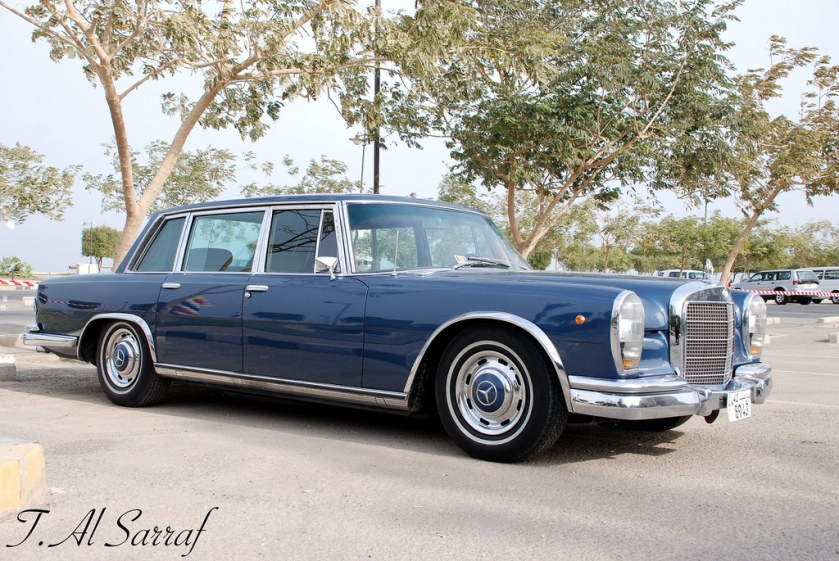
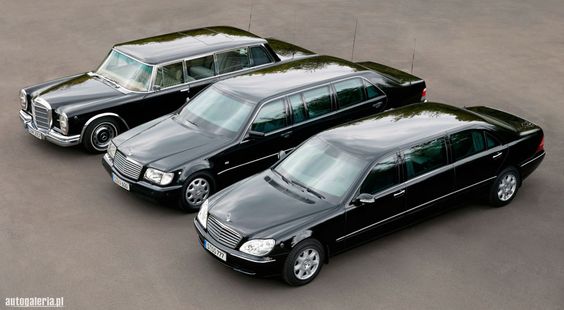
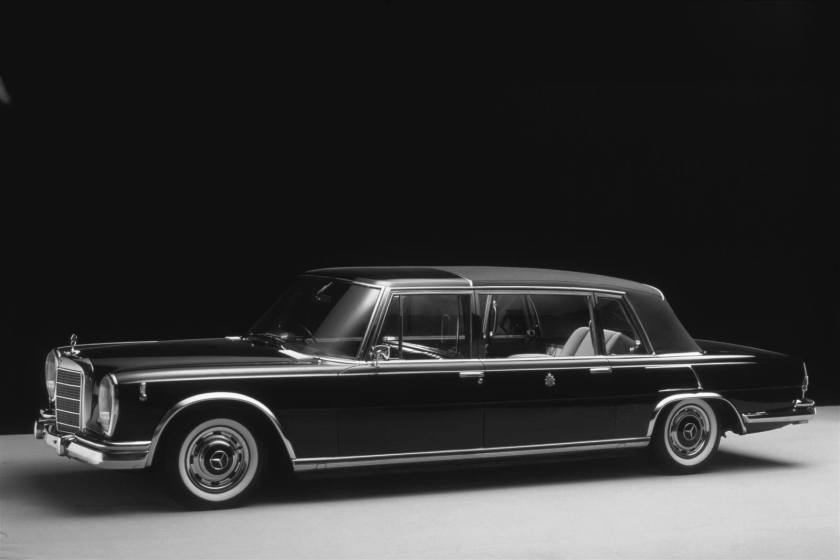
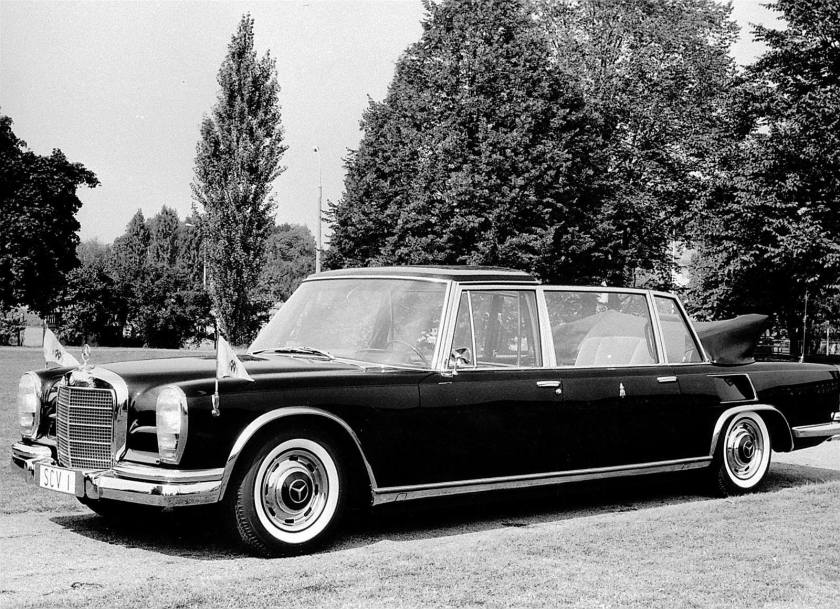
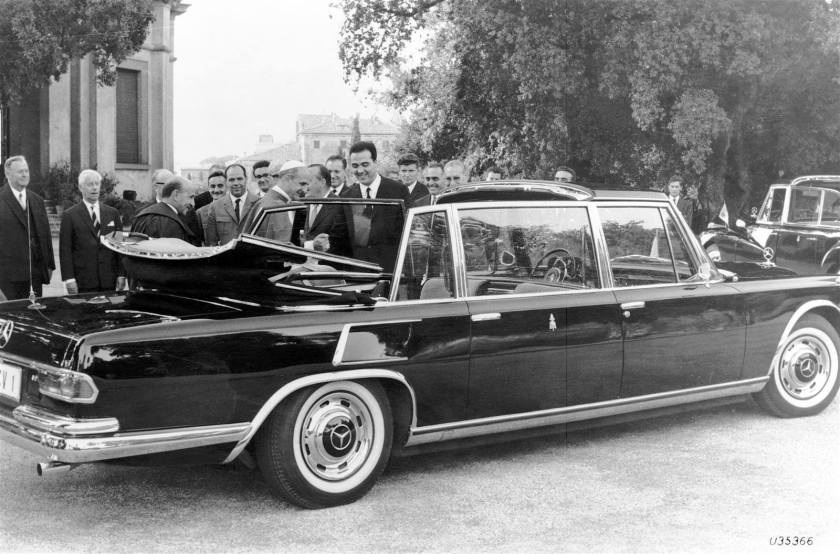
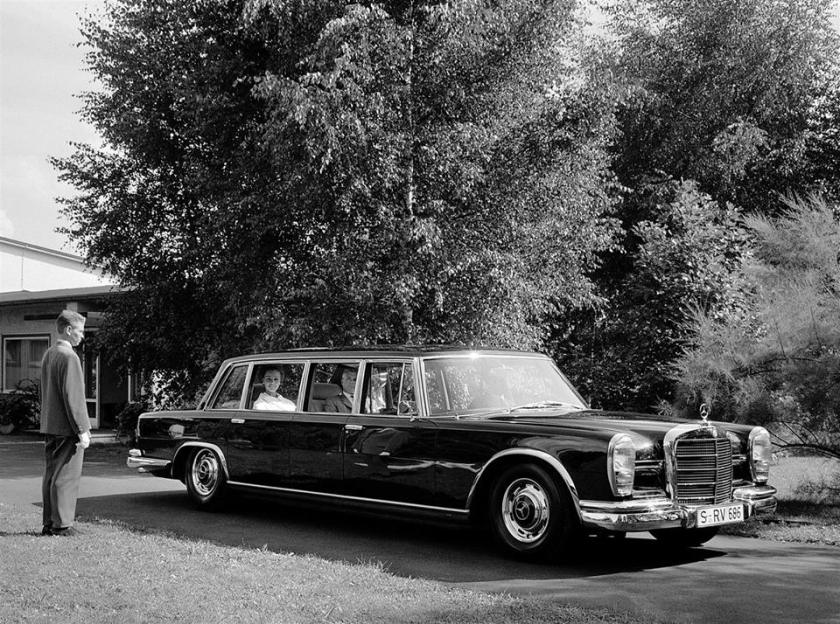
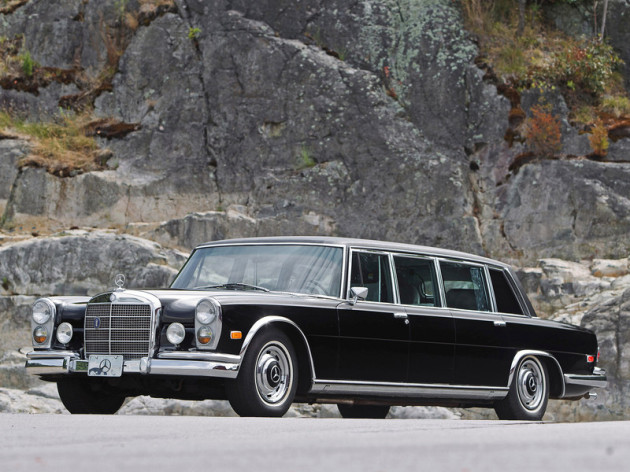
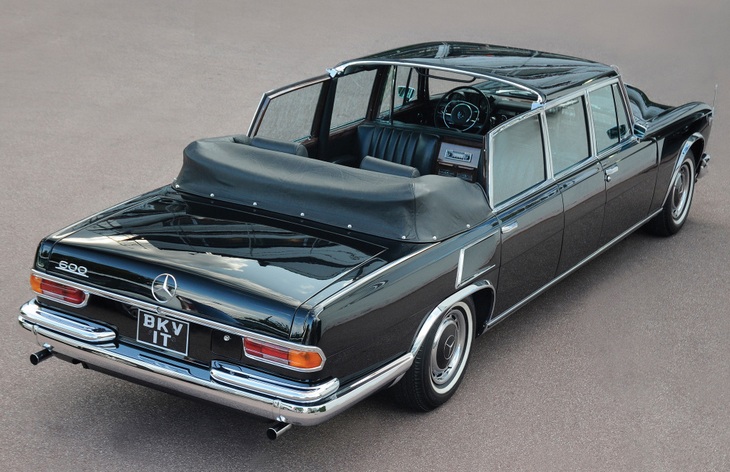
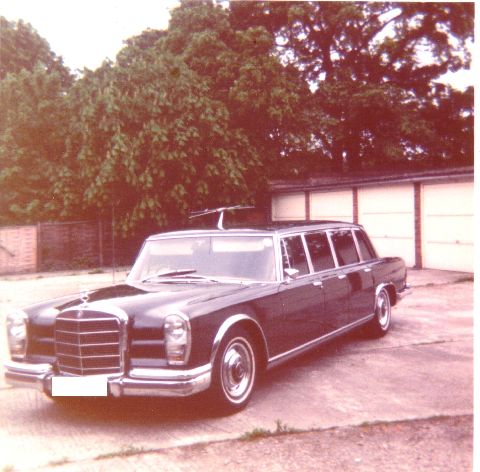
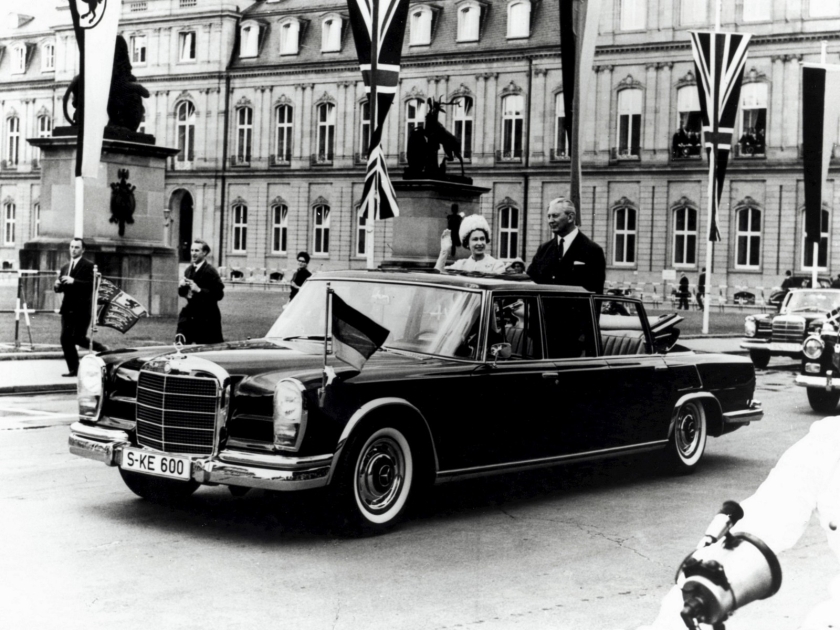
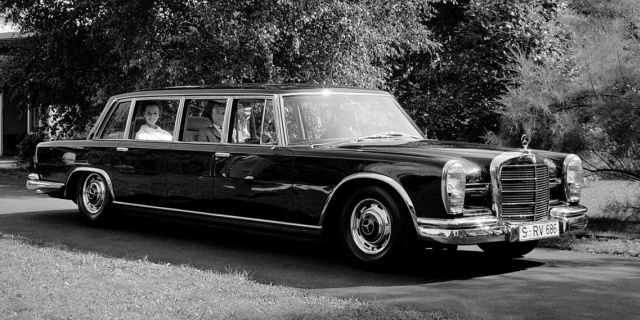
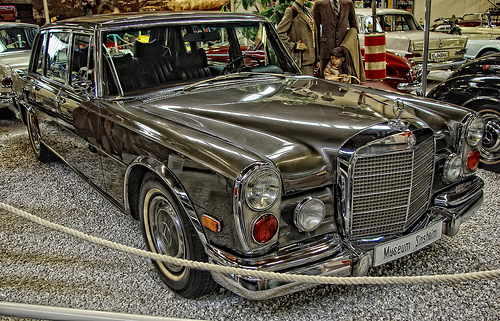
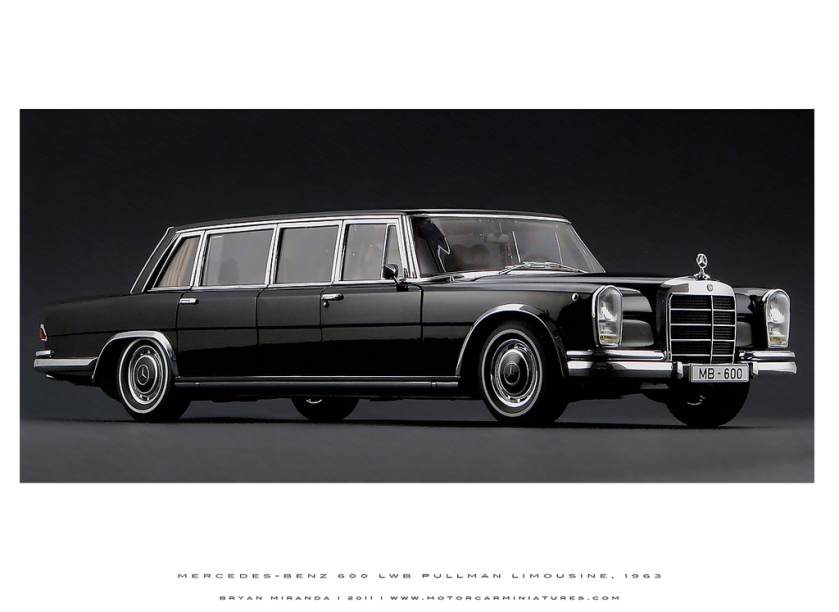
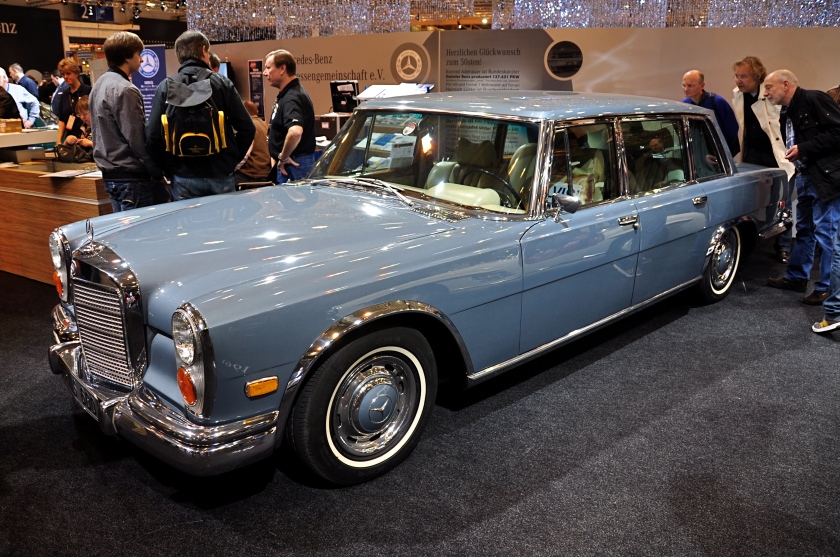
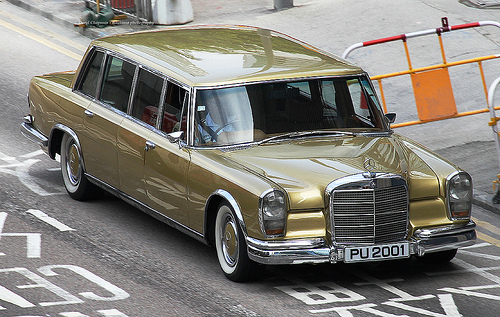
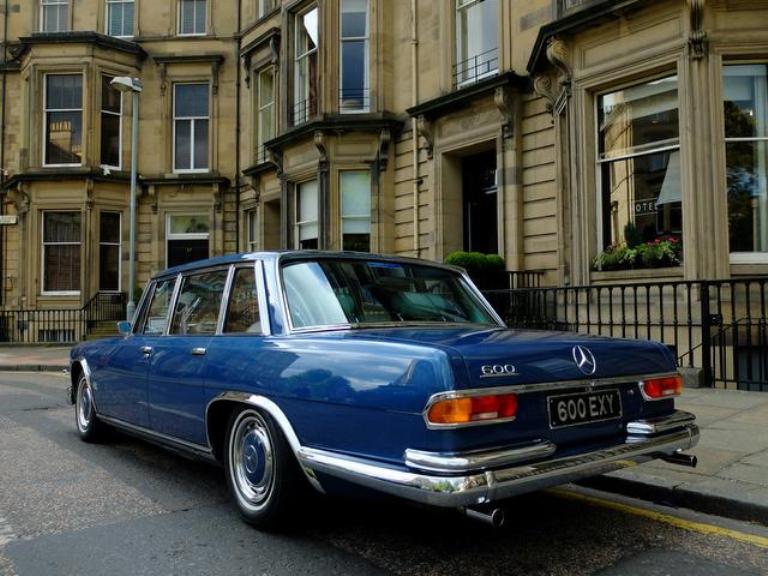
![]()
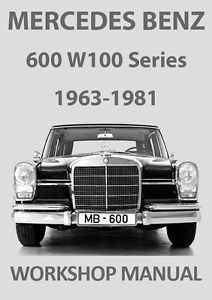
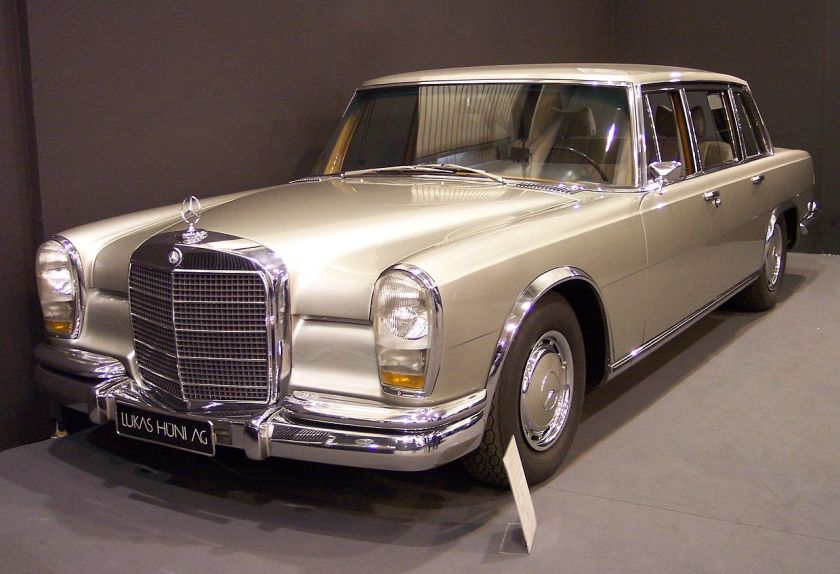
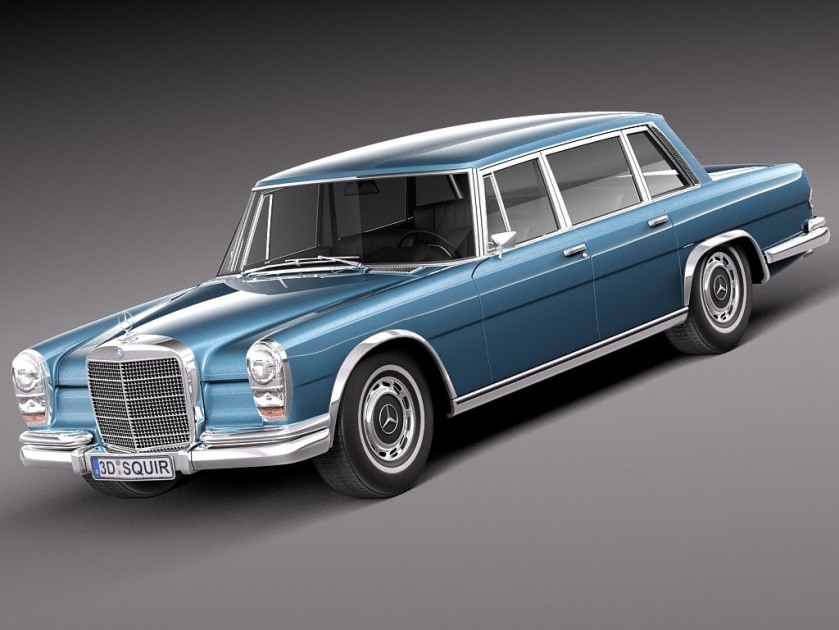
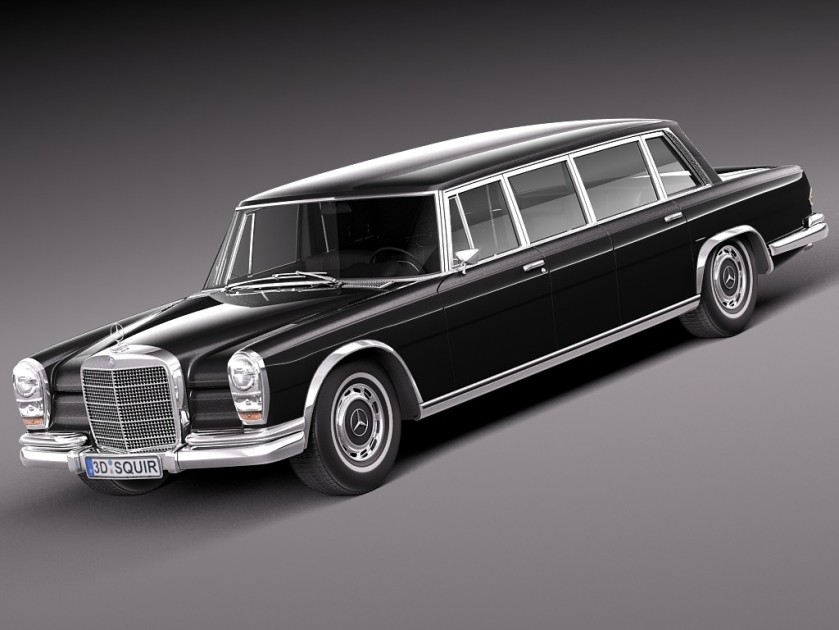
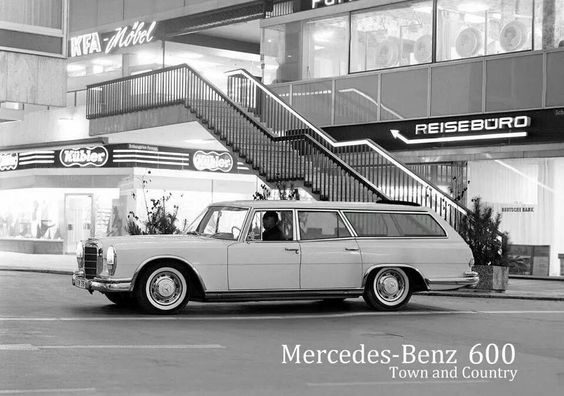
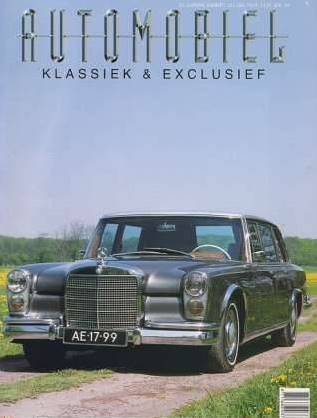
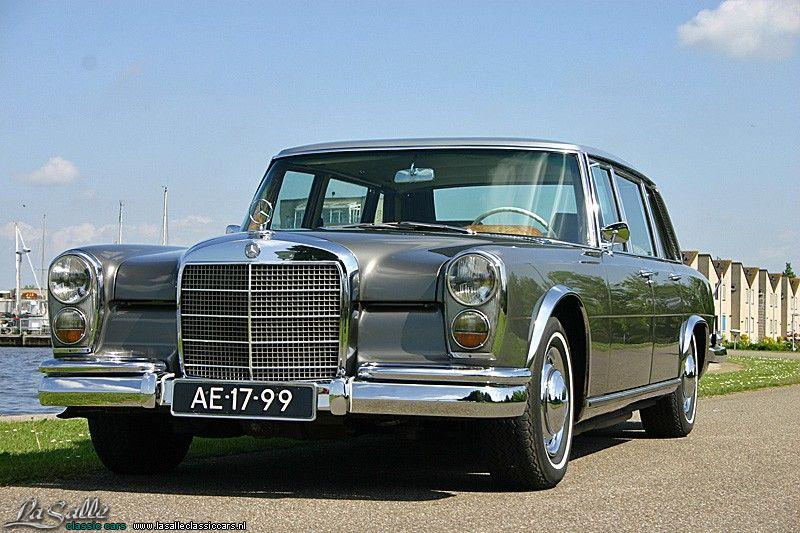
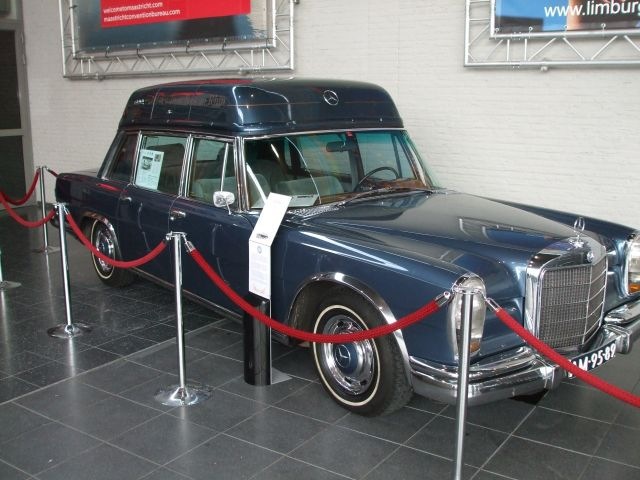
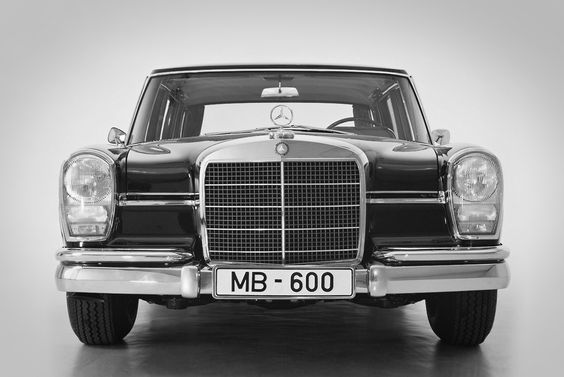
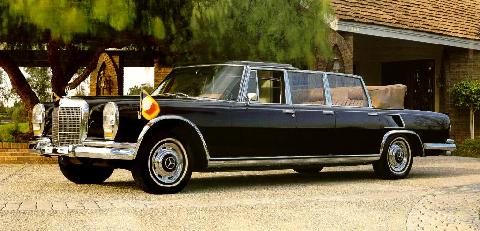
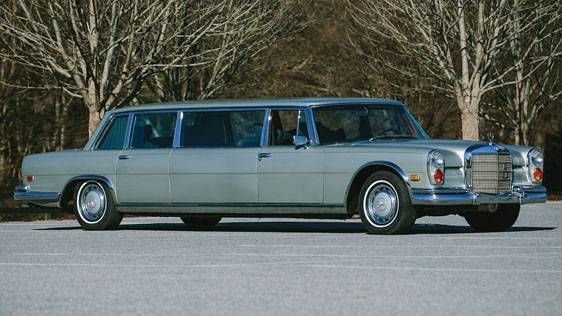
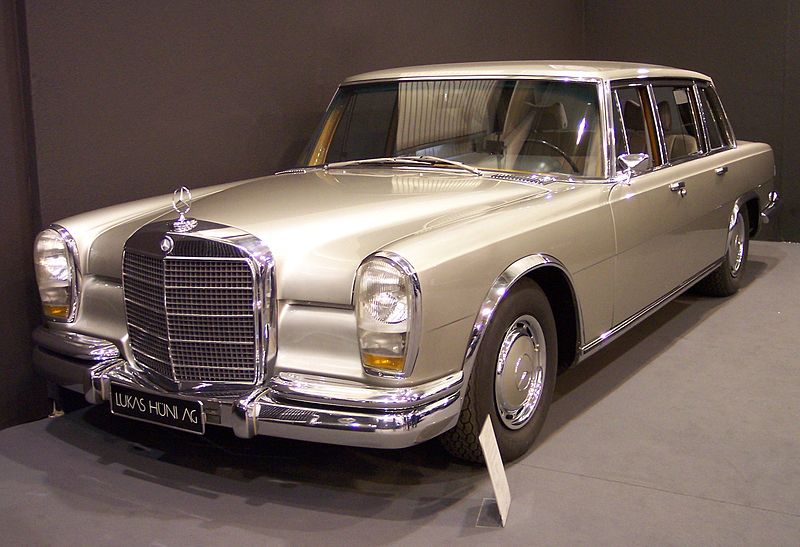
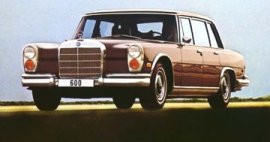
Mercedes Benz 600 Pullman Landaulet Limousine W100 1963-1981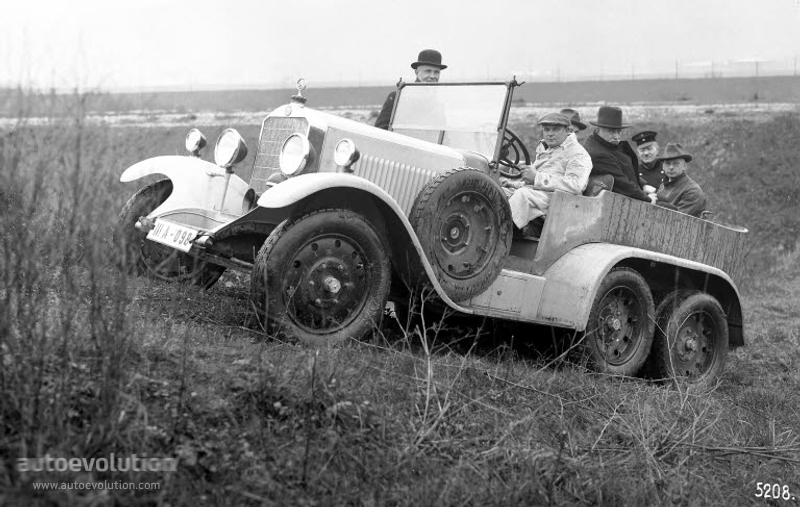 1926-28 MERCEDES BENZ G1 (W103).jpg
1926-28 MERCEDES BENZ G1 (W103).jpg
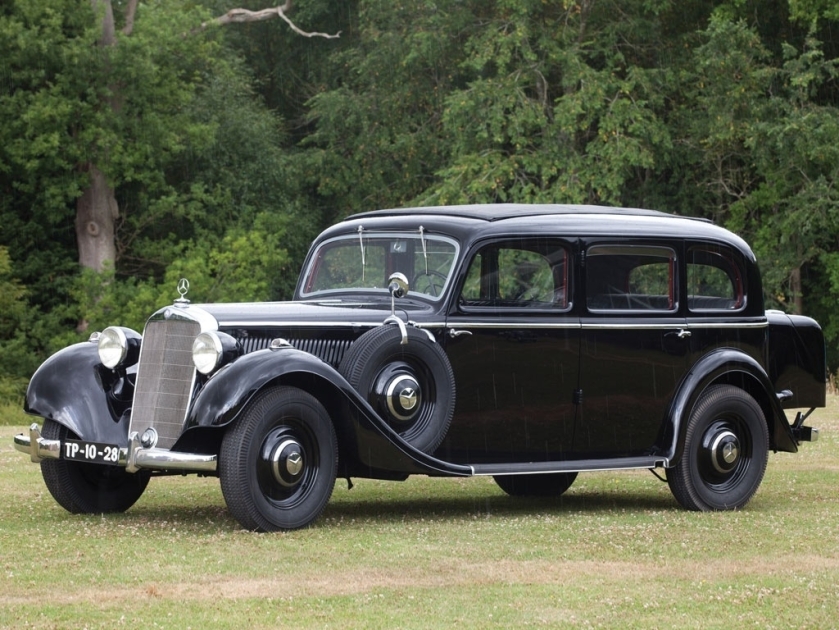
W103 1926-1928 G1, G2
W104 1928 G2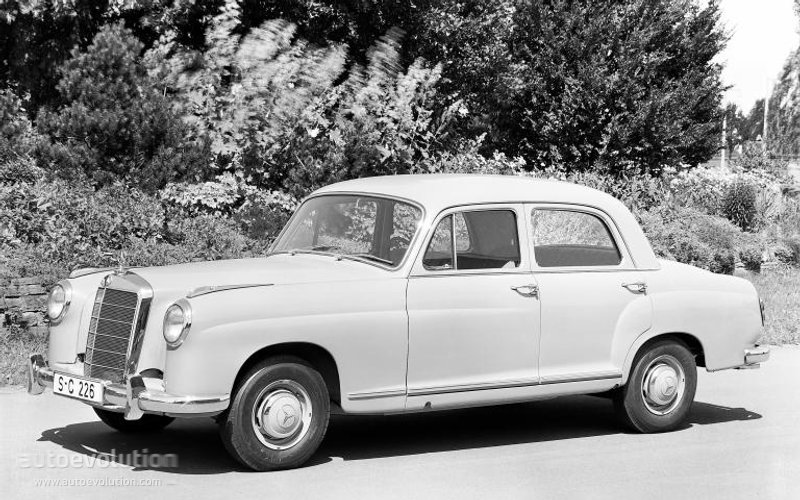 1954-59 MERCEDES BENZ S-KLASSE PONTON (W180-W105-W128) 219 W105 1956-1959 219
1954-59 MERCEDES BENZ S-KLASSE PONTON (W180-W105-W128) 219 W105 1956-1959 219
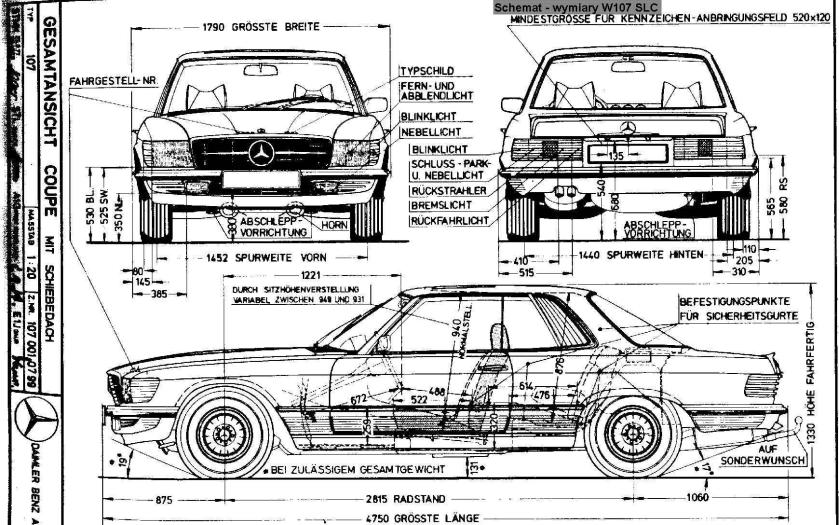 W107 1971-1989 280 SL – 560 SLC
W107 1971-1989 280 SL – 560 SLC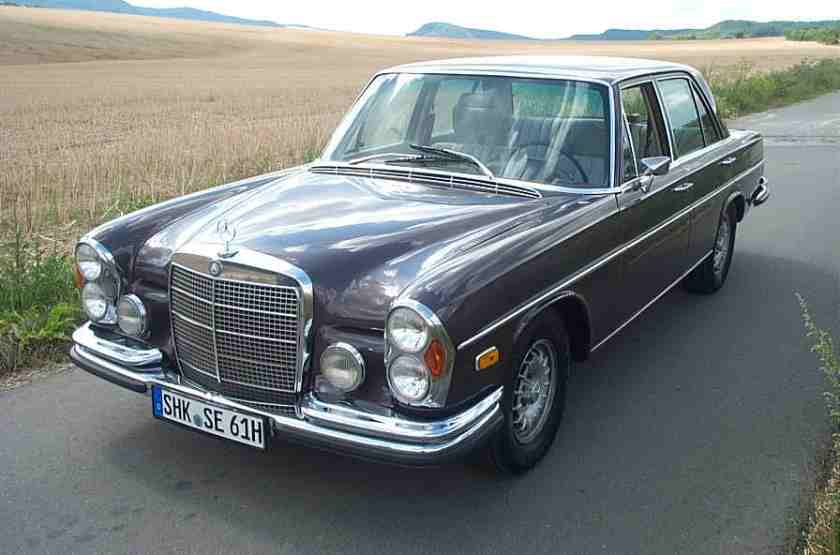 1972 Mercedes Benz 280 SE W108 1965-1972 250 S – 280 SEL
1972 Mercedes Benz 280 SE W108 1965-1972 250 S – 280 SEL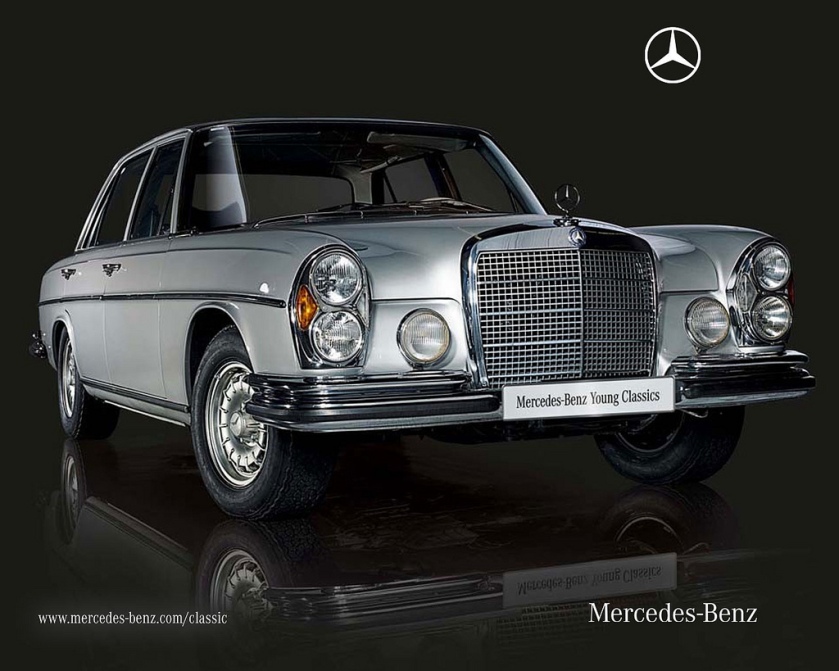 1968 Mercedes-Benz 300SEL 6.3 W109 1965-1972 300 SEL
1968 Mercedes-Benz 300SEL 6.3 W109 1965-1972 300 SEL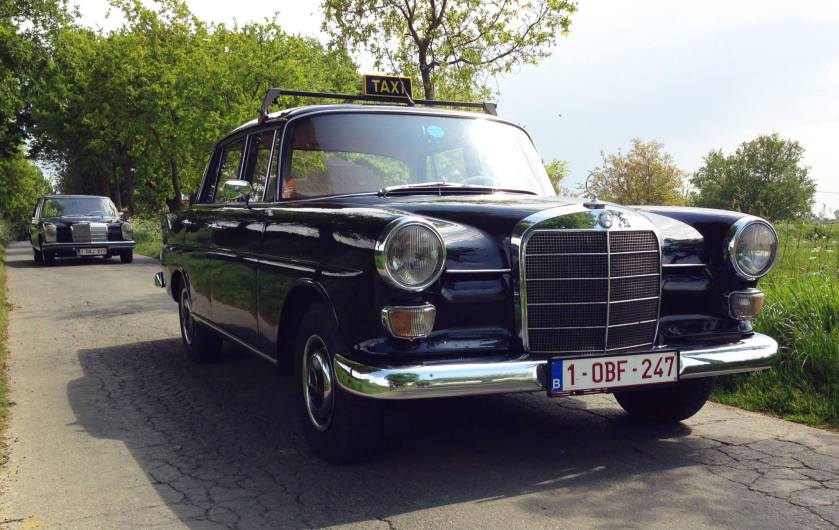 W110 1961-1968 190, 200, 230
W110 1961-1968 190, 200, 230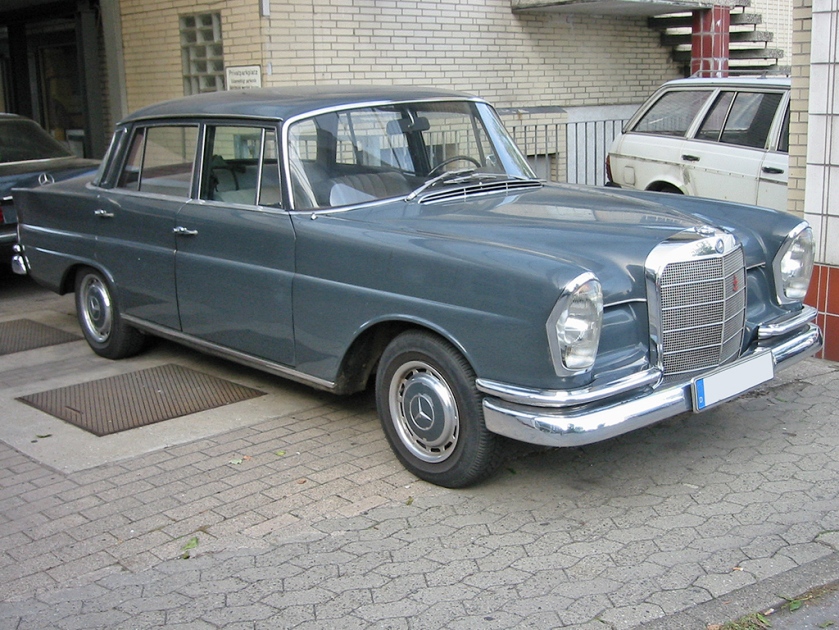 W111 1959-1971 220, 250, 280 /S/SE
W111 1959-1971 220, 250, 280 /S/SE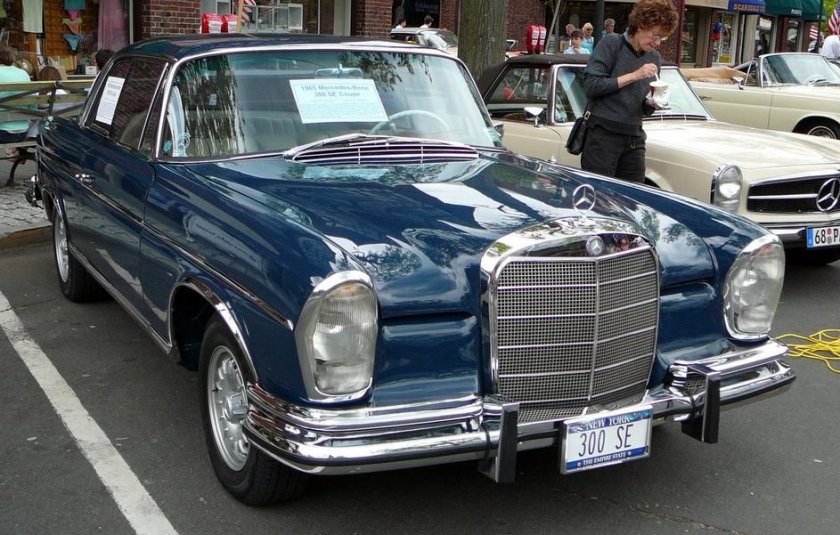 1965 Mercedes Benz W112 300SE 1961-1967 300 SE
1965 Mercedes Benz W112 300SE 1961-1967 300 SE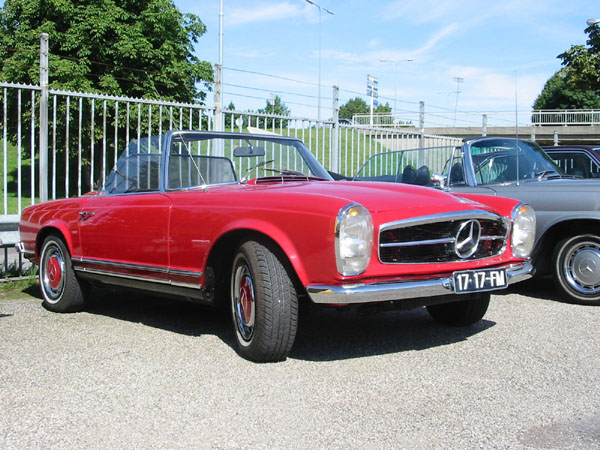 1968 Mercedes Benz W113 280Sl.W113 1963-1971 230 SL, 250 SL, 280 SL
1968 Mercedes Benz W113 280Sl.W113 1963-1971 230 SL, 250 SL, 280 SL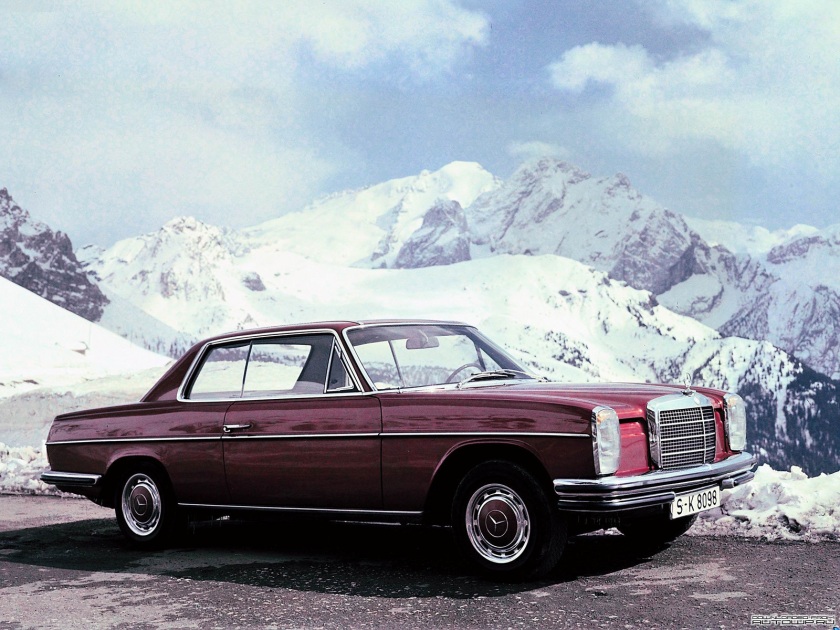 Mercedes Benz-E Class W114 W115.jpg
Mercedes Benz-E Class W114 W115.jpg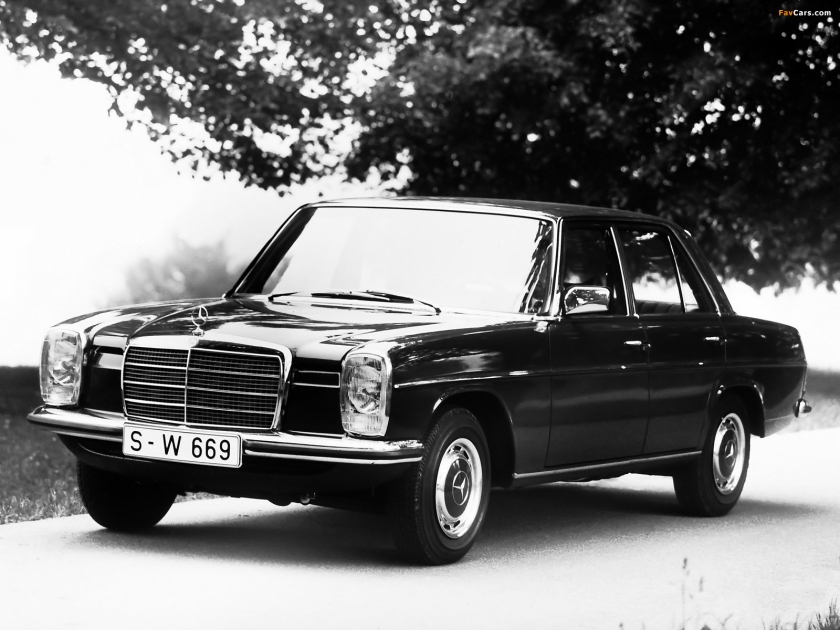 1967-76 Mercedes-Benz E-Klasse (W114/115) W114 1968-1976 230.6, 250, 250C, 280, 280E, 280C, 280CE
1967-76 Mercedes-Benz E-Klasse (W114/115) W114 1968-1976 230.6, 250, 250C, 280, 280E, 280C, 280CE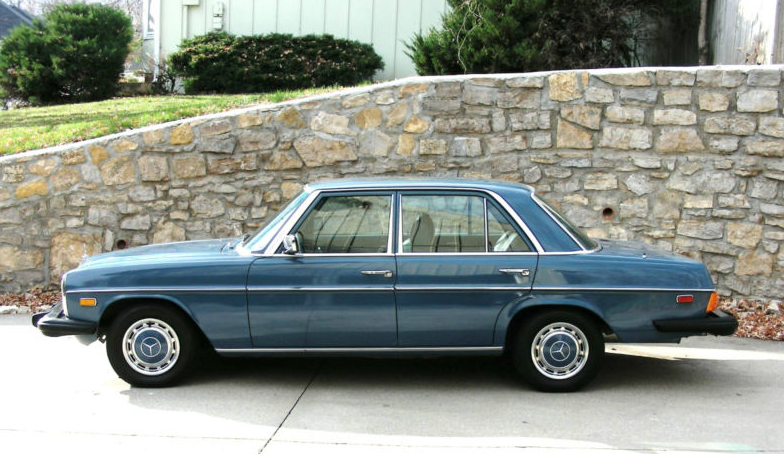 1975 Mercedes-Benz 240D W115 1968-1976 200, 200D, 220, 220D, 230, 240D, 240D 3.0, 300D
1975 Mercedes-Benz 240D W115 1968-1976 200, 200D, 220, 220D, 230, 240D, 240D 3.0, 300D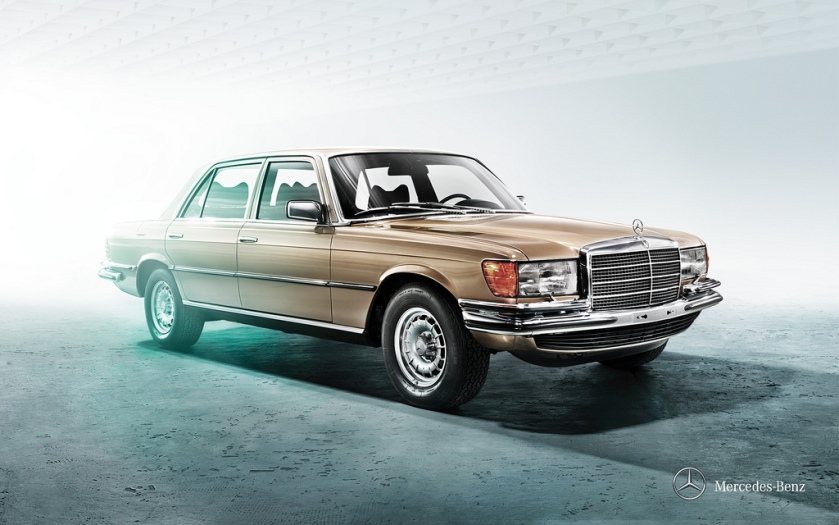 Mercedes-Benz 450 SEL 6.9 W116 1972-1980 280 S – 450 SEL
Mercedes-Benz 450 SEL 6.9 W116 1972-1980 280 S – 450 SEL
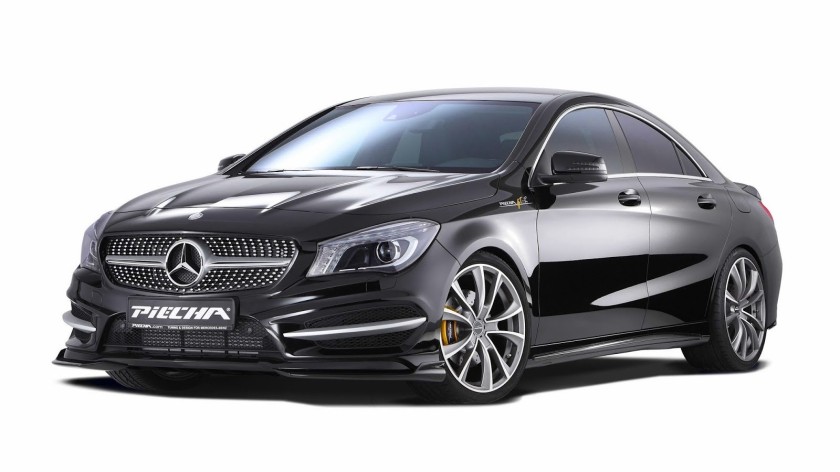 2013 Piecha Design Mercedes-Benz CLA 250 W117 2013 aro 19 2.0 Turbo 211 cv 2013- CLA
2013 Piecha Design Mercedes-Benz CLA 250 W117 2013 aro 19 2.0 Turbo 211 cv 2013- CLA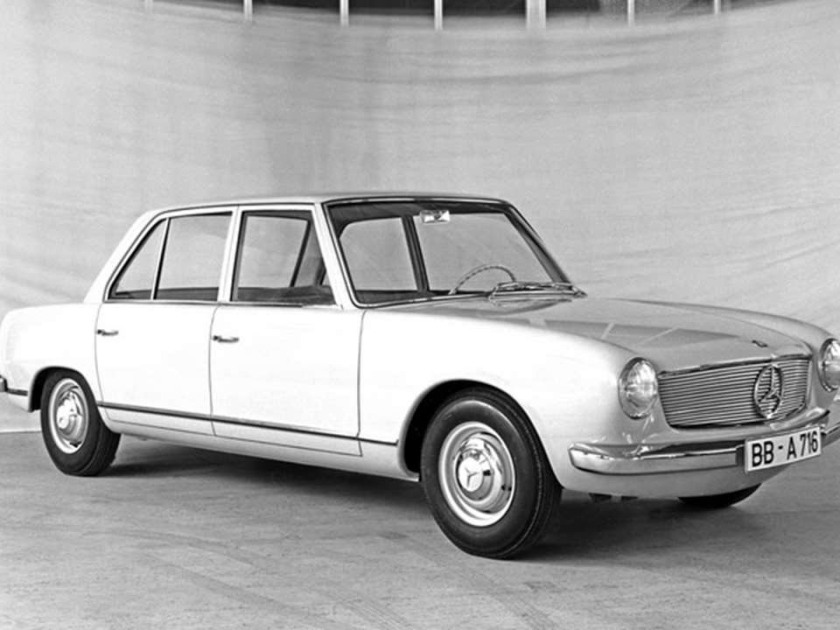 1960 Mercedes Benz w118 (Prototype Car)
1960 Mercedes Benz w118 (Prototype Car)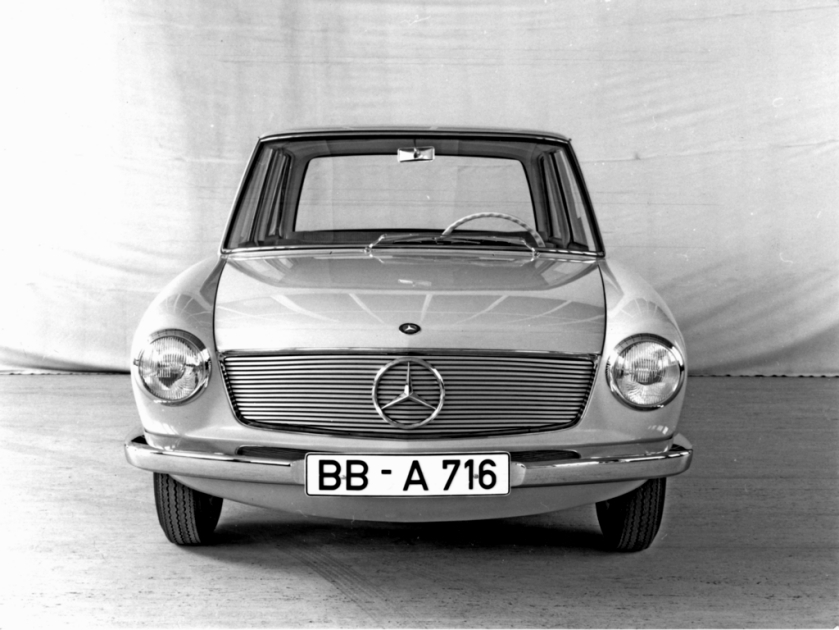 1960 Mercedes-Benz W118-W119 Prototype
1960 Mercedes-Benz W118-W119 Prototype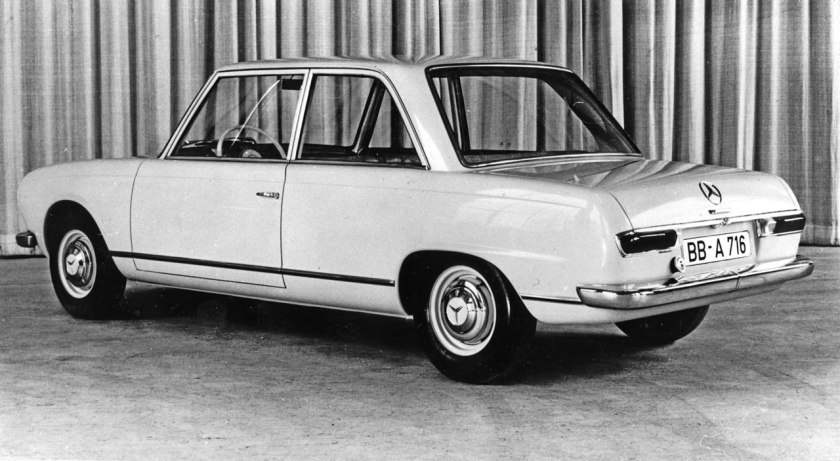 1960 Prototype of a compact Mercedes-Benz dating from around 1960 W118
1960 Prototype of a compact Mercedes-Benz dating from around 1960 W118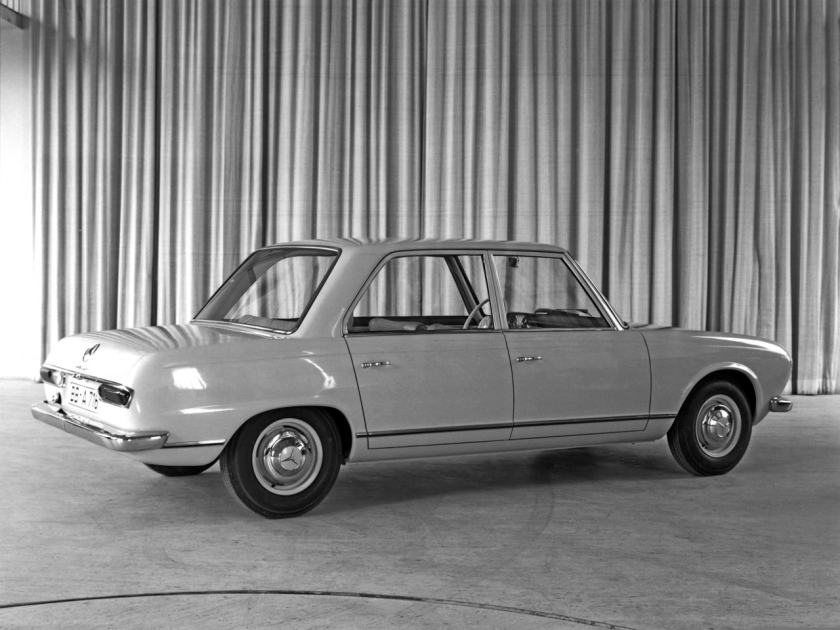 1960 Mercedes-Benz W118-W119 Prototype a W118 1960 prototype
1960 Mercedes-Benz W118-W119 Prototype a W118 1960 prototype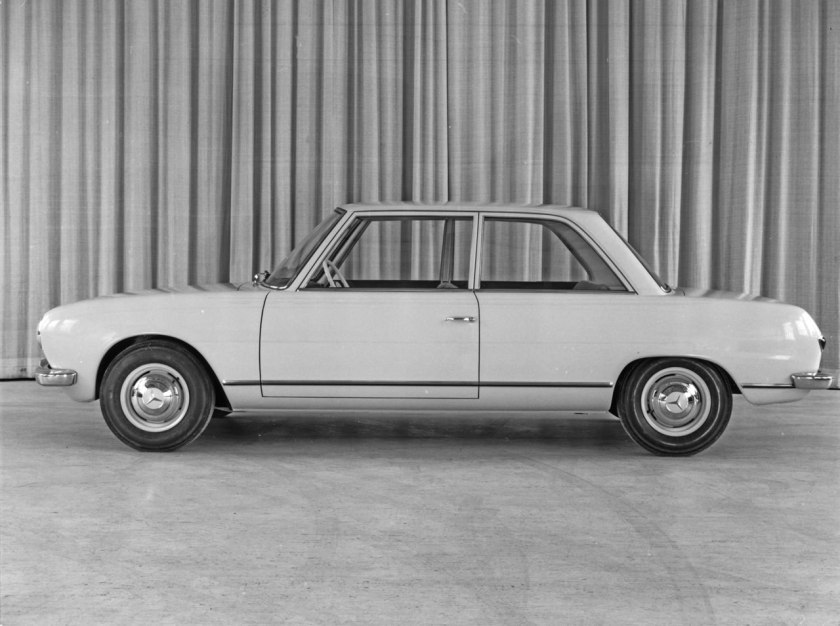 W119 1960 prototype
W119 1960 prototype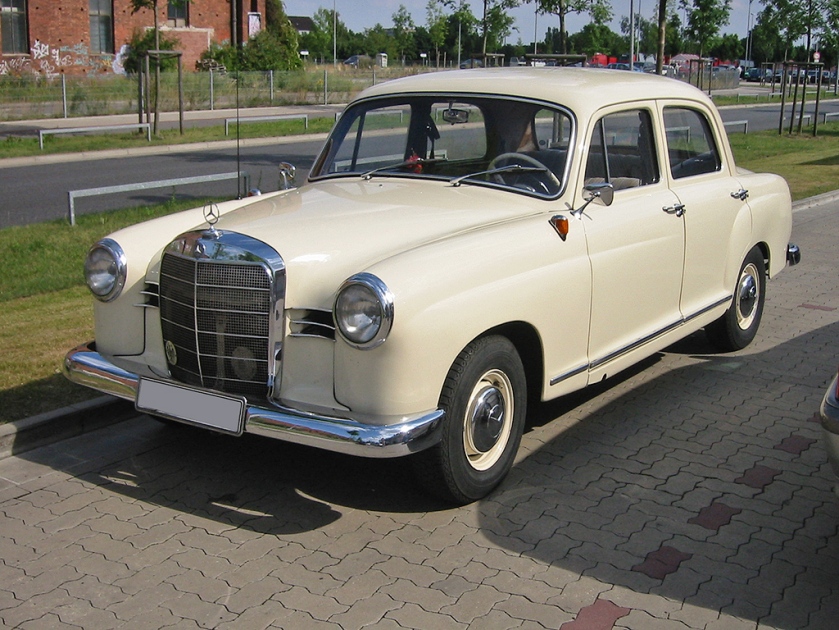 Mercedes Benz 180 2 v sst W120 1953-1962 180, 180D
Mercedes Benz 180 2 v sst W120 1953-1962 180, 180D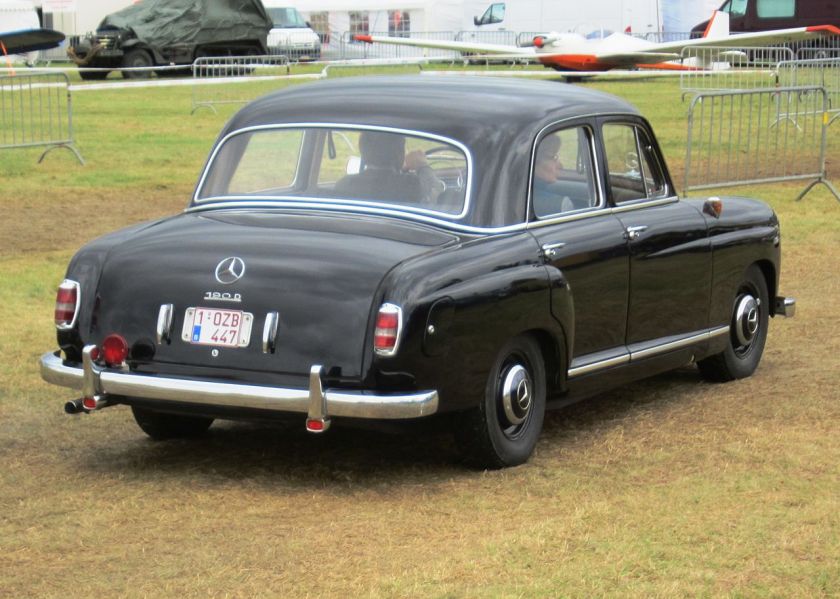 Mercedes-Benz 190D W121 1956-1961 190, 190D
Mercedes-Benz 190D W121 1956-1961 190, 190D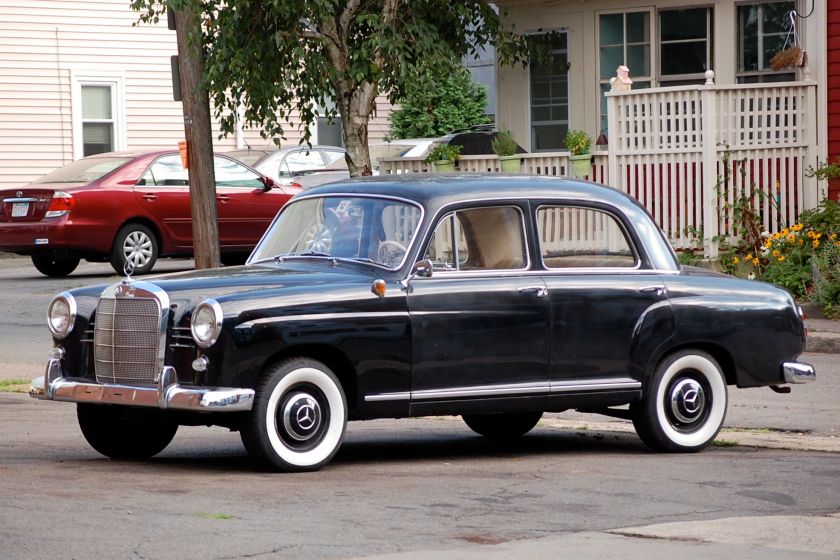
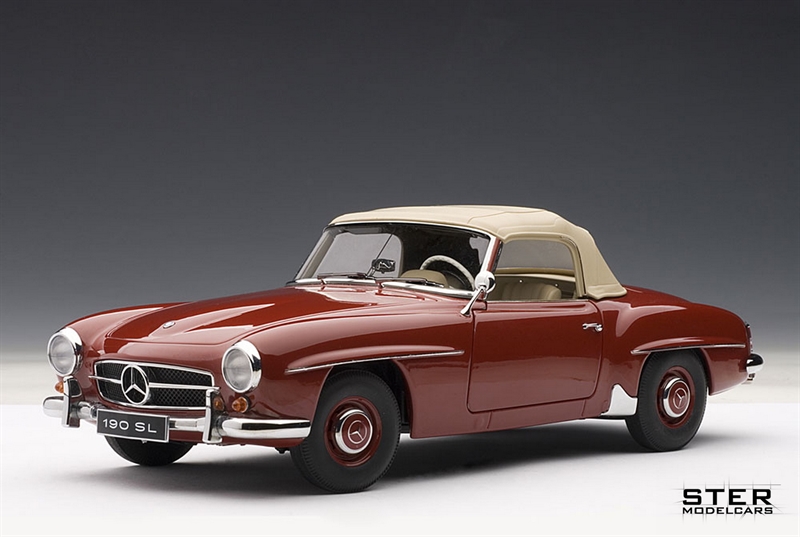 1955-63 Mercedes-Benz 190 SL (R121) R121 1955-1963 190 SL
1955-63 Mercedes-Benz 190 SL (R121) R121 1955-1963 190 SL
History of Mercedes Benz W122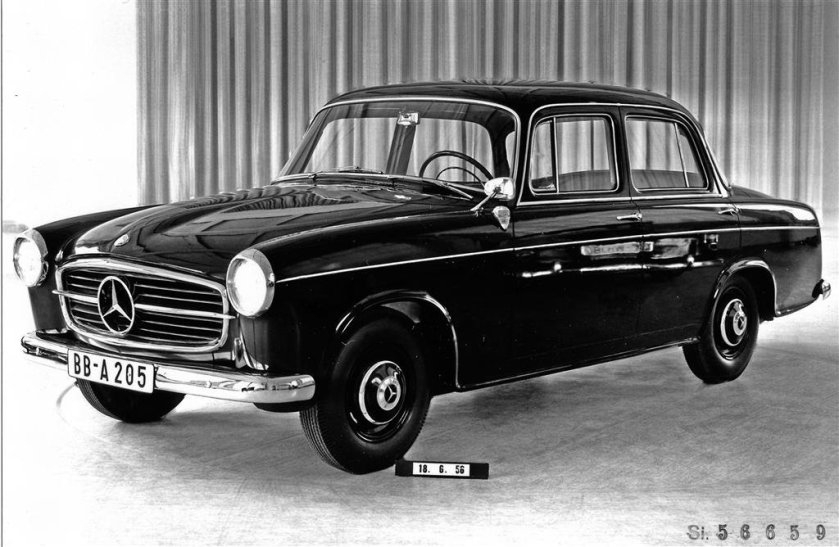 1956 Mercedes Benz W122 prototype 03.jpg W122 1956 prototype
1956 Mercedes Benz W122 prototype 03.jpg W122 1956 prototype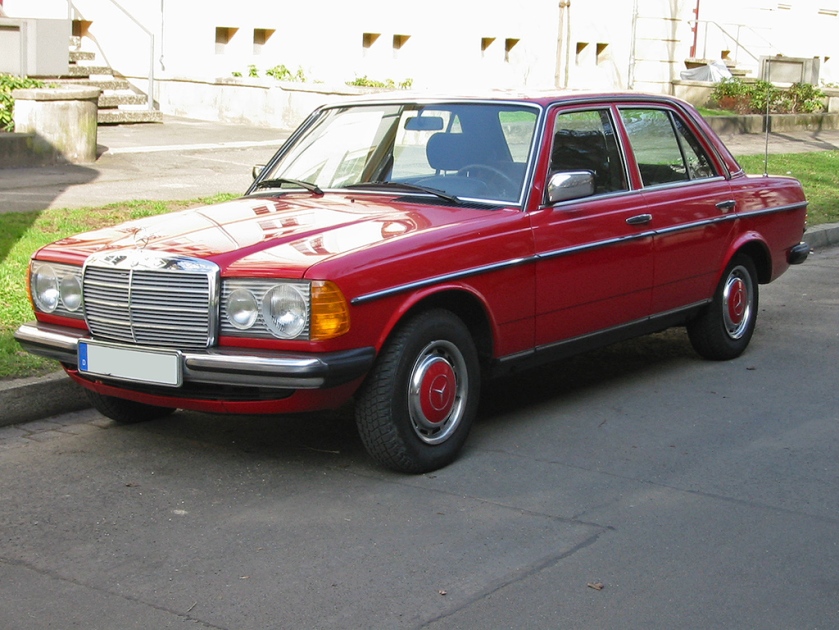 Mercedes W123 1976-1985 200, 230, 230E, 250, 280E, 300E
Mercedes W123 1976-1985 200, 230, 230E, 250, 280E, 300E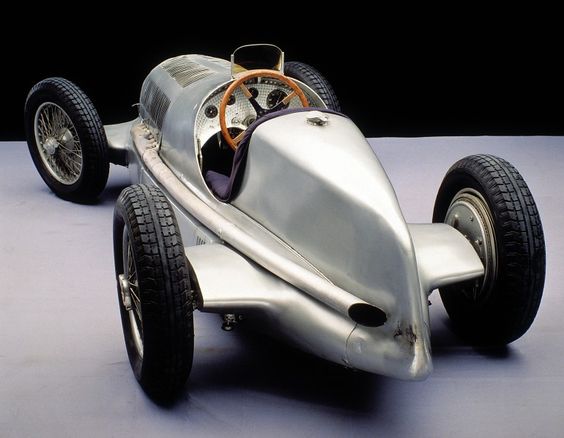
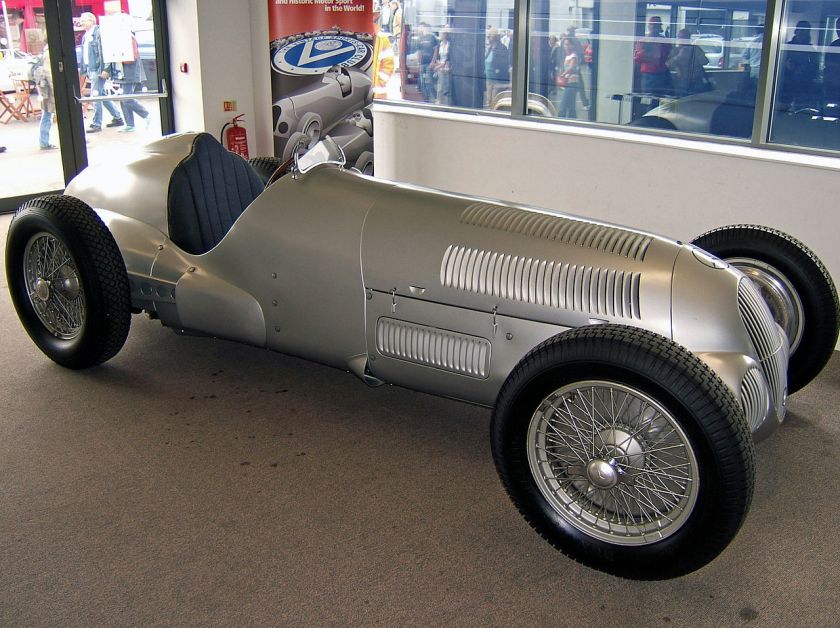 Mercedes Benz W125 1936-1938 W125 Silver Arrow
Mercedes Benz W125 1936-1938 W125 Silver Arrow Mercedes Benz W124 1985-1996 200 – 500E
Mercedes Benz W124 1985-1996 200 – 500E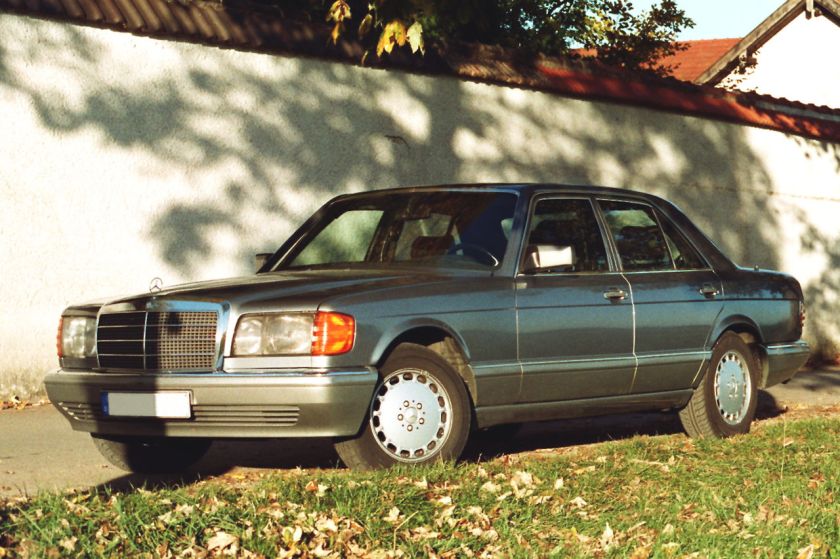 1987 Mercedes Benz 500 SE W126 1979-1993 260SE – 560SEL
1987 Mercedes Benz 500 SE W126 1979-1993 260SE – 560SEL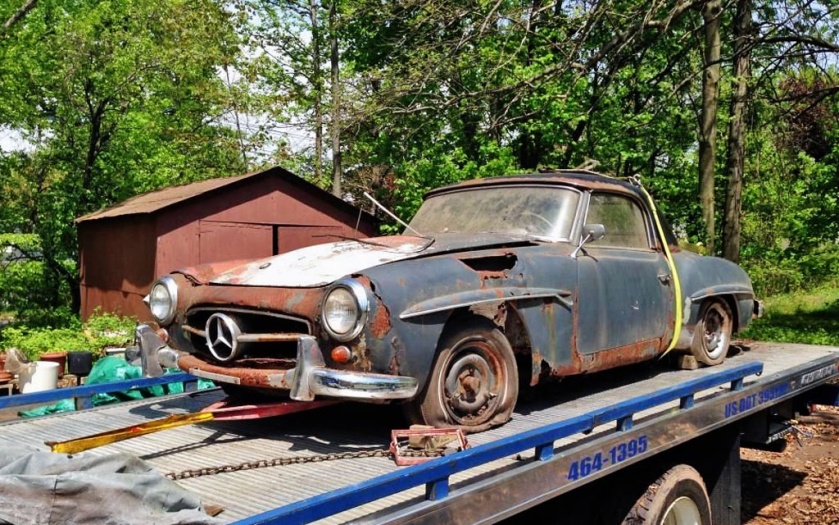 1960 Mercedes 190sl W127.jpg
1960 Mercedes 190sl W127.jpg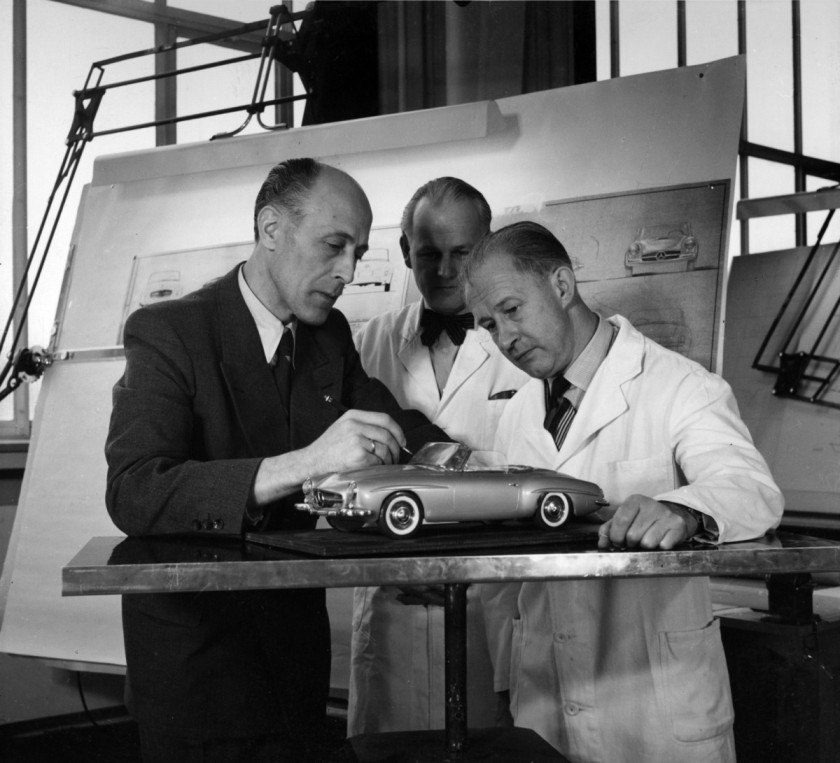 1955 mercedes-benz-190-sl-w-121-1955-1963-1955-3.jpg
1955 mercedes-benz-190-sl-w-121-1955-1963-1955-3.jpg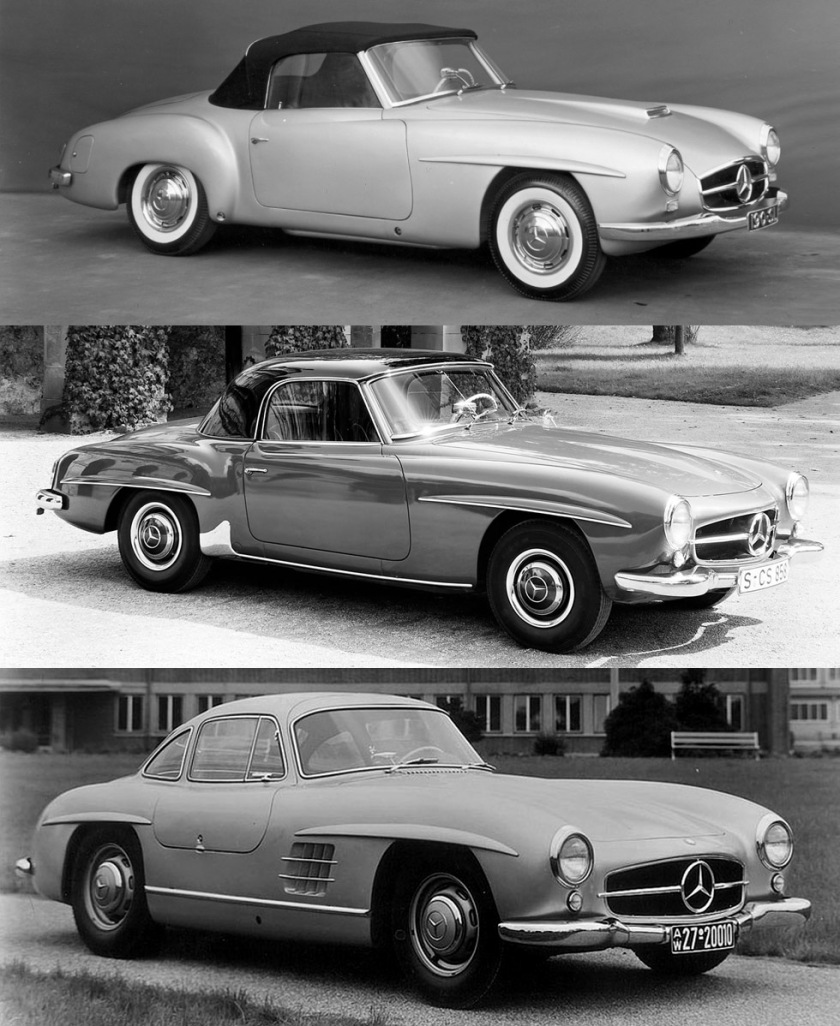 1955 Mercedes Benz oldnew190sl.jpg
1955 Mercedes Benz oldnew190sl.jpg
History of Mercedes Benz 190sl W121
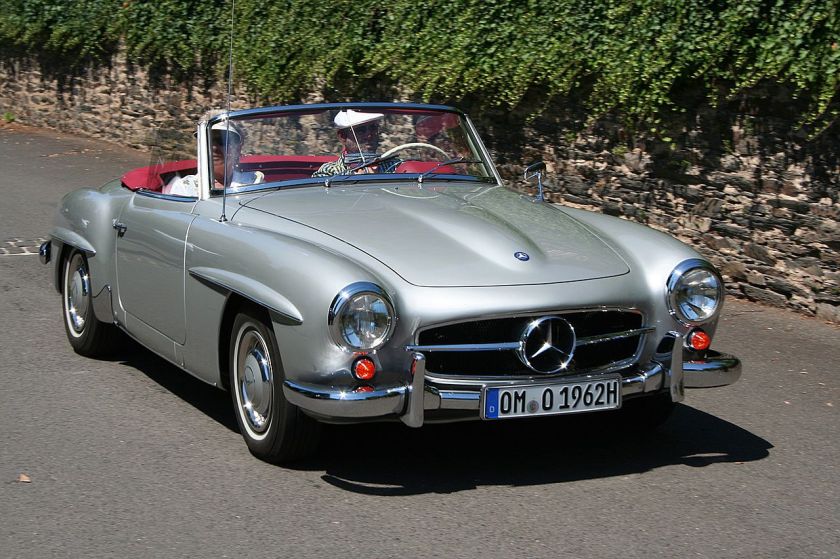 1955 Mercedes-Benz 190 SL W127 1955 190 SL (prototype)
1955 Mercedes-Benz 190 SL W127 1955 190 SL (prototype)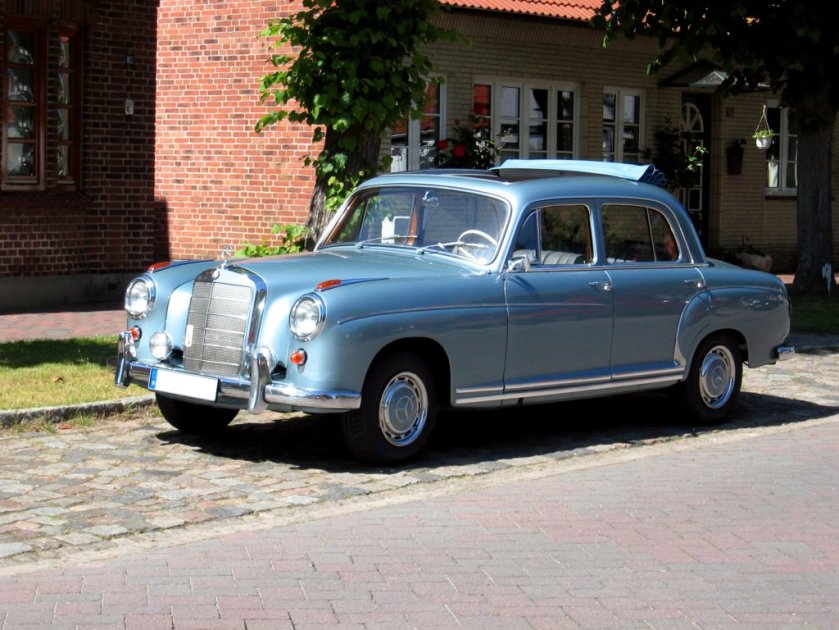 1959 Mercedes Benz 220SE W128 1958-1960 220 SE
1959 Mercedes Benz 220SE W128 1958-1960 220 SE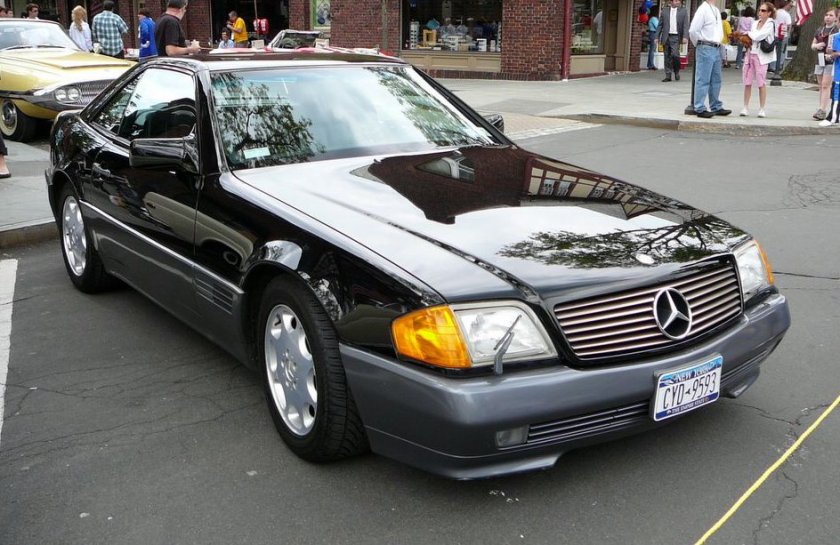 1989 Mercedes-Benz R129 SL SC06.
1989 Mercedes-Benz R129 SL SC06.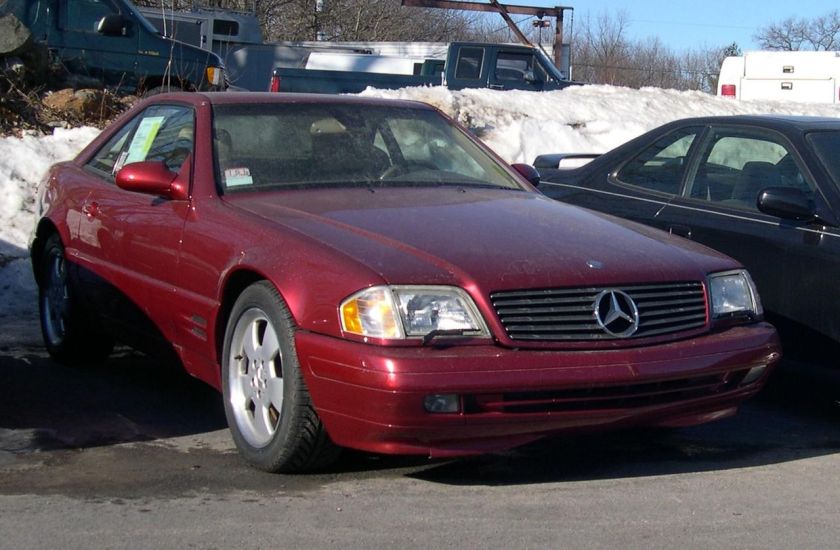 1999 Mercedes-Benz R129 SL500 R129 1989-2001 280 SL – 600 SL
1999 Mercedes-Benz R129 SL500 R129 1989-2001 280 SL – 600 SL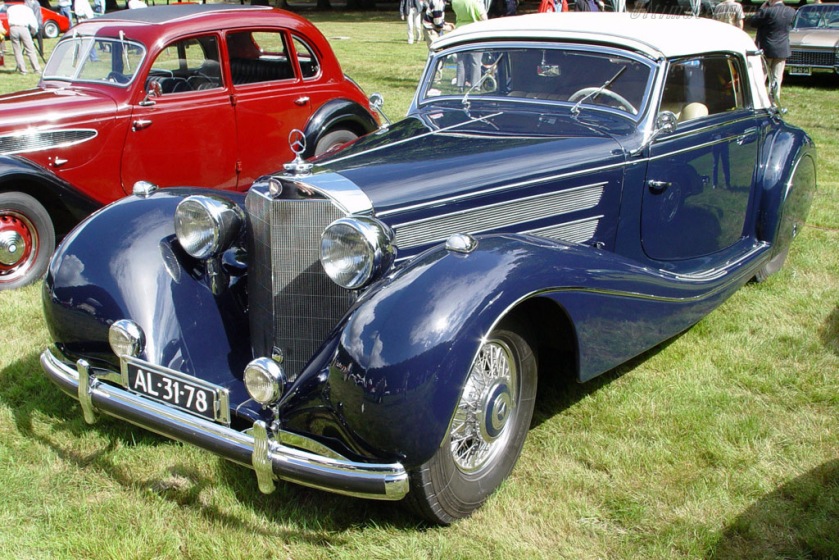 1939 Mercedes-Benz-580-K W129-Sport-Roadster W129 1939-1940 typ 540 K, 580 K
1939 Mercedes-Benz-580-K W129-Sport-Roadster W129 1939-1940 typ 540 K, 580 K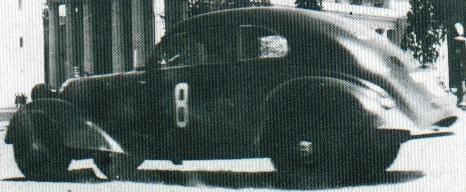 1935-36 Mercedes-Benz-150 Heckmotor Sport W130
1935-36 Mercedes-Benz-150 Heckmotor Sport W130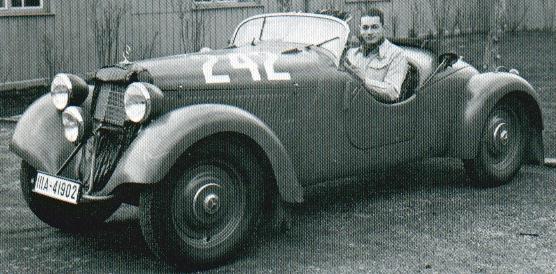 1935-36 Mercedes-Benz-150 Heckmotor Sport W130 open
1935-36 Mercedes-Benz-150 Heckmotor Sport W130 open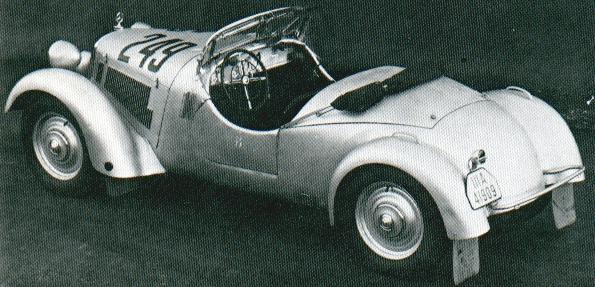 1935-36 Mercedes Benz 150 Heckmotor Sport W130
1935-36 Mercedes Benz 150 Heckmotor Sport W130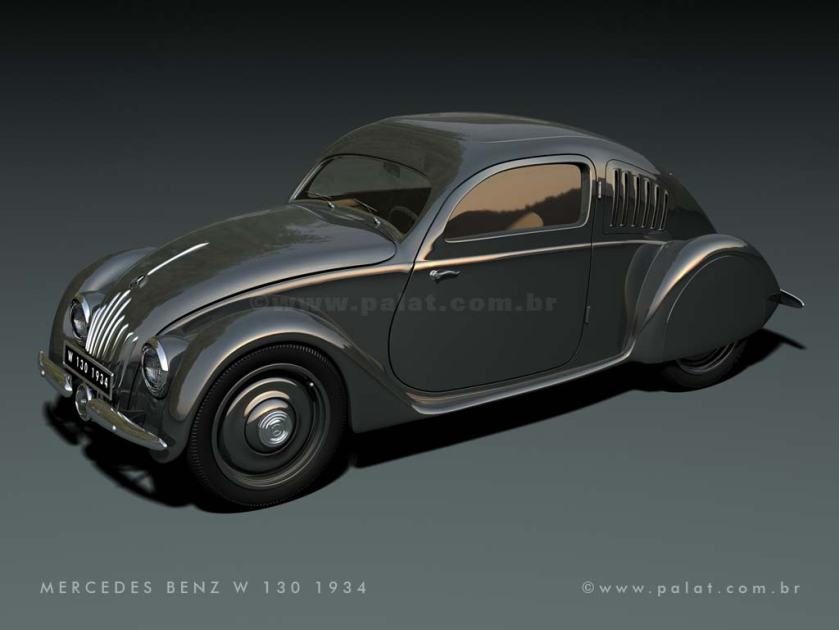
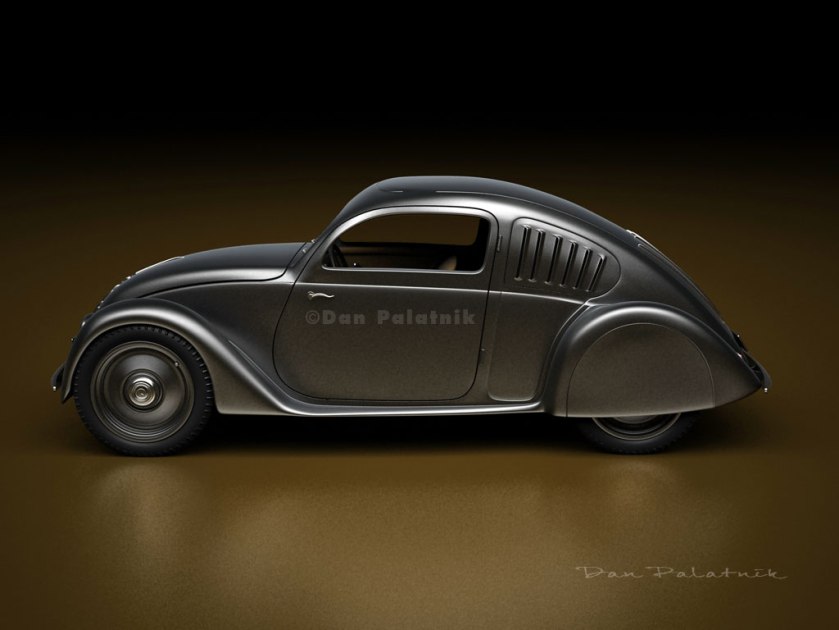 1934 Mercedes-Benz-W-130-Production-5-1934-2 W130 1935 typ 150 (rearmotor)
1934 Mercedes-Benz-W-130-Production-5-1934-2 W130 1935 typ 150 (rearmotor)
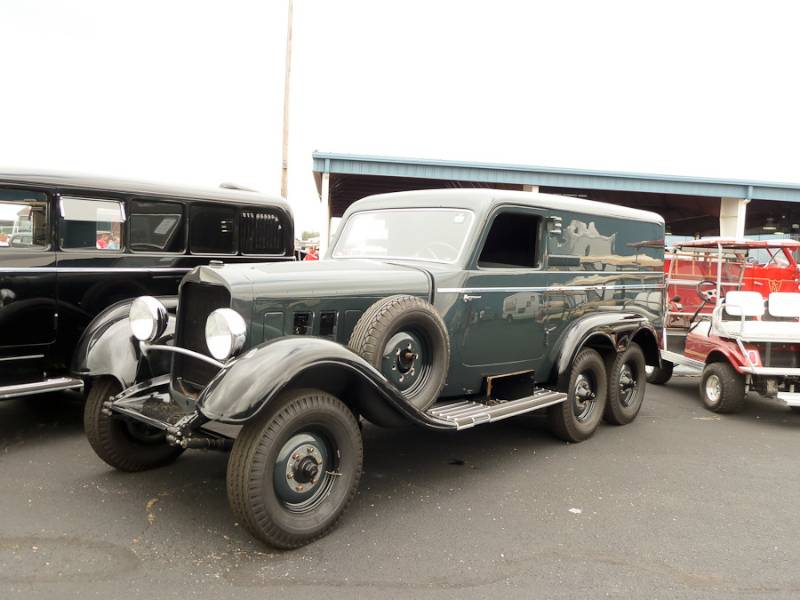 Mercedes-Benz Replica G-4 W131 Grosser Six Luggage Carrier S-N 440891E Black-Black
Mercedes-Benz Replica G-4 W131 Grosser Six Luggage Carrier S-N 440891E Black-Black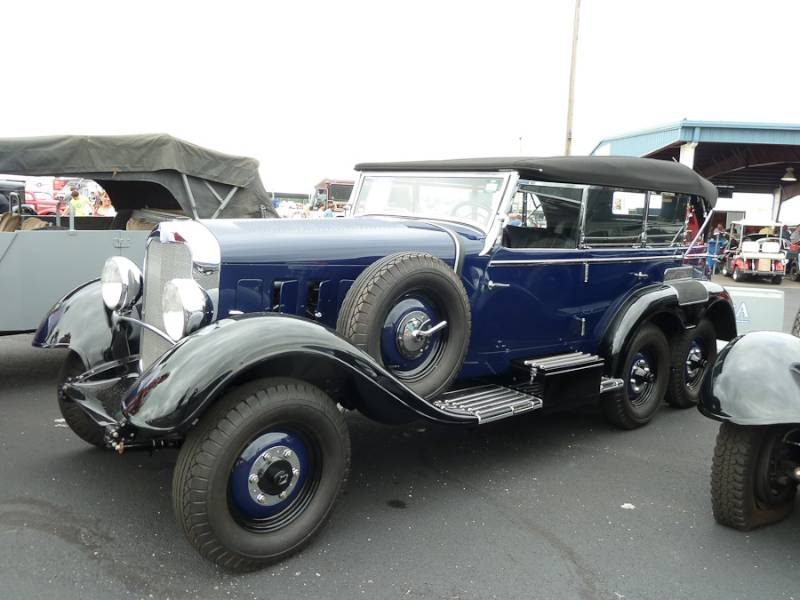 Mercedes-Benz Replica G-4 W131 Grosser Six Seven-Passenger Convertible Sedan
Mercedes-Benz Replica G-4 W131 Grosser Six Seven-Passenger Convertible Sedan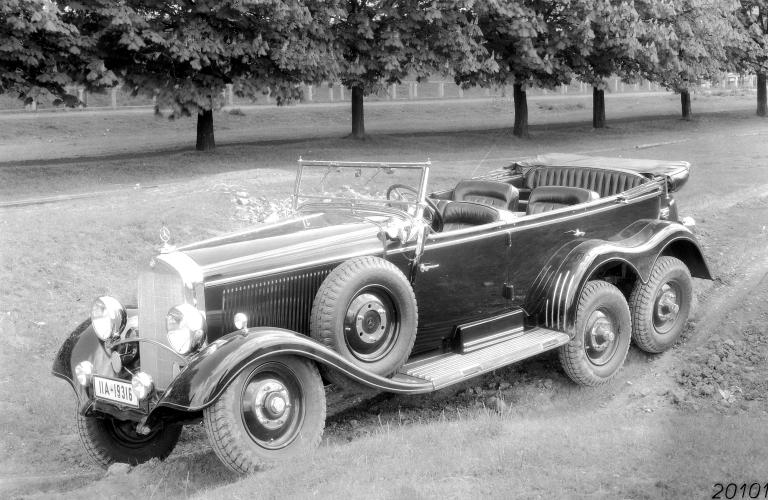 1934 mercedes benz 520 540 g 4 W131.jpg
1934 mercedes benz 520 540 g 4 W131.jpg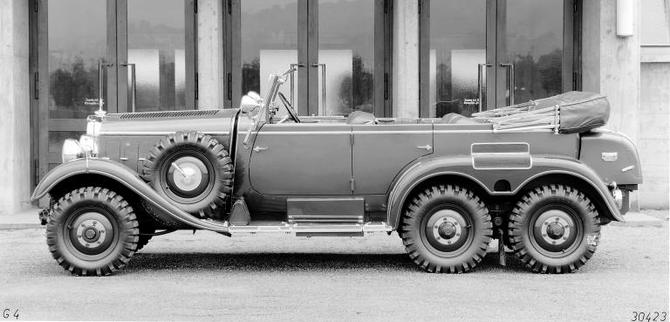 1934 mercedes benz 520 540 g 4 W131a.jpg W131 1934 G 4
1934 mercedes benz 520 540 g 4 W131a.jpg W131 1934 G 4
W132 1934-1935 typ 240
W132 II 1935 typ 250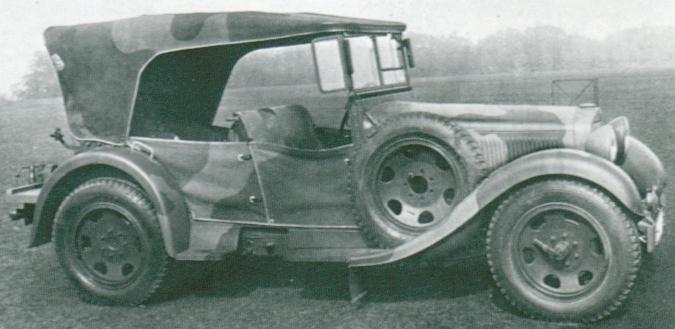 1935 Mercedes-Benz-170VG W133 III W133 III 1935 typ 170 VG Kuebelsitzer 4×4
1935 Mercedes-Benz-170VG W133 III W133 III 1935 typ 170 VG Kuebelsitzer 4×4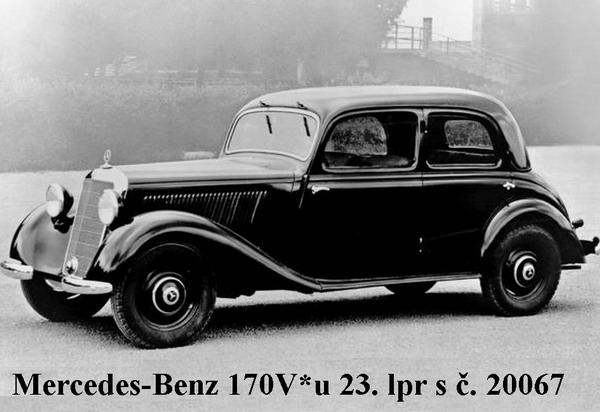 1935 mercedes-benz-05 170VG (W133 III).jpg
1935 mercedes-benz-05 170VG (W133 III).jpg
W133 1935 typ 160 H
W133 II 1935 typ 160 HM
W133 III 1935 typ 170 VG Kuebelsitzer 4×4
W134 1934 typ 175 D (prototype)
W134 I 1935 typ 190 D (prototype)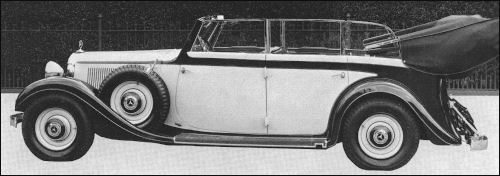 1936 mercedes benz 1936 W135 cabrio papler W135 1936-1937 typ 290 Kübelwagen II
1936 mercedes benz 1936 W135 cabrio papler W135 1936-1937 typ 290 Kübelwagen II
W136 1936-1942 typ 170 V
W137 1930-1936 L1000 (Stuttgart 260 based)
W138 1936-1940 typ 260 D
W139 1936 typ 170 VL Kuebelsitzer 4×4, 160 VL
W140 1991-1998 300 SE – 600 SEL
W140 I 1935 typ 240 S
W141 1935-1936 typ 175 DX (prototype)
W142 1937-1942 typ 320, 320 WK, 340 WK
W143 1937-1941 typ 230
W144 1936-1937 typ 130 V (Roehr prototype)
W145 1936-1937 typ 190 V (Roehr prototype)
W146 1936-1937 typ 260 V (Roehr prototype)
W147 1938 typ 400 V (Roehr prototype)
W148 1941-1942 typ 600 V
W149 1938-1939 typ 200 V Sportwagen
W150 1938-1943 typ 770 “Grosser”
W152 1937-1940 G5
W153 1938-1943 typ 230, typ 340
W154 1938-1939 W154 Silver Arrow
W156 coming soon GLA
W157 1941-1942 typ 600 K
W158 1938-1942 typ 170 VX (prototype)
W159 1941-1942 typ 260 (prototype)
W160 1938 typ 400 VM (Roehr prototype)
W161 1938 typ 400 VMS (Roehr prototype)
W163 1997-2005 ML
W164 2005-2011 ML
X164 2006-2012 GL
W164 1939 typ 150 BX (prototype)
W165 1939 W165 Silver Arrow
W166 2011- ML
X166 2012- GL
W166 1939 typ 290 D (prototype)
W168 1943 typ 290 D (prototype)
W168 1997-2004 A
W169 2004-2012 A
R170 1996-2004 SLK
R171 2004-2011 SLK
R172 2011- SLK
R197 2009-2014 SLS AMG Roadster
W173 1942 typ 650 (prototype)
W176 2012- A
W177 coming soon SLM
W179 1942-1944 G6
W180 1984-1959 220 /S
W185 1939 typ 120 FX (prototype)
W186 1951-1957 300
W187 1951-1955 220
W188 1951-1958 300 S
W189 1957-1962 300
C190 2014- AMG GT
W191 1952-1953 170 S, 170 DS
W194 1952-1953 300 SL
W195 1937 W125 Rekordwagen
W196 1954-1955 W196 Formula 1
W196S 1955 300 SLR
C197 2009-2014 SLS AMG
W198 1954-1963 300SL
C199 2003-2010 SLR
W201 1982-1993 190
W202 1993-2000 C
W203 2001-2007 C
CL203 2008-2011 CLC
W204 2007- C
X204 2008- GLK
W205 coming soon C
C207 2009- E coupe
C208 1996-2003 CLK
C209 2003-2009 CLK
W210 1995-2003 E
W211 2002-2009 E
W212 2009- E
C215 1999-2006 CL
C216 2006- CL
C218 2010- CLS Coupé
X218 2010- CLS Shooting Brake
C219 2004-2010 CLS
W220 1998-2005 S
W221 2005-2013 S
W222 2013- S
R230 2001-2011 SL
R231 2011- SL
W240 2002-2013 Maybach
W245 2005-2011 B
W246 2011- B
W251 2005- R
W252 coming soon R
C297 1997 CLK-GTR
303 L 4500, L 5000, L 5500
304 L 6600
309 1967-1986 T2 (old)
310 1967-1986 T2 (old)
311 L 3500
312 L 4500
313 1967-1986 T2 (old)
315
319 1956-1968 L319 / L319D
321 L911
322 L1113
323 L710
325
326
327 L1413
328 L911
329 L1518
331
332
333
334
335 L1620
336 L1920
337
338 L1418
346 L1624, L1924
349 L1618
366 L2023
401 1953-1956 Unimog U25
402 1953-1956 Unimog U25
403 1966-1988 Unimog U54, U66, U72, U800
404 1956-1980 Unimog U82, U110 (Unimog S)
405 2000- Unimog U300, U400, U500
406 1963-1986 Unimog U65, U70, U80, U84, U900
407 1988-1993 Unimog U600, U650
408 1992-2001 Unimog U90, U100
409 1996-1998 Unimog UX100
411 1956-1971 Unimog U34, U36
413 1969-1988 Unimog U80, U800
414 2002-2005 Vaneo
415 2012- Citan
416 1965-1989 Unimog U80, U90, U100, U110, U125, U1100
417 1988-1993 Unimog U 800, U900, U1100, U1150
418 1992-1998 Unimog U110, U140
421 1966-1989 Unimog U40, U45, U52, U60, U600
424 1976-1989 Unimog U1000, U1200, U1250, U1550
425 1975-1990 Unimog U1300, U1500
427 1988-2002 Unimog U1000, U1200, U1250, U1400, U1450, U1600, U1650
435 1975-1990 Unimog U1300, U1700
437 1988-2002 Unimog U1350, U1550, U1700, U1750, U2100, U2150, U2400, U2450
437.4 2002- Unimog U3000, U4000, U5000
440 1973-1991 MB-Trac 65/70, 700, 800, 900
441 1982-1991 MB-Trac 1000
442 1976-1991 MB-Trac 1100
443 1976-1991 MB-Trac 1300, 1400, 1500, 1600, 1800
450 1998–2007 Smart Fortwo
451 2007– Smart Fortwo
452 2003-2005 Smart Roadster
454 2004-2006 Smart Forfour
460 1979-1991 G
461 1979- G
462 G
463 1990- G
601 1977-1985 T1
602 1977-1985 T1
611 1977-1985 T1
631 1981-1995 MB100
638 1996-2003 Vito
639 2003- Vito
661 1999-2004 MB140
667 1986-1996 T2 (new)
668 1986-1996 T2 (new)
669 1986-1996 T2 (new)
670 1986-1996 T2 (new)
670 1996- Vario
901 1995-2006 T1N Sprinter
902 1995-2006 T1N Sprinter
903 1995-2006 T1N Sprinter
904 1995-2006 T1N Sprinter
905 1995-2006 T1N Sprinter
906 2006- NCV3 Sprinter II
930-934 Actros MP2, MP3
944 Axor
950-954 Actros
949 Zetros
957 Econic
963 Actros MP4, Antos
970-976 Atego
Joint ventures
MB-combination vehicles (such as joint-ventures)
- Mercedes-AMG (typically specialized AMG versions of MB vehicles)
- Maybach (ultra-luxury brand since 1997)
- McLaren (produced joint venture supercar)
Corporate history and related bushinesses
- DaimlerChrysler (1998-2006 Daimler and Chrysler were combined and resulted in many vehicles)
- MTU Friedrichshafen, aka Maybach Motorenbau (Purchased by Daimler-Benz in 1960)
- Benz Söhne (1906-1926)
- Unimog Daimler-Benz took over in 1950?
Tuners
some examples
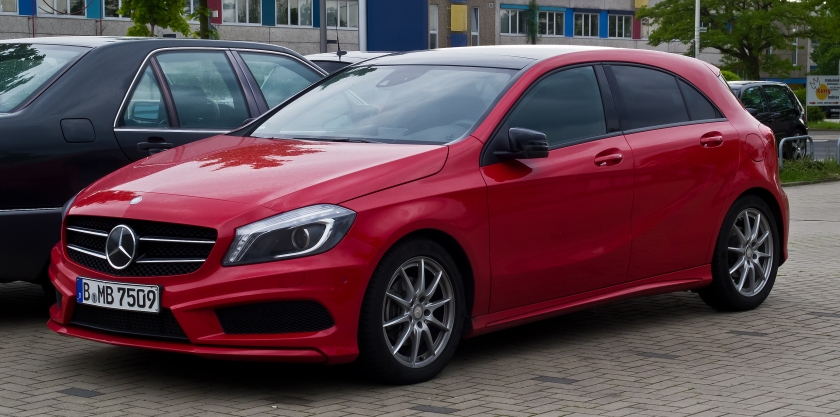 Mercedes-Benz A-Class (compact)
Mercedes-Benz A-Class (compact)
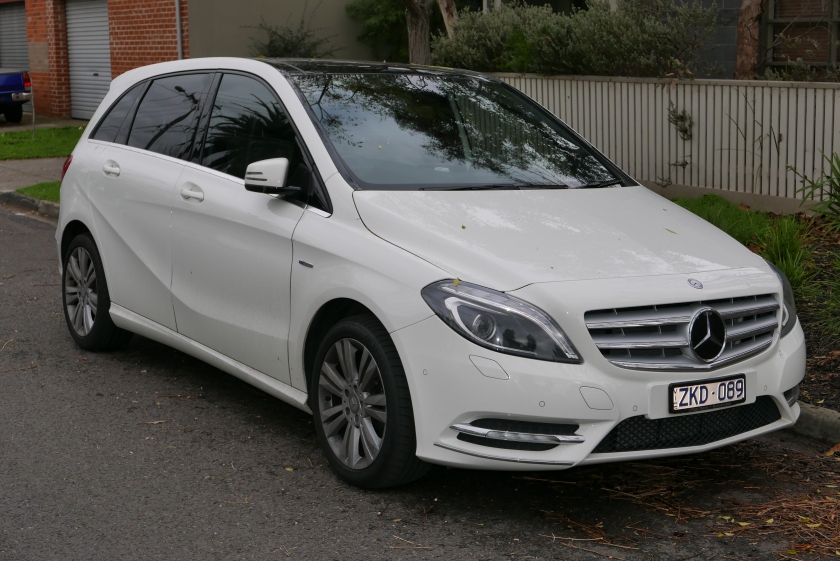 Mercedes B-Class (Tourer)
Mercedes B-Class (Tourer)
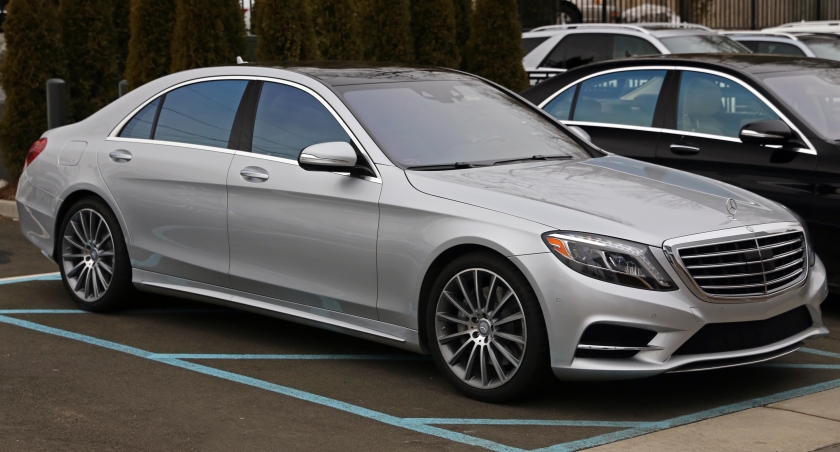 Mercedes-Benz S-Class (luxury sedan)
Mercedes-Benz S-Class (luxury sedan)
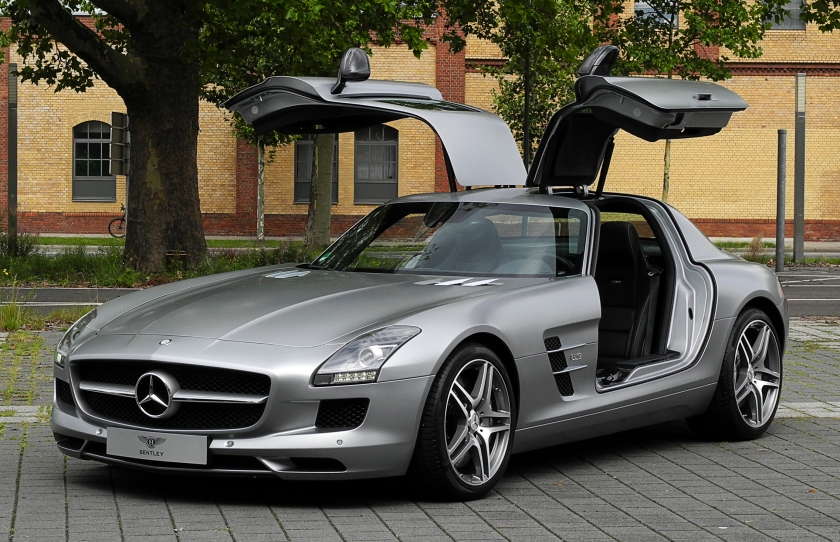 Mercedes-Benz SLS AMG (supercar)
Mercedes-Benz SLS AMG (supercar)
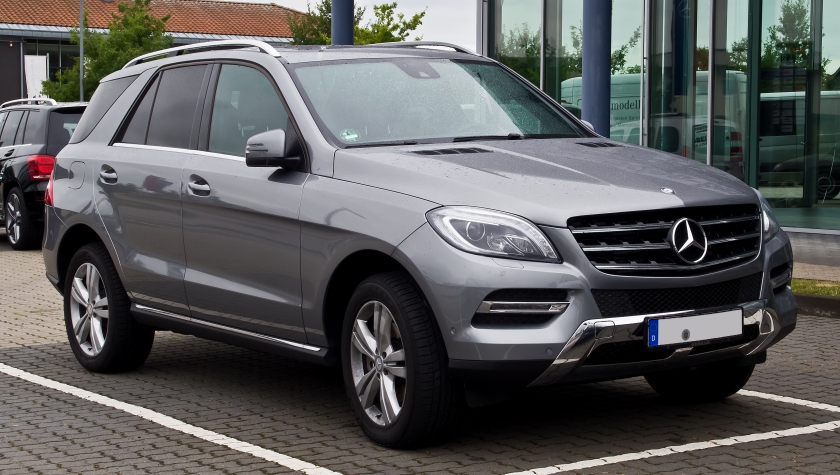 Mercedes-Benz M-Class (luxury SUV)
Mercedes-Benz M-Class (luxury SUV)
Current model range
Mercedes-Benz offers a full range of passenger, light commercial and heavy commercial equipment. Vehicles are manufactured in multiple countries worldwide. The Smartmarque of city cars are also produced by Daimler AG.
- A-Class – Hatchback
- B-Class – Multi Purpose Vehicle (MPV)
- C-Class – Saloon, Estate, Coupé and Cabriolet
- CLA-Class – 4 Door Coupé and Estate
- CLS-Class – 4 Door Coupé and Estate
- E-Class – Saloon, Estate, Coupé and Cabriolet
- G-Class – Sports Utility Vehicle (SUV)
- GLA-Class – Compact Sports Utility Vehicle (SUV)/ Crossover
- GLC-Class – Sports Utility Vehicle (SUV)
- GLE-Class – Sports Utility Vehicle (SUV)
- GLS-Class – Large Sports Utility Vehicle (SUV)
- S-Class – Luxury Saloon, Coupé & Cabriolet
- SL-Class – Grand Tourer
- SLC-Class – Roadster
- V-Class – Multi Purpose Vehicle (MPV)/ Van
- AMG GT – Sports car/ Supercar
Vans
Mercedes-Benz produces a range of vans; Citan (a rebadged version of the Renault Kangoo), Vito and Sprinter.
Trucks
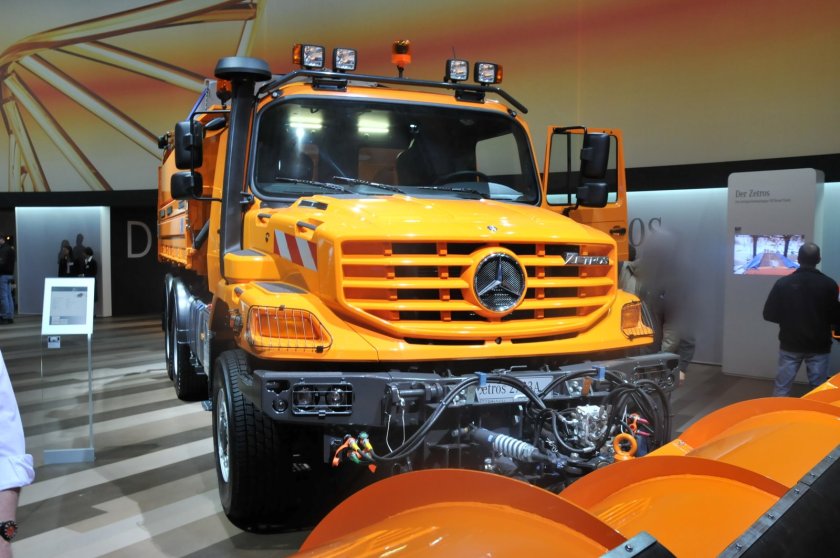 Mercedes-Benz Zetros used for snowplowing
Mercedes-Benz Zetros used for snowplowing
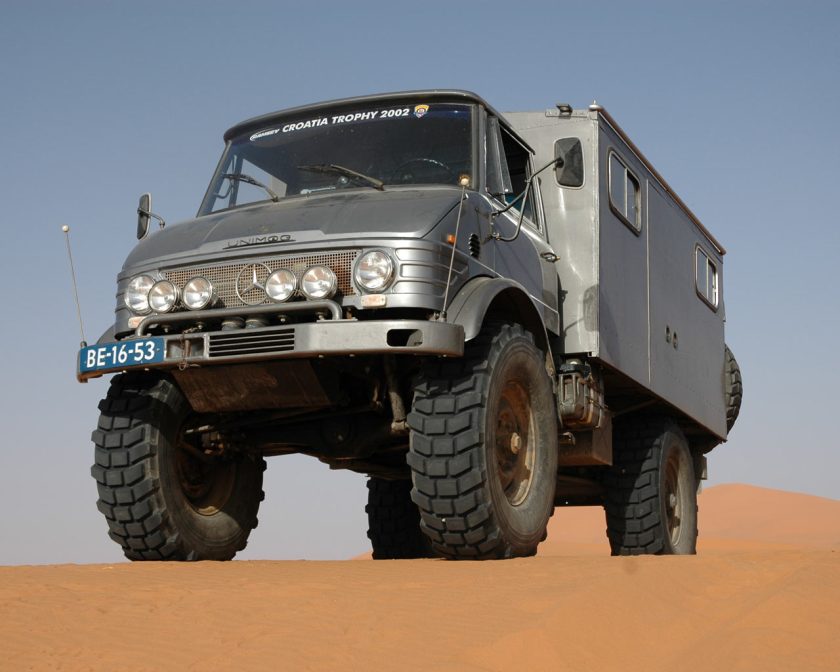 Unimog, a famous allround vehicle by Mercedes-Benz
Unimog, a famous allround vehicle by Mercedes-Benz
Mercedes-Benz Trucks is now part of the Daimler Trucks division, and includes companies that were part of the DaimlerChrysler merger. Gottlieb Daimler sold the world’s first truck in 1886. The first factory to be built outside Germany after WWII was in Argentina. It originally built trucks, many of which were modified independently to buses, popularly named Colectivo. Today, it builds buses, trucks and the Sprinter van.
Buses
buses-and-coaches-mercedes-benz-mannheim-germany-since-1895
Mercedes-Benz produces a wide range of buses and coaches, mainly for Europe and Asia. The first model was produced by Karl Benz in 1895.
Significant models produced
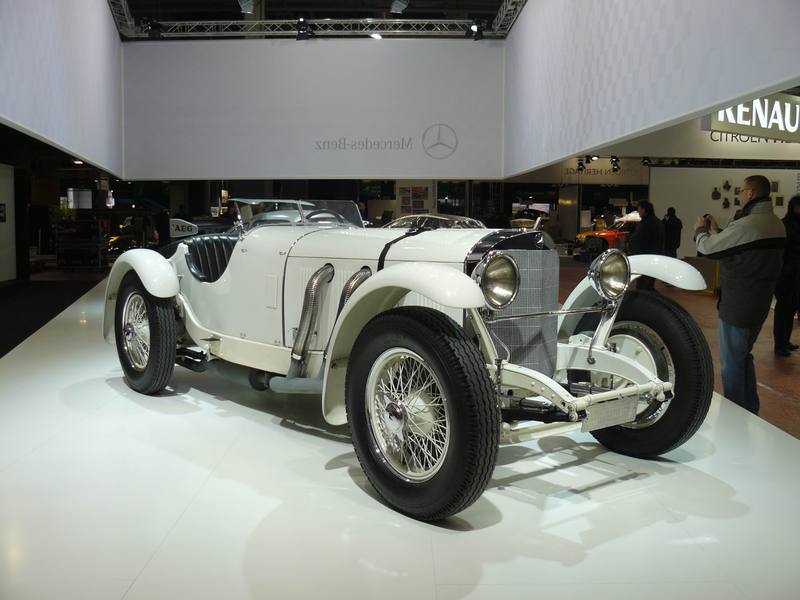 1928: SSK racing car
1928: SSK racing car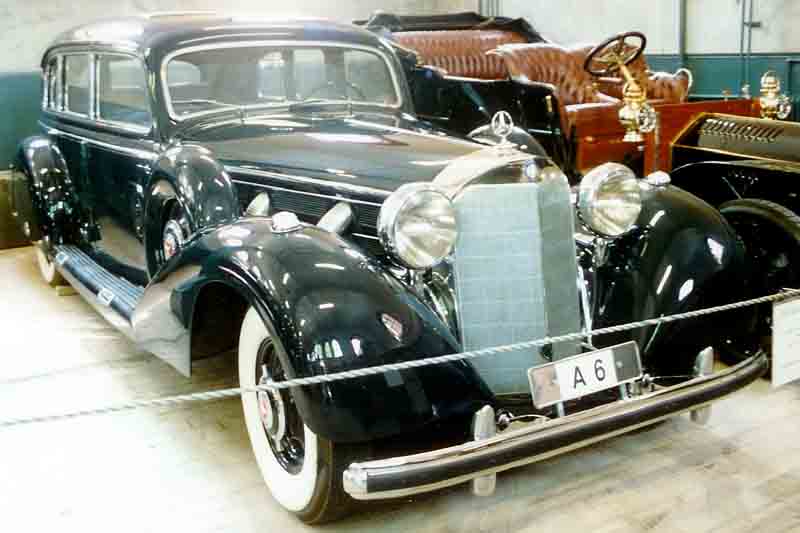 1930: 770 “Großer Mercedes” state and ceremonial car
1930: 770 “Großer Mercedes” state and ceremonial car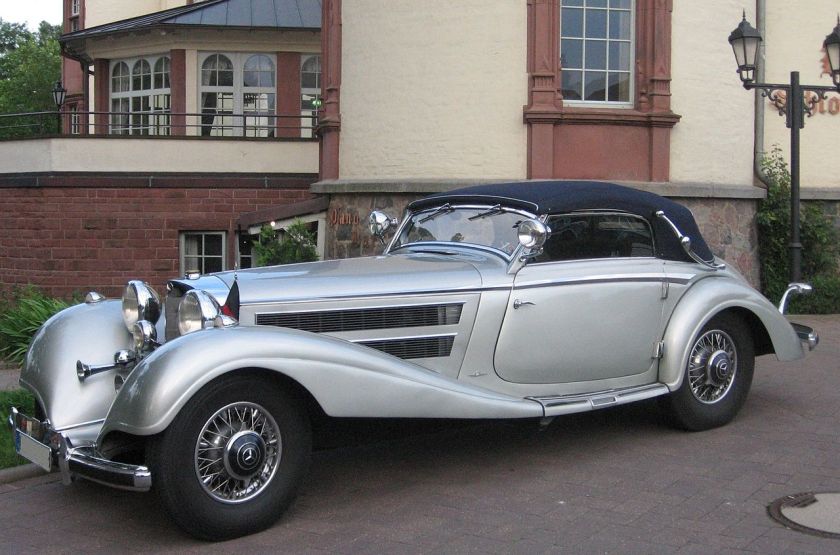 Mercedes Benz 500K 1934: 500 K
Mercedes Benz 500K 1934: 500 K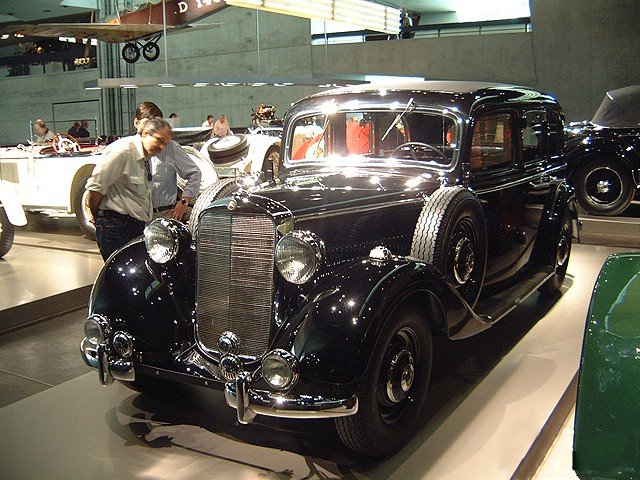 1936: 260 D World’s first diesel production car
1936: 260 D World’s first diesel production car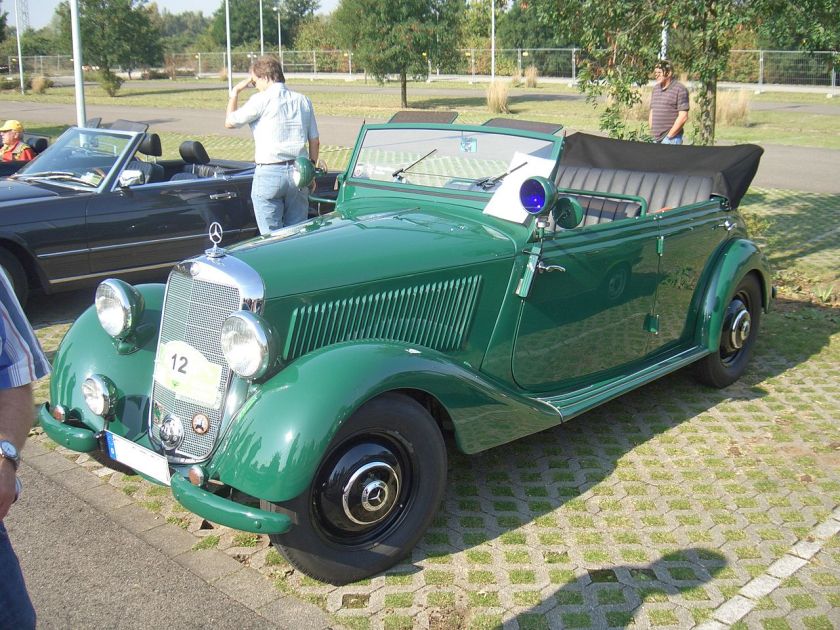 1936: 170
1936: 170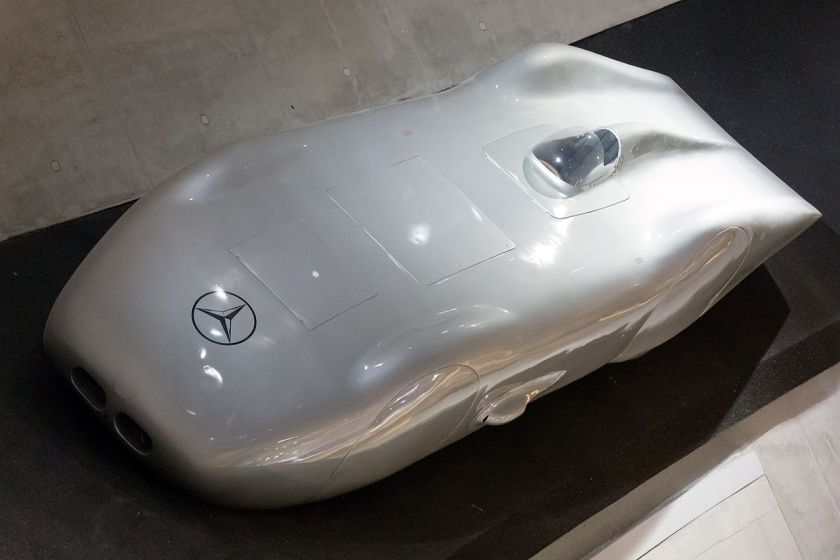 1938: W195 Speed Record-breaker
1938: W195 Speed Record-breaker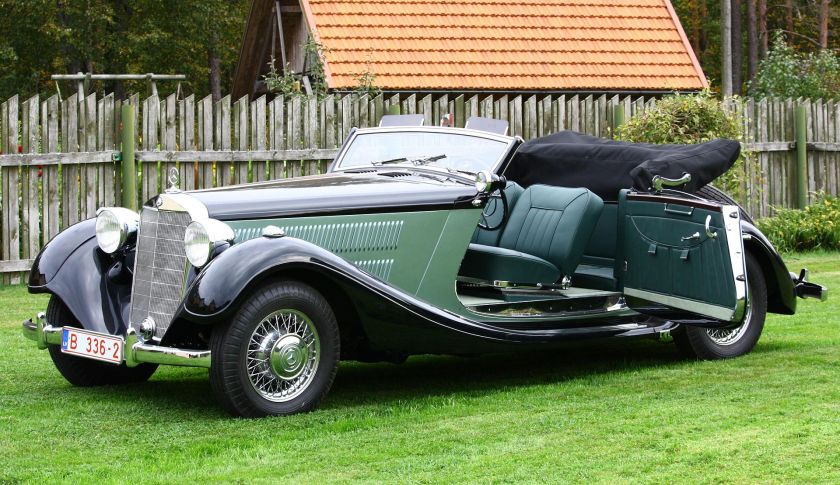 1939: 320A A military vehicle
1939: 320A A military vehicle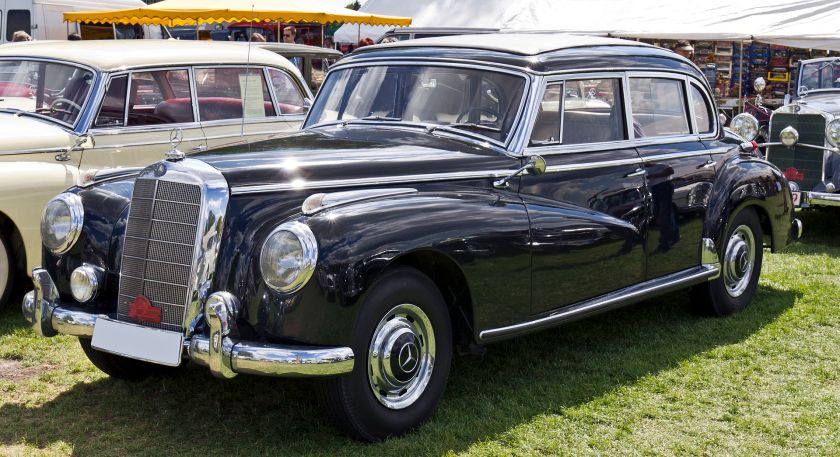 1951: 300, known as the “Adenauer Mercedes”
1951: 300, known as the “Adenauer Mercedes”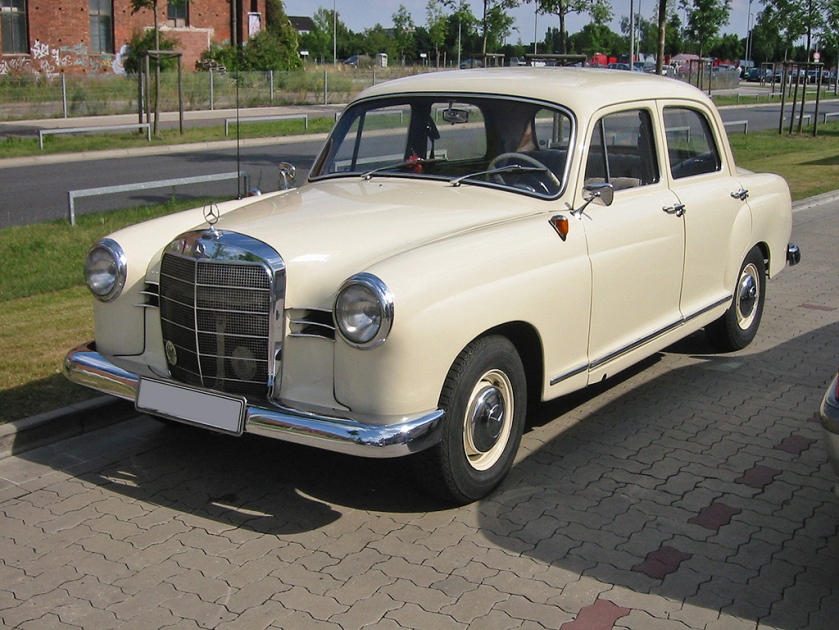 1953: “Ponton” models
1953: “Ponton” models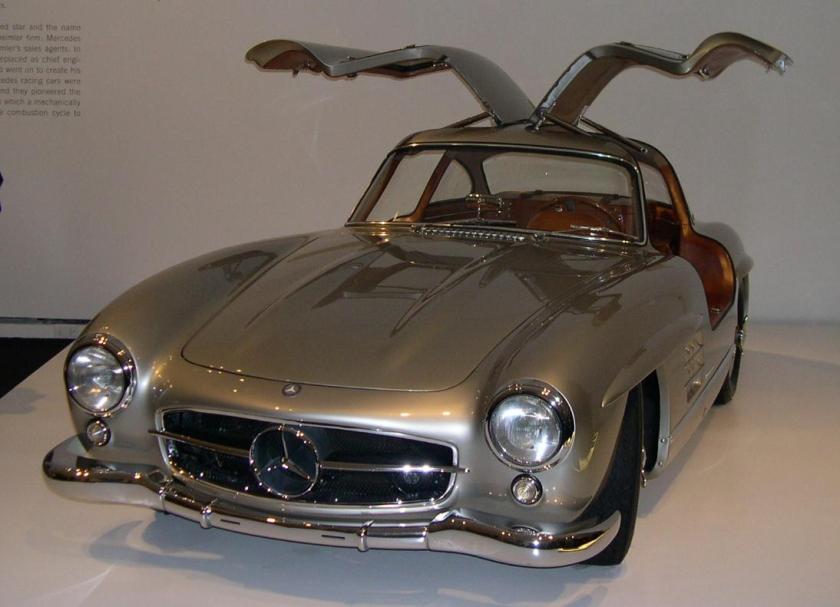 1954: 300SL “Gullwing”
1954: 300SL “Gullwing”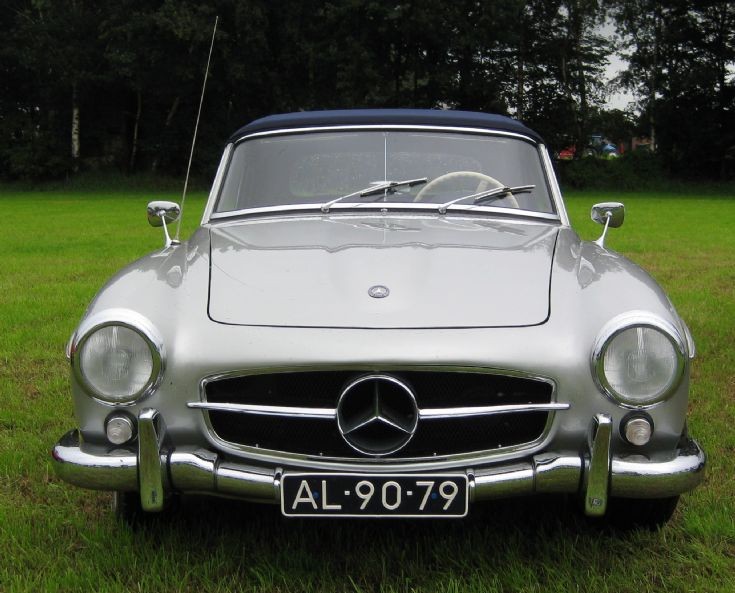 1956: 190SL
1956: 190SL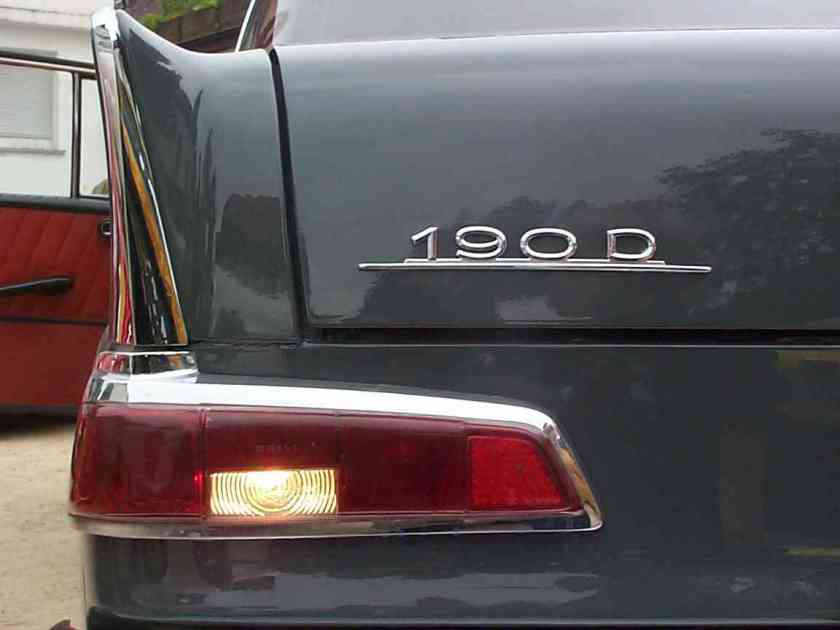 1959: “Fintail” models
1959: “Fintail” models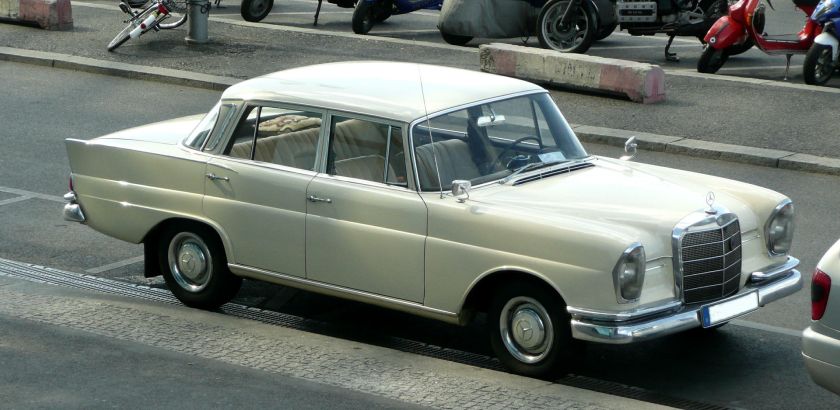 1960: 220SE Cabriolet
1960: 220SE Cabriolet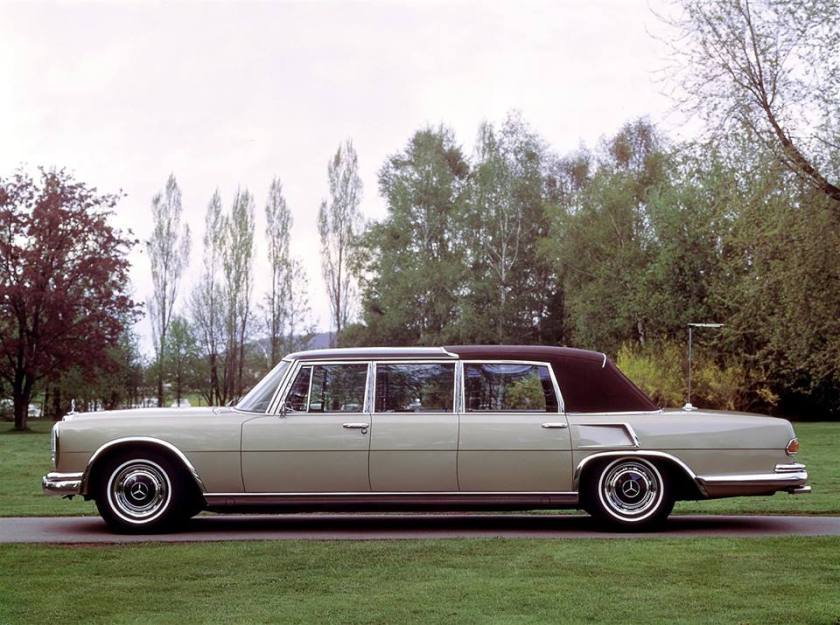 1963: 600 “Grand Mercedes”
1963: 600 “Grand Mercedes”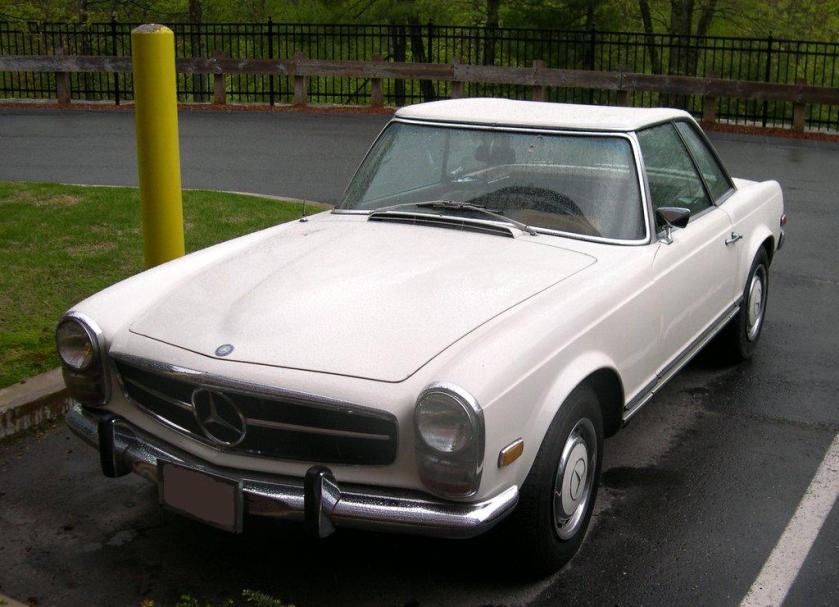 1963: 230SL “Pagoda”
1963: 230SL “Pagoda”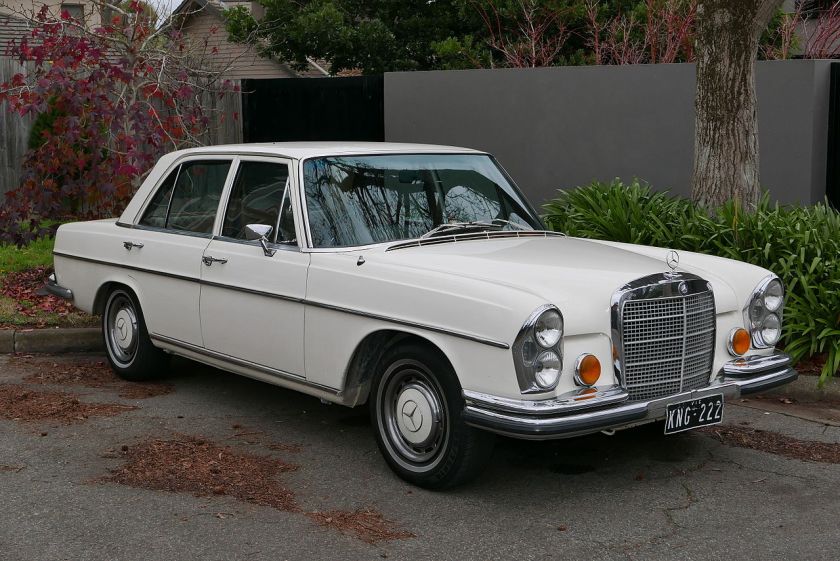 1965: S-Class
1965: S-Class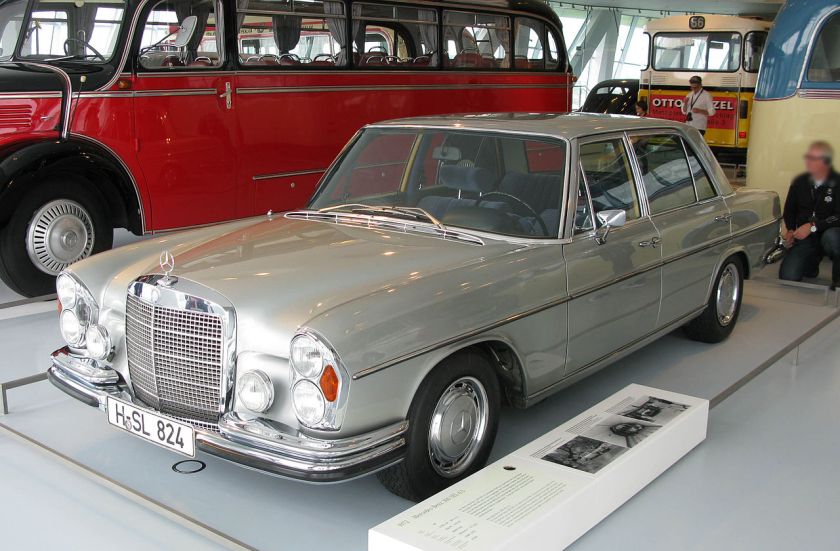 1966: 6.3
1966: 6.3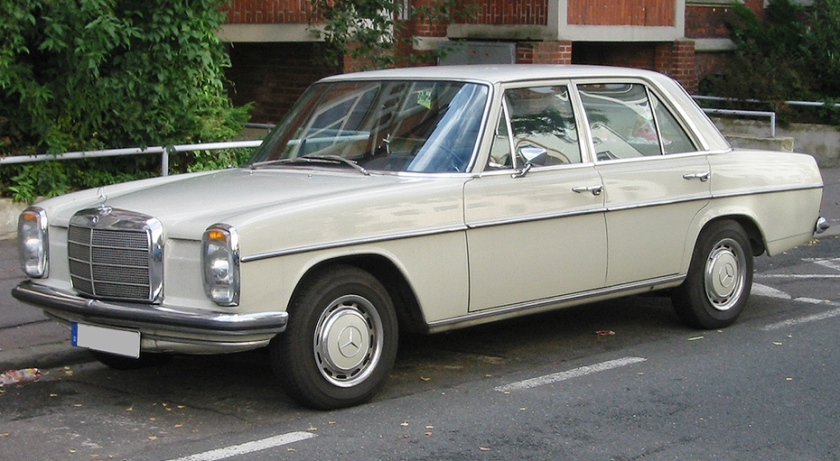 1968: W114 “new generation” compact cars
1968: W114 “new generation” compact cars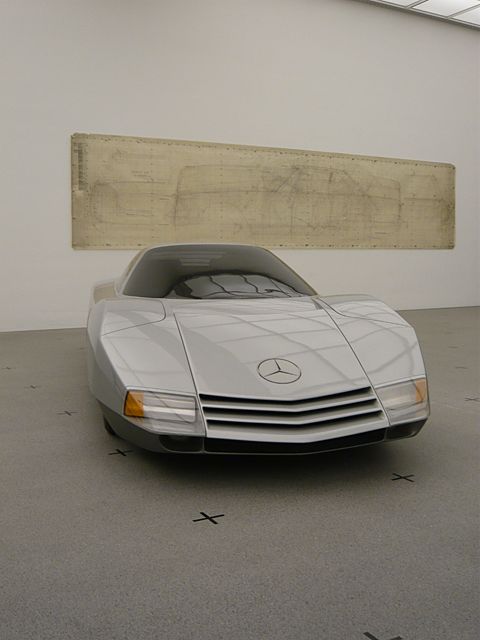 1969: C111 experimental vehicle
1969: C111 experimental vehicle 1972: W107 350SL
1972: W107 350SL
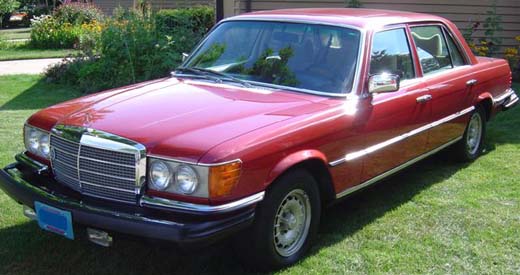 1974: 450SEL 6.9
1974: 450SEL 6.9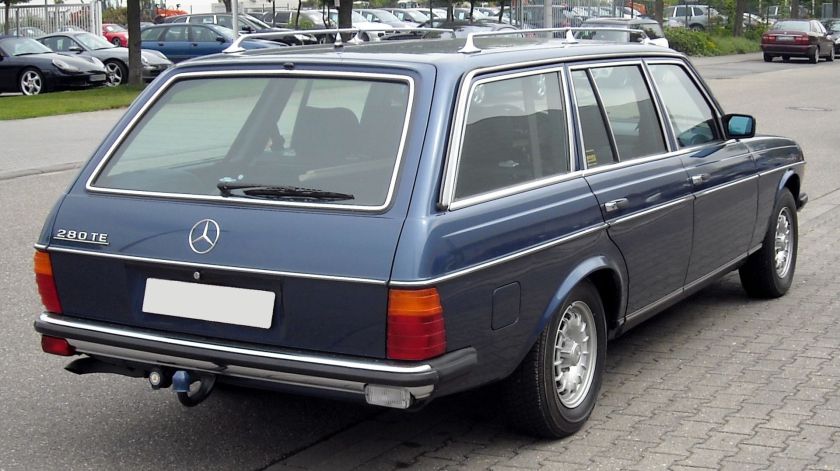 1977: W123– Mercedes’ first station wagon
1977: W123– Mercedes’ first station wagon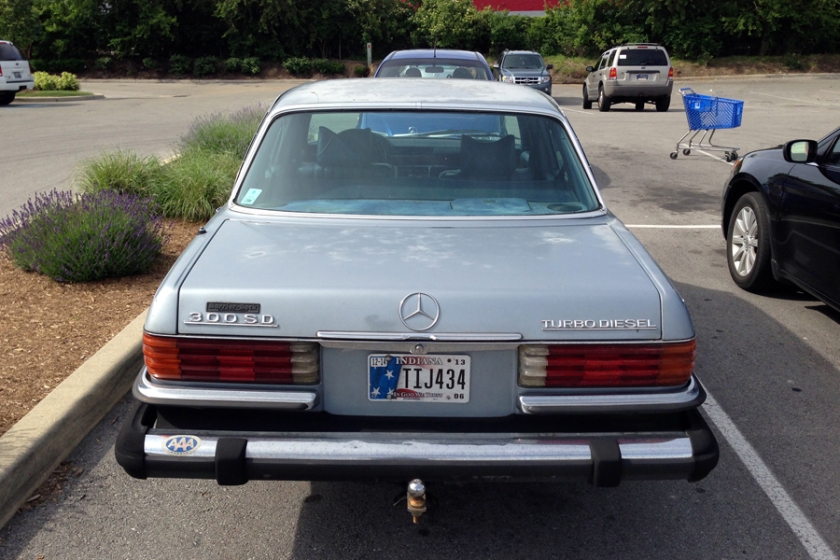 1978: 300SD – Mercedes’ first turbo diesel
1978: 300SD – Mercedes’ first turbo diesel 1979: 500SEL and G-Class
1979: 500SEL and G-Class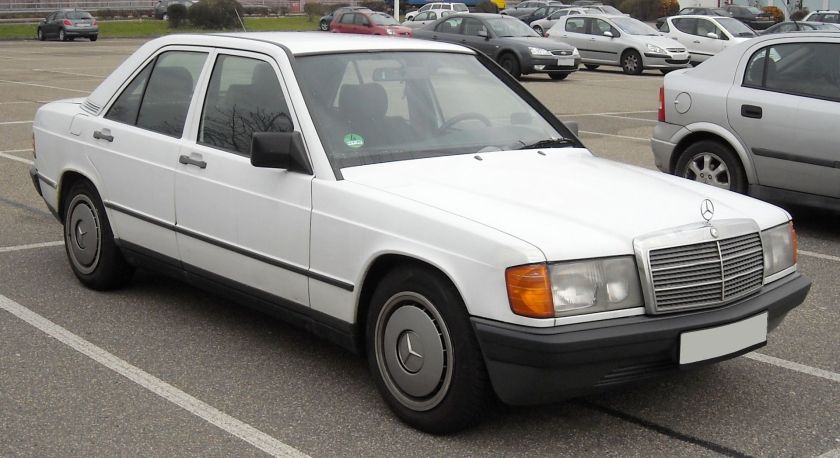 1983: 190E 2.3–16
1983: 190E 2.3–16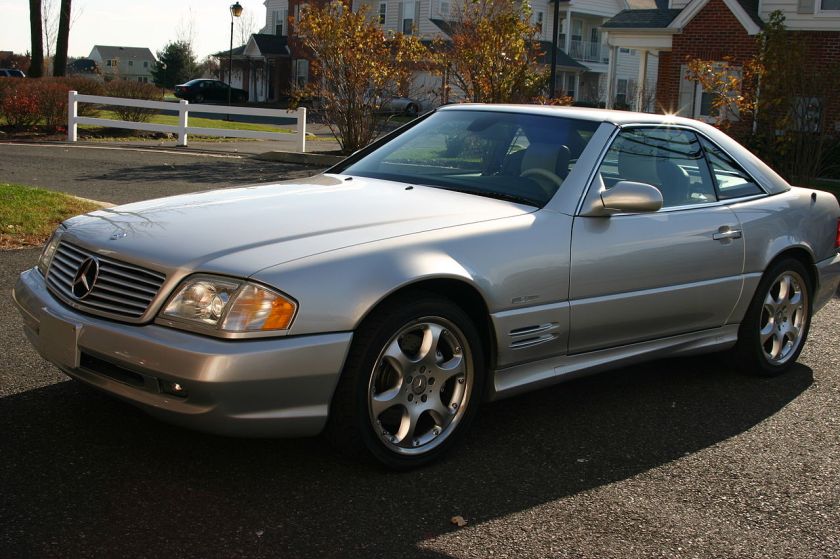 1989: 300SL, 500SL
1989: 300SL, 500SL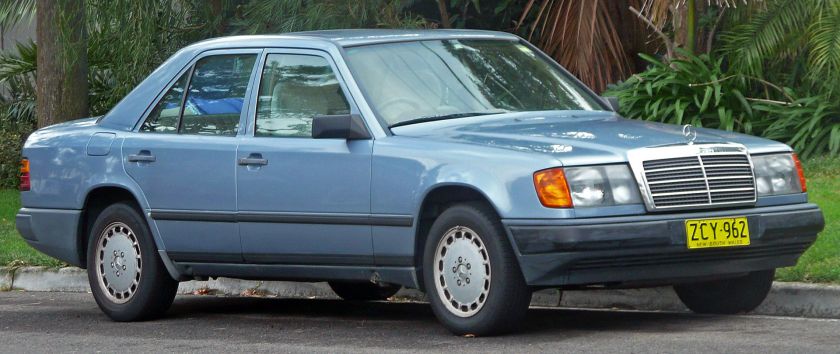 1990: 500E
1990: 500E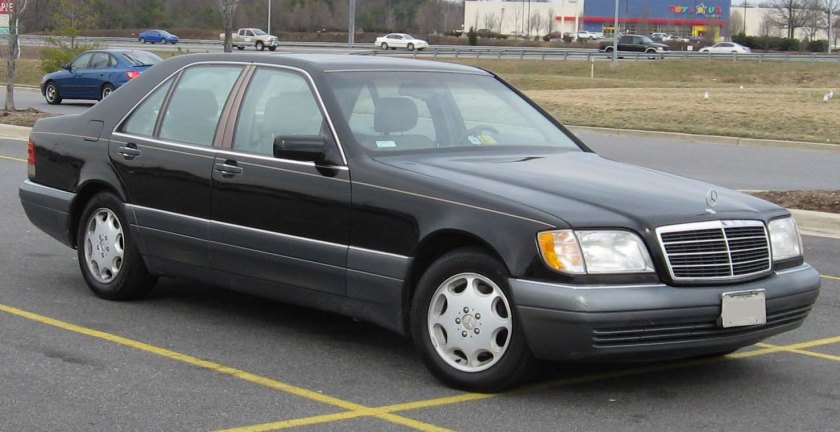 1991: 600SEL
1991: 600SEL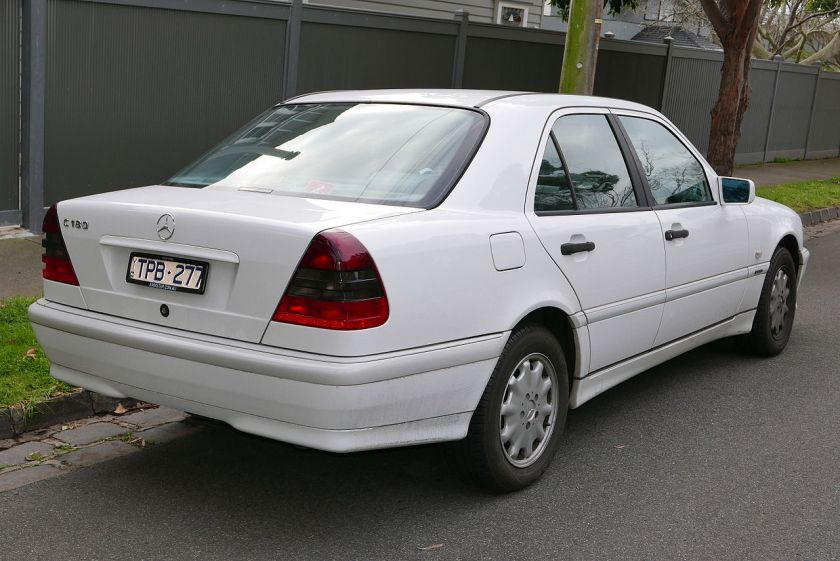 1993: C-Class
1993: C-Class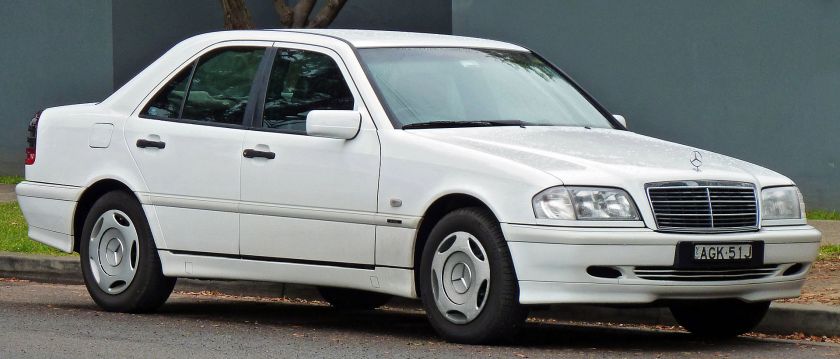 1995: C43 AMG
1995: C43 AMG 1995: SL73 AMG, 7.3 V12
1995: SL73 AMG, 7.3 V12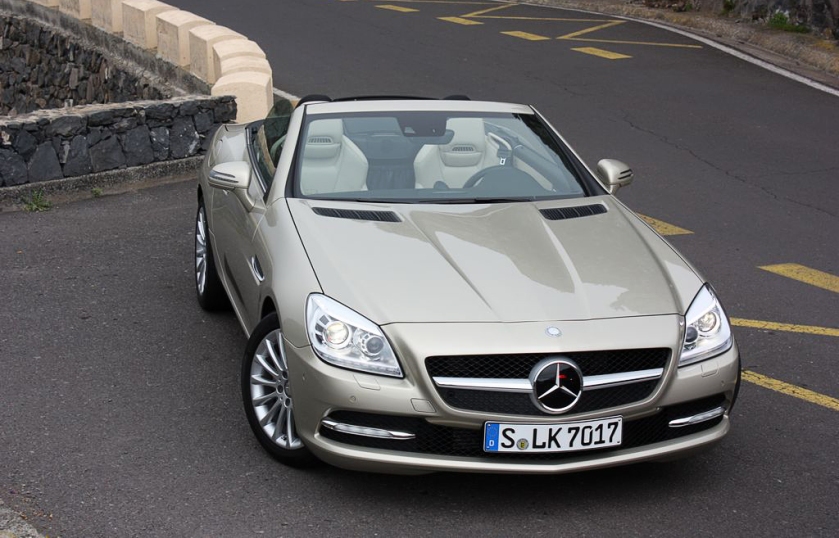 1996: SLK
1996: SLK 1997: A-Class and M-Class
1997: A-Class and M-Class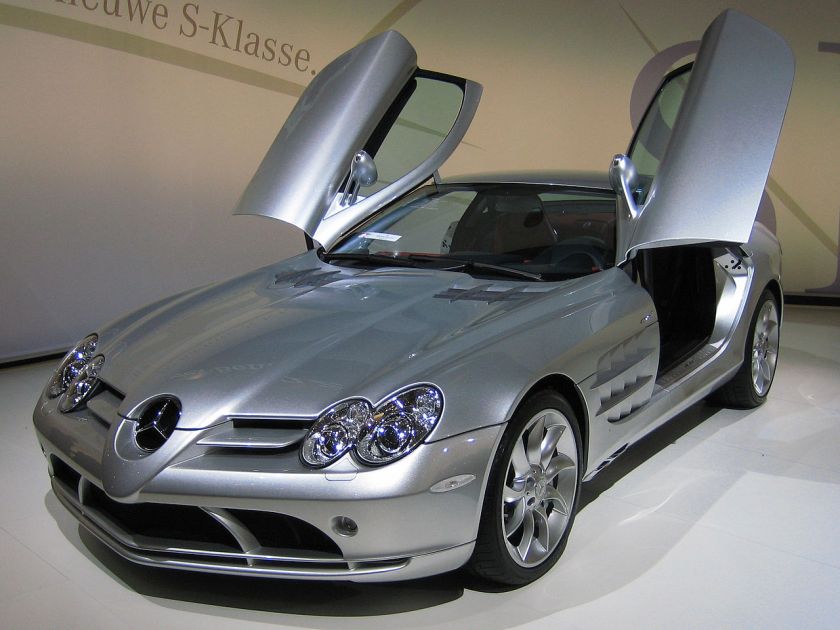 2004: SLR McLaren and CLS-Class
2004: SLR McLaren and CLS-Class
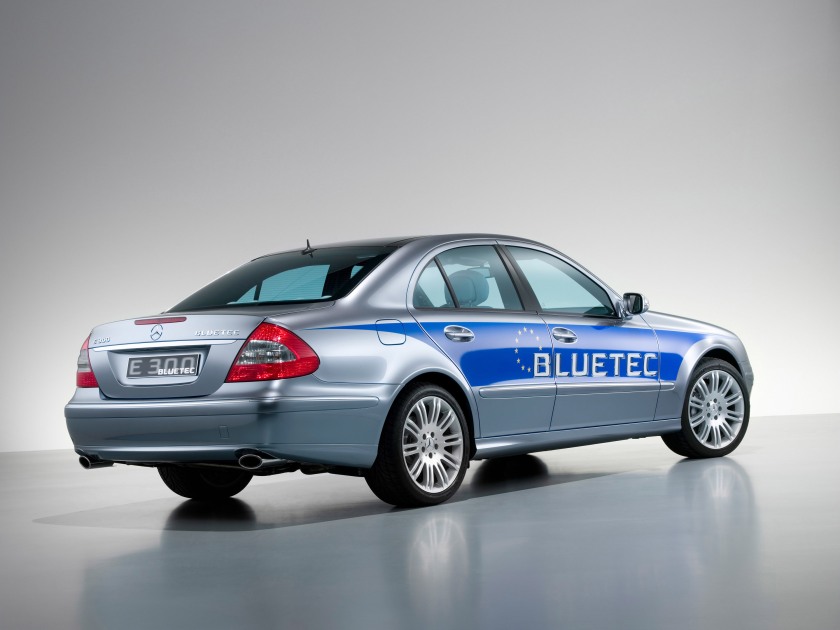
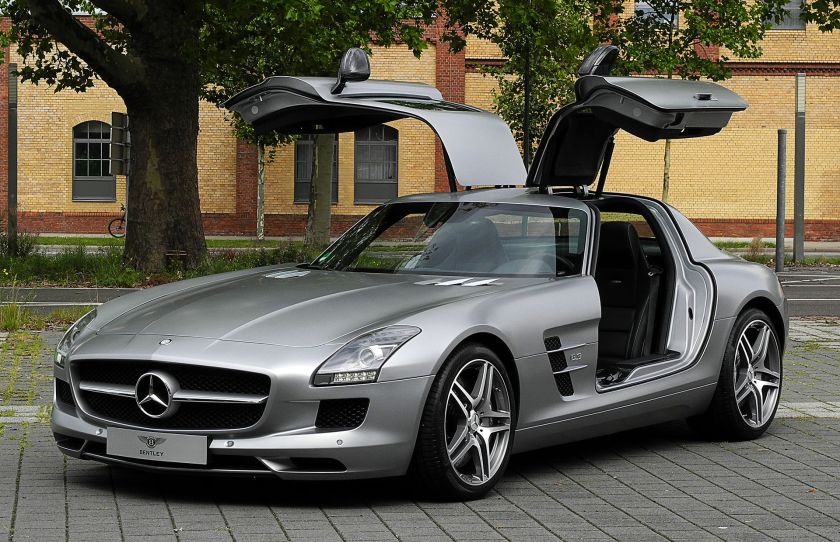 2010: SLS AMG
2010: SLS AMG
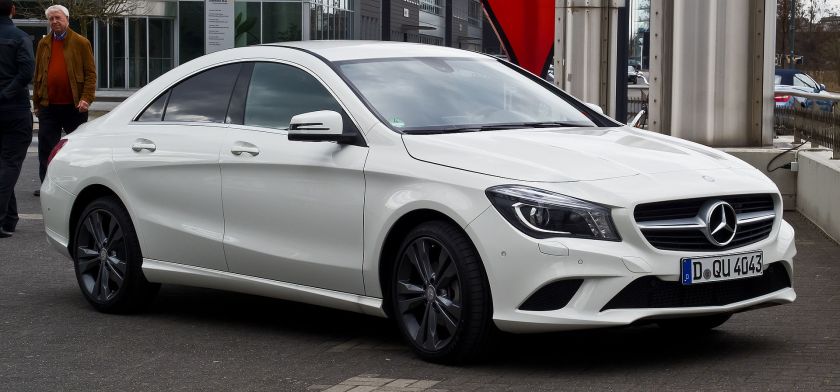 2013: CLA-Class
2013: CLA-Class
The Mercedes-Benz 600 or 600S Pullman Guard limousines offer the option of armour-plating and have been used by diplomats worldwide.
Car nomenclature
Until 1994, Mercedes-Benz utilized an alphanumeric system for categorizing their vehicles, consisting of a number sequence approximately equal to the engine’s displacement in liters multiplied by 100, followed by an arrangement of alphabetical suffixes indicating body style and engine type.
- “C” indicates a coupe or cabriolet body style (for example, the CL and CLK models, though the C-Class is an exception, since it is also available as a sedan or station wagon).
- “D” indicates the vehicle is equipped with a diesel engine.
- “E” (for “Einspritzung”) indicates the vehicle’s engine is equipped with petrol fuel injection. In most cases (the 600 limousine and Mercedes E-Class being the exceptions), if neither “E” or “D” is present, the vehicle has a petrol engine with a carburettor.
- “G” was originally used for the Geländewagen off-road vehicle, but is now applied to Mercedes SUVs in general (for example, the GLA and GLK).
- “K” was used in the 1930s, indicating a supercharger (“Kompressor”) equipped engine. Two exceptions : the SSK and CLK, where K indicates “Kurz” (short-wheelbase).
- “L” indicates “Leicht” (lightweight) for sporting models, and “Lang” (long-wheelbase) for sedan models.
- “R” indicates “Rennen” (racing), used for racing cars (for example, the 300SLR).
- “S” Sonderklasse “Special class” for flagship models, including the S-Class, and the SL-Class, SLR McLaren and SLS sportscars.
- “T” indicates “Touring” and an estate (or station wagon) body style.
Some models in the 1950s also had lower-case letters (b, c, and d) to indicate specific trim levels. For other models, the numeric part of the designation does not match the engine displacement. This was done to show the model’s position in the model range independent of displacement or in the price matrix. For these vehicles, the actual displacement in liters is suffixed to the model designation. An exception was the 190-class with the numeric designation of “190” as to denote its entry level in the model along with the displacement label on the right side of the boot (190E 2.3 for 2.3-litre 4-cylinder petrol motor, 190D 2.5 for 2.5-litre 5-cylinder diesel motor, and so forth). Some older models (such as the SS and SSK) did not have a number as part of the designation at all.
For the 1994 model year, Mercedes-Benz revised the naming system. Models were divided into “classes” denoted by an arrangement of up to three letters (see “Current model range” above), followed by a three-digit (or two-digit for AMG models, with the number approximately equal to the displacement in litres multiplied by 10) number related to the engine displacement as before. Variants of the same model such as an estate version or a vehicle with a diesel engine are no longer given a separate letter. The SLR, SLS and GT supercars do not carry a numerical designation.
Today, many numerical designations no longer reflect the engine’s actual displacement but more of the relative performance and marketing position. Despite its engine displacement in two litres, the powerplant in the A45 AMG produces 355 brake horsepower so the designation is higher as to indicate the greater performance. Another example is the E250 CGI having greater performance than the E200 CGI due to the different engine tuning even though both have 1.8-litre engines. From the marketing perspective, E200 seems more “upscale” than E180. Recent AMG models use the “63” designation (in honor of the 1960s 6.3-litre M100 engine) despite being equipped with either a 6.2-litre (M156) or 5.5-litre (M157) engine.
Some models carry further designations indicating special features:
- “4MATIC” indicates the vehicle is equipped with all-wheel-drive.
- “BlueTEC” indicates a diesel engine with selective catalytic reduction exhaust aftertreatment.
- “BlueEFFICIENCY” indicates special fuel economy features (direct injection, start-stop system, aerodynamic modifications, etc.)
- “CGI” (Charged Gasoline Injection) indicates direct gasoline injection.
- “CDI” (Common-rail Direct Injection) indicates a common-rail diesel engine.
- “Hybrid” indicates a petrol- or diesel-electric hybrid.
- “NGT” indicates a natural gas-fueled engine.
- “Kompressor” indicates a supercharged engine.
- “Turbo” indicates a turbocharged engine, only used on A-, B-,E- and GLK-Class models.
- “AMG Line” indicates the interior or engine, depending which car, has been fitted with the luxuries of their AMG sports cars
Model designation badges can be deleted at the request of the customer.
2015 and beyond
Rationalisation of the model nomenclature was announced in November 2014 for future models. The changes consolidate many confusing nomenclature and their placements in the model range such as CL-Class is now called the S-Class Coupé. The naming structure is divided into four categories: core, off-road vehicle/SUV, 4-door coupé, and roadster. AMG GT, and V-Class are unaffected by the change.Note: The CLA is positioned between the A- and B-Class models, while the CLS sits between the E- and S-Classes.
In addition to the revised nomenclature, Mercedes-Benz has new nomenclature for the drive systems.The revised A45 AMG for 2016 model year on has shifted the model designation to the right side while AMG is on the left side. This trend commenced with Mercedes-Maybach with MAYBACH on the left and S500/S600 on the right.
Environmental record
Mercedes-Benz has developed multi concept cars with alternative propulsion, such as hybrid-electric, fully electric, and fuel-cell powertrains. At the 2007 Frankfurt motor show, Mercedes-Benz showed seven hybrid models, including the F700 concept car, powered by a hybrid-electric drivetrain featuring the DiesOtto engine. In 2009, Mercedes-Benz displayed three BlueZERO concepts at the North American International Auto Show. Each car features a different powertrain – battery-electric, fuel-cell electric, and gasoline-electric hybrid. In the same year, Mercedes also showed the Vision S500 PHEV concept with a 19 miles (31 km) all-electric range and CO2 emissions of 74 grams/km in the New European Driving Cycle.
Since 2002, Mercedes-Benz has developed the F-Cell fuel cell vehicle. The current version, based on the B-Class, has a 250-mile range and is available for lease, with volume production scheduled to begin in 2014. Mercedes has also announced the SLS AMG E-Cell, a fully electric version of the SLS sports car, with deliveries expected in 2013. The Mercedes-Benz S400 BlueHYBRID was launched in 2009, and is the first production automotive hybrid in the world to use a lithium-ion battery. In mid-2010, production commenced on the Vito E-Cell all-electric van. Mercedes expects 100 vehicles to be produced by the end of 2010 and a further 2000 by the end of 2011.
In 2008, Mercedes-Benz announced that it would have a demonstration fleet of small electric cars in two to three years. Mercedes-Benz and Smart are preparing for the widespread uptake of electric vehicles (EVs) in the UK by beginning the installation of recharging points across their dealer networks. So far 20 Elektrobay recharging units, produced in the UK by Brighton-based Elektromotive, have been installed at seven locations as part of a pilot project, and further expansion of the initiative is planned later in 2010.
In the United States, Mercedes-Benz was assessed a record US$30.66 million fine for their decision to not meet the federal corporate average fuel economy standard in 2009. Certain Mercedes-Benz cars, including the S550 and all AMG models sold in the United States, also face an additional gas guzzler tax. However, newer AMG models fitted with the M157 engine will not be subject to the gas-guzzler tax, due to improved fuel economy, and newer models powered by the M276 and M278 engines will have better fuel economy. In 2008, Mercedes also had the worst CO2 average of all major European manufacturers, ranking 14th out of 14 manufacturers. Mercedes was also the worst manufacturer in 2007 and 2006 in terms of average CO2 levels, with 181 g and 188 g of CO2 emitted per km, respectively.
Bicycles
Mercedes-Benz Accessories GmbH introduced three new bicycles in 2005, and the range has developed to include the patent pending Foldingbike in 2007. Other models include the Mercedes-Benz Carbon Bike, Trekking Bike, Fitness Bike and the Trailblazer Bike.
Motorsport
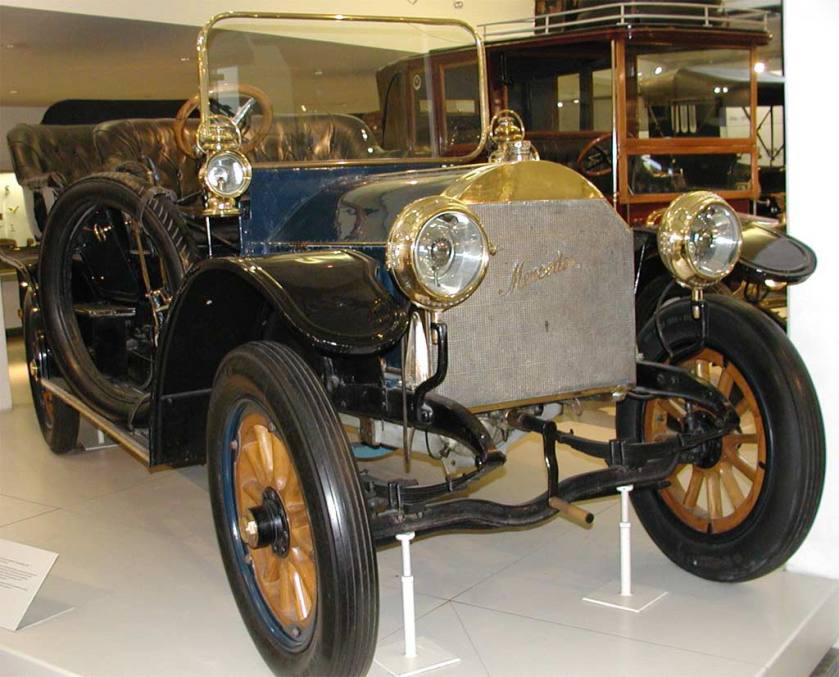 A DMG Mercedes Simplex 1906 in the Deutsches Museum
A DMG Mercedes Simplex 1906 in the Deutsches Museum
The two companies which were merged to form the Mercedes-Benz brand in 1926 had both already enjoyed success in the new sport of motor racing throughout their separate histories. A single Benz competed in the world’s first motor race, the 1894 Paris–Rouen, where Émile Roger finished 14th in 10 hours 1 minute. Throughout its long history, the company has been involved in a range of motorsport activities, including sports car racing and rallying. On several occasions Mercedes-Benz has withdrawn completely from motorsport for a significant period, notably in the late 1930s, and after the 1955 Le Mans disaster, where a Mercedes-Benz 300 SLR rammed another car (An Austin-Healey), took off into the stands, and killed more than 80 spectators. Stirling Moss and co-driver Denis Jenkinson made history by winning the 1955 Mille Miglia road race in Italy during a record-breaking drive with an average speed of almost 98 mph in a Mercedes-Benz 300 SLR.
Although there was some activity in the intervening years, it was not until 1987 that Mercedes-Benz returned to front line competition, returning to Le Mans, Deutsche Tourenwagen Meisterschaft (DTM), and Formula One with Sauber. The 1990s saw Mercedes-Benz purchase British engine builder Ilmor (now Mercedes-Benz High Performance Engines), and campaign IndyCars under the USAC/CART rules, eventually winning the 1994 Indianapolis 500 and 1994 CART IndyCar World Series Championship with Al Unser, Jr. at the wheel. The 1990s also saw the return of Mercedes-Benz to GT racing, and the Mercedes-Benz CLK GTR, both of which took the company to new heights by dominating the FIA’s GT1 class.
Mercedes-Benz is currently active in three forms of motorsport, Formula Three, DTM and Formula One.
Formula One
Mercedes-Benz took part in the world championship in 1954 and 1955, but despite being successful with two championship titles for Juan-Manuel Fangio, the company left the sport after just two seasons. Fangio is considered by many to be the best F1 driver in history.
Mercedes-Benz returned as an engine supplier in the 1990s and part-owned Team McLaren for some years, to which it has supplied engines engineered by Ilmor since 1995. This partnership brought success, including drivers championships for Mika Häkkinen in 1998 and 1999, and for Lewis Hamilton in 2008, as well as a constructors championship in 1998. The collaboration with McLaren had been extended into the production of roadgoing cars such as the Mercedes-Benz SLR McLaren.
In 2007, McLaren-Mercedes was fined a record US$100 million for stealing confidential Ferrari technical data.
In 2009, Ross Brawn‘s newly conceived Formula One team, Brawn GP used Mercedes engines to help win the constructor’s championship, and Jenson Button to become champion in the F1 drivers’ championship. At the end of the season, Mercedes-Benz sold its 40% stake in McLaren to the McLaren Group and bought 70% of the Brawn GP team jointly with an Abu Dhabi-based investment consortium. Brawn GP was renamed Mercedes GP for the 2010 season and is, from this season on, a works team for Mercedes-Benz. As of 2015, the company currently provides engines to the Williams F1 Team, Sahara Force India F1 Team and the Lotus F1 Team.
In 2014, Mercedes clinched its first F1 Constructor’s title with drivers Lewis Hamilton and Nico Rosberg with 3 races to go, after dominating much of the season. Mercedes repeated its dominance in 2015 in similar fashion, losing only 3 races out of 19 once again.
Logo history
Noted employees
- Paul Bracq – major designer of automobiles in the 20th century
- Béla Barényi – car safety pioneer (rigid passenger safety shell), joined Daimler-Benz in 1937
- Wilhelm Maybach – automotive pioneer, first met Gottlieb Daimler in 1865
- Ferdinand Porsche – founder of Porsche, joined Mercedes in 1923 and developed the Kompressor
- Bruno Sacco – joined Daimler-Benz as a designer in 1958. Head of Design in 1975, retired in 1999
- Rudolf Uhlenhaut – joined Daimler-Benz in 1931, his designs included the Silver Arrows, the 300 SL and 300SLR
- Adolf Eichmann – former Nazi criminal. Worked in Argentina’s factory after WWII[75]
- Rudolf Caracciola – one of the greatest GP drivers in history drove MB Silver Arrows in competition.
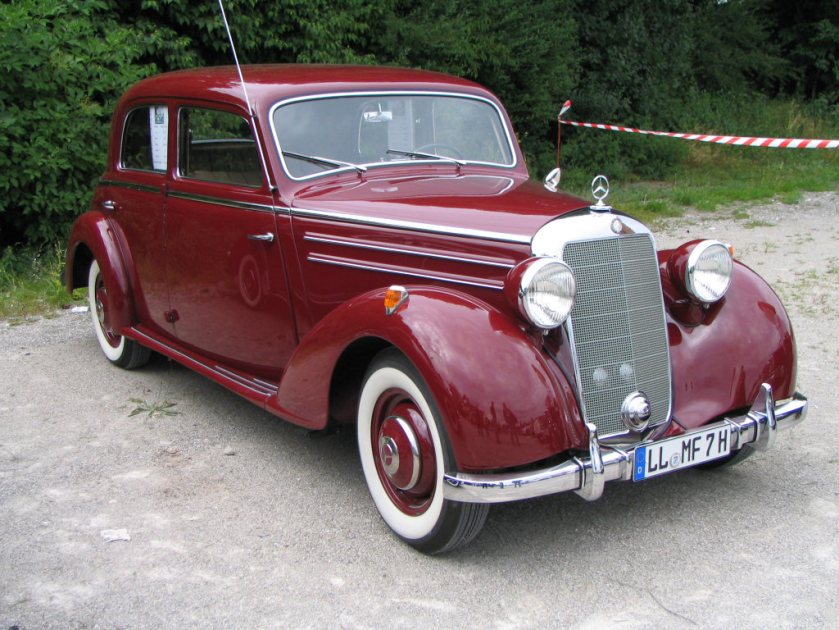 Josef Ganz – Technical consultant and “Godfather” of the *Mercedes-Benz W136, with the revolutionary Independent suspension, Swing axle layout.
Josef Ganz – Technical consultant and “Godfather” of the *Mercedes-Benz W136, with the revolutionary Independent suspension, Swing axle layout.
Innovations
Numerous technological innovations have been introduced on Mercedes-Benz automobiles throughout the many years of their production, including:
- The internal combustion engine automobile was developed independently by Benz and Daimler & Maybach in 1886
- Daimler invented the honeycomb radiator of the type still used on all water-cooled vehicles today
- Daimler invented the float carburetor which was used until replaced by fuel injection
- The “drop chassis” – the car originally designated the “Mercedes” by Daimler was also the first car with a modern configuration, having the carriage lowered and set between the front and rear wheels, with a front engine and powered rear wheels. All earlier cars were “horseless carriages”, which had high centres of gravity and various engine/drive-train configurations
- The first passenger road car to have brakes on all four wheels (1924)
 1938 (1936-40) Mercedes Benz 260D W138 In 1936, the Mercedes-Benz 260 D was the first diesel powered passenger car.
1938 (1936-40) Mercedes Benz 260D W138 In 1936, the Mercedes-Benz 260 D was the first diesel powered passenger car.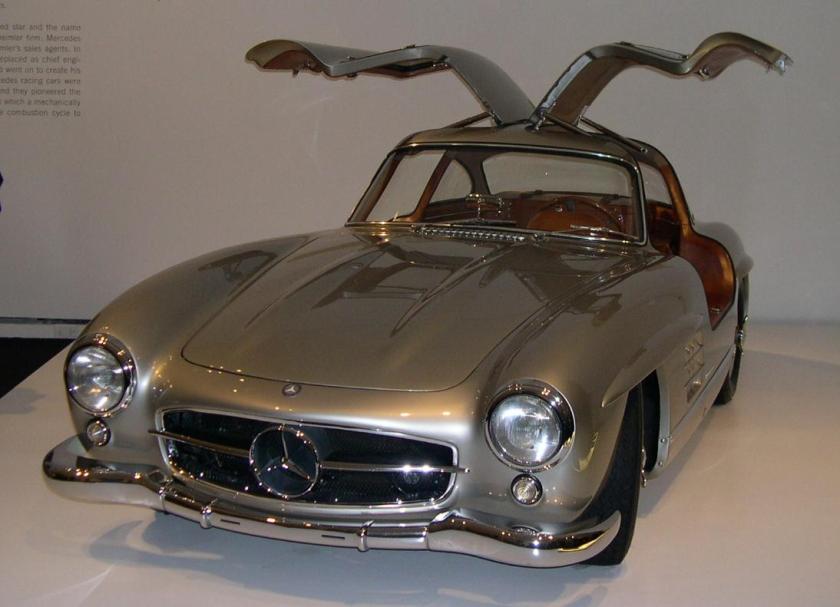 Mercedes-Benz were the first to offer direct fuel injection on the (1955)Mercedes-Benz 300SL Gullwing
Mercedes-Benz were the first to offer direct fuel injection on the (1955)Mercedes-Benz 300SL Gullwing - The “safety cage” or “safety cell” construction with front and rear crumple zones was first developed by Mercedes-Benz in 1951. This is considered by many as the most important innovation in automobile construction from a safety standpoint
- In 1959, Mercedes-Benz patented a device that prevents drive wheels from spinning by intervening at the engine, transmission, or brakes. In 1987, Mercedes-Benz applied its patent by introducing a traction control system that worked under both braking and acceleration
- an Anti-Lock Brake system (ABS) was first offered on the W116 450SEL 6.9. They became standard on the W126 S-Class starting production in 1979 and first sold in most markets in 1980.
- Airbags were first introduced in the European market, beginning with model year 1981 S-Class.
- Mercedes-Benz was the first to introduce pre-tensioners to seat belts on the 1981 S-Class. In the event of a crash, a pre-tensioner will tighten the belt instantaneously, removing any ‘slack’ in the belt, which prevents the occupant from jerking forward in a crash
- In September 2003, Mercedes-Benz introduced the world’s first seven-speed automatic transmission called ‘7G-Tronic‘
- Electronic Stability Programme (ESP), brake assist, and many other types of safety equipment were all developed, tested, and implemented into passenger cars – first – by Mercedes-Benz. Mercedes-Benz has not made a large fuss about its innovations, and has even licensed them for use by competitors – in the name of improving automobile and passenger safety. As a result, crumple zones and anti-lock brakes (ABS) are now standard on all modern vehicles.
- The (W211) E320 CDI which has a variable geometry turbocharger (VGT) 3.0-litre V6common rail diesel engine (producing 224 hp or 167 kW), set three world endurance records. It covered 100,000 miles (160,000 km) in a record time, with an average speed of 224.823 km/h (139.70 mph). Three identical cars did the endurance run (one set above record) and the other two cars set world records for time taken to cover 100,000 kilometres (62,137 mi) and 50,000 miles (80,000 km) respectively. After all three cars had completed the run, their combined distance was 300,000 miles (480,000 km) (all records were FIA approved).
- Mercedes-Benz pioneered a system called Pre-Safe to detect an imminent crash – and prepares the car’s safety systems to respond optimally. It also calculates the optimal braking force required to avoid an accident in emergency situations, and makes it immediately available for when the driver depresses the brake pedal. Occupants are also prepared by tightening the seat belt, closing the sunroof and windows, and moving the seats into the optimal position.
- At 181 horsepower per litre, the M133 engine installed in Mercedes-Benz A45 AMG is the most powerful series production four-cylinder turbocharged motor (as of June 2013) and has one of the highest power density for a passenger vehicle.
Half a century of vehicle safety innovation helped win Mercedes-Benz the Safety Award at the 2007 What Car? Awards.
Robot cars
In the 1980s, Mercedes built the world’s first robot car, together with the team of Professor Ernst Dickmanns at Bundeswehr University Munich. Partially encouraged by Dickmanns’ success, in 1987 the European Union’s EUREKA programme initiated the Prometheus Project on autonomous vehicles, funded to the tune of nearly €800 million. A culmination point was achieved in 1995, when Dickmanns’ re-engineered autonomous S-Class Mercedes took a long trip from Munich in Bavaria to Copenhagen in Denmark, and back. On highways, the robot achieved speeds exceeding 175 km/h (109 mph) (permissible in some areas of the German Autobahn). The car’s abilities has heavily influenced robot car research and funding decisions worldwide.
As for the future of Mercedes-Benz Robot Cars, in October 2015, the company introduced the Vision Tokyo, a five-seat electric van powered by a hybrid hydrogen fuel-cell systerm. The super-sleek van is touted as “a chill-out zone in the midst of megacity traffic mayhem.”
Tuners
Several companies have become car tuners (or modifiers) of Mercedes Benz, in order to increase performance and/or luxury to a given model.
AMG is Mercedes-Benz’s in-house performance-tuning division, specialising in high-performance versions of most Mercedes-Benz cars. AMG engines are all hand-built, and each completed engine receives a tag with the signature of the engineer who built it. AMG has been wholly owned by Mercedes-Benz since 1999.
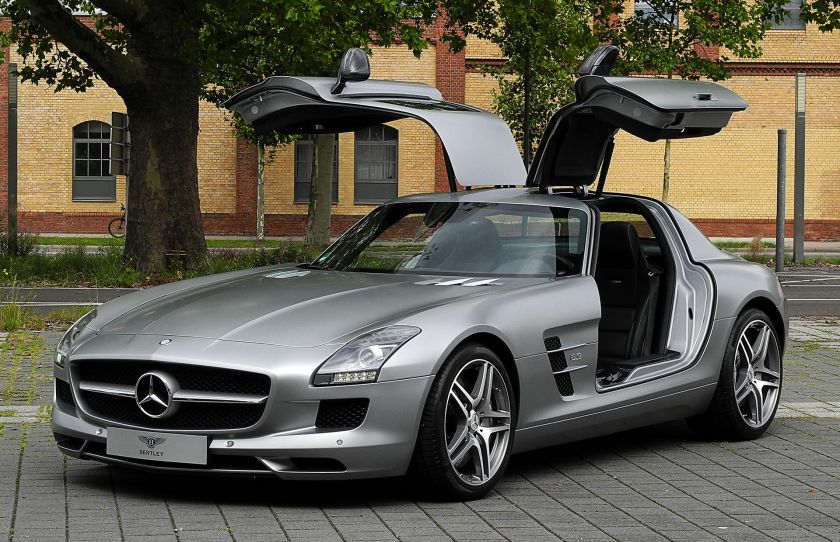
The 2009 SLS AMG, a revival of the 300SL Gullwing, is the first car to be entirely developed by AMG.
There are numerous independent tuners including Brabus, Carlsson, Kleemann and Renntech.
Sponsorships
In football, Mercedes-Benz sponsors Germany National Football Team. Mercedes-Benz sponsors Bundesliga club VfB Stuttgart and provides the naming rights for their stadium, the Mercedes-Benz Arena. The company also holds the naming rights to the Mercedes-Benz Superdome in New Orleans, Louisiana. On August 24, 2015, Mercedes-Benz was announced as the naming rights sponsor for the Atlanta Falcons‘ new home Mercedes-Benz Stadium, scheduled to open in 2017.
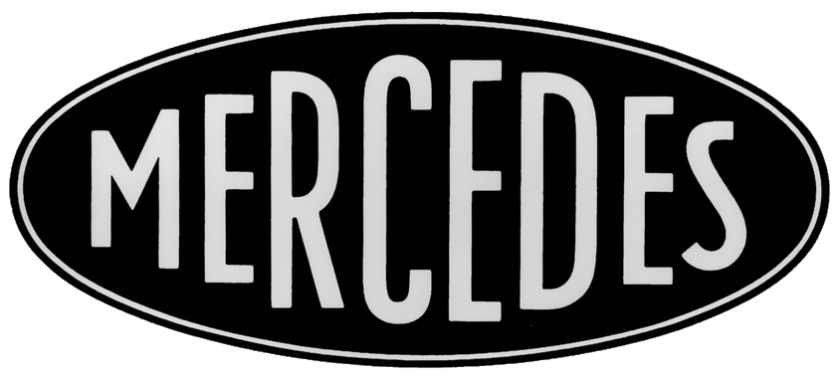
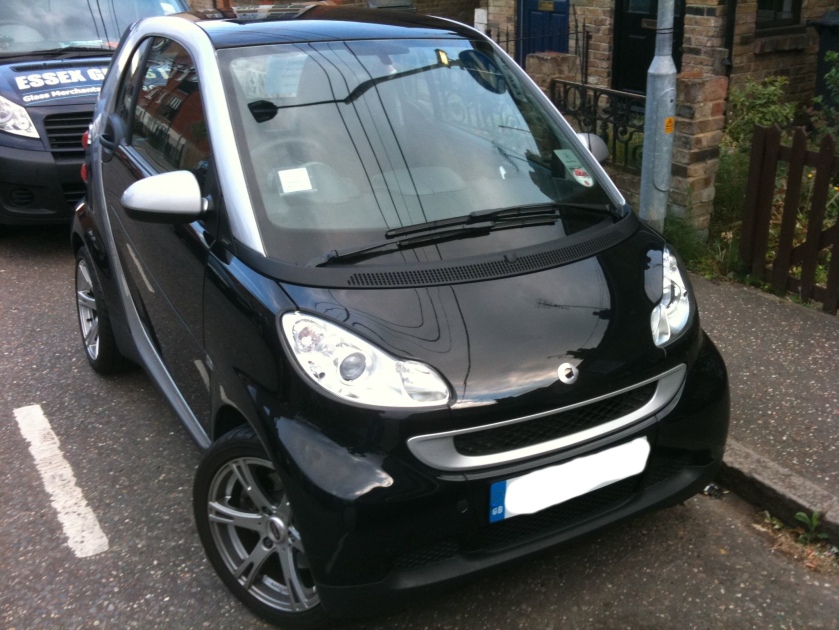
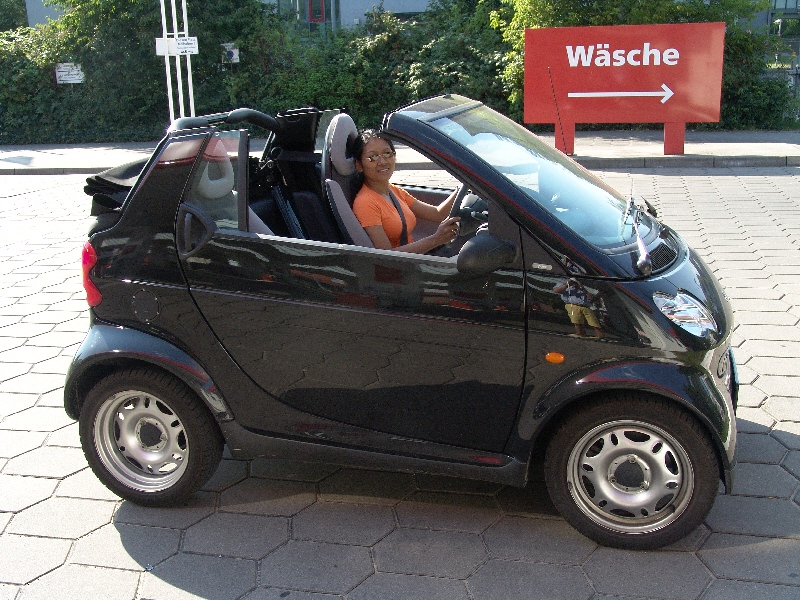
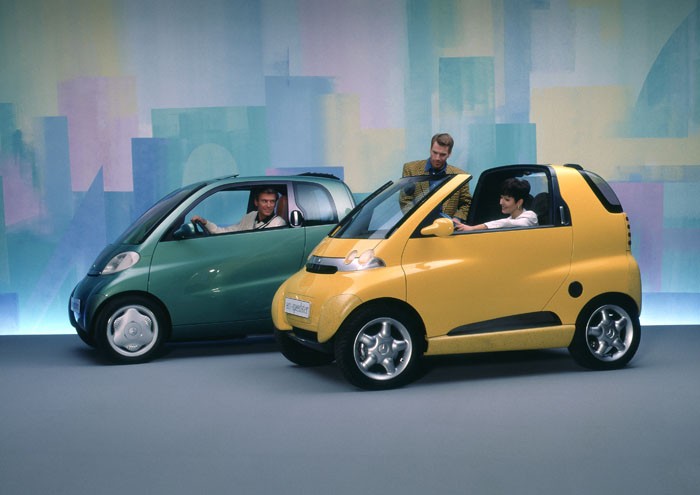
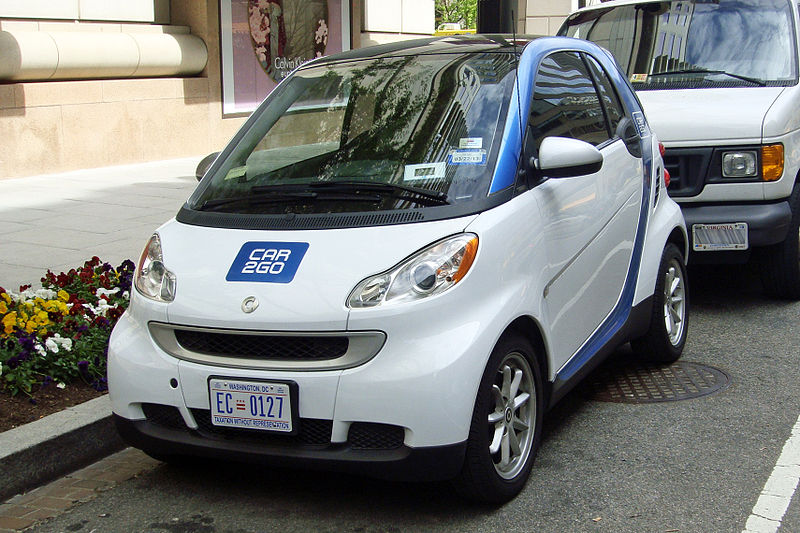

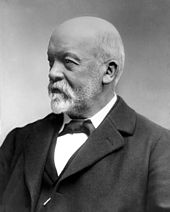
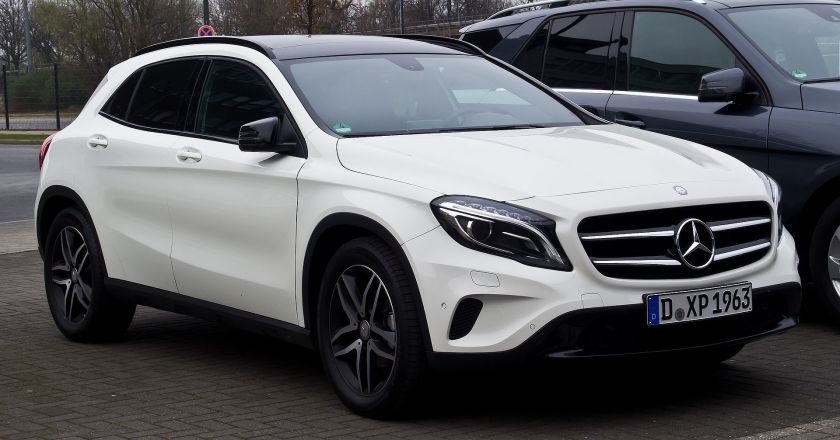
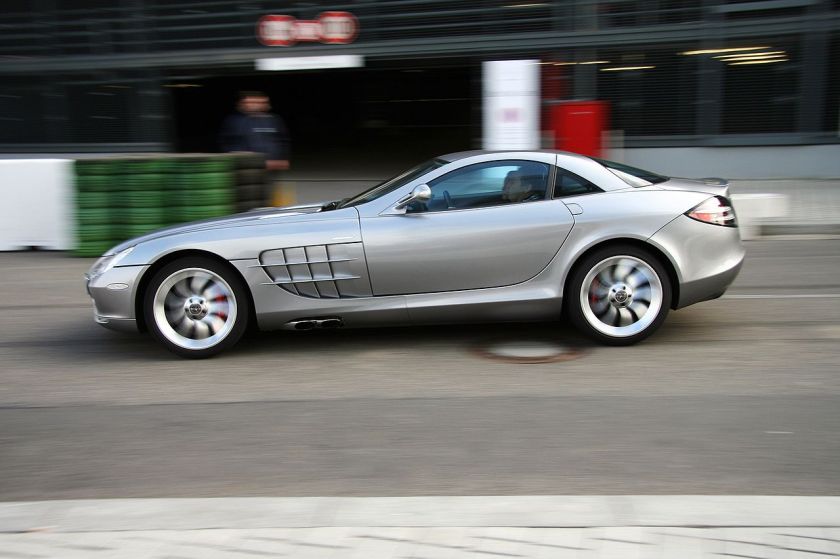
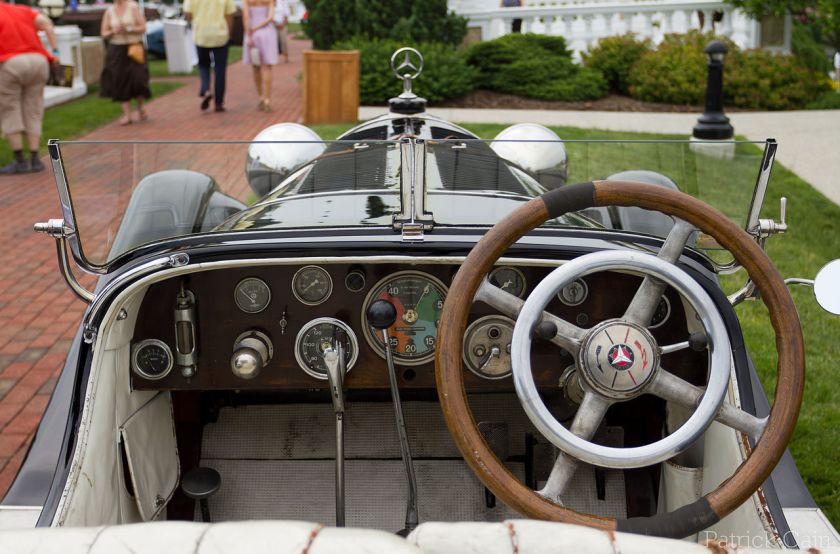
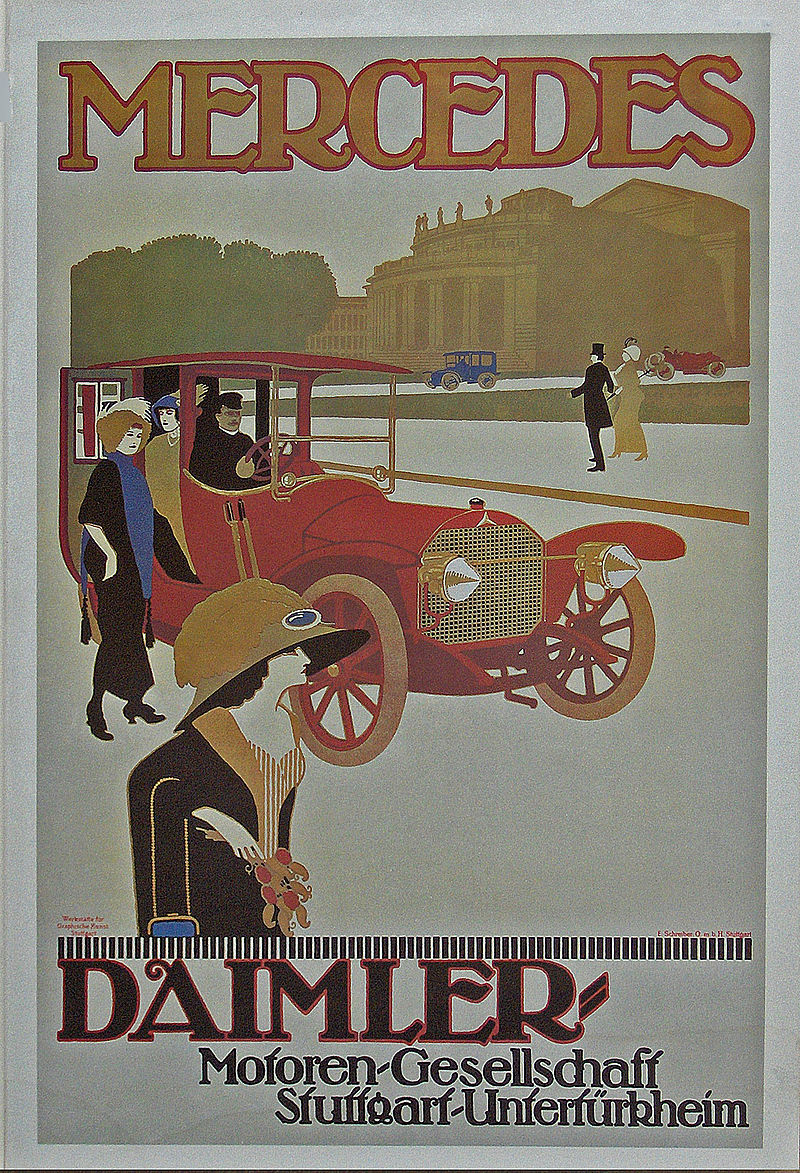






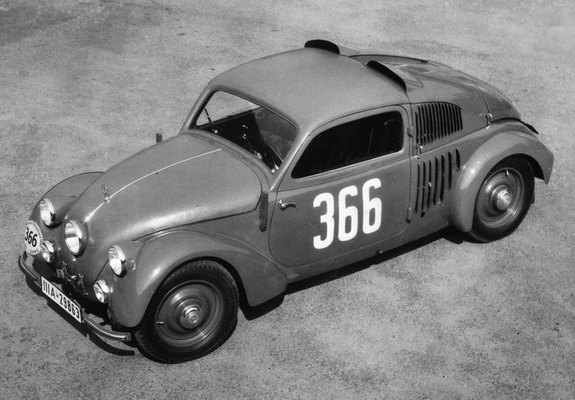 1933-34 Mercedes Benz 150 Sport Saloon (W30)
1933-34 Mercedes Benz 150 Sport Saloon (W30) 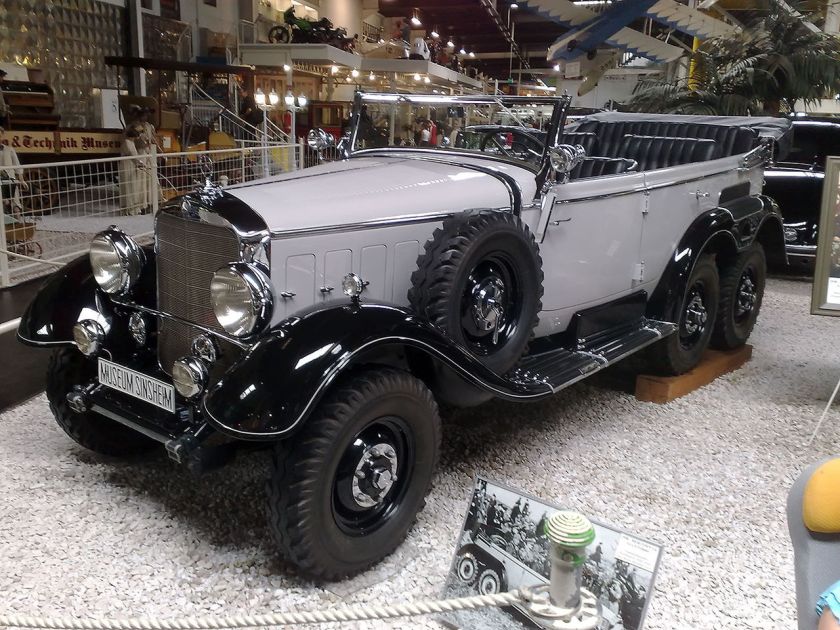 1938 Mercedes Benz W31 typ G4
1938 Mercedes Benz W31 typ G4 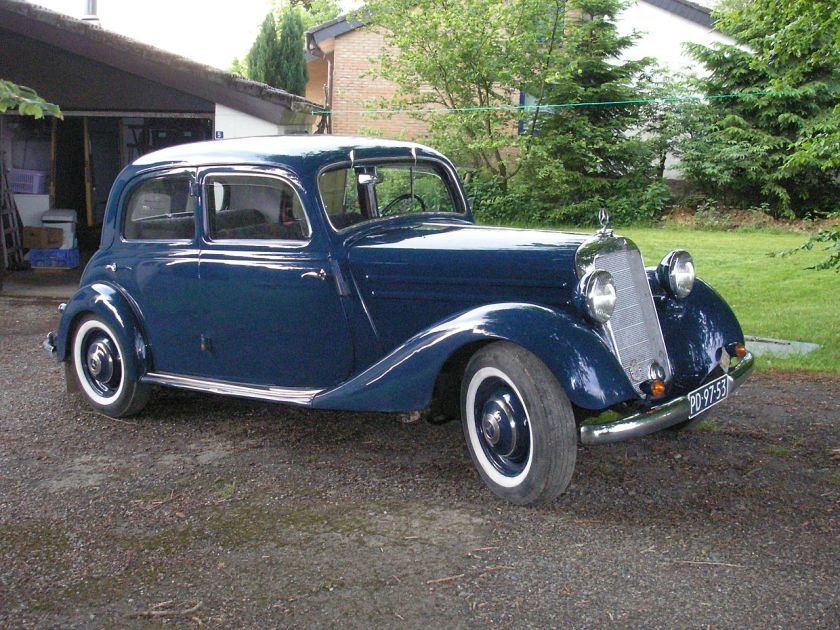 Mercedes Benz
Mercedes Benz 


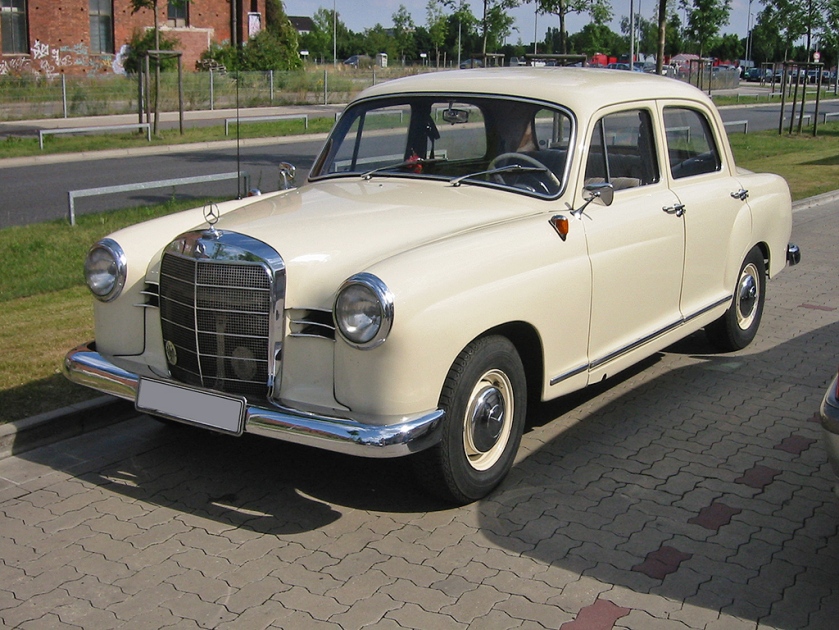
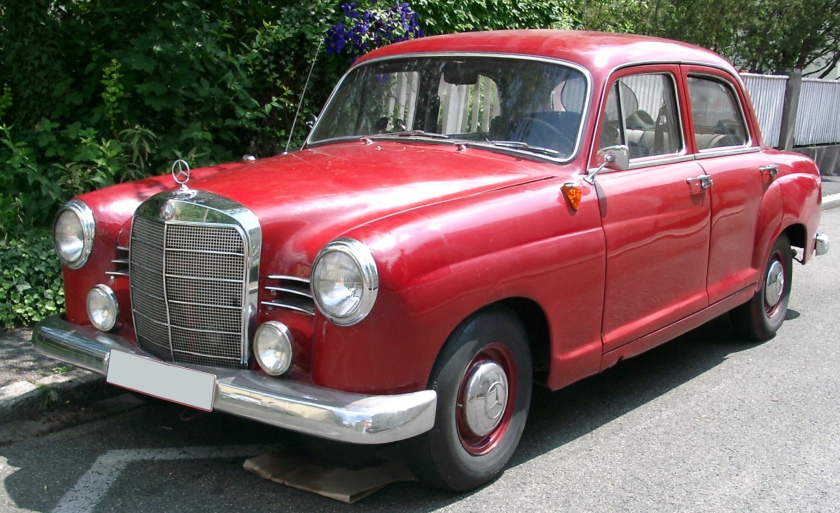
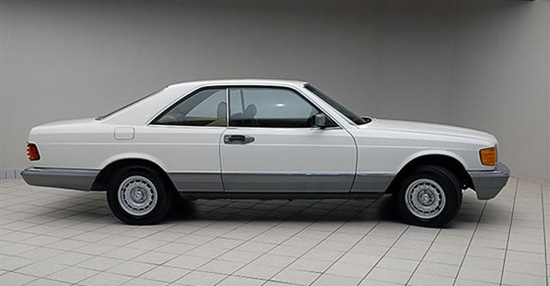 1985 Mercedes Benz
1985 Mercedes Benz 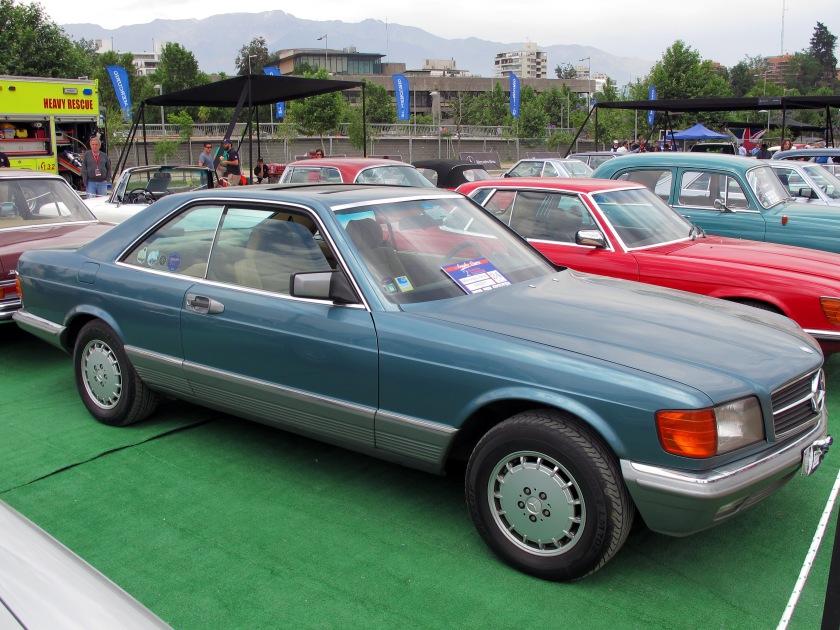 1985 Mercedes Benz
1985 Mercedes Benz 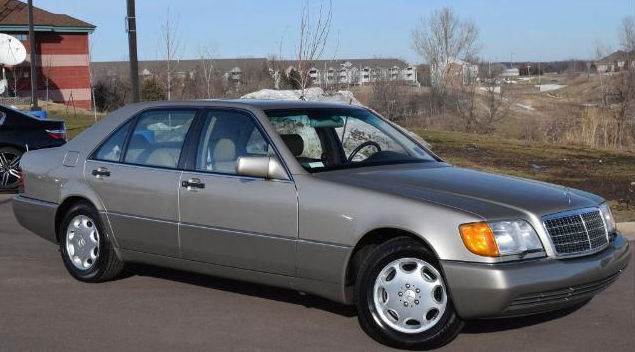 1992 Mercedes Benz
1992 Mercedes Benz 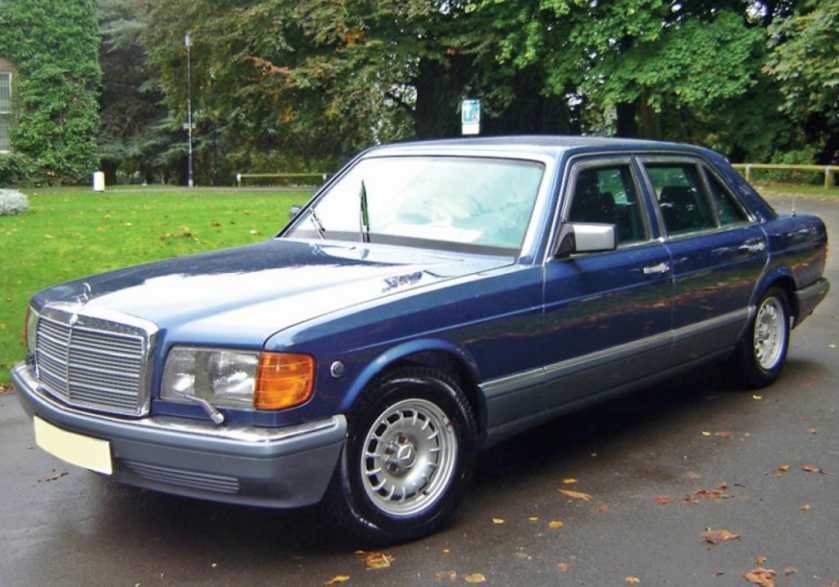 1986 Mercedes Benz
1986 Mercedes Benz 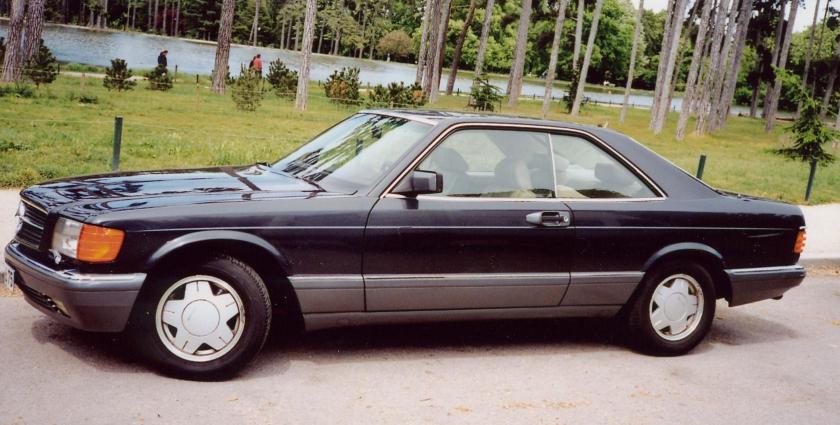 Mercedes Benz
Mercedes Benz 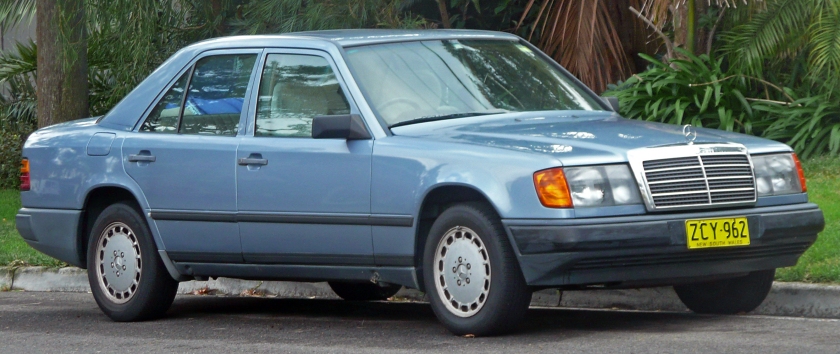 Mercedes Benz
Mercedes Benz 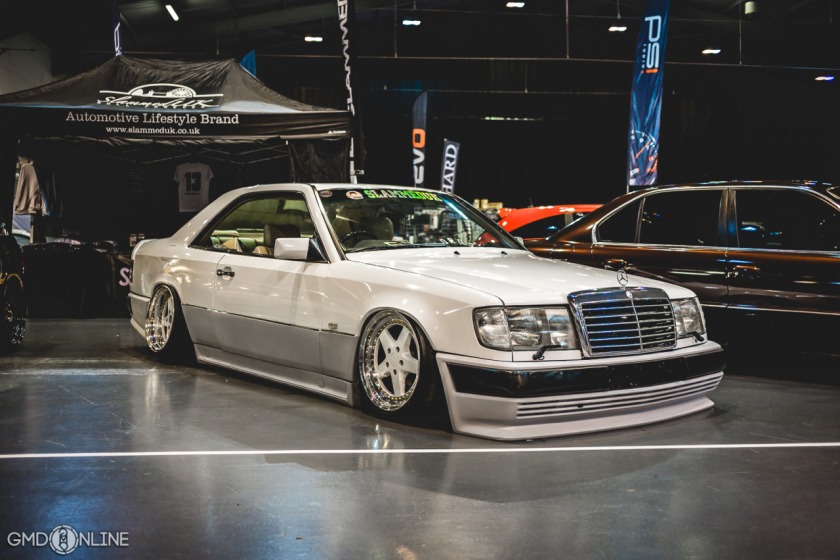 Mercedes Benz 300CE
Mercedes Benz 300CE 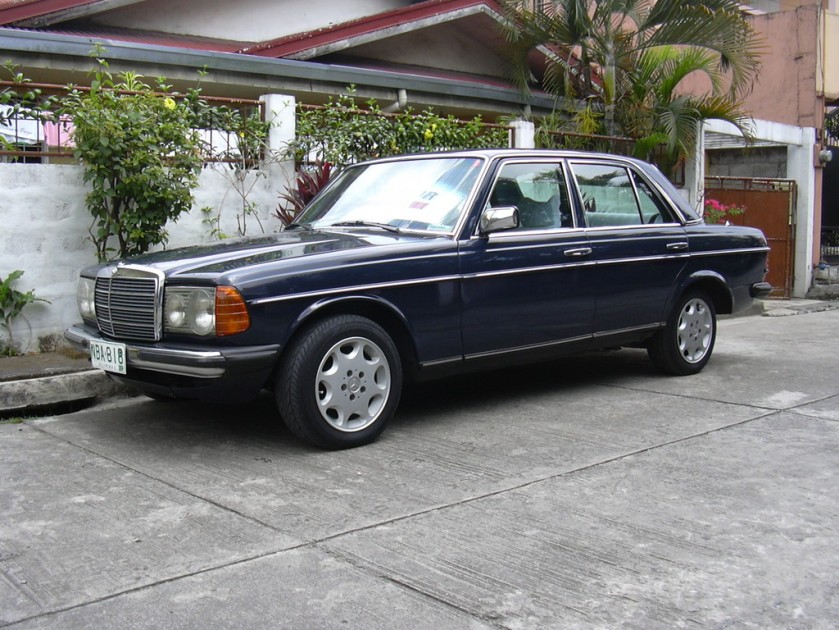
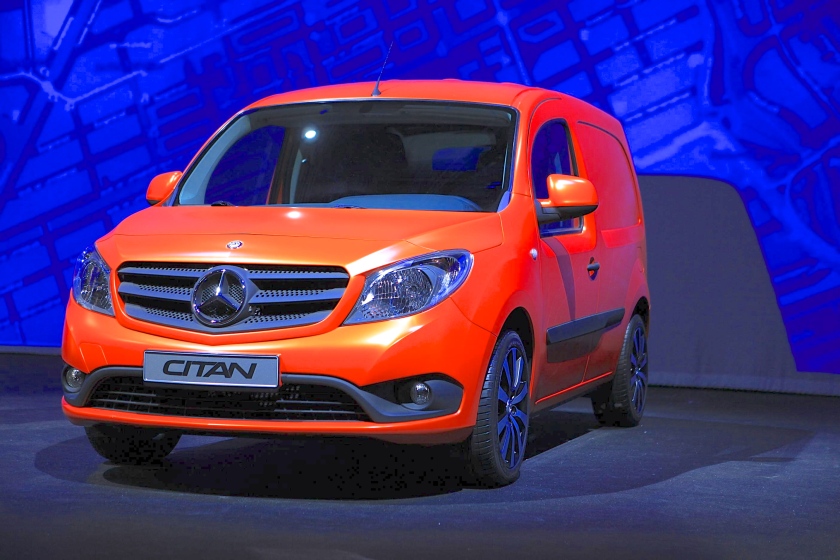
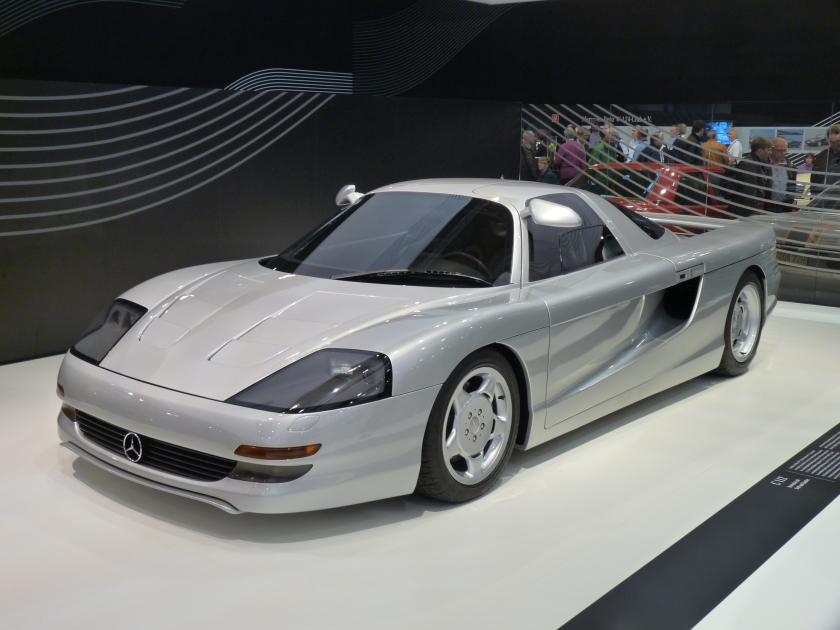

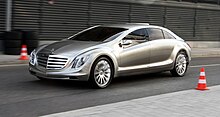
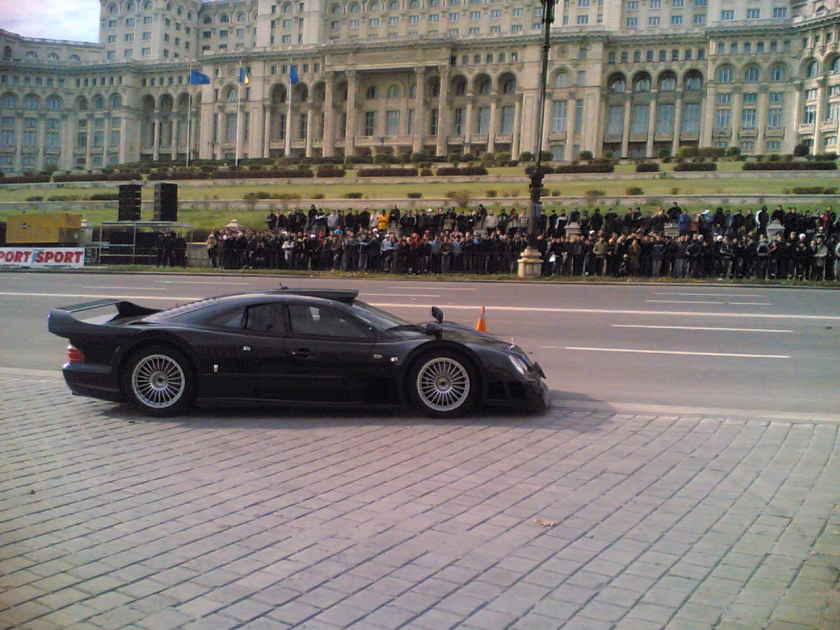
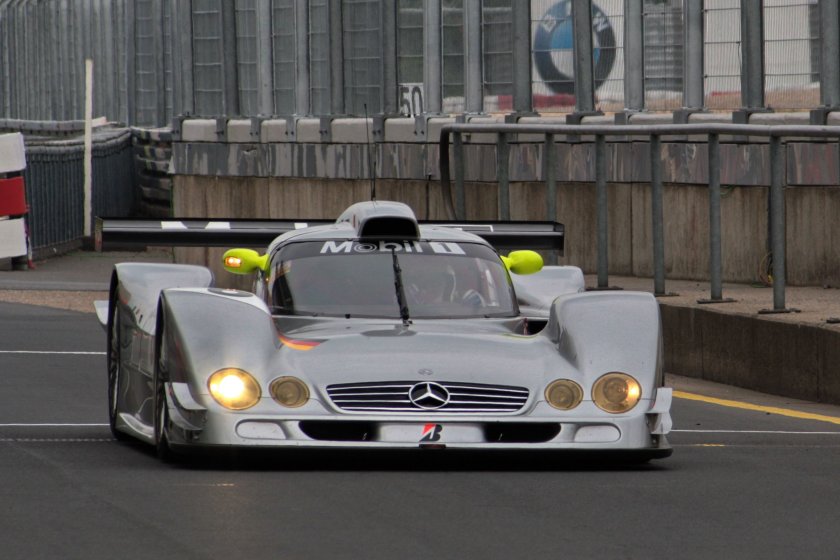
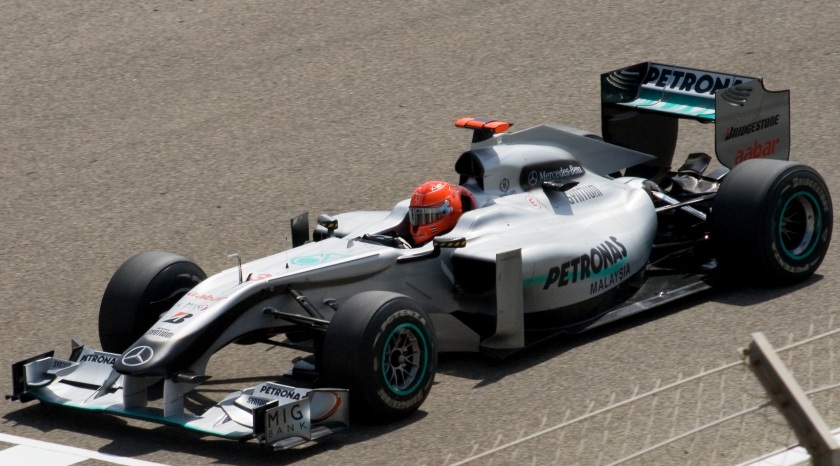
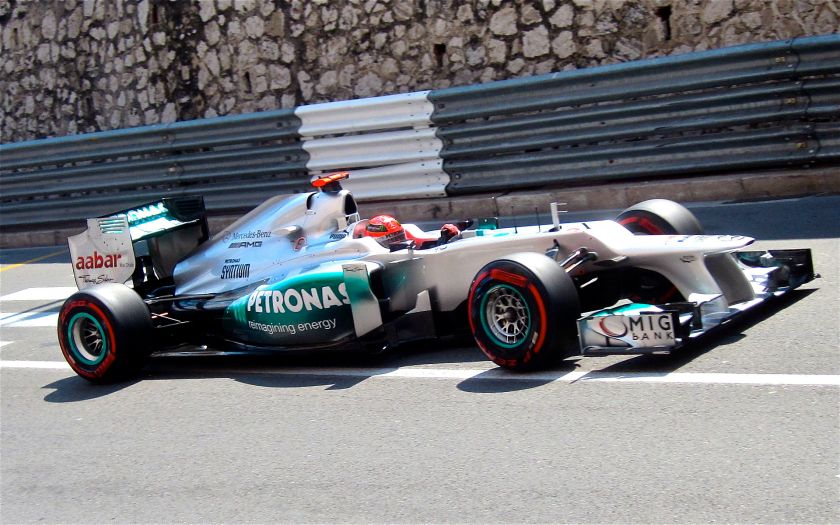 2012 Mercedes F1 W03
2012 Mercedes F1 W03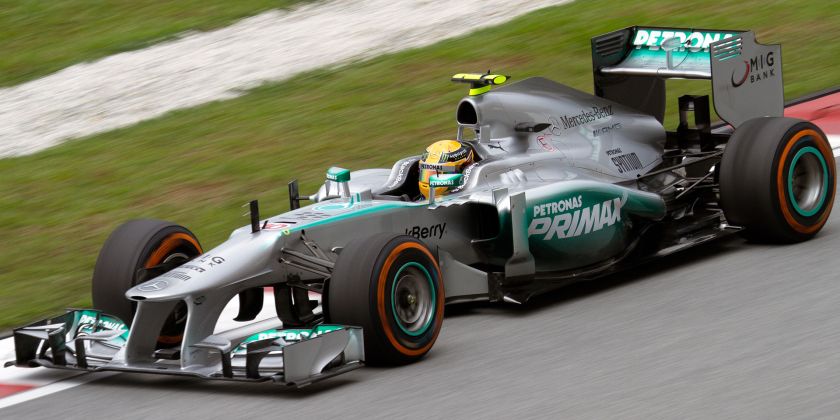 2013 Mercedes F1 W04 Lewis Hamilton Malaysia FP2 1.jpg
2013 Mercedes F1 W04 Lewis Hamilton Malaysia FP2 1.jpg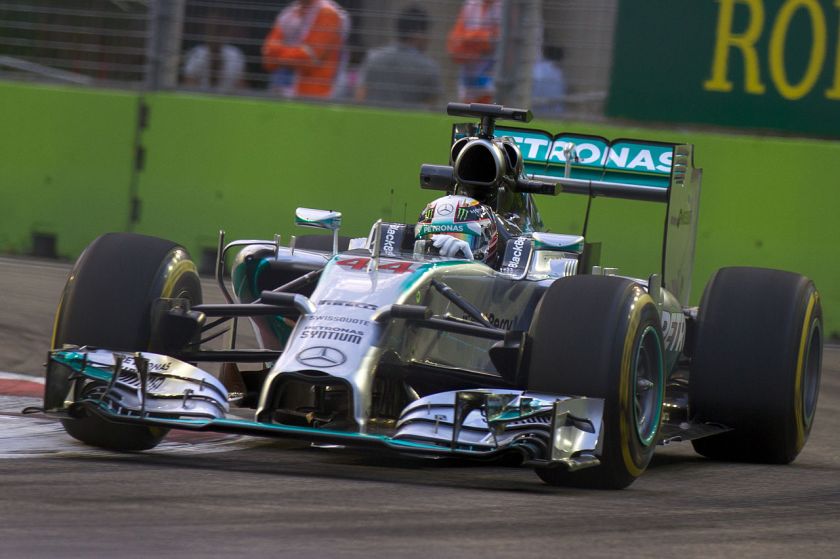 2014 The F1 W05 Hybrid, driven by Lewis Hamilton, during the 2014 Singapore Grand Prix
2014 The F1 W05 Hybrid, driven by Lewis Hamilton, during the 2014 Singapore Grand Prix 2015 The F1 W06 Hybrid, driven by Nico Rosberg, during the 2015 Malaysian Grand Prix
2015 The F1 W06 Hybrid, driven by Nico Rosberg, during the 2015 Malaysian Grand Prix
